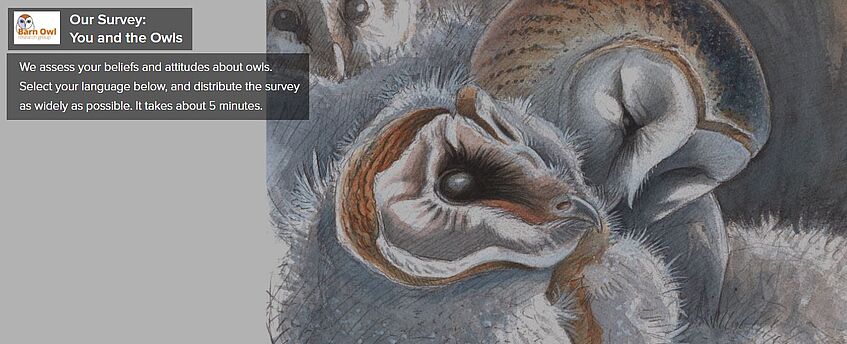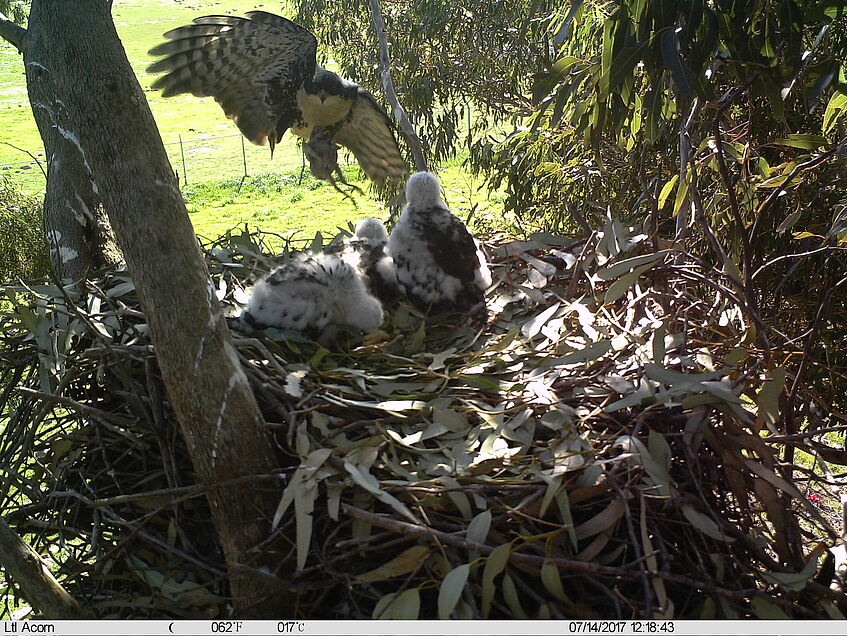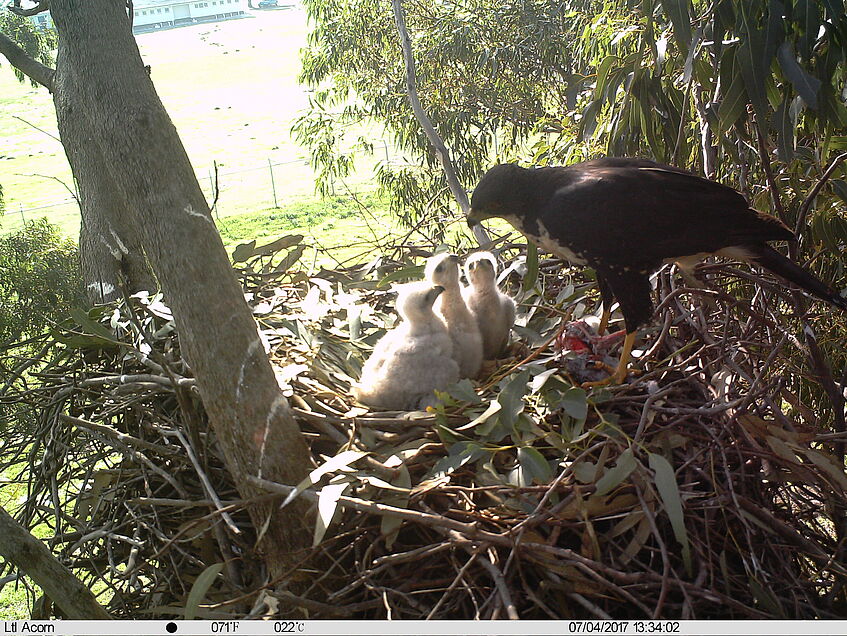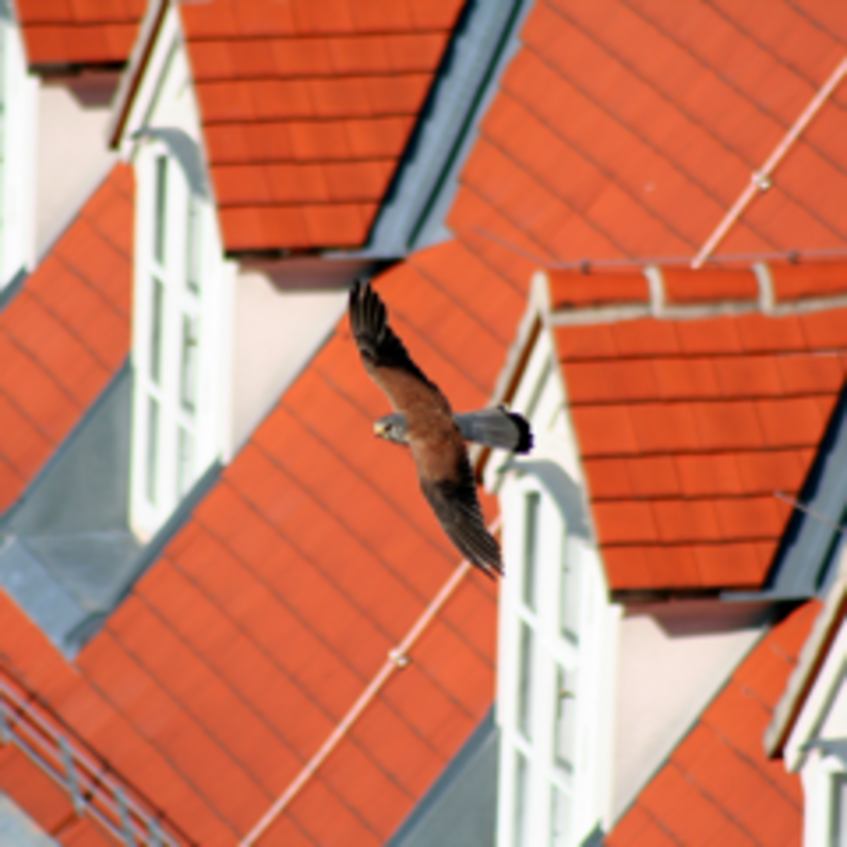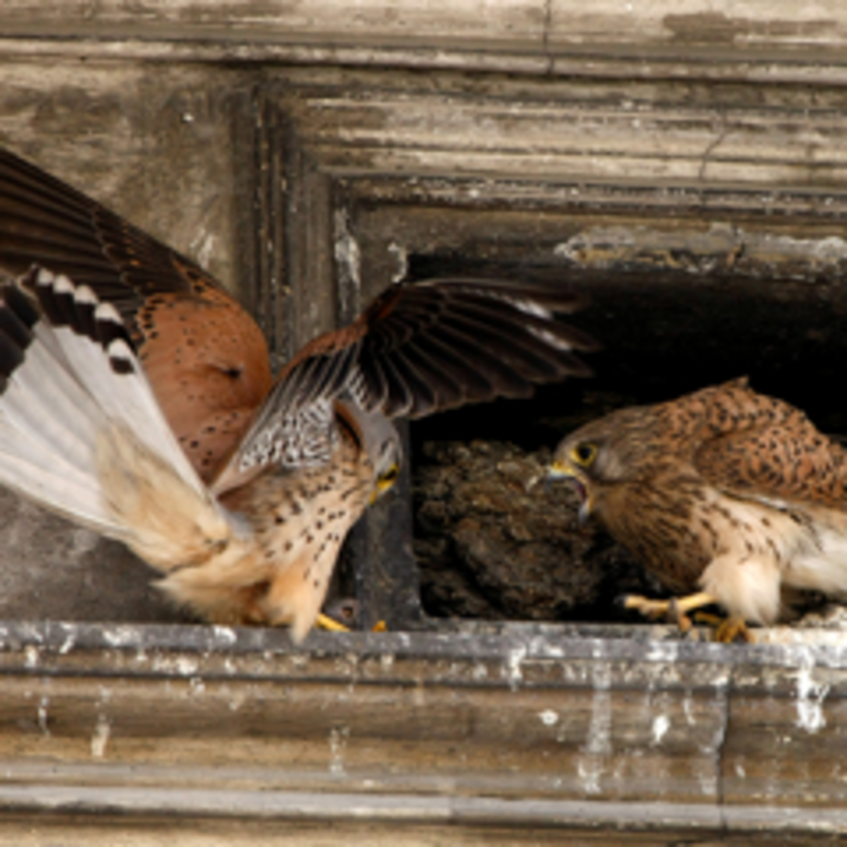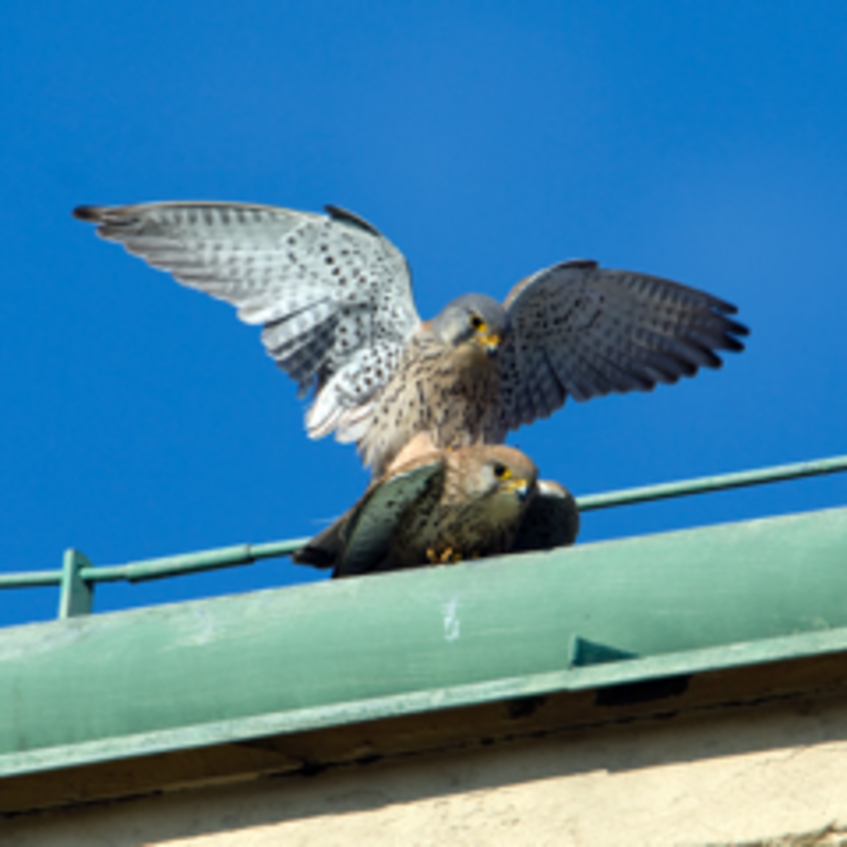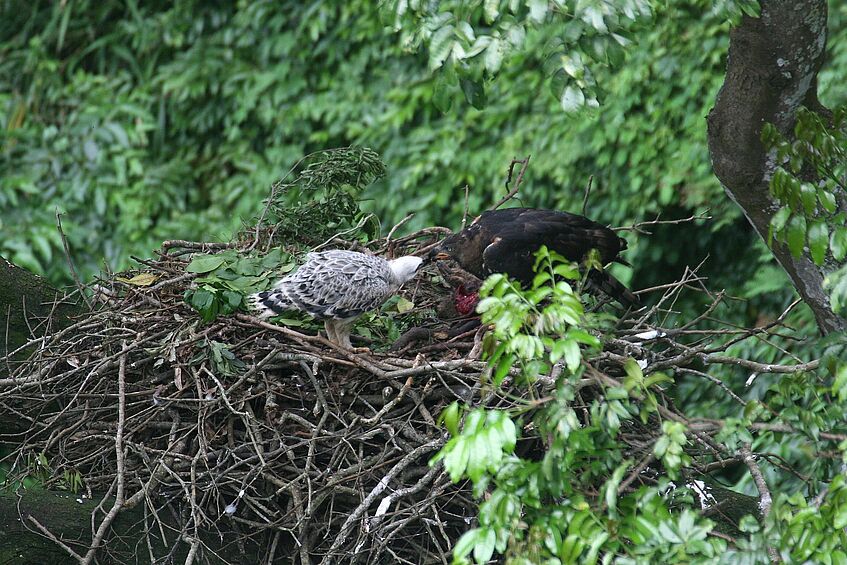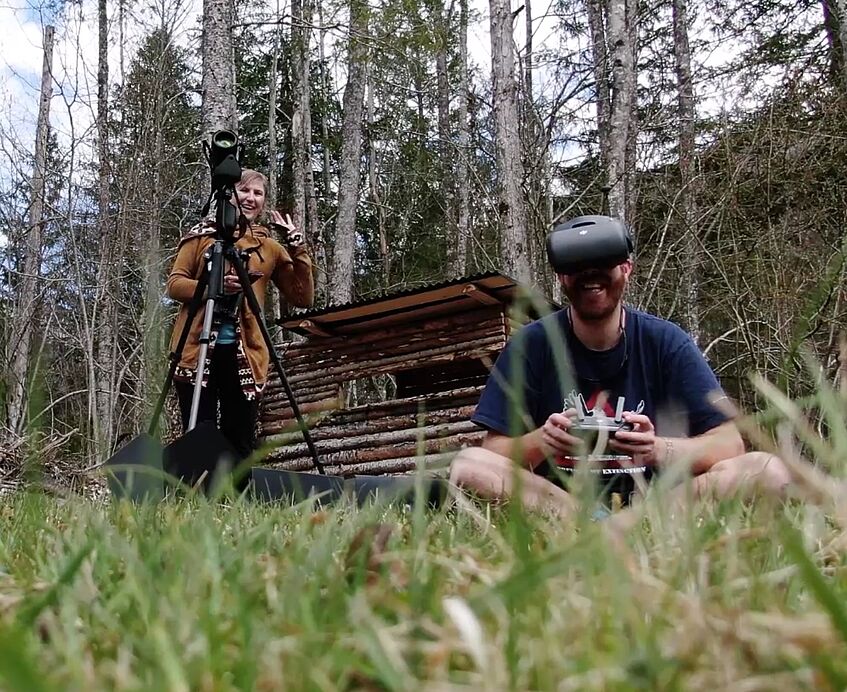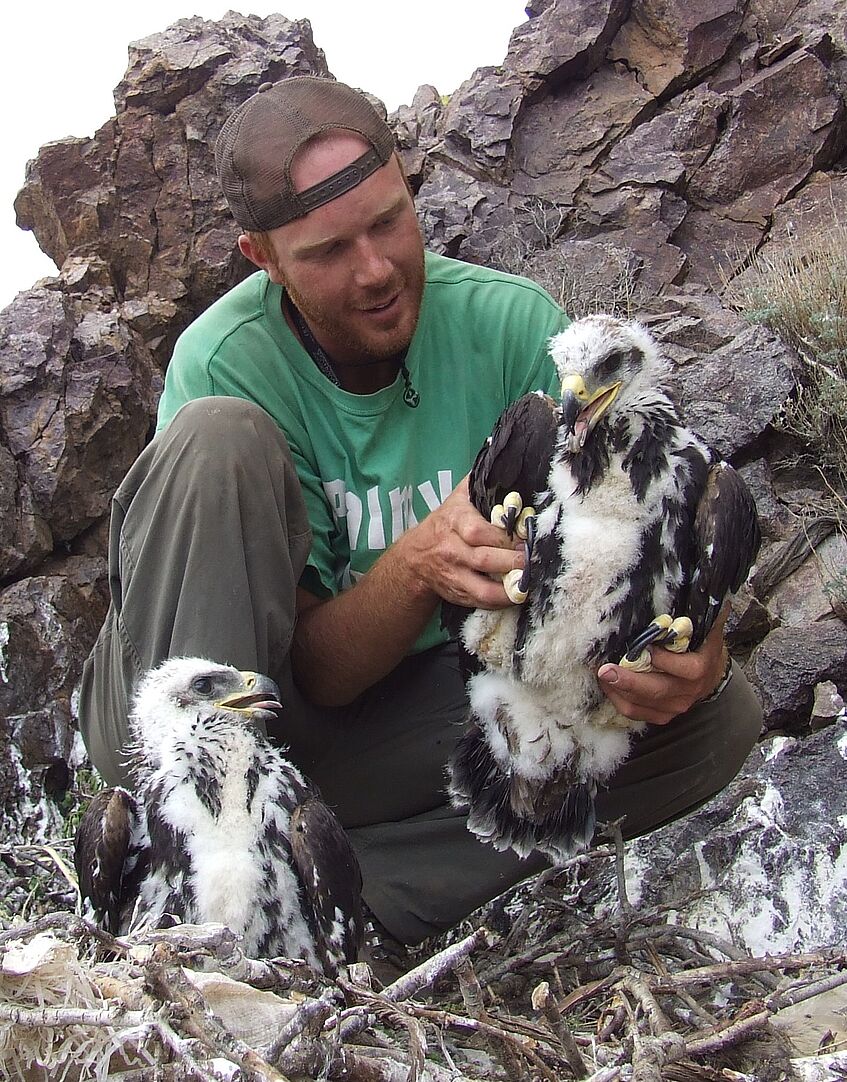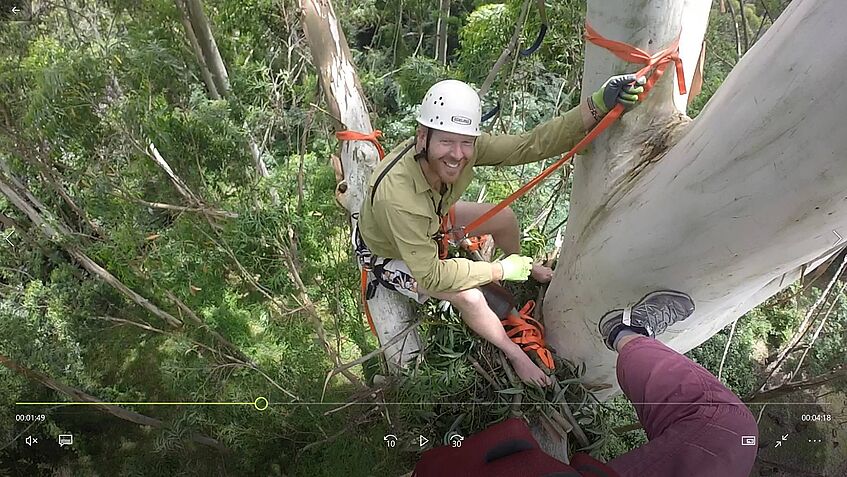Successful summer school PReCISE-Promoting Citizen Science Expertise at UC Louvain

Picture: Caroline Michellier
Successful summer school PReCISE-Promoting Citizen Science Expertise at UC Louvain
The summer school was funded by a grant from Circle U a university alliance that is part of a programme of facilitating knowledge exchange between universities across the European Union. The initiative was hosted at UC Louvain (Belgium) and was organized by Caroline Michellier, with the aim of raising awareness for citizen science at Universities. Experts from Université Paris Cité (UPC), Muki Aklay and Cleá Montanari, Aarhus University (AU), Gitte Craigh, and the University of Vienna (UV), Didone Frigerio, contributed to the programme. 55 persons from all over the world (from Europe to Cuba and Malaysia), different disciplines (from sociology to natural sciences and engineering) and different career stages (from master-student to PhD candidate and professor) were participating in the hybrid event. The logistics was done in an excellent and welcoming manner by the team of UCLouvain. The event offered an excellent plattform for inspired networking and sharing experiences.
New paper: Flies have personality!
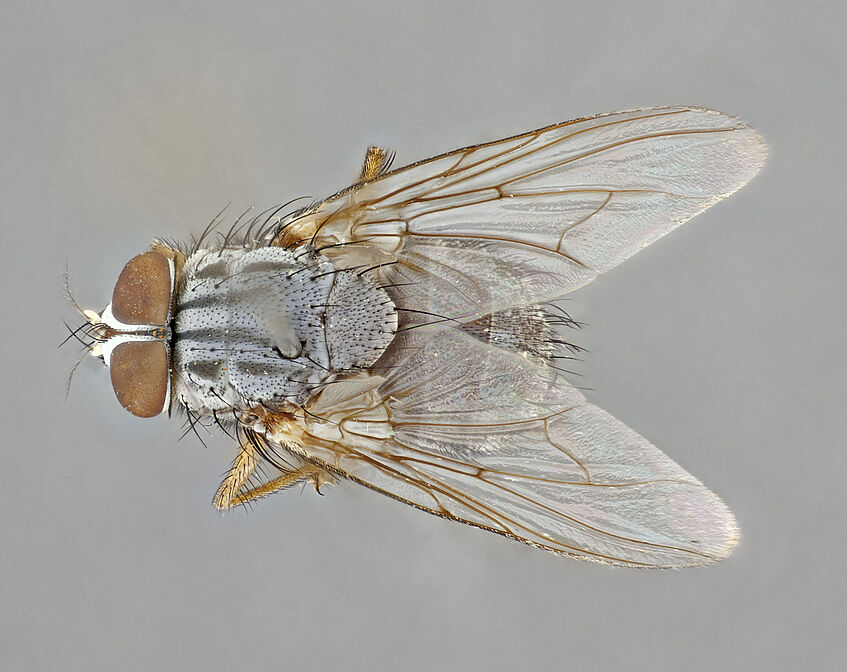
Picture: B. Sinclair

Picture: L. Common
New paper: Flies have personality!
The avian vampire fly is a deadly invasive parasite on the Galápagos Islands, where its larvae suck the blood of developing birds. Our new research shows that adult flies each have their own distinct personalities — they can be bold, active, or exploratory! This study is a first step toward understanding how the personality of parasites, not just their hosts, influences host–parasite interactions.
Publication in Behaviour:
Common, L. K., Albán Morales, K., Katsis, A. C., & Kleindorfer, S. (2025). Personality in the parasitic avian vampire fly (Philornis downsi). Behaviour (published online ahead of print 2025). https://doi.org/10.1163/1568539X-bja10317
New paper: Curious Birds, Diverse Diets: New Insights from the Galápagos

Picture: Sonia Kleindorfer

Picture: J. Ploderer
New paper: Curious Birds, Diverse Diets: New Insights from the Galápagos
A new study by Jefferson García-Loor, Andrew C. Katsis, Lauren K. Common, and Sonia Kleindorfer provides compelling evidence that individual behavioral traits—specifically exploration—are both consistent over time and ecologically significant in wild bird populations. Focusing on six landbird species from the Galápagos Islands, including four Darwin’s finch species, the study found repeatability in exploration behavior, measured both in controlled settings and in the wild. Birds that explored more in a novel environment were also quicker to investigate novel objects in their natural habitat—demonstrating consistent behavioral tendencies across time and context. Importantly, the study also revealed a positive association between exploration and foraging diversity. Species that used a wider range of foraging substrates and techniques were more exploratory. These cross-species comparisons provide support for the neophobia threshold hypothesis, which predicts that dietary generalists are more likely to engage in exploratory behaviors than dietary specialists. This research highlights the ecological and evolutionary relevance of personality traits like exploration, showing how individual behavior can scale up to influence species-level foraging strategies and adaptability.
Published in Biotropica:
García-Loor J, Katsis AC, Common LK, Kleindorfer S (2025). Exploration Behavior Is Consistent and Associated With Foraging Behavior in Island Songbirds. Biotropica. doi.org/10.1111/btp.70057
Funding: Austrian Science Fund (FWF) and the Galapagos Conservation Trust Fund
Sucessful "Eagle year"
The LifeTrack Golden Eagle project is a large-scale tracking initiative led by the Swiss Ornithological Institute, the Max Planck Institute of Animal Behavior, and the Konrad Lorenz Research Center. Our goal is to better understand how juvenile golden eagles develop their flight and soaring skills, and how they use alpine landscapes—particularly in relation to infrastructure and recreational activities.
We had a successful "eagle year," with one highlight being the tagging of a healthy young male in collaboration with our partners at the National Park Kalkalpen, who were thrilled to see this majestic bird equipped with a state-of-the-art biologger.

Picture: Heimo Emmerstorfer

Picture: Heimo Emmerstorfer
Open positions: Two scientific positions in the EU project UrbanBEE
Two positions are currently available in the EU project UrbanBEE:
- PhD position (prae-doc) at the University of Vienna, university assistant praedoc (30h/week), temporary for 3 years (extension planned after 1.5 years)
- student assistant at AGES, part-time: 20h/week, duration: 6 months
The EU project UrbanBEE combines innovative research with practical nature conservation work and active citizen participation. The aim is to ecologically enhance urban habitats through simple, scalable measures - such as the installation of nesting aids for wild bees. Hundreds of “Bee Hotels” are being installed across Europe and southern Africa to provide endangered pollinators with new nesting opportunities. At the same time, citizens are actively involved in data collection. The result is an extensive network of urban natural areas that both promotes biodiversity and raises environmental awareness. UrbanBEE turns cities into living nature networks - one bee hotel at a time.
A central focus of the project is to investigate the effects of urbanization and climate change on the health of urban pollinators. Innovative biomonitoring will be used to analyze pathogens in wild bee populations in order to assess their prevalence and intensity of infection along urban gradients. Particular attention is paid to the microclimate in the bee hotels - such as the urban heat island effect - as well as other anthropogenic stress factors that can interact with disease dynamics. The aim is to develop scientifically based recommendations for disease-preventive management of bee hotels and thus promote resilient conservation strategies for urban pollinators.

Welcome Matthias

Picture: Lugerbauer
Welcome Matthias
Matthias Schmidt is an ecologist who has specialised in applied raptor conservation, particularly the Eastern Imperial Eagle, for several years. The central theme of his PhD research is to improve our understanding of the impact of direct and indirect threats on this species. His research focuses on the impact of wind energy utilization on the spatial use, energy expenditure, displacement and mortality of the Eastern Imperial Eagle. Beyond advancing scientific knowledge, the findings will contribute to the development and refinement of conservation measures for the Eastern Imperial Eagle and other species affected by wind energy production.
Welcome Lucas

Welcome Lucas
We welcome our new master student Lucas Landolfi. He is pursuing his Master of Science in Cognition, Behaviour and Neurobiology at the University of Vienna. For his thesis, Lucas is investigating the ecology of Crowned Eagles in human-dominated landscapes in South Africa. His research examines how urbanisation affects the prey diversity and energy expenditure of breeding Crowned Eagles in Durban. By integrating GPS-tracking, accelerometer data, and camera trap monitoring, Lucas explores how these large, forest-adapted raptors adjust their foraging strategies and space use in response to urban pressures. In addition to his academic work, Lucas is a field assistant for the Golden Eagle Project in the Austrian Alps.
New paper: Golden eagles ride the wind – literally!

Picture: Thomas Thusholt
New paper: Golden eagles ride the wind – literally!
Soaring birds like golden eagles have mastered the art of flying using little energy. They use invisible "lifts" in the air - so-called thermals (rising columns of warm air) and orographic lift (wind deflected upwards by mountains). Our latest research uncovers another, less well-known source of uplift that golden eagles use: gravity waves. Not the cosmic kind Einstein talked about - but atmospheric gravity waves. They form when air is pushed upwards, often over mountain ridges, and then oscillates up and down like ripples in a pond. These waves can extend far above the peaks and provide strong, smooth lift that experienced birds - and even paragliding pilots - can use to stay airborne for hours. In fact, in the European Alps, paragliders often chase lenticular clouds (those lens-shaped formations that look like UFOs), which are signs of gravity waves. Now, we’ve shown that golden eagles are using these same invisible highways in the sky.
Publication in Royal Society Interface:
Carrard, T., Nourani, E., Jansing, L., Zimmermann, T., Sumasgutner, P., Tschumi, M., Jenny, D., Wikelski, M., Safi, K., Sprenger, M., Scacco, M. (2025): Golden eagles regularly use gravity waves to soar in the Alps: new insights from high-resolution weather data. Royal Society Interface 22: 20240891. DOI: https://doi.org/10.1098/rsif.2024.0891
ICARUS Bird Mortality Project: Eurasian Kestrels at the Konrad Lorenz Research Center

Picture: Petra Sumasgutner
ICARUS Bird Mortality Project: Eurasian Kestrels at the Konrad Lorenz Research Center
When, where, and why do birds die?
This is the central question of the international ICARUS project www.ab.mpg.de/icarus-birds, which aims to track mortality events in birds throughout the year and across continents. By following five widespread species—European kestrel, common swift, song thrush, common blackbird, and European starling—researchers hope to reveal patterns and drivers of avian mortality, and how these differ across landscapes and life stages.
A Focus on the Eurasian Kestrel
The Eurasian kestrel, a once-common farmland raptor, is in decline in many parts of Europe due to intensifying agriculture and habitat loss. As part of the ICARUS initiative, we at the Konrad Lorenz Research Center for Behavior and Cognition (University of Vienna) are contributing our expertise in kestrel research to help understand the fate of this iconic species. Led by Petra Sumasgutner, a specialist in raptor movement ecology, our team aims to equip 2,000 Eurasian kestrels across Europe with lightweight SigFox transmitters. These tags allow us to follow the birds’ movements in real time and, crucially, to detect when and where mortality occurs. This will help identify critical periods and locations of risk in the kestrel’s life cycle, ultimately informing conservation strategies for this threatened farmland species.
How You Can Help
We’re currently looking for active kestrel nests to help us reach our tagging target. If you know of a kestrel nest in Vienna, Linz, Bezirk Gmunden or Kirchdorf —especially if you can send a photo of the brood so we can estimate the chicks’ age and determine the ideal tagging window—please get in touch!
Contact:
WhatsApp / Tel: +43 660 2326888
Email: turmfalkeninfo@gmx.at
Facebook: https://www.facebook.com/TurmfalkenprojektWien
Instagram: https://www.instagram.com/wienerturmfalken
Your contribution could make a real difference to kestrel conservation across Europe.
Upper Austrian Press Club Seniors discover the fascinating world of Greylag geese

Picture: Reizelsdorfer
Upper Austrian Press Club Seniors discover the fascinating world of Greylag geese
A visit to the Konrad Lorenz Research Center in Grünau im Almtal turned into an extraordinary experience for the senior members of the Upper Austrian Press Club. Sonia Kleindorfer, head of the research center, impressed the group with her engaging and passionate presentation, offering fascinating insights into the behavior of wild greylag geese. The research team studies these birds intensively, assigning individual personality traits — such as boldness, exploratory behavior, aggressiveness, activity, and sociability — based on years of systematic and precise observation. During a guided walk through the Cumberland Wildlife Park, the group also had the chance to observe the rare Northern Bald Ibis — an endangered bird species that has been successfully reintroduced in recent years.
Join us in a "Time and Space Sharing" approach to nature conservation!



Join us in a "Time and Space Sharing" approach to nature conservation!
The sandpiper is a declining species that nests directly on the pebble shores of the Alm rivers — without a proper nest or much camouflage. Its eggs are extremely vulnerable and can easily be stepped on by swimmers, walkers, or dogs. At the KLF, we’re working to protect these fragile "nests" by surrounding them with green mesh cages. The design allows the parent birds to come and go freely, while making the nest clearly visible — so we don’t accidentally crush it while enjoying nature. This is a new model we’re proposing: let’s not lock humans away from nature, but instead engage in an attitude of time and space sharing. With care and attention, we can all enjoy the riverbanks—while giving wildlife the room it needs to survive. When you see a cage like this, please avoid the area. In about a month, the chicks will fledge — and we’ll let you know when it’s safe to return.
Thank you for joining us in sharing time and space with nature.
Acknowledgment:
We thank the Federal Ministry for Climate Action, Environment, Energy, Mobility, Innovation and Technology (BMK) for their support. Funding generously provided by C321009, Gezielte Maßnahmen zur Erhöhung der Vogelvielfalt in Oberösterreich.
Filmteam at the KLF
We were thrilled to be visited by cinematographer Tomas Leach and his colleagues Andreas and Mariella to film our research on animal communication in greylag geese. From the Grünau im Almtal bakery to the pebble shores of Lake Alm, it was a truly memorable 10 days. Thank you for your extraordinary efforts. The geese provided all the drama one could ever need for a gripping film, of that we are sure... As for the humans, ahem, we will see!

Picture: KLF

Picture: KLF

Picture: KLF

Picture: KLF
New paper: Using wing bar patterns to identify sex in Crowned Eagles: A misleading field characteristic

Picture: Ralph Buij
New paper: Using wing bar patterns to identify sex in Crowned Eagles: A misleading field characteristic
A new study challenges the long-held assumption that Crowned Eagles can be sexed based on wing bar patterns. Our findings reveal significant individual variation in wing bar patterns, with no consistent differences between males and females. This suggests that plumage polymorphism or individual variation, rather than sex, may explain the patterning. We show that wing bar counts are not a reliable tool for sexing Crowned Eagles and lay the groundwork for future research on plumage development in ageing individuals.
Publication in Ostrich, Journal of African Ornithology:
Sumasgutner, S.C., Common, L.K., Thomsett, S., Downs, C.T. & Sumasgutner, P. (2025). Using wing bar patterns to identify sex in Crowned Eagles Stephanoaetus coronatus: A misleading field characteristic. Ostrich, 1-5. DOI: https://doi.org/10.2989/00306525.2025.2459646
Welcome Marcel

Welcome Marcel
We welcome our new master student Marcel Vockner. Marcel's master thesis is on ecological release of Darwin’s Medium Tree Finch after predator removal on Floreana Island.
Welcome Lilou

Welcome Lilou
Lilou Vautrin is a Master’s student at University of Rennes (France) attending the Animal and Human Behaviour program. She is currently working on the influence of the breeding period on cooperation of pairs of ravens at KLF for her Master’s thesis.
New paper: A LEAP forward in wildlife conservation: A standardized framework to determine mortality causes in large GPS-tagged birds

Picture: J. Hemetsberger
New paper: A LEAP forward in wildlife conservation: A standardized framework to determine mortality causes in large GPS-tagged birds
Wildlife faces many threats from human activities, and understanding where and why animals die is crucial for conservation efforts. GPS tracking technology helps researchers monitor animal movements and locate deceased individuals, but determining the exact cause of death remains challenging. To address this, we developed the LIFE EUROKITE Assessment Protocol (LEAP)—a standardised approach for identifying causes of mortality in large birds fitted with GPS tags. LEAP combines three key sources of information: (1) GPS tracking data – to pinpoint where and when a bird stopped moving. (2) Site investigation – to gather evidence from the location. and (3) Necropsy (animal autopsy) – to analyse the remains for definitive causes of death. We applied LEAP to 329 deceased red kites, which allowed us to identify predation events but also poisoning incidents. LEAP offers clear guidelines for investigating mortality and represents a major step forward in wildlife conservation.
Publication in Ecology and Evolution:Panter, C.T., Nebel, C., Raab, M., Strauss, V., Freytag, C., Wojta, M., Böing, H., Hacker, P., Raab, R., Windt, J., Posautz, A., Kuebber-Heiss, A., Scherler, P., Grüebler, M.U., Kormann, U.G., Kolbe, M., Millon, A., De La Puente, J., Viñuela, J., Orr-Ewing, D., Krone, O., Langgemach, T., Åkesson, S., Mattsson, B., Sumasgutner, P. et al (2025): A LEAP forward in wildlife conservation: A standardized framework to determine mortality causes in large GPS-tagged birds. Ecology and Evolution doi.org/10.1002/ece3.70975
ResearchRetreat of the joint PhD group from Barbara Klump's & Petra Sumasgutner's labs

ResearchRetreat of the joint PhD group from Barbara Klump's & Petra Sumasgutner's labs
The spring installment of the Research Retreat for the joint PhD group of Barbara Klump’s and Petra Sumasgutner’s labs has officially wrapped up - marking another inspiring and productive gathering. Over the course of the retreat our PhD candidates immersed themselves in a wide range of scholarly activities, from revising manuscripts and finalizing experimental designs to drafting grant proposals and developing advanced statistical code. The focused writing sessions were matched with equally meaningful downtime, offering a chance to recharge and connect over mountain hikes and lively evenings filled with Wingspan board games. These retreats continue to be a cornerstone of the joint PhD experience, blending rigorous academic work with community-building in the best possible way.
Welcome Josue

Welcome Josue
We welcome our new PhD student Josue D. Arteaga-Torres! Josue is interested in studying predator behavior to understand population dynamics and promote better conservation practices. His PhD will focus on the population of short-eared owls from the Floreana Island rewilding project in the Galapagos.
Spring meeting of the Scientific Advisory Board of BirdLife Austria at the KLF

Spring meeting of the Scientific Advisory Board of BirdLife Austria at the KLF
The Konrad Lorenz Research Center was the venue for this year's spring meeting of the Scientific Advisory Board of BirdLife Austria. The eight-member board, which provides advice on scientific and conservation-related matters, impressively demonstrated that they are not only intellectually flexible—but spatially as well: Our group photo was taken just before departure to the train station. After all, professional expertise fits even in the smallest of spaces!
We would like to introduce our new PostDoc: Dr. Emil Isaksson

We would like to introduce our new PostDoc: Dr. Emil Isaksson
We warmly welcome Emil and look forward to working with him!
Dr. Emil Isaksson is a cognitive ecologist interested in social learning and information use, environmental influences on cognition, and the causes and consequences of variation in cognition. In his PhD at the University of Ottawa, Canada, Emil investigated the effects of environmental challenges on social learning, social information use, and sociality of parids (tits and chickadees). For his postdoc, he will collaborate with Prof. Dr. Thomas Bugnyar on the established raven (Corvus corax) study system at KLF. Emil will continue his research on variation in social learning and information use across environmental contexts, as well as include investigations into the evolutionary processes shaping cognition.
New paper: Galápagos yellow warblers differ in behavioural plasticity in response to traffic noise depending on proximity to road

Picture: Çağlar Akcay

New paper: Galápagos yellow warblers differ in behavioural plasticity in response to traffic noise depending on proximity to road
Acoustic communication between animals is increasingly disrupted by noise in human-altered environments, making signals less effective. In this study, we measured the effect of traffic noise on aggressive and vocal responses in an island bird, the Galapagos Yellow Warbler. Increasing vehicle traffic on the Galapagos Islands raises the question of how birds adapt to an increasingly noisy and human-influenced world. The bird territories we tested were either adjacent to the nearest road or at least 100 m away from it. The results showed that birds living in areas close to roads increased their aggression levels to the experimental noise compared to the control, while birds living further away from roads decreased their aggression levels. Birds also increased the minimum frequency of their songs during the noise treatment, regardless of their distance from a road. However, changes in the peak frequency and duration of their songs depended on the habitat in which they lived. Our results suggest behavioural flexibility in territorial responses and in bird song in response to traffic noise, which appears to depend, at least in part, on previous experience of traffic noise.
Publication in Animal Behaviour:
Hohl, L.*, Yelimlieş, A.*, Akçay, C., Kleindorfer, S. (2025). Galápagos yellow warblers differ in behavioural plasticity in response to traffic noise depending on proximity to road. Animal Behaviour. https://doi.org/10.1016/j.anbehav.2025.123119
Publication in The Guardian:
https://www.theguardian.com/science/2025/mar/20/traffic-noise-triggers-road-rage-among-male-galapagos-birds?CMP=share_btn_url
New paper: High human presence is correlated with reduced faecal glucocorticoid metabolite levels in an urban bird population

Picture: UCT Red winged Starling project
New paper: High human presence is correlated with reduced faecal glucocorticoid metabolite levels in an urban bird population
We evaluated four enzyme immunoassays to identify the most suitable method for quantifying fecal glucocorticoid metabolites (stress-related steroid hormones) in red-winged starlings. The validated assay, 11-oxoaetiocholanolone, was then used to measure glucocorticoid metabolite concentrations in the droppings of free-ranging urban starlings, assessing their response to fluctuating human presence. Interestingly, glucocorticoid levels were lower on weekdays when human activity was higher, suggesting that these birds may benefit from human presence—likely due to increased food availability and a perceived reduction in predation risk.
Publication in Hormones and Behavior:
Nhlapo, K., Cunningham, S.J., Sumasgutner, P., Ganswindt, A., McKechnie, A.E., Ngcamphalala, C.A. (2025). High human presence is correlated with reduced faecal glucocorticoid metabolite levels in an urban bird population. Hormones and Behavior Doi: 10.1016/j.yhbeh.2025.105724
Welcome Johanna

Welcome Johanna
We welcome our new intern Johanna Buth. Johanna is studying at the University of Konstanz (Germany). She is at the KLF for her internship to investigate interspecific interactions as show-off behaviour in Ravens (Corvus corax).
New paper: Flight initiation distance is repeatable and geographically flexible in greylag geese

New paper: Flight initiation distance is repeatable and geographically flexible in greylag geese
The decision to flee from an approaching threat represents a trade-off between the costs and benefits of flight. In this study, we measured flight initiation distances – a widely used proxy for fearfulness or boldness – in a free-roaming, human-habituated, and colour-banded population of greylag geese Anser anser. Our results suggest that greylag geese can adjust their behaviour based on environmental context and show individual differences in flight initiation distance that are consistent both within and across years.
Congratulations to Andrew Katsis on his photo that made it onto the cover of the Journal!
Publication in Journal of Avian Biology:
Katsis, A.C., Common, L.K., Lesigang, J., Bold, A., Fröhlich, M., Schmincke, J.-M., Frigerio, D., Kleindorfer, S. (2025). Flight initiation distance is repeatable and geographically flexible in greylag geese Anser anser. J Avian Biol e03288. doi.org/10.1111/jav.03288
New Alumnus: Marc Surlemont

New Alumnus: Marc Surlemont
Congratulations to Marc on his graduation! Marc´s thesis “Not so bold after all? A study of personality and anti-predator responses in greylag geese" was supervised by Assoc.-Prof. Dr. Petra Sumasgutner (University of Vienna).
We wish you all the best for the future!
New paper: Ordinal-Level Resilience of Invertebrates After Fire Events in Eucalypt Woodlands of South-Eastern Australia

Picture: Paul Kotz

Picture: Paul Kotz

Picture: Paul Kotz

Picture: Paul Kotz
New paper: Ordinal-Level Resilience of Invertebrates After Fire Events in Eucalypt Woodlands of South-Eastern Australia
Fire disturbance is an integral part of many ecosystems. However, some taxa may not be resilient to the increasing size, intensity, and frequency of fire events due to climate change. We investigated how terrestrial invertebrate Ordinal-level community structure and the abundance of six Orders (Acarina, Araneae, Coleoptera, Collembola, Diptera, Hymenoptera: Formicidae) changed following three natural fire events over two decades (2007–2022) in Kangaroo Island and mainland South Australia. We collected invertebrates using two methods (pitfall traps and sweep nets) at four sites (two burnt and two unburnt) every 6 months, before and after three fire events (2007, 2019, 2021). Ordinal-level community structure generally showed signs of recovery nearing pre-fire conditions within 20–22 months post-fire. The pitfall samples showed increased abundance in Coleoptera, Diptera and Hymenoptera (Formicidae) following fire, and no change in Acarina abundance. The sweep net samples showed no recovery to pre-fire conditions on mainland South Australia, but recovery to baseline after 20–22 months on Kangaroo Island. There were significant shifts in invertebrate community structure across time-since-fire with a return to pre-fire conditions at burnt sites after 20–22 months. These findings demonstrate the apparent ordinal-level resilience of invertebrates in South Australian eucalypt woodlands, particularly of ground-dwelling species, but also point to Order specific differences that warrant future study.
Publication in Austral Ecology:
Common, L.K.*, Kotz, P.S.*, Colombelli-Négrel, D., Kleindorfer, S. (2025). Ordinal-level resilience of invertebrates after fire events in eucalypt woodlands of south-eastern Australia'. Austral Ecology. https://doi.org/10.1111/aec.70024
Welcome Neve

Welcome Neve
We welcome our new master's student Neve Barcat. Neve is doing her master´s degree in Acoustic Research at the University of Le Mans (France). She is at the KLF for her internship to discover bioacoustics and to write her master's thesis on sounds emitted by ravens during SADs (self aggrandizing displays).
New paper: Genomic introgression between critically endangered and stable species of Darwin’s tree finches on the Galapagos Islands

Picture: Sonia Kleindorfer
New paper: Genomic introgression between critically endangered and stable species of Darwin’s tree finches on the Galapagos Islands
We measured selection for private alleles in a pair of species currently hybridising on the Galapagos Islands. Evidence for the introgression or selection of beneficial genes in hybrids raises questions about their evolutionary significance. In Darwin's tree finches on Floreana Island (Galapagos, Ecuador), the critically endangered medium tree finch (Camarhynchus pauper) is undergoing introgression with the stable small tree finch (Camarhynchus parvulus), and hybrids are regularly backcrossed with C. parvulus. Of 4869 private alleles found in hybrid birds, 348 were high frequency (≥0.30), exceeding their parental species of origin 89-96% of the time. Over the two years, 3436 (70.6%) private alleles showed a significant (≥0.30) increase or decrease in allele frequency. Of these, 28 private alleles were identified as candidate loci under selection using local PCA genome scans and outlier tests. Alleles were annotated to genes associated with inflammation, immunity, brain function and development. We provide evidence that introgression in a critically endangered and stable species of Darwin's Tree Finch is maintained by selection over years, and may contribute to the conservation of genetic diversity in birds threatened with extinction.
Video: Critically endangered medium tree finch male singing
Publication in Evolutionary Applications:
Dudaniec, R.Y., Yadav, S., Catchen, J., Kleindorfer, S. (2025). Genomic introgression between critically endangered and stable species of Darwin’s tree finches on the Galapagos Islands. Evolutionary Applications 18 (1), p.e70066. doi.org/10.1111/eva.70066
New paper: Flight initiation distance is repeatable and geographically flexible in greylag geese

Picture: Archiv KLF
New paper: Flight initiation distance is repeatable and geographically flexible in greylag geese
We aimed to disentangle whether site-specific differences in predator avoidance are due to behavioural plasticity or non-random distribution of behavioural phenotypes. In this study, we measured flight initiation distances - a widely used proxy for fearfulness or boldness - in a free-ranging, human-associated and colour-banded population of greylag geese (Anser anser). First, we tested whether individuals flexibly adjusted their flight initiation distance based on environmental context by approaching the same individuals at two sites with different levels of human presence. Second, we tested whether flock members showed consistent differences in flight initiation distance towards unfamiliar humans. Our results suggest that greylag geese can adapt their behaviour to environmental context and show individual differences in flight initiation distance that are consistent both within and across years. These findings support the expression of more fine-tuned, locally differentiated behaviour in wild birds than has previously been recognised.
Publication in Journal of Avian Biology:
Katsis, A.C., Common, L.K., Lesigang, J., Fröhlich, M., Schmincke, J.M., Frigerio, D., Kleindorfer, S. (2024). Flight initiation distance is repeatable and geographically flexible in greylag geese Anser anser. Journal of Avian Biology p.e03288 doi.org/10.1111/jav.03288
New paper: Exploring the genetics behind plumage colour in Black Sparrowhawks

Picture: Black Sparrowhawk Project

Picture: Black Sparrowhawk Project
New paper: Exploring the genetics behind plumage colour in Black Sparrowhawks
We investigated the genetic basis of colour variations in black sparrowhawks, an African raptor species with two adult plumage types—light and dark—and varied rufous juvenile coloration. Adult colour differences are due to varying levels of eumelanin (a type of pigment) in feathers, but not to mutations in key pigmentation genes, such as MC1R or ASIP. Instead, the lighter adult morphs showed higher ASIP gene activity, which suppressed other genes involved in melanin production. In juveniles, differences in rufous plumage were linked to varying levels of two pigments, eumelanin and pheomelanin, with similar patterns of gene activity observed. Interestingly, the results challenge the established "pigment type-switching" model, suggesting that increased ASIP expression does not simply shift pigment production from eumelanin to pheomelanin. This study underscores the importance of studying wild species to better understand genetic and molecular mechanisms beyond lab-based models.
Publication in Journal of Heredity:
Rodseth, E., Amar, A., Sumasgutner, P., Ingle, R.A. (2024). Plumage polymorphism in the black sparrowhawk (Accipiter melanoleucus) is strongly associated with expression level of agouti signalling protein. Journal of Heredity. doi.org/10.1093/jhered/esae068
Winner Science Book 2024: "Die erstaunliche Welt der Graugänse" from Sonia Kleindorfer

Picture: Brandstätter Verlag

Winner Science Book 2024: "Die erstaunliche Welt der Graugänse" from Sonia Kleindorfer
Congratulations to Sonia Kleindorfer - The magazine “bild der wissenschaft” has once again chosen the science books of the year in six categories, and we are delighted that “Die erstaunliche Welt der Graugänse” has won the audience award in the entertainment category.
Thank you from Sonia: Thank you to Brandstätter Verlag, especially to Nikolaus Brandstätter and Judith E Innerhofer for the incredible support for the book from start to finish! The Brandstätter team is exceptional. Thank you Patrica McAllister-Käfer for your skill and unwavering spirit as an assistant writer of the German language. My heart goes out to the goose parents, students, volunteers and scientists whose decades of study and care have gone into this book. And a very special thank you to every nature supporter and greylag goose: thank you for existing.
The announcement: Majestic, clever and now award-winning: the greylag goose is officially the public's favourite! Like a true leading goose, it has asserted itself in the flock of nominees - and we are delighted to be represented again this year at Bild der Wissenschaft as science book of the year 2024.
A thank you to over 6,000 votes: The public vote was as lively as a morning gathering of geese by the lake: more than 6,000 enthusiastic readers voted, proving that scientific literature can be entertaining as well as informative.
What makes this Greylag Goose book so special?
The book invites you on a captivating journey of discovery. It sheds light on the lives of these extraordinary birds with their rich social dynamics, their remarkable behaviour and their deep connection to nature - an entertaining yet educational experience for readers of all ages.
Welcome Lara

Welcome Lara
Lara Howard is pursuing her degree in Conservation Biology at the FitzPatrick Institute of African Ornithology and is working in our Crowned Eagle Project for her thesis. Her research focuses on adult Crowned Eagles in Durban, South Africa, where she analyses GPS and accelerometer data to uncover how these majestic raptors adapt to urban environments. By examining their energy expenditure in this unique habitat, Lara aims to shed light on the challenges and opportunities faced by wildlife in cities.
Book presentation in the Grünau library: The amazing world of the greylag geese Graugänse

Book presentation in the Grünau library: The amazing world of the greylag geese Graugänse
Sonia Kleindorfer shares stories about Greylag Geese at the Gruenau Bookstore 30 Nov 8 pm. René Freund is the moderator.
Welcome Felix

Welcome Felix
Felix is doing a Voluntary Environmental Year at the KLF (Youth Environmental Platform JUMP). The activities include assistance in animal care, data collection and public relations work. Parallel to the volunteer work, Felix completes the accompanying "FUJ training course".
Jane Goodall plants a tree of hope for the University of Vienna's new Open Science Center in Almtal
On October 26, 2024, Dr. Jane Goodall, the famous primatologist, animal behaviorist and advocate of hope, visited the Cumberland Wildlife Park and the Konrad Lorenz Research Center in Grünau im Almtal to plant a tree of hope for the University of Vienna's new Open Science Center.
Dr. Jane Goodall and Assoc.Prof. Sonia Kleindorfer, the head of the Konrad Lorenz Research Center, crossed the Almsee in a rowing boat, accompanied by the Grünauer Echobläsern and a yodeling greeting from storyteller Helmut Wittmann. They were greeted on the opposite shore by a team from the Biodiversity Youth of the Konrad Lorenz Research Center.
Among the guests of honor were Rudolf Raffelsberger, representing the Upper Austrian provincial government, Vice Chancellor Univ.-Prof. Ronald Maier and Dean Univ.-Prof. Karl-Heinz Wagner, representing the University of Vienna, as well as Univ.-Prof. Max Moser from the Friendship with Nature Association. Children from the Grünau im Almtal elementary school sang songs to the newly planted tree of hope and the old copper beech played a song for us all on the piano. The symphony of a tree conveyed Jane's message of hope better than any words could. A trip to the former research station building and an encounter with the greylag geese, whose complex social behavior is still being investigated today, rounded off the day.
The Open Science Center building will open in 2025 and will promote transparent and inclusive participation in nature-based activities. Jane's Tree of Hope will grow and we will listen to its song.

Picture: Daniela Matejschek

Picture: Daniela Matejschek

Picture: Daniela Matejschek

Picture: Daniela Matejschek
New Alumna: Francesca Castellazzi

New Alumna: Francesca Castellazzi
Congratulations to Francesca on her graduation! Francesca has worked on "Which cues elicit begging in Great tit nestlings? Does traffic noise mask them?". The thesis was supervised by Prof. Dr. Sonia Kleindorfer, PD Dr. Didone Frigerio, Lauren Common, PhD, (all University of Vienna) and Ass.-Prof. Dr. Alexander Kotrschal (Wageningen University).
We wish you all the best for the future!
New Alumna: Roosmarijn Ernsten

New Alumna: Roosmarijn Ernsten
Congratulations to Roosmarijn on her graduation! Roosmarijn has investigated "Detectability of bird eggs in a riverine ecosystem using drone technology with an infrared camera". The thesis was supervised by Prof. Dr. Sonia Kleindorfer, PD Dr. Didone Frigerio, Dr. Shane Sumasgutner, Dr. Lauren Common (all University of Vienna) and Ass.-Prof. Dr. Alexander Kotrschal (Wageningen University).
We wish you all the best for the future!
Welcome Lena

Welcome Lena
We welcome our new volunteer Lena Cantele. Lena is studying "Animal Management" with a specialization in International Wildlife Management at the Van Hall Larenstein University of Applied Sciences in Leeuwarden (NL). She will be at the KLF for 5 months working with the greylag geese.
6th Junior Biologicum for high school students
The Junior Biologicum is aimed at interested high school students and their teachers and is a scientific conference dealing with the central topics of modern biology, with a focus on humans.
This year, we were focusing on the topic of “resilience” and all its facets. We keep hearing that we are living in very turbulent times. Young people are becoming increasingly worried. The climate crisis, pandemic and war have put us into 'permanent crisis mode', the consequences of which are often mental stress disorders. However, we are confident that a thirst for knowledge, curiosity, positive experiences, solidarity and social skills can lead to mental resilience and thus make a significant contribution to promoting skills that allow us to respond to crises with confidence. Resilience is therefore a kind of “mental immune system”, which is made up of resistance, resilience and flexibility/adaptability.
In addition to impulse lectures, the students were able to get in touch with the scientists, ask questions and discuss in science cafés. This year's event was once again held in cooperation with the "Internationale Akademie Traunkirchen" with the participation of 55 young people, this time in the historic premises of the monastery and the municipality of Traunkirchen.






Corvid Workshop 2024 at the KLF

Corvid Workshop 2024 at the KLF
From October 15 to 18, the corvid workshop "Ecology meets Cognition" took place at the KLF in Grünau.
Welcome Sabrina

Welcome Sabrina
We welcome our new master's student Sabrina Cighetti. Sabrina is studying Cognitive Science- Fundamental Behavioural Neuroscience at the University of Trento. She is at the KLF for her internship project and investigates emotional and behavioural contagion of ravens and the way they vary according to the relationships between conspecifics.
Article in The New Yorker: How Scientists Started to Decode Birdsong

Visit by Dr. Cristina Castracani

Visit by Dr. Cristina Castracani
We welcome Cristina Castracani, a visiting researcher form the University of Parma. Cristina is an ethologist and adjunct professor in Italy. She studies the behavior of social insects with a special focus on ants. She also applies Citizen Science by invovling Italian schools in her activities. Her visit ill allow us to brain storm and conceive a project proposal merging citizen science and biodiversity monitoring.
Job vacancy: University Assistant postdoctoral

Picture credit: Awani Bapat
Job vacancy: University Assistant postdoctoral
This 5-year position is announced by Prof.Dr. Thomas Bugnyar and shall intensify the cooperation between the Department of Behavioral and Cognitive Biology and the Konrad Lorenz Research Center for Behavior and Cognition in Grünau im Almtal. We are looking for a researcher with expertise in social cognition and communication and a sincere interest in studying ravens in their natural environment. The successful candidate will be primarily based at the Konrad Lorenz Research Center, Grünau im Almtal. Preference will be given to applicants with field work experience, social dynamics, bioacoustics, and/or social information transmission.
Welcome Max

Welcome Max
We welcome our new master's student Max Schwengel. Max is studying Biology at the Ruhr University Bochum. For his master´s project he is collecting data at the KLF and investigating the factors that affect the variation in calling in ravens (corvus corax) and if calls change in base of social/foraging environment.
New Alumna: Rita Götz

New Alumna: Rita Götz
Congratulations to Rita on her graduation! Rita investigated if "relationship quality affects cooperation in common raven (Corvus corax) pairs during the breeding season". The thesis was supervised by Prof. Dr. Thomas Bugnyar (University of Vienna).
We wish you all the best for the future!
New paper: Aggressive behavior as a predictor of home range size: findings from both range-restricted and widespread Darwin’s finch species


New paper: Aggressive behavior as a predictor of home range size: findings from both range-restricted and widespread Darwin’s finch species
Information about an animal's home range (the geographic area where it accesses resources for survival and reproduction) is critical for understanding animal behavior in general and for developing conservation management plans in particular. Because individuals in a population can exhibit consistently different behaviors, we are interested in how individual differences in aggression and exploration are related to home range size, which we studied in Darwin's finches. The results show that aggressive Darwin's finches had smaller home ranges, with no consistent pattern between exploration and home range size. Repeatable behavioural traits such as aggression can predict home range size, which may be an important tool for conservation and management of endangered species, for example, when selecting individuals with different personality profiles for reintroduction.
Publication in Journal of Ornithology:
García-Loor, J., Gallego-Abenza, M., Katsis, A.C. et al. Aggressive behavior as a predictor of home range size: findings from both range-restricted and widespread Darwin’s finch species. J Ornithol (2024). https://doi.org/10.1007/s10336-024-02215-7
Welcome Greg

Welcome Greg
We welcome our new master's student Greg Nikolopoulos. Greg is investgating the role of raven communication on foraging and further exploring the relationship between them, using the loose-string paradigm on wild and captive ravens.
New Alumnus: Johannes Ploderer

New Alumnus: Johannes Ploderer
Congratulations to Johannes on his graduation! Johannes thesis is on “Personality and home range use in Galapagos short-eared owls (Asio flammeus ssp. Galapagoensis)". The thesis was supervised by Prof. Dr. Sonia Kleindorfer and Ass.-Prof. Dr. Petra Sumasgutner (University of Vienna).
We wish you all the best for the future!
New Alumnus: Irai Paetow de Jesus

New Alumnus: Irai Paetow de Jesus
Congratulations to Irai on his graduation! Irai investigated this question in his master's thesis “Are Greylag Geese (Anser anser) able to visually discriminate when presented with pictures of conspecifics?". The thesis was supervised by Prof. Dr. Sonia Kleindorfer (University of Vienna).
We wish you all the best for the future!
Welcome Isabella

Welcome Isabella
We welcome our new master's student Isabella Graßmann. Isabella is working with the young ravens and she investigates whether there is a correlation between personality traits and life expectancy.
Welcome Marie

Welcome Marie
We welcome our new master's student Marie Ossola who is in her second year of IMABEE - International Master of Biodiversity Ecology and Evolution (Rennes and Göttingen). Marie is at the KLF to do her master thesis on the RobotFalcon project (drone experiment) with greylag geese.
Welcome Carolina

Welcome Carolina
We welcome our new intern Carolina Natterer. Carolina is studying Biology in Vienna. At the KLF she is working with the juvenile ravens.
New paper: Developmental stage shapes the realized energy landscape for a flight specialist

Picture: Shane Sumasgutner

Picture: Herbert Wölger
New paper: Developmental stage shapes the realized energy landscape for a flight specialist
Animals try to optimise their energy use by adjusting where and how they move. While much research has focused on how external environmental factors influence these energy dynamics, this study highlights the importance of the animal's internal state, such as age and development, in determining how they experience and navigate their energy landscape. We focused on the golden eagle population in the Central European Alps, a species that relies on energy-efficient soaring flight. In an international team lead by the Max Planck Institute of Animal Behavior and the Swiss Ornithological Institute, we tracked 55 young eagles and found that as the birds matured, their ability to move efficiently across the landscape improved significantly. Over the first three years of their independence, the area they could potentially navigate increased by 2170-fold. This research shows that an animal's development plays a crucial role in shaping its energy landscape, which in turn affects its movement patterns. Understanding this can help predict animal behaviors and responses to changing environments.
Publication in eLife:
Nourani, E., Faure, L., Brønnvik, H., Scacco, M., Bassi, E., Fiedler, W., Grüebler, M.U., Hatzl, J.S., Jenny, D., Roverselli, A., Sumasgutner, P., Tschumi, M., Wikelski, M. & Safi, K. (2024) Developmental stage shapes the realized energy landscape for a flight specialist. eLife Sciences Publications, Ltd. https://doi.org/10.7554/eLife.98818.2
Event as part of Salzkammergut2024 - The european capital of culture: Academy of Games

Foto: G. Mair
Event as part of Salzkammergut2024 - The european capital of culture: Academy of Games
This year, instead of the Biologicum Almtal, we are organizing the “Academy of Games” as part of Salzkammergut 2024. They will take place from Sunday, 22.9. to Friday 27.9. in the event location Pfarrhof Grünau im Almtal. On the one hand, there are public programs such as the lecture by the well-known composer and theater maker Heiner Goebbels on Sunday (22.9.), a public presentation with the artists Parastou Forouhar and Manuel Gorkiewicz as well as the Frankfurt freitagsküche and the Wirtshauslabor Salzkammergut2024 on Thursday (26.9. from 3 pm) and excursions in the Almtal in cooperation with NATURSCHAUSPIEL.at on Friday (27.9. from 10 am). Workshops with the artist and activist Parastou Forouhar and the artist Manuel Gorkiewicz will also be offered from Monday to Thursday. Registration is required for these!
Further information can be found here:
https://www.salzkammergut-2024.at/projekte/akademie-der-spiele/
https://biologicum-almtal.univie.ac.at/akademie-der-spiele/
Welcome Lea

Welcome Lea
We welcome our new intern Lea Lehfuss. Lea is doing an internship at the KLF as part of the FFG program "Young Talents Internships for High School Students – Four Weeks in Science and Technology".
New Alumnus: Martin Reichebner

New Alumnus: Martin Reichebner
Congratulations to Martin on his graduation. Martin´s thesis is on “Home range sizes of Nankeen kestrels in South Australia across the annual cycle". The thesis was supervised by Ass.-Prof. Dr. Petra Sumasgutner (University of Vienna).
We wish you all the best for the future!
Welcome Marie

Welcome Marie
We welcome our new intern Marie Truhlářová, doctorate student at Charles University in Prague. Marie specialised in ethology and ecology, specifically in predator and prey interactions and aposematism in insects. Her internship at the Konrad Lorenz Research Center will consist of field work with greyleg geese and collection of data for two main projects. Marie will participate in a drone experiment and in monitoring behavior of individual greylag geese using a special app.
New Alumna: Marina Gehbauer

New Alumna: Marina Gehbauer
Congratulations to Marina on her graduation! Marina´s thesis is on “Human-falcon relationships (within the field of nature-society interactions) can trigger positive emotions and make residents more likely to engage in conservation activities". The thesis was supervised by Ass.-Prof. Dr. Petra Sumasgutner (University of Vienna).
We wish you all the best for the future!
Groundbreaking ceremony: Konrad Lorenz Research Center gets Open Science Center

Land OÖ / Daniela Sternberger

Groundbreaking ceremony: Konrad Lorenz Research Center gets Open Science Center
Almtal becomes a model region for science education in the field of biodiversity and environmental conservation
On Wednesday June 17, the ground-breaking ceremony for the Open Science Center at the Konrad Lorenz Research Center of the University of Vienna in Grünau am Almtal (Upper Austria) took place. From 2025, science enthusiasts of all ages will be able to gain a first-hand insight into biologists' research here. The KLF Open Science Center will serve as a hub for collaboration between science, education, business and society and will expand the existing offerings. The new Open Science Center is being financed by the province of Upper Austria, the University of Vienna and the Cumberland Wildlife Park in Grünau.
New Alumna: Stefanie Bachmann
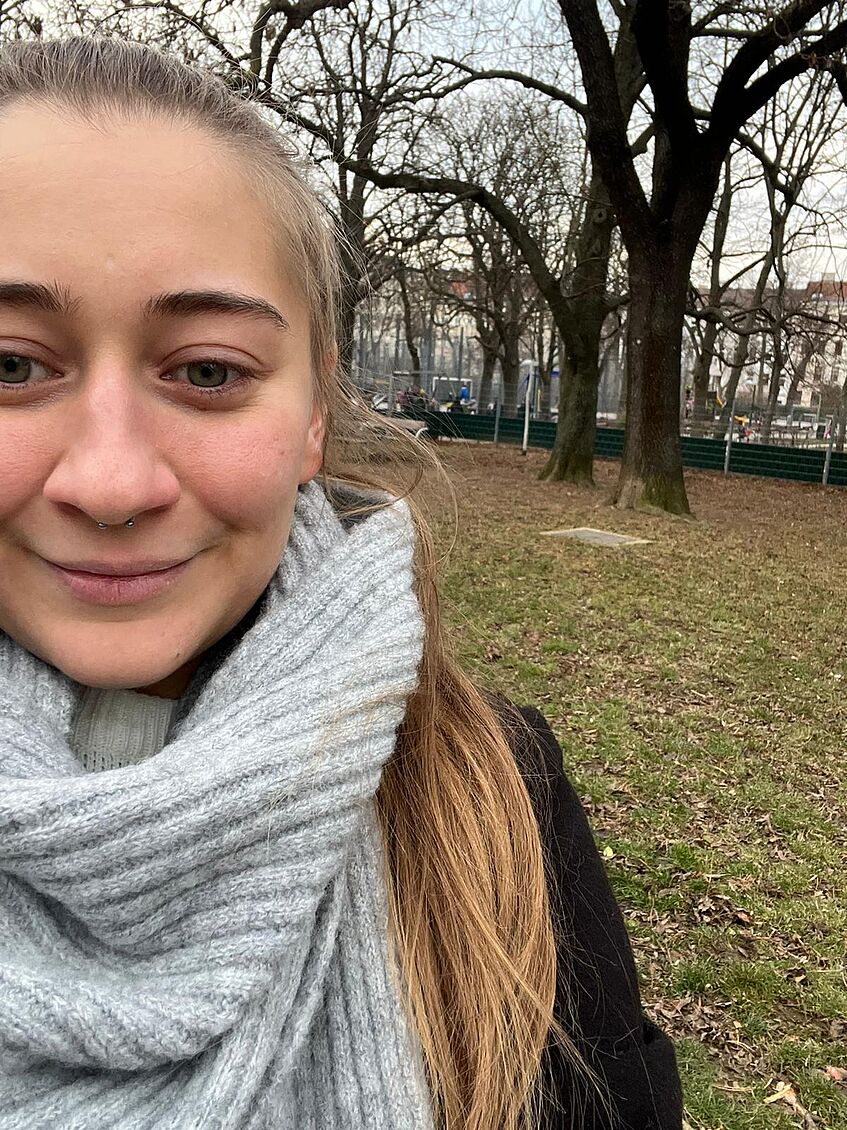
New Alumna: Stefanie Bachmann
Congratulations to Stefanie on her graduation! Stefanie´s thesis is on “Effects of resource availability and distribution on grouping dynamics and foraging strategies in an urban population of crows (Corvus corone ssp.)". The thesis was supervised by PD Dr. Didone Frigerio (University of Vienna) and Dr. Palmyre Boucherie (University of Vienna).
We wish you all the best for the future!
New Alumnus: Jonas Lesigang

New Alumnus: Jonas Lesigang
Congratulations to Jonas on his graduation. Jonas´ thesis is on “Function and individuality of different call types in greylag geese". The thesis was supervised by Prof. Dr. Sonia Kleindorfer (University of Vienna) and co-supervised by Dr. Andrew Katsis and Alper Yelimlies, MSc. (both University of Vienna).
We wish you all the best for the future!
Welcome Lindsey

Welcome Lindsey
We welcome our new intern Lindsey Ellington. Lindsey is working on a research project with captive ravens here at the KLF. Her project involves using the string pulling task to study social learning in juvenile ravens.
New paper: Maternal in-nest call structure reduces habituation risk in songbird embryos

New paper: Maternal in-nest call structure reduces habituation risk in songbird embryos
In some songbirds, females produce a multi-element call to their embryos to teach them a signature password that the embryos learn inside the egg and, after hatching, produce as their begging call. In this study, we ask: why do mother superb fairywrens have an in-nest call that contains two element types if the embryos only need to learn one element type to produce as their begging call? We experimentally broadcast calls with one or two elements to embryos. Embryos exposed to the B element only habituated to the sound and stopped responding, whereas embryos exposed to a mix of A and B elements maintained a similar level of responsiveness. The results of this study suggest that one benefit of mothers producing two elements in their calls is to reduce the risk of habituation in their embryos so that they remain attentive and responsive to learning cues.
Publication in Journal of Avian Biology:
Austin V, Common LK, Colombelli-Négrel D, Kleindorfer S (2024). Maternal in-nest call structure reduces habituation risk in songbird embryos. Journal of Avian Biology. https://doi.org/10.1111/jav.03274
New paper: Diet diversity, individual heterozygosity and habitat heterogeneity influence health parameters in Eurasian kestrels

Picture: Olaf Brockmann
New paper: Diet diversity, individual heterozygosity and habitat heterogeneity influence health parameters in Eurasian kestrels
Agricultural intensification has reduced habitat diversity, leading to a decline in farmland birds like Eurasian kestrels. Raptors are important indicators for ecosystem health. In this study we examine how habitat diversity, genetic diversity, and diet diversity affect five health parameters: colouration, dietary antioxidants (carotenoids), haematocrit, body condition, and parasite infections. Conducted in western Finland during a low vole year, the study found no clear link between habitat diversity and diet diversity. Female kestrels with specialised vole-based diets maintained brighter colours, but only if they also had higher genetic diversity. Genetically more diverse (heterozygotic) females were also less infected with parasites. Vole-specialist males had better body condition regardless of their genetics. These findings suggest that individual traits and foraging ecology should be considered alongside habitat diversity to understand kestrel health, helping to understand the impact of land-use changes on farmland birds.
Publication in Ibis:
Hochleitner, L., Korpimäki, E., Chakarov, N., Isaksson, C., Nebel, C., Renner, S.C., Vasko, V., Voigt, C.C., Terraube, J. & Sumasgutner, P. Ibis 2024-07. Journal article DOI: doi.org/10.1111/ibi.13345
Congratulations to Sarah Guttenberger for STSM Grant

Congratulations to Sarah Guttenberger for STSM Grant
We congratulate Sarah Guttenberger, MSc student in the Eurasian Kestrel Project, to a STSM (short-term scientific mission) Grant provided by the COST Action EUFLYNET to work with Inês Catry in Portugal. The team spent time in the field in Castro Verde, to test prototypes of the ICARUS TinyFox system provided by Max Planck Institute of Animal Behaviour. They captured 6 adults and 4 juveniles and are very impressed by the high resolution data return to detail kestrel movement and activity patterns.
New paper: Pleiotropic effects of melanin pigmentation in black sparrowhawks

Picture: Carina Nebel
New paper: Pleiotropic effects of melanin pigmentation in black sparrowhawks
Researchers are recognising the varied effects of melanin pigmentation on bird immunity. In black sparrowhawks (Accipiter melanoleucus) in western South Africa, light morphs have higher haemoparasite infection intensities than dark morphs, though these infections show no physiological effects. The study examined if these infections affect telomere length (a cellular ageing measure) and if telomere length is related to colour morph or sex. Dark morphs had fewer infections, but telomere length was unaffected by infection status or colour morph. Males had longer telomeres than females. Further research is needed to understand how plumage colour might influence other traits and the role this plays in maintaining colour diversity within colour polymorphic species.
Publication in Royal Society Open Science:
Rodseth, E., Sumasgutner, P., Tate, G., Nilsson, J.F., Watson, H., Maritz , M.F., Ingle, R.A., Amar, A. Royal Society Open Science 2024-04. Journal article DOI: https://doi.org/10.1098/rsos.230370
Rudolphina Roadtrip

Rudolphina Roadtrip
Rudolphina is the research magazine of the University of Vienna. We are delighted to have been visited as part of the Rudolphina road trip. The result is the article and a great video about our ongoing work.
https://rudolphina.univie.ac.at/rudolphina-roadtrip-zur-konrad-lorenz-forschungsstelle-gruenau
New Alumna: Johanna Lauffer
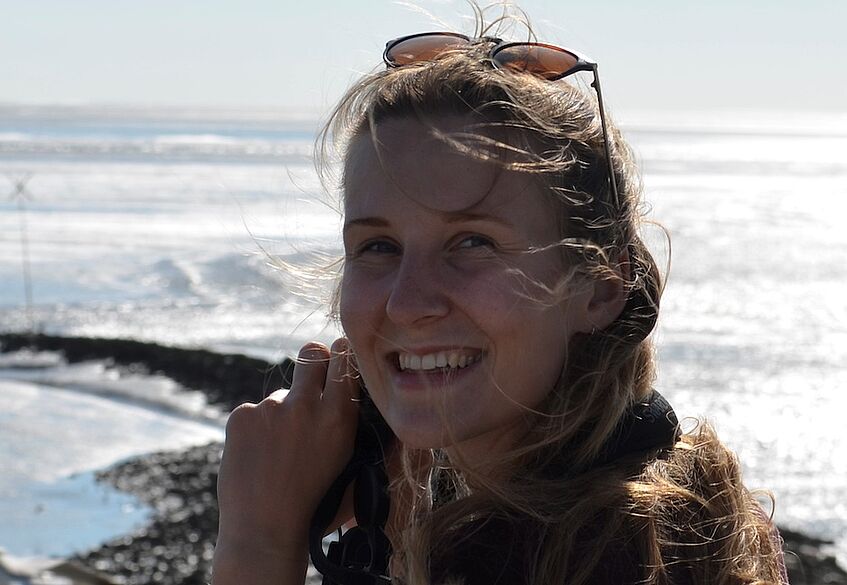
New Alumna: Johanna Lauffer
Congratulations to Johanna on her graduation! Johanna´s thesis is on “Relationship quality in free-flying ravens (Corvus corax)". The thesis was supervised by Prof. Dr. Thomas Bugnyar (University of Vienna).
We wish you all the best for the future!
Golden Eagle Tagging Season
The Golden Eagle Tagging Season has started, where we aim to equip 6 more juvenile Golden Eagles in Austria with GPS-tags. We are collaborating with the Max-Planck Institute of Animal Behavior and the Swiss Ornithological Institute to understand juvenile dispersal and flight behaviour based on build-in accelerometer sensors. The last mission was in Lassinbachtal, part of the Wildnisgebiet Dürrenstein, where postdoc Andrew Katsis accompanied Petra and Shane Sumasgutner to assist with the data collection and safety on the mountain.




New Alumna: Johanna Weber

New Alumna: Johanna Weber
Congratulations to Johanna on her graduation! Johanna´s thesis is on “Occupancy preference and breeding success in secondary hole-nesting birds depending on nest box material and familiarity". The thesis was supervised by PD Dr. Didone Frigerio and co-supervised by Dr. Josef Hemetsberger (University of Vienna) and Dr. Wolfgang Vogl (Vetmed Uni Vienna).
We wish you all the best for the future!
Many visitors at the "Lange Nacht der Forschung"
Our stand at the "Lange Nacht der Forschung" at UBB was very well attended last Friday. Many thanks for the numerous visitors and for taking part!

Picture: Marton Zsolt

Picture: Marton Zsolt

Picture: Marton Zsolt
Welcome Rosmarijn
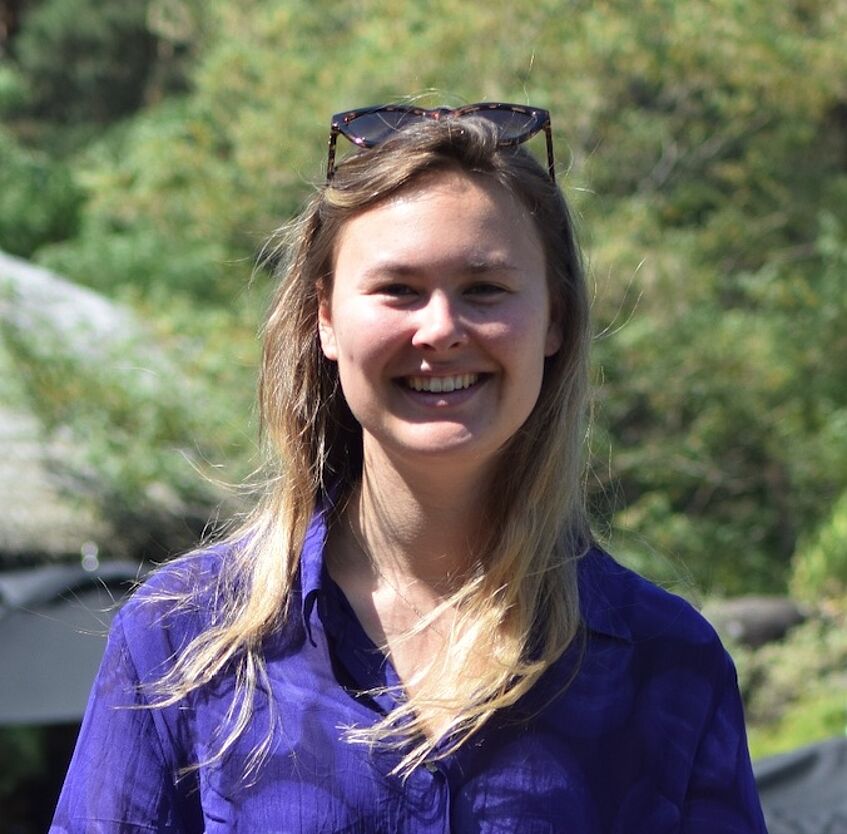
Welcome Rosmarijn
We welcome our new master's student Rosmarijn Ernsten who is studying Biology at Wageningen University and Research. For her MSc thesis she will monitor the Common Sandpiper at the pebble shores along the Alm river and create a methodology on how to monitor the riverine birds with a thermal imaging drone.
Welcome Danyang
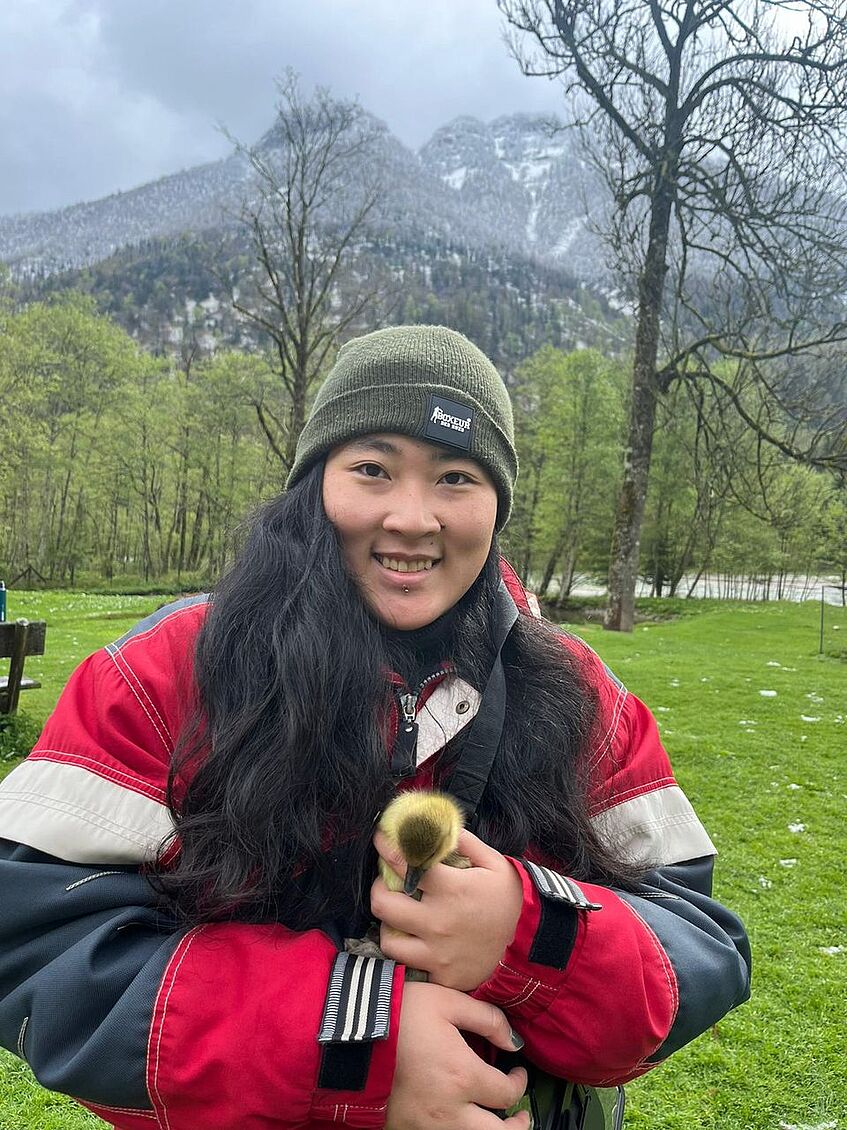
Welcome Danyang
We welcome our new master's student Danyang Shi who is studying at Wageningen University and Research. For her MSc research practice Danyang is at the KLF to investigate the ontogeny of agonistic behavior and aggression in greylag geese goslings.
Welcome Amit

Welcome Amit
We welcome our new master's student Amit Kumar who is studying Forest Sciences at the University of Padua, currently on Erasmus exchange at Wageningen University and Research. For his Master's thesis Amit is at the KLF to monitor the nest-box bird population and investigate the impact of traffic noise on the heart rate in Great tits.
Welcome Caitie

Welcome Caitie
We welcome our new volunteer Caitie Adams. Caitie is from Australia and will be at the KLF for a 5-month internship, participating in the monitoring of greylag goose behaviour.
Welcome Edoardo
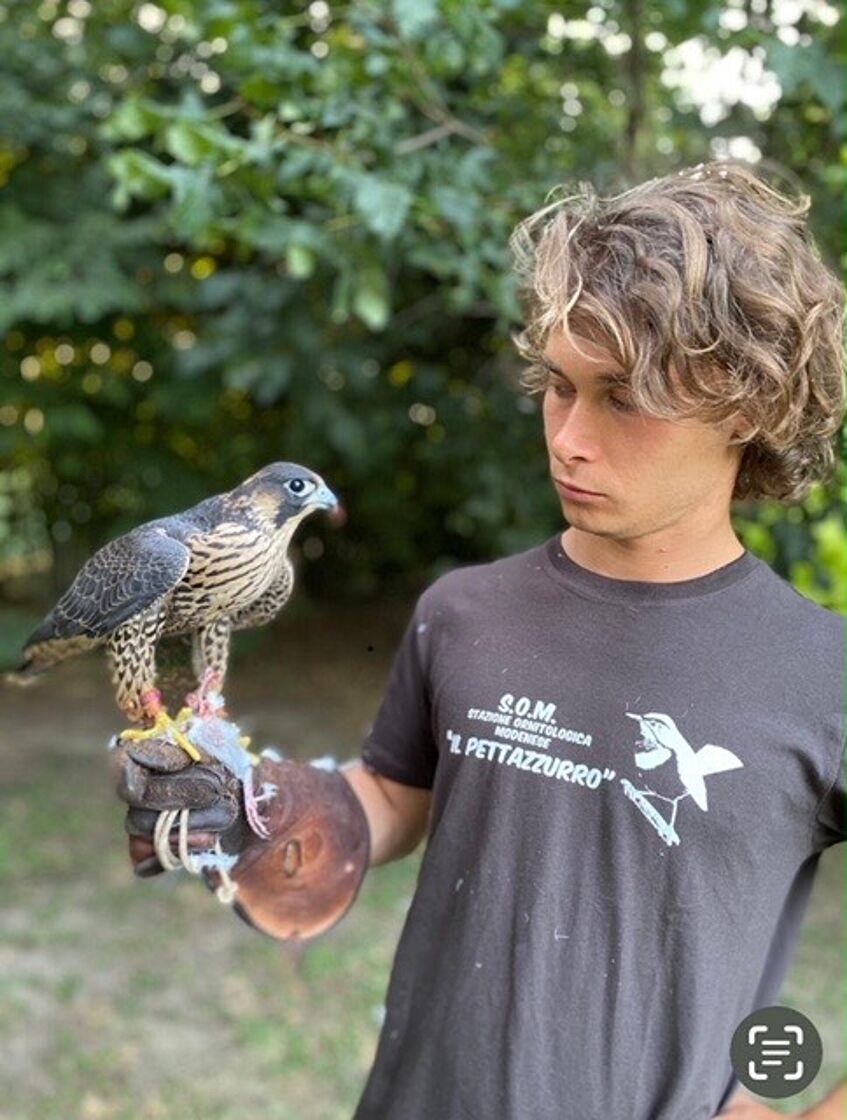
Welcome Edoardo
We welcome our new master's student Edoardo Bonte who is studying Environmental Sustainability at the University of Padua. For his Master's thesis Edoardo will monitor the nest-box bird population and investigate the impact of traffic noise on parental care in Great tits.
Floreana Island ecological restoration project
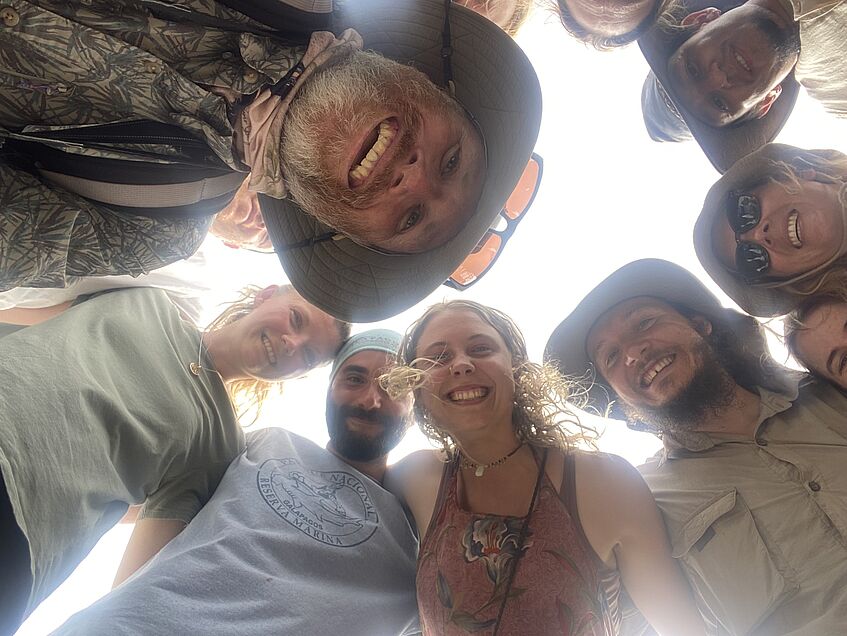
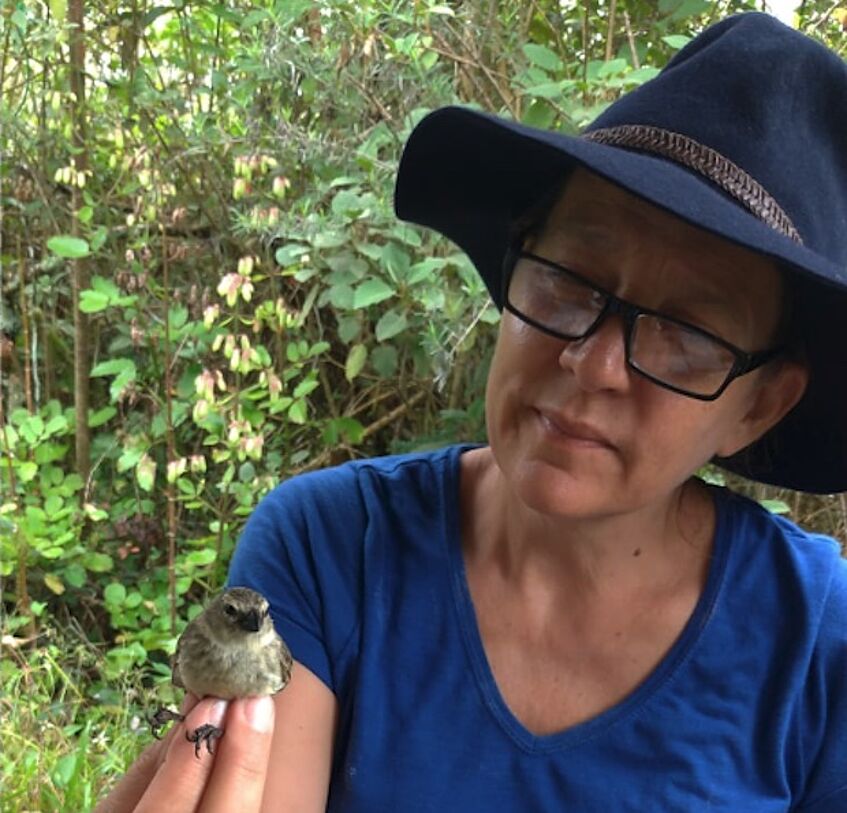
Floreana Island ecological restoration project
KLF research team helps Darwin's finches fly home after seven months in captivity. The finches were kept safe as part of the ambitious Floreana Island ecological restoration project on the Galapagos archipelago. In this interview, Sonia Kleindorfer gives an overview of the project, which provides hope for the future as many people work together to restore ecosystems.
https://www.darwinfoundation.org/en/news/all-news-stories/qa-with-biologist-prof-sonia-kleindorfer/
https://www.instagram.com/p/C5oIq_IpV1h/?utm_source=ig_web_copy_link&igsh=MzRlODBiNWFlZA
Welcome Francesca
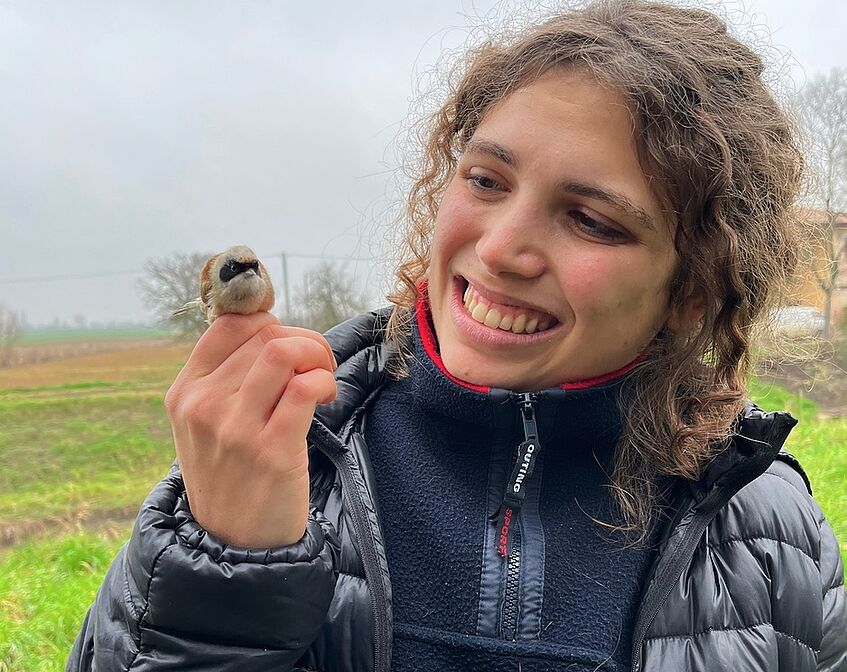
Welcome Francesca
We welcome our new master's student Francesca Castellazzi who is studying Forest and Nature Conservation at Wageningen University (Netherlands). For her Master's thesis Francesca will monitor the nest-box bird population and the investigate the impact of traffic noise on begging behavior of Great tits.
Congratulations to Carina Nebel: BioOne Ambassador Award
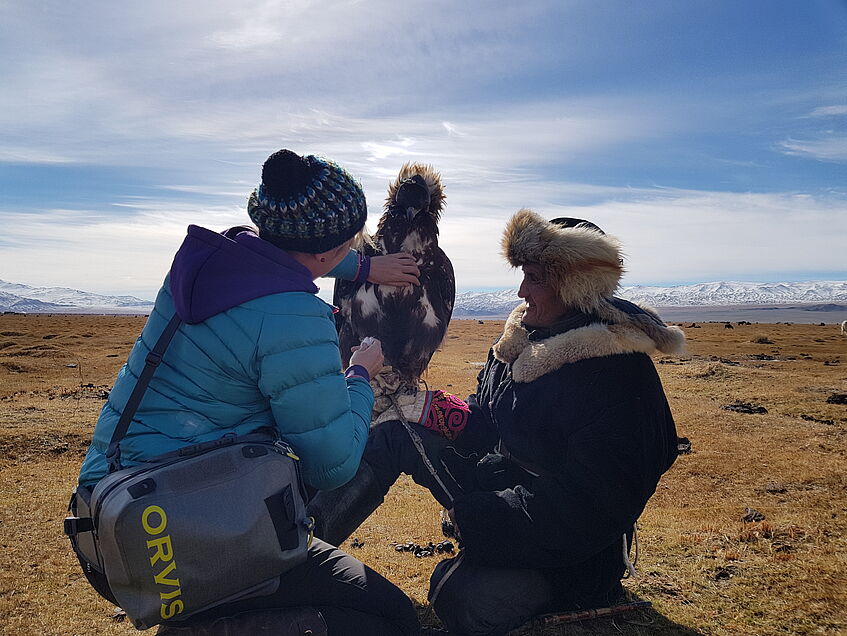
Picture: Megan Murgatroyd & Petra Sumasgutner
Congratulations to Carina Nebel: BioOne Ambassador Award
Congratulations to Carina Nebel for winning the BioOne Ambassador Award for advancing our understanding of an important flagship species, the Golden Eagle, by combining scientific methods with cultural traditions.
In the picture: Eagle researcher meets Eagle hunter: gently, a feather is plucked from the breast of the falconry Golden Eagle. This procedure is harmless to the Eagle and one feather per bird is enough for science.
Genetic Analysis of Golden Eagles (Aquila chrysaetos) from the Mongol-Altai: A Hotspot of Diversity and Implications for Global Phylogeography. Carina Nebel; Elisabeth Haring; Megan Murgatroyd; Shane C. Sumasgutner; Sundev Gombobaatar; Petra Sumasgutner; Frank E. Zachos Journal of Raptor Research (2023) 57 (3): 359–374. https://doi.org/10.3356/JRR-22-57
New Alumna: Avila Bold
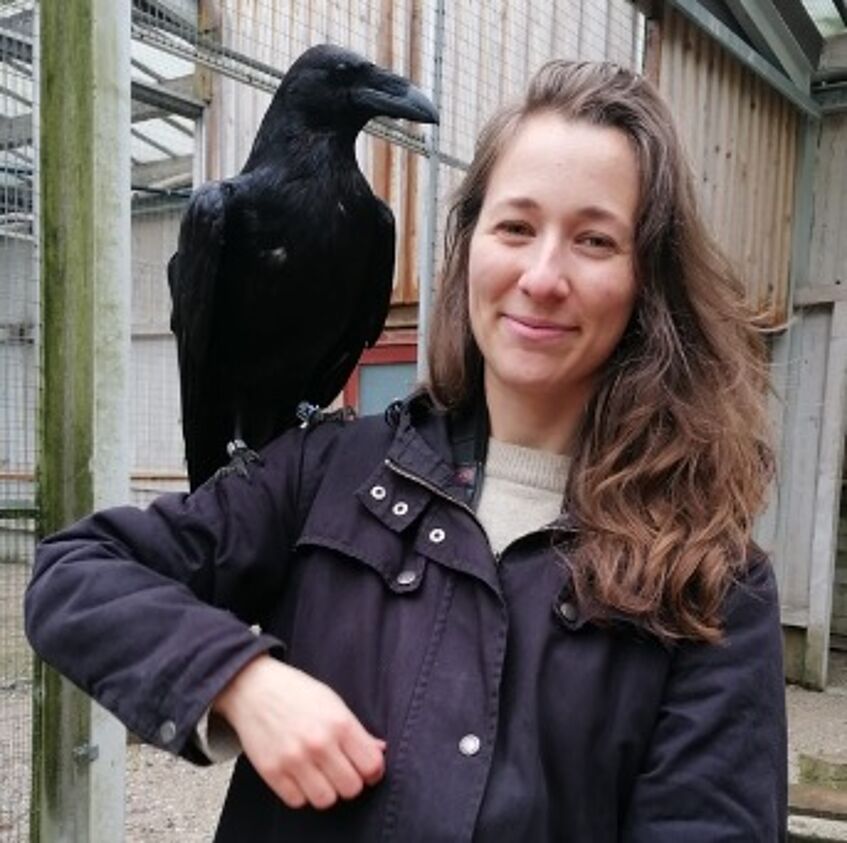
New Alumna: Avila Bold
Congratulations to Avila on her graduation! Avila has worked on “The ontogeny of antipredator behaviour in common ravens". The thesis was supervised by Ass.-Prof. Dr. Petra Sumasgutner (University of Vienna) and co-supervised by Silvia Damini MSc (University of Vienna) and Prof. Dr. Thorsten Stoeck (Rheinland-Pfälzische Technische Universität).
We wish you all the best for the future!
Welcome Antoine
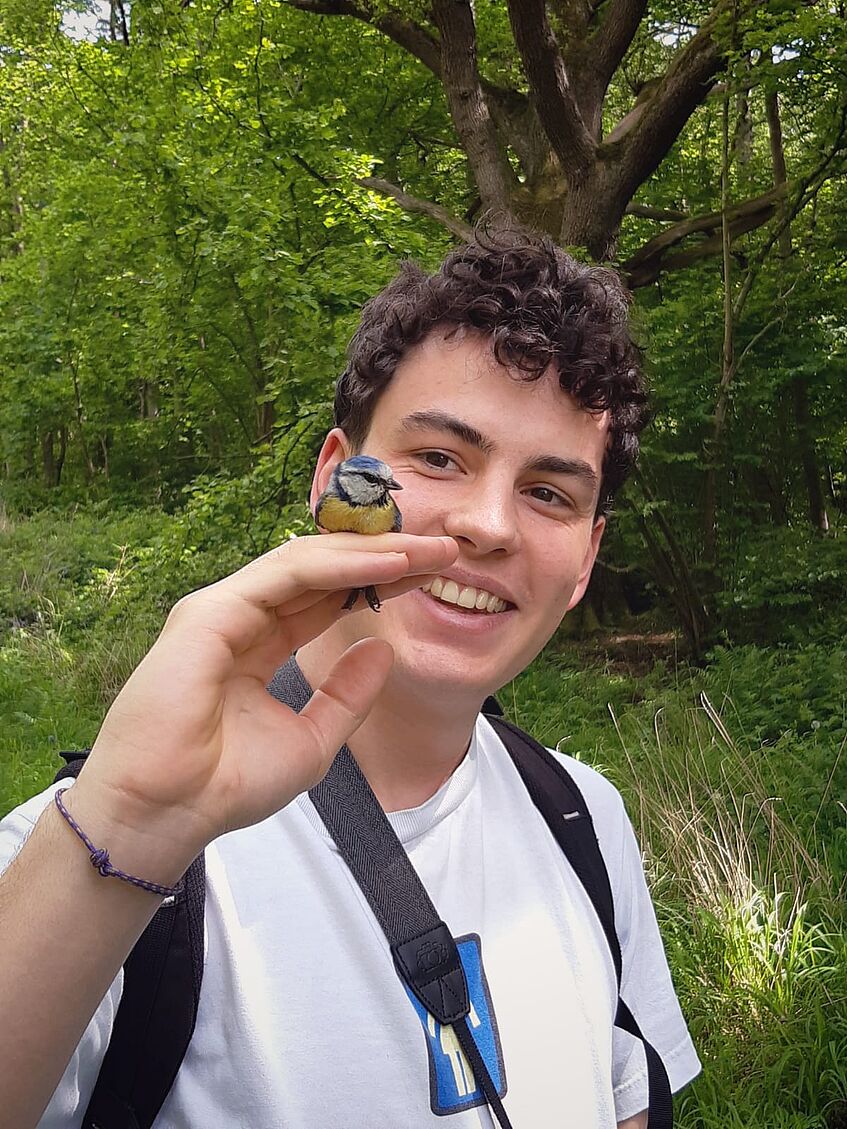
Welcome Antoine
Antoine studied "Ecology and Evolution" at the Ecole Normale Supérieure de Lyon and the Muséum National d'Histoire Naturelle and is at the KLF for a 5-month internship before starting his PhD. Antoine will work on the ontogeny of calls in greylag geese.
Happy Easter
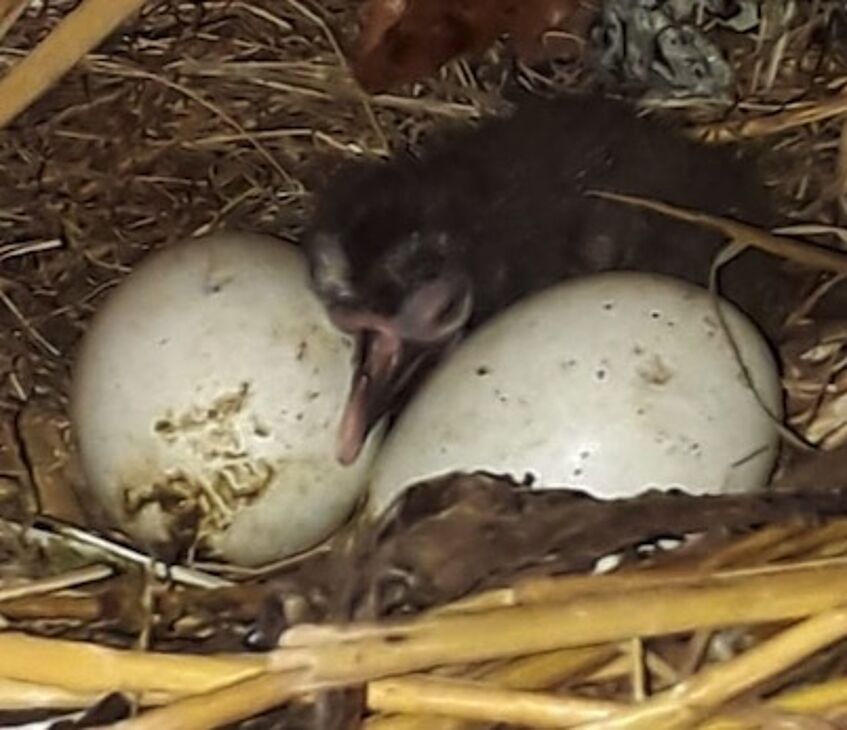
Picture: Juliette Boby
Happy Easter
Happy Easter and wonderful holidays!
New Paper: When Parasites Damage Birds’ Beaks, the Whole Environment Can Change
Darwin’s finches of the Galápagos Islands have a parasite called the avian vampire fly, which lay its eggs inside bird nests. When the eggs hatch, the immature flies enter the nestlings’ beaks via their nostrils and feed on their blood and tissue. The few nestlings that survive tend to have deformed beaks. We wanted to find out how this beak damage changes a finch’s body condition and feeding behavior once it leaves the nest. This study was conducted in the Galápagos Islands over 10 years. We monitored four species of Darwin’s finches and measured their body conditions. Overall, adults with damaged beaks were in poorer condition and changed their feeding behavior. This study shows that parasites can have long-term effects on the feeding behavior of their hosts.
Science for kids, edited by kids - In the journal Frontiers for Young Minds, scientists write manuscripts that are reviewed by a panel of young people. Each Frontiers for Young Minds author must obtain the approval of young reviewers before a publication can be posted online. These reviewers are between 8 and 15 years old and work with a science mentor. Together, they provide feedback to the authors to make the articles as clear and interesting as possible before they are published and posted online.
Publication in Frontiers for young minds:
Frigerio D, Colombelli-Négrel D, Common LK, Katsis AC and Kleindorfer S (2024) When Parasites Damage Birds’ Beaks, the Whole Environment Can Change. Front. Young Minds 12:1272047. doi: 10.3389/frym.2024.1272047
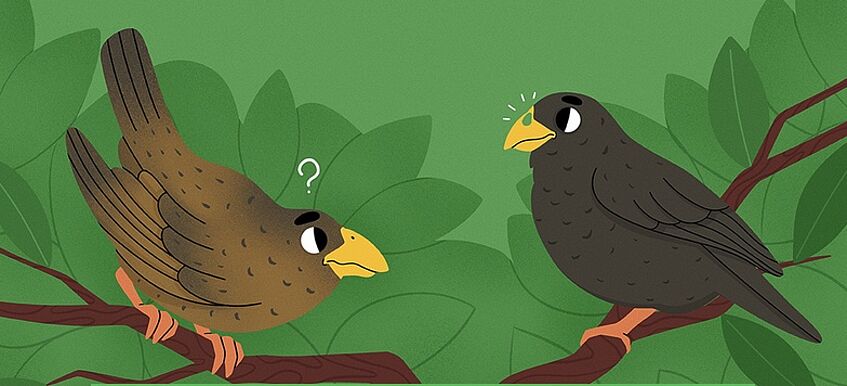
Picture: Frontiers for young minds
New Alumnus: Jakob Schorn

New Alumnus: Jakob Schorn
Congratulations to Jakob Schorn on his graduation! Jakob has worked on "Species-diversity and -dominance among secondary hole nesting birds depending on human presence", and thus completed the MSc program Behaviour, Neurobiology and Cognition at the University of Vienna. The thesis was supervised by PD Dr. Didone Frigerio (University of Vienna).
We wish you all the best for the future!
Welcome Martin
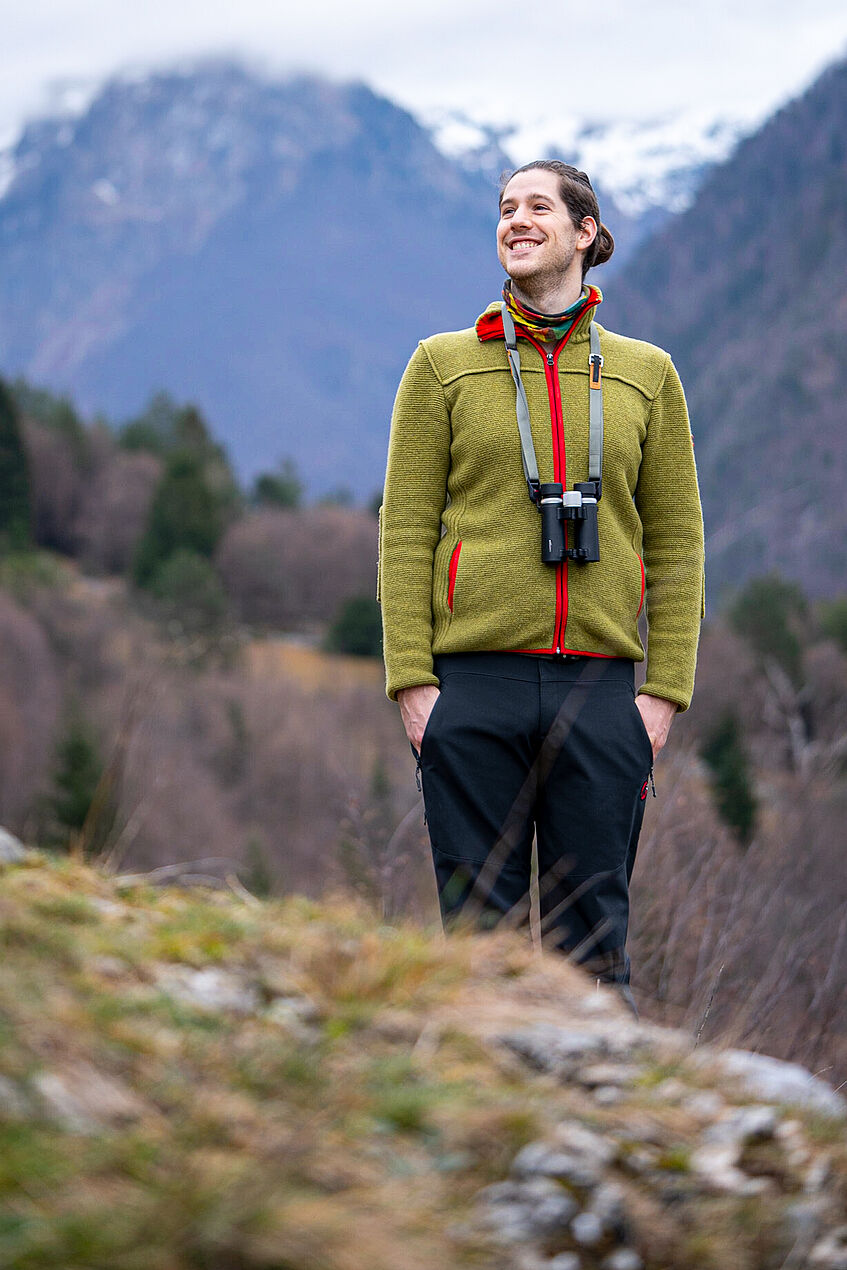
Welcome Martin
We welcome our new Master's student Martin Reichebner. He is studying biology and environmental studies to become a teacher and is fascinated by all kinds of birds. He is particularly interested in raptors. For his master's thesis project, Martin is working with movement data from Australian Nankeen Kestrels and will visualize them.
Welcome Rita
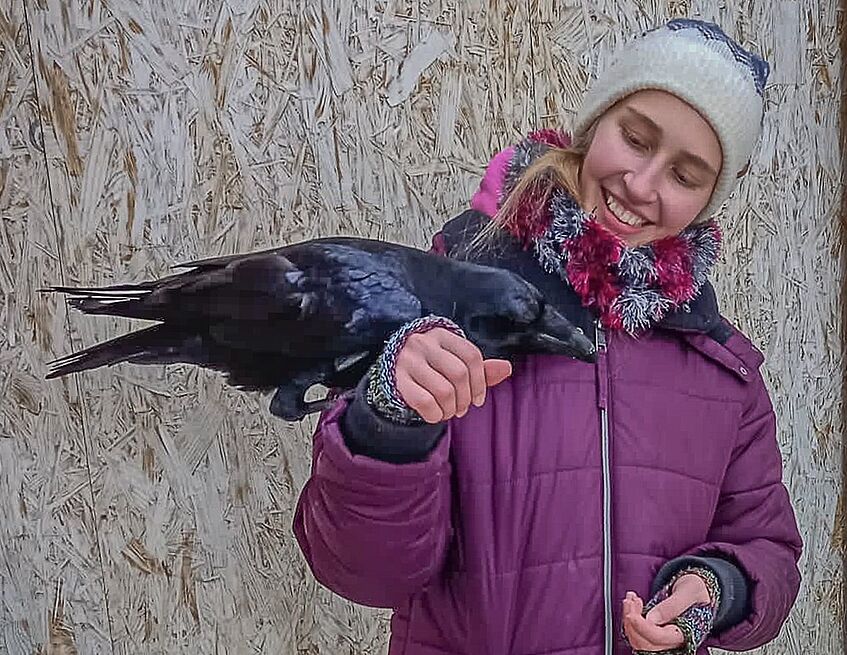
Welcome Rita
We welcome our new master's student Rita Götz who is studying Behaviour, Neurobiology and Cognition (Master) at the University of Vienna. For her Master's thesis Rita will investigate if relationship quality affects cooperation in common raven (Corvus corax) pairs during the breeding season.
Welcome Bram
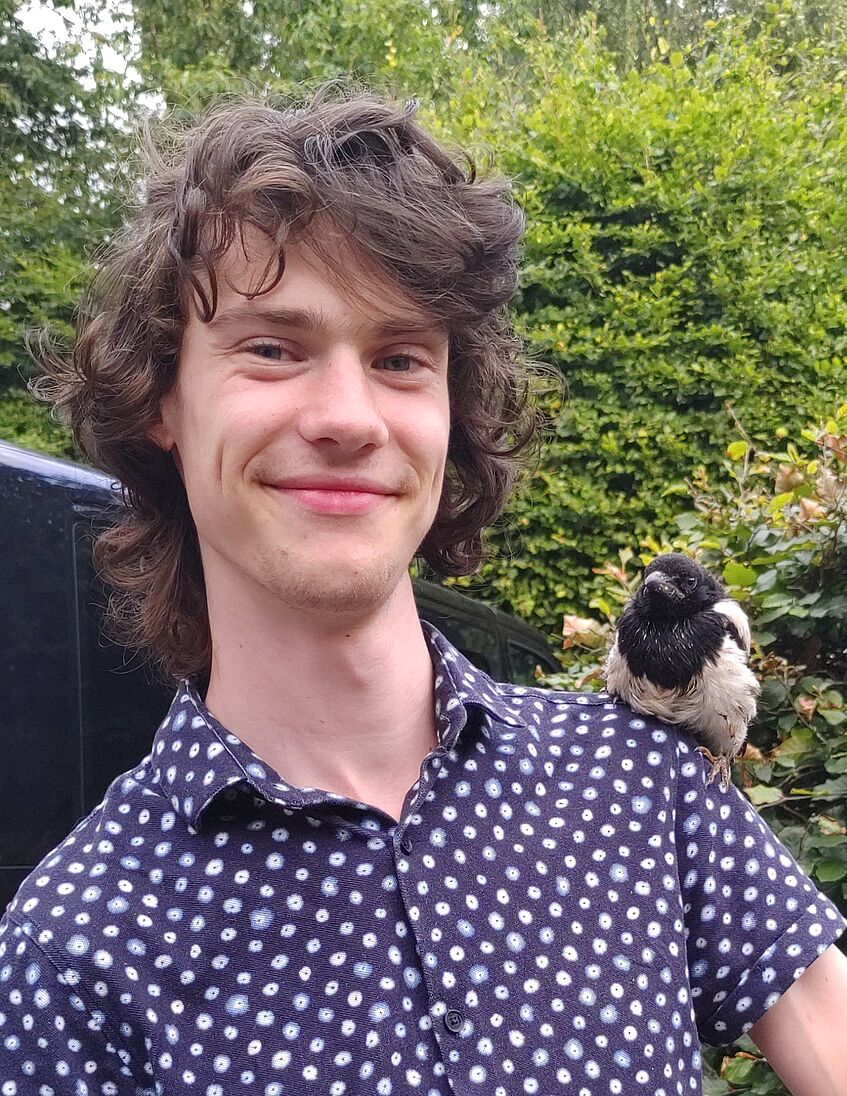
Welcome Bram
We welcome our new master's student Bram van Beek who is studying Behavioural & Cognitive Neuroscience (BCN) at the University of Groningen. For his Master's thesis Bram will focus on how social context and the strength of relationships affect solving a string-pulling task in free-flying common ravens (Corvus corax).
New Alumnus: Egon Lind
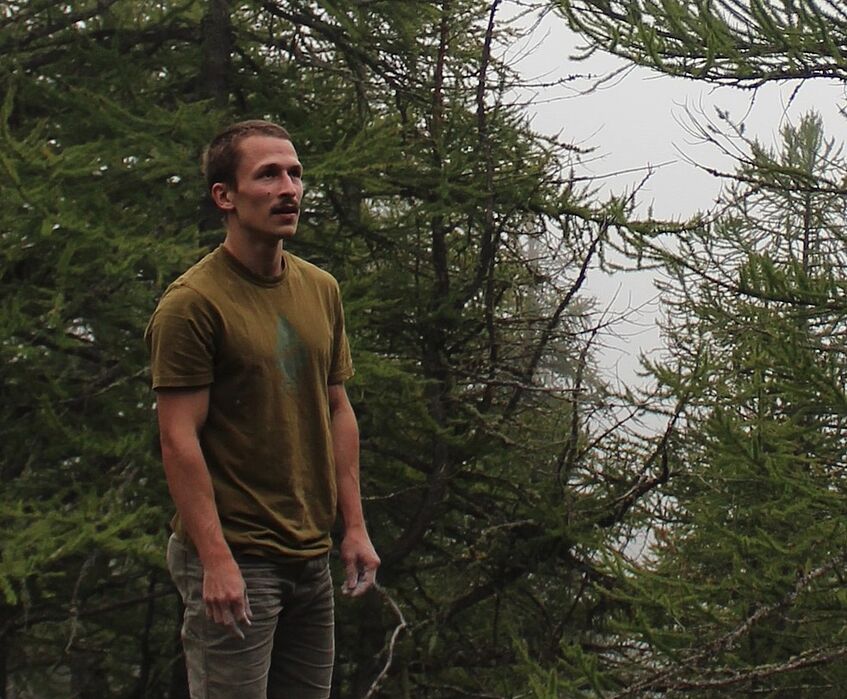
New Alumnus: Egon Lind
Congratulations to Egon on his graduation! Egon has worked on “Seasonal and cohort-specific survival rates of common raven in an anthropogenic alpine environment”, and thus completed the MSc program Conservation Biology and Biodiversity Management at the University of Vienna. The thesis was supervised by Prof. Dr. Thomas Bugnyar and Ass.-Prof. Dr. Petra Sumasgutner (University of Vienna).
We wish you all the best for the future!
New paper: Elevational differences in territory defence response in native forest birds
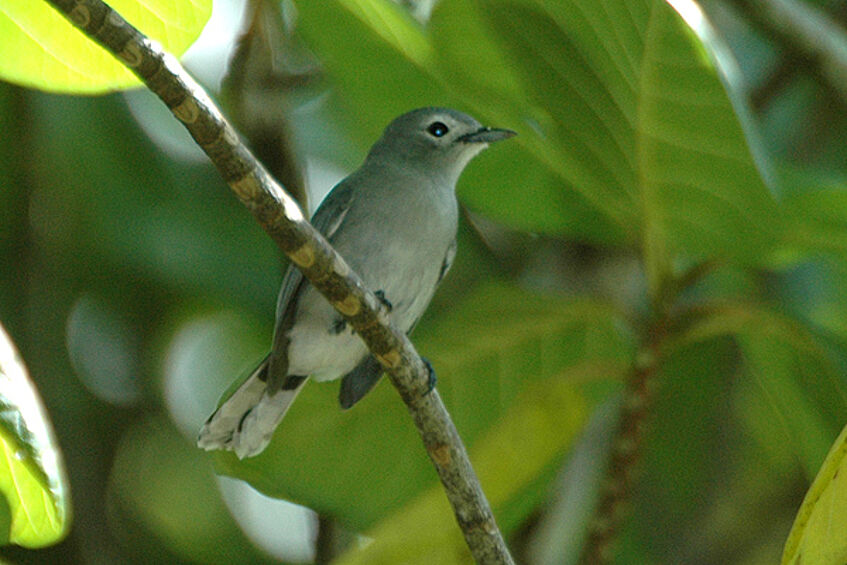
Picture: Aviceda at English Wikipedia, CC BY 3.0
New paper: Elevational differences in territory defence response in native forest birds
The aim of this study is to examine the response of Fijian forest bird species to conspecific intruders using playback of previously recorded songs along an elevational gradient. We address two questions: Do different foraging guilds in Fiji’s forest birds show different patterns of territorial defence behaviour towards conspecific intruders? Secondly, do Fiji’s forest birds show stronger territorial defence at higher elevations? This study provides first insights into response to conspecifics in Fiji’s forest birds that can be explored in relation to avian behaviour also in the context of human activity, human disturbance and threats to the persistence of birds across elevational gradients.
Publication in New Zealand Journal of Zoology
Naikatini, A.N., Keppel, G., Brodie, G. and Kleindorfer, S., 2024. Elevational differences in territory defence response in native (endemic and non-endemic) forest birds on Viti Levu Island, Fiji. New Zealand Journal of Zoology, pp.1-16.
New paper: Saving Birds From Extinction by Discovering Their Habitats
The authors investigated what it takes to prevent a species from going extinct. Aside from ensuring there is adequate habitat and making sure the species is safe, knowledge about an animal’s behavior is key for conservation management. Which sites do these birds use for foraging and roosting? Do they move alone or in groups, and are there recurring patterns to their movements? These are just some of the questions we tried to answer in our study. We monitored the movements of 32 free-flying northern bald ibises over 4 years, by equipping the birds with GPS transmitters. We found that our birds are pretty predictable in their habits and that they preferably fly along valleys. Being aware of such preferences is important when planning to reintroduce new colonies into the wild.
Publication in "Frontiers for young minds":
Frigerio D, Kleindorfer S, Krejci J, Schuster R, Kotrschal K, Loretto MC and Puehringer-Sturmayr V (2024) Saving Birds From Extinction by Discovering Their Habitats. Front. Young Minds. 12:1210462. doi: 10.3389/frym.2023.1210462
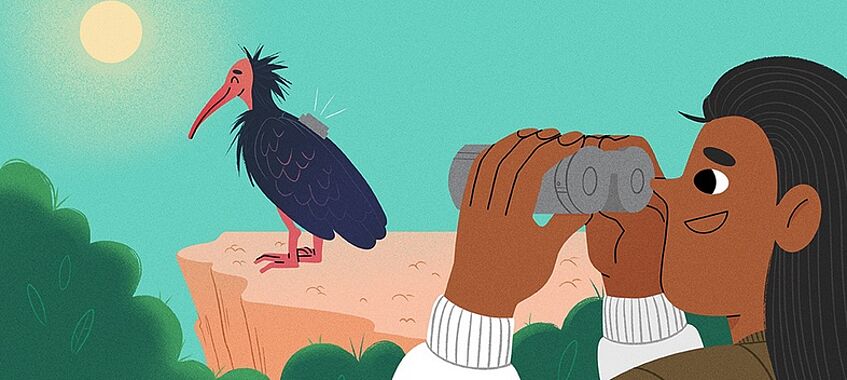
Picture: FYM
New paper on the buzz vocalizations of Darwin's tree finches
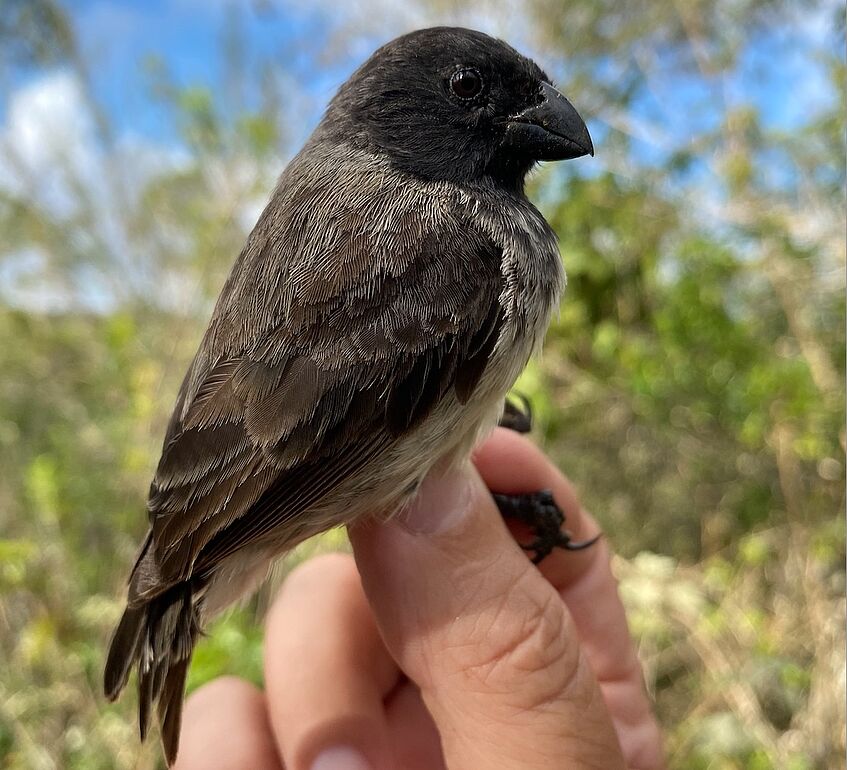
New paper on the buzz vocalizations of Darwin's tree finches
Signals of aggression may potentially reduce the fitness costs of conflict during agonistic interactions if they are honest. Here we examined whether the ‘buzz’ vocalization in two species of Darwin’s finches, the small tree finch, Camarhynchus parvulus, and the critically endangered medium tree finch, C. pauper, found in Floreana Island, Galápagos Archipelago, is a signal of aggression. Specifically, we assessed three criteria for aggressive signalling (context, predictive, and response criteria) in an observational study and a playback experiment. the results support the aggressive signal hypothesis for buzz vocalizations, although future studies are needed to understand the evolution and development of this interesting signal.
Publication in Biological Journal of the Linnean Society:
Çağlar Akçay, Diane Colombelli-Négrel, Sonia Kleindorfer, Buzzes are used as signals of aggressive intent in Darwin’s finches, Biological Journal of the Linnean Society, 2024;, blad152, doi.org/10.1093/biolinnean/blad152
New book on Greylag Geese! By Sonia Kleindorfer
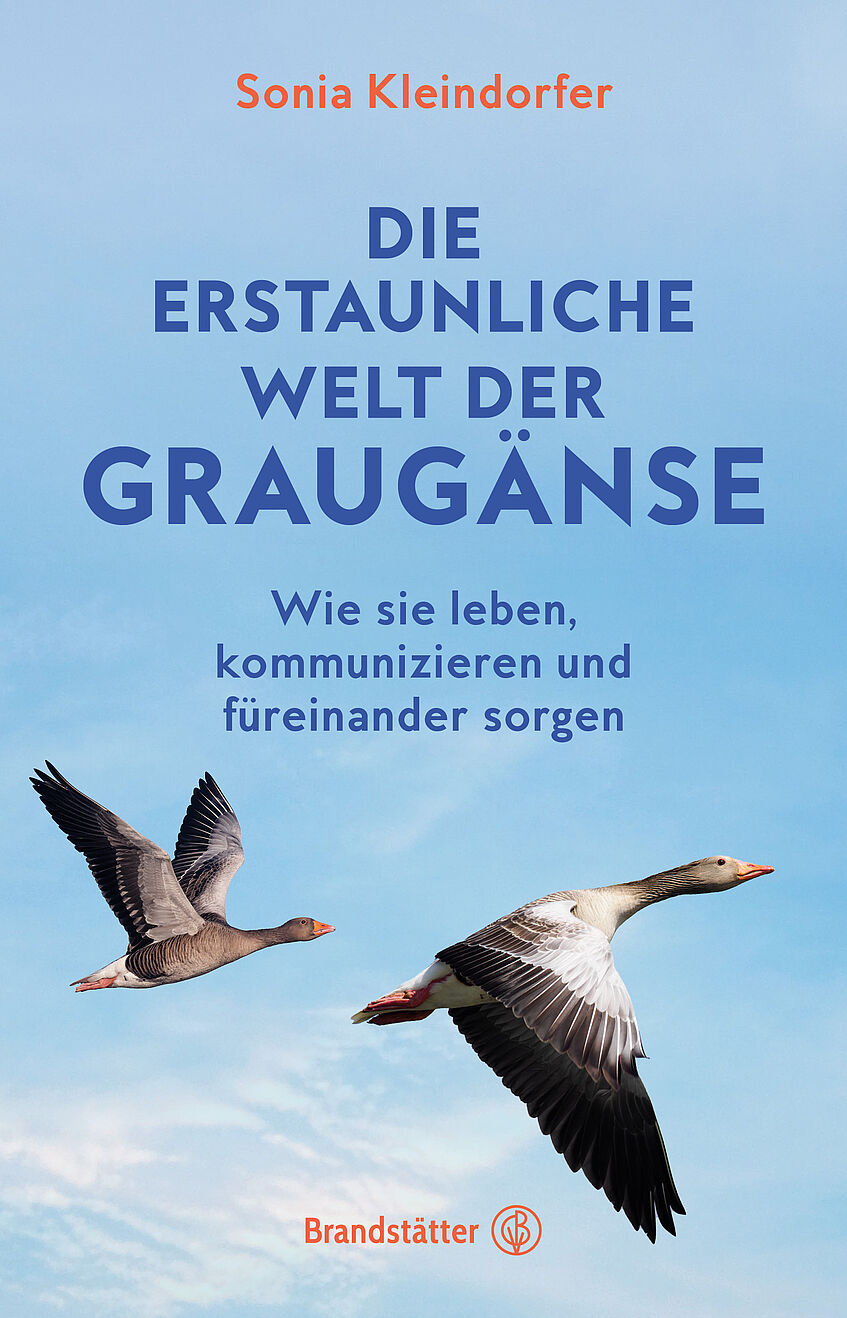
New book on Greylag Geese! By Sonia Kleindorfer
In this book, behavioural biologist Sonia Kleindorfer, who heads the Konrad Lorenz Research Centre in Grünau im Almtal, takes us into the world of animals that were once revered as god-like. The courageous Triton, the influential Leia, the shy Edes, Dorothea, who was rebellious as a gosling but is now particularly gentle, or Ivan, the Casanova: with passion and the latest findings from her research, Kleindorfer tells us about life with the greylag geese in the Almtal valley - and about a new model for thinking about biodiversity in a world that could benefit from extremely vigilant herbivores that stabilise ecosystems.
https://www.brandstaetterverlag.com/buch/die-erstaunliche-welt-der-graugaense/
Superb fairy-wren fieldwork season in South Australia
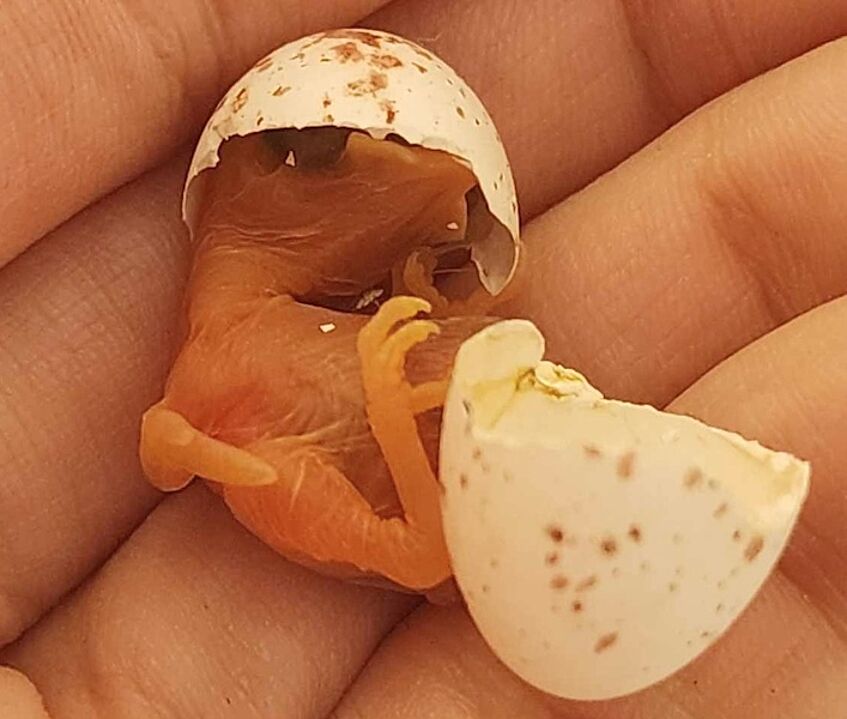
Superb fairy-wren fieldwork season in South Australia
Our superb fairy-wren fieldwork season in South Australia comes to an end today. We share a picture of the final hatchling of the 2023/24 season. Thank you to Lauren Common, Vicky Austin, and Diane Colombelli-Négrel.
Here a link to a paper that will be in print in February!
Merry Christmas and a happy new year!

Merry Christmas and a happy new year!
The team of the Konrad Lorenz Research Center wishes you Merry Christmas, relaxing holidays and all the best for the New Year!
New Alumnus: Arnout Lindeman

New Alumnus: Arnout Lindeman
Congratulations to Arnout on his graduation! Arnout has worked on “Do ravens seize the day or chicken out? Foraging decisions of wild birds in unfamiliar and unpredictable environments”, and thus completed the MSc program at Wageningen University. The thesis was supervised by Ass.-Prof. Dr. Alexander Kotrschal (Wageningen University), Prof. Dr. Thomas Bugnyar and Ass.-Prof. Dr. Petra Sumasgutner (University of Vienna).
We wish you all the best for the future!
Welcome Ilona
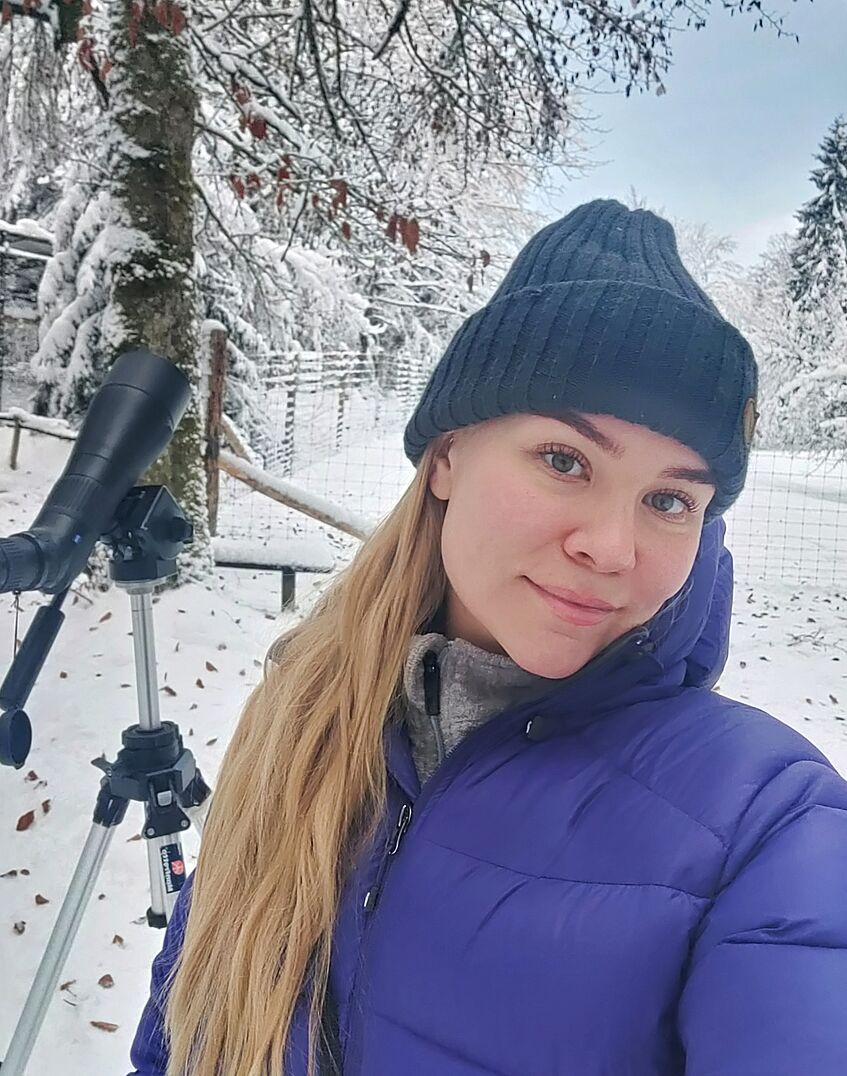
Welcome Ilona
We welcome our new master's student Ilona Koskela. Ilona studies ecology and evolutionary biology at the University of Helsinki and her main interests are in the field of behavioral ecology. She is particularly fascinated with intelligence and sociality among animals. For her master's thesis project, Ilona is studying the social bonds of free-ranging non-breeder ravens.
Celebration! 50 years of animal behaviour research! 50th Nobel Prize Anniversary Ethology Colloquium!
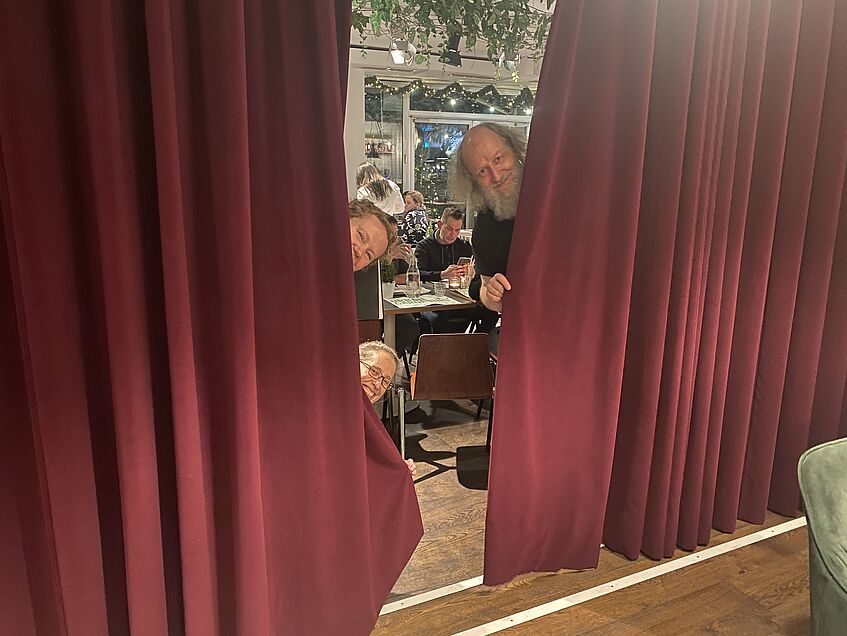
Celebration! 50 years of animal behaviour research! 50th Nobel Prize Anniversary Ethology Colloquium!
On 12 December 1973, Konrad Lorenz, Karl von Frisch and Nikolaas Tinbergen were awarded the Nobel Prize in Physiology or Medicine 1973 "for their discoveries concerning organization and elicitation of individual and social behaviour patterns". On 12 December 2023, we celebrated this 50-year anniversary with a special Nobel Prize Anniversary Ethology Colloquium held at the University of Vienna Biology Building. Three internationally renowned animal behaviour researchers, Prof. Amanda Seed, Prof. Megan Crofoot, and Prof. Lars Chitka, inspired a broad audience with their research into surprising and marvellous patterns of animal complexity. The poster session sparked discussion, and the well-attended gathering contributed further celebratory moments on this special day. The event was organised and hosted by the Konrad Lorenz Research Center for Behavior and Cognition and the Department of Behavioral and Cognitive Biology at the University of Vienna.
About the KLF Open Days ....
To celebrate the KLF's 50th anniversary, we had our open days last weekend. We showed photos of scientific highlights and presented our video "Almtal Anecdotes" with Jane Goodall, Lorenz grandson Riccardo Draghi-Lorenz and people from the Almtal who remember Konrad Lorenz. We would like to thank everyone for the visit, the nice conversations and the interest in our work!

Picture: Mariia Klymenko

Picture: Mariia Klymenko
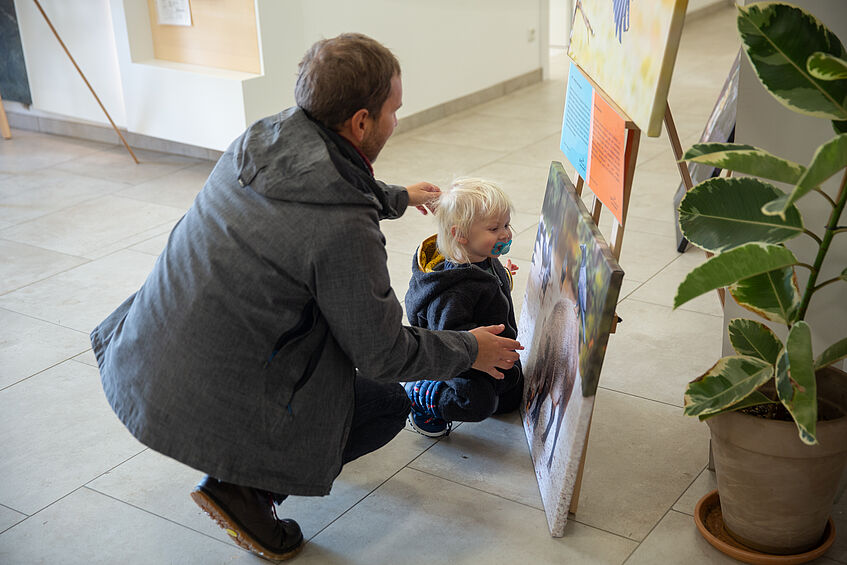
Picture: Mariia Klymenko

Picture: Mariia Klymenko
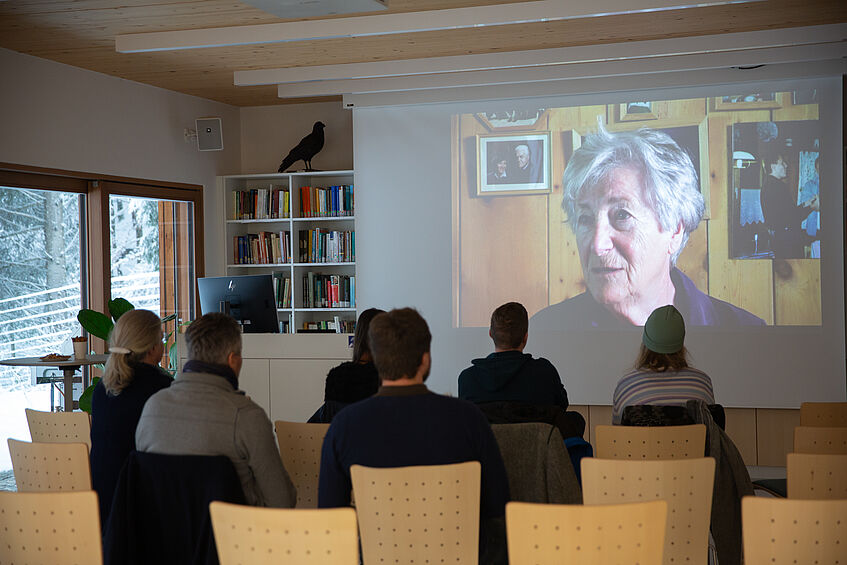
Picture: Mariia Klymenko

Picture: Mariia Klymenko
50 years of KLF: welcome to our open days December 2nd and 3rd
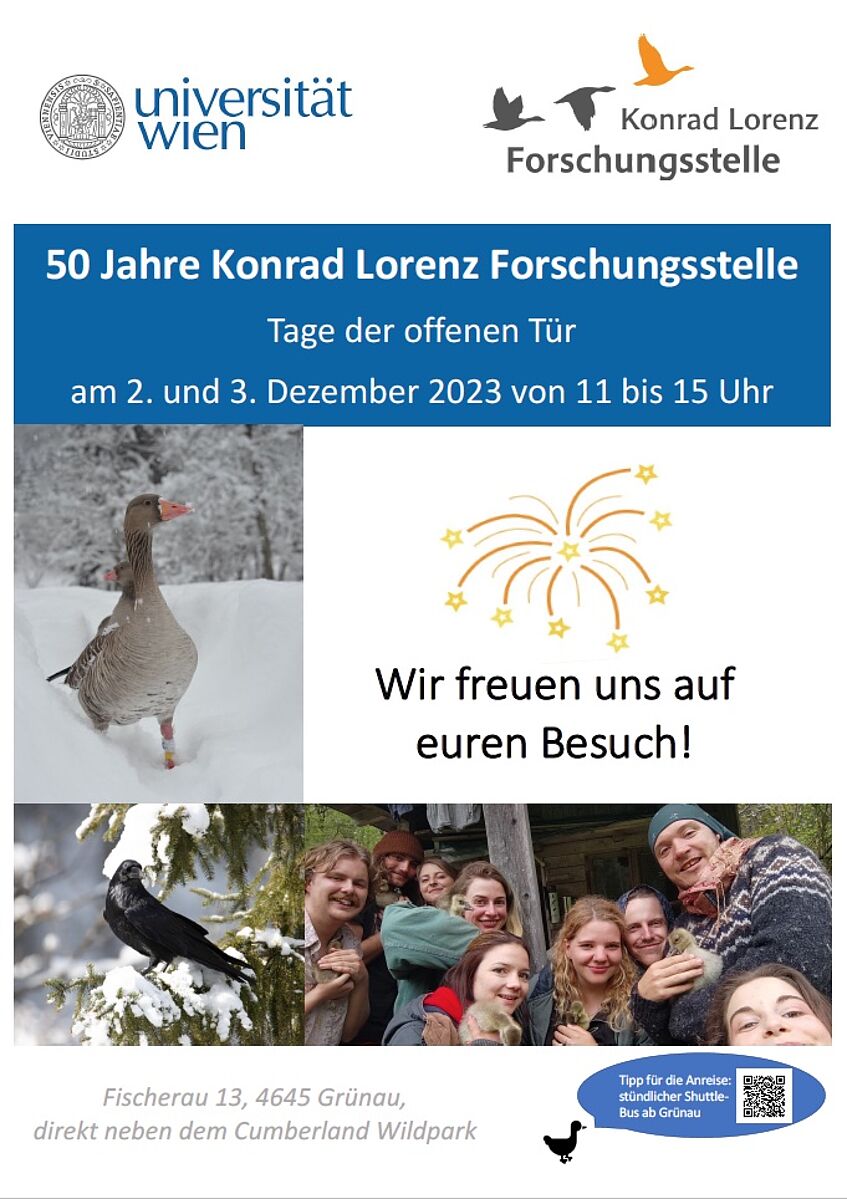
50 years of KLF: welcome to our open days December 2nd and 3rd
We invite all interested people to the "Open Days" on December 2nd and 3rd! Drop by, we look forward to your visit!
Tip: also visit the atmospheric Christmas market in the neighboring wildlife park!
https://wildpark.at/veranstaltungskategorie
KLF Open Science Center
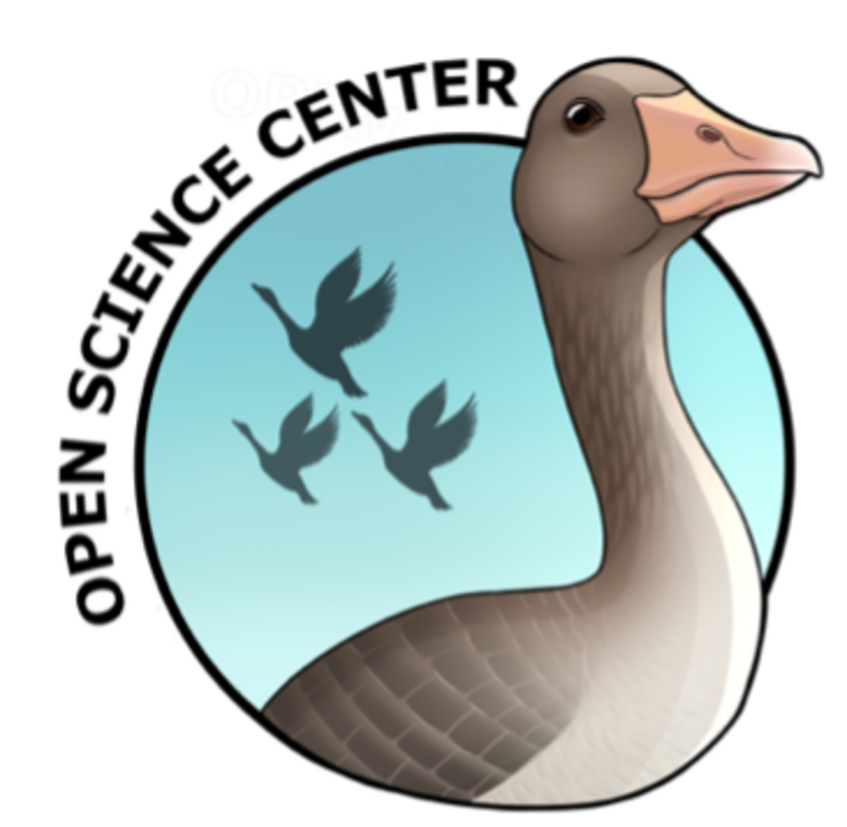
KLF Open Science Center
The KLF Open Science Center is to be established as a center for cooperation between science, education, business and society in Grünau im Almtal in Upper Austria. On the occasion of the 50th anniversary of the Konrad Lorenz Research Center, we want to establish the Open Science Center by redesigning the former "Wirtschaftshof" in the Cumberland Gamepark.
The initiative underlines the long-standing cooperation between many players in the valley! For 50 years, the partnership between the Konrad Lorenz Research Center and the Cumberland Wildlife Park has grown. Each year, KLF staff members lead summer science programs for children, create guided tours with a scientific focus, and engage the community through award-winning citizen science programs.
The Open Science Center will promote education, communication and exchange around science-based thinking about biodiversity goals. We want to establish the Almtal region as a pioneer in Austria for cooperation between science, education, business and society.
More information:
https://klf-opensciencecenter.univie.ac.at/
New Alumna: Rebekka Kreikenbohm
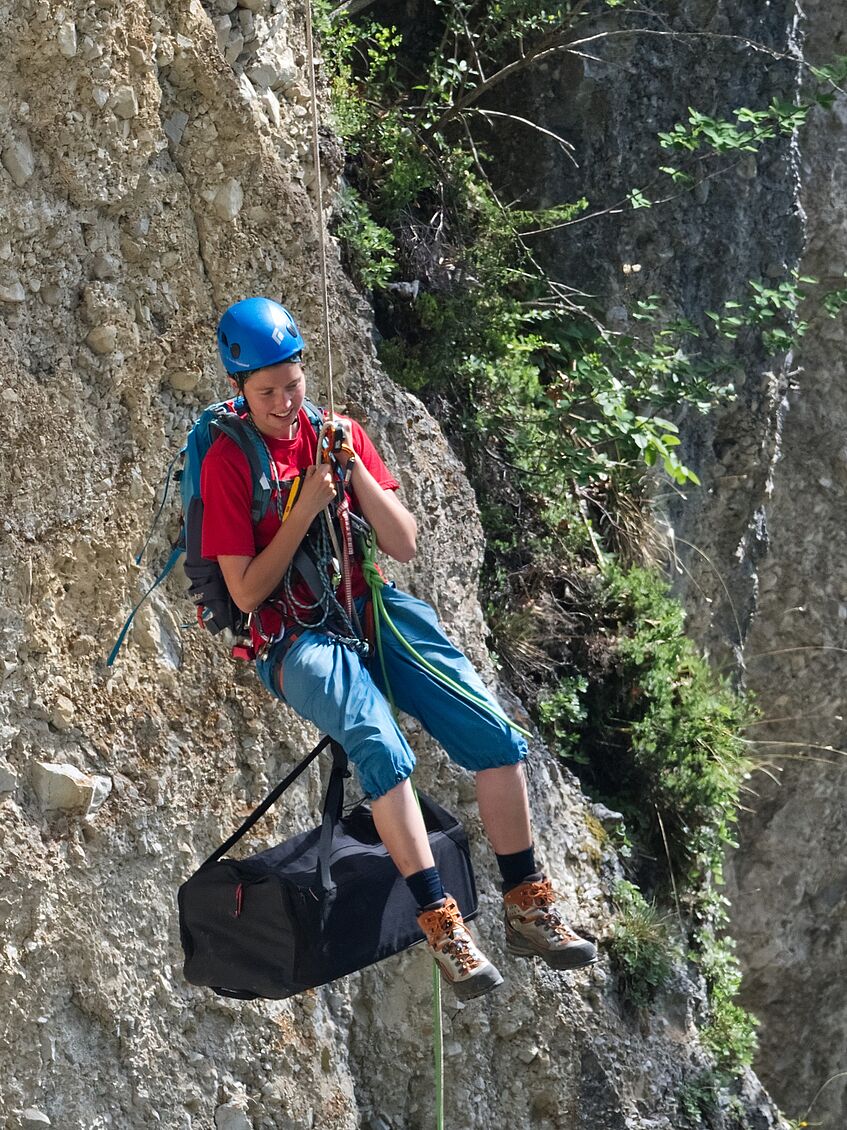
New Alumna: Rebekka Kreikenbohm
Congratulations to Rebekka Kreikenbohm on her graduation! Rebekka defended her Master Thesis on “Effects of weather and climate on Golden Eagle (Aquila chrysaetos) breeding performance in the Northern Limestone Alps”, completing her Master’s degree in Wildlife Ecology and Wildlife Management at the University of Natural Resources and Life Sciences in Vienna. In her work, she found that cold weather with high precipitation in winter and spring can have a positive effect on the breeding performance of Golden Eagles. The thesis was supervised by Assistant Prof. Dr. Petra Sumasgutner, Dr. Matthias Loretto und Prof. Dr. Sonia Kleindorfer.
We wish you all the best for the future!
50th Nobel Prize Anniversary Ethology Colloquium
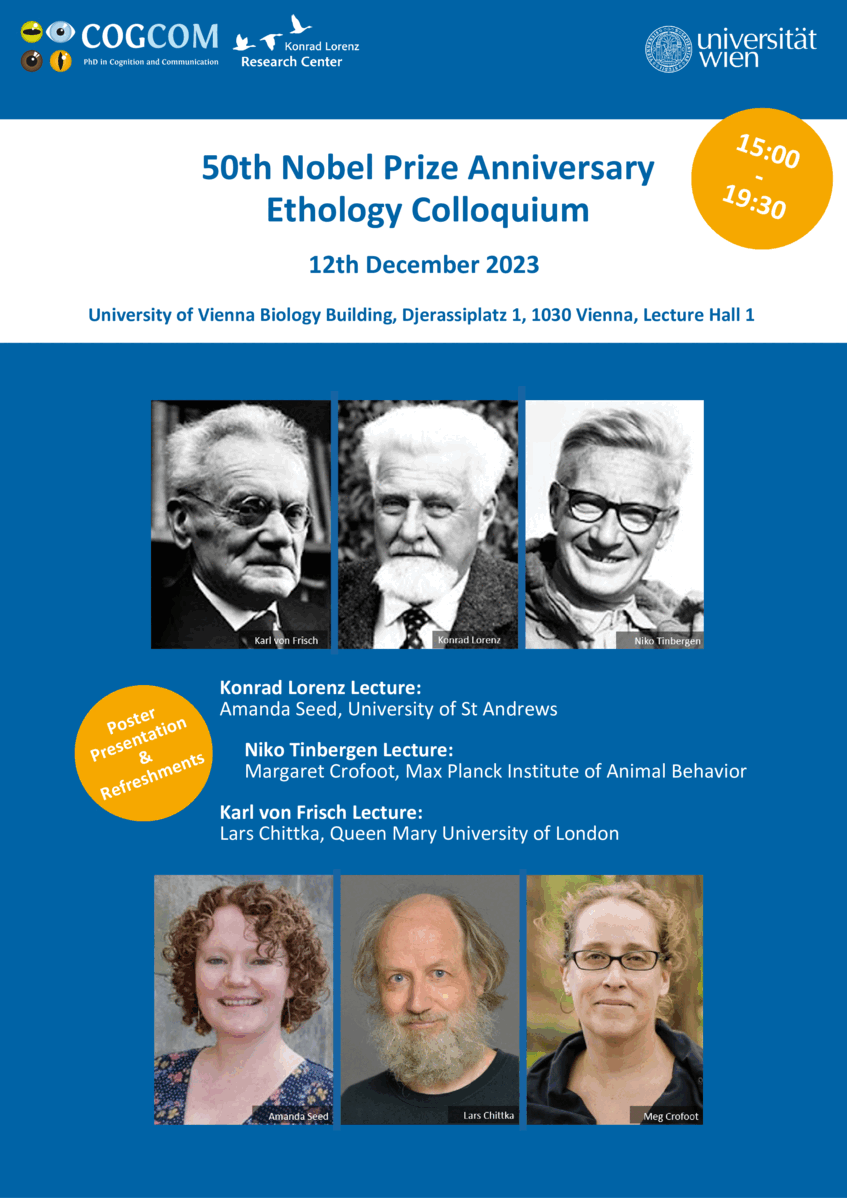
50th Nobel Prize Anniversary Ethology Colloquium
In honour of the 50th anniversary of the Nobel Prize in Physiology or Medicine, awarded in 1973 to Konrad Lorenz, Niko Tinbergen and Karl von Frisch for their pioneering contributions to the field of Ethology, the Konrad Lorenz Research Center invites you to the "50th Nobel Prize Anniversary Ethology Colloquium".
This event serves as a tribute to the lasting impact of the pioneering work in ethology that Lorenz, Tinbergen and von Frisch accomplished during their lifetimes.
Date and Venue:
Tuesday, December 12, 15:00 - 19:30, University of Vienna Biology Building (UBB) HS1
Event Highlights
The 50th Nobel Prize Anniversary Ethology Colloquium promises an engaging and enlightening afternoon, featuring three keynote lectures:
- Lorenz Lecture: Presented by Amanda Seed, University of St Andrews
- Tinbergen Lecture: Presented by Margaret Crofoot, Max Planck Institute of Animal Behavior
- von Frisch Lecture: Presented by Lars Chittka, Queen Mary University of London
Each of these keynote lectures will last 40-45 minutes, followed by a 15-minute discussion, and will provide a deep dive into the fascinating world of ethology. In addition to the lectures, the event will feature a poster session, providing a platform for students and research labs to showcase their latest findings. It's an ideal opportunity to network with peers, exchange ideas and foster collaborations.
Welcome Jonas

Welcome Jonas
We welcome our new master's student Jonas Lesigang who has, after completing a masters in psychology, also discovered an interest in biology. For his Master's thesis Jonas wants to find out more about different call types - departure calls, recruitment calls, and contact calls in Greylag geese.
Online seminar series: African Birds of Prey - Warriors of the Sky
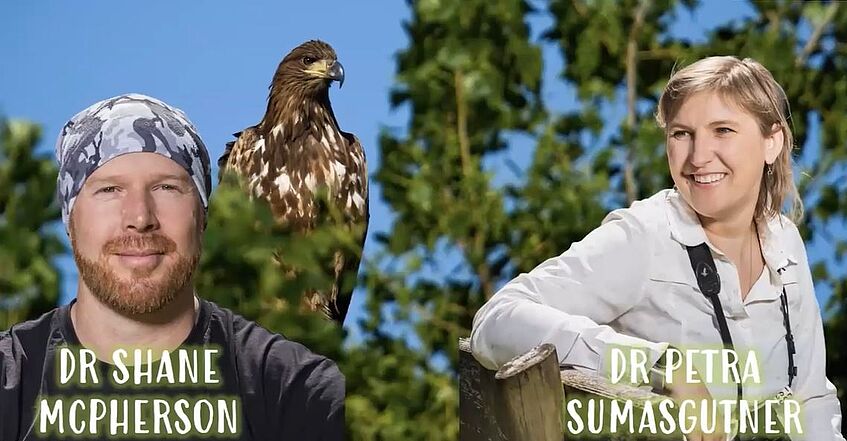
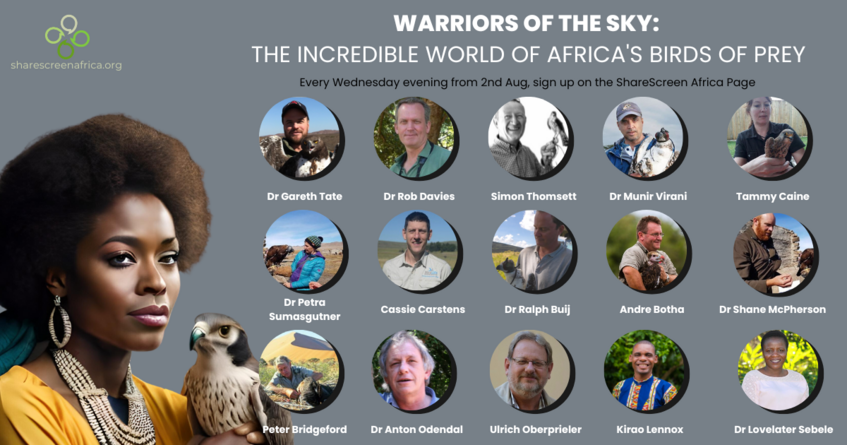
Online seminar series: African Birds of Prey - Warriors of the Sky
Petra and Shane Sumasgutner have been participating in the "African Birds of Prey - Warriors of the Sky" online seminar series, organised by Share Screen Arica (https://sharescreenafrica.org/) and KaiNav Conservation Foundation (https://www.kainavconservation.org/index.html). The presented an episode on "Hunters all around you - Urban Raptors of Africa".
This 16 weeks series was aimed to bring raptors to the fore of many people's attention, and can be re-watched on the youtube channel:The ShareScreen YouTube Channel: All your talks are here
Each talk had at least 60 people following live, some topped at 120! Each talk was also accopanied by total of 50 copyright free posters for classrooms and birding clubs. They can be downloaded from the webpage.
New paper: A mother’s lullaby lays the foundations for learning in songbird embryos
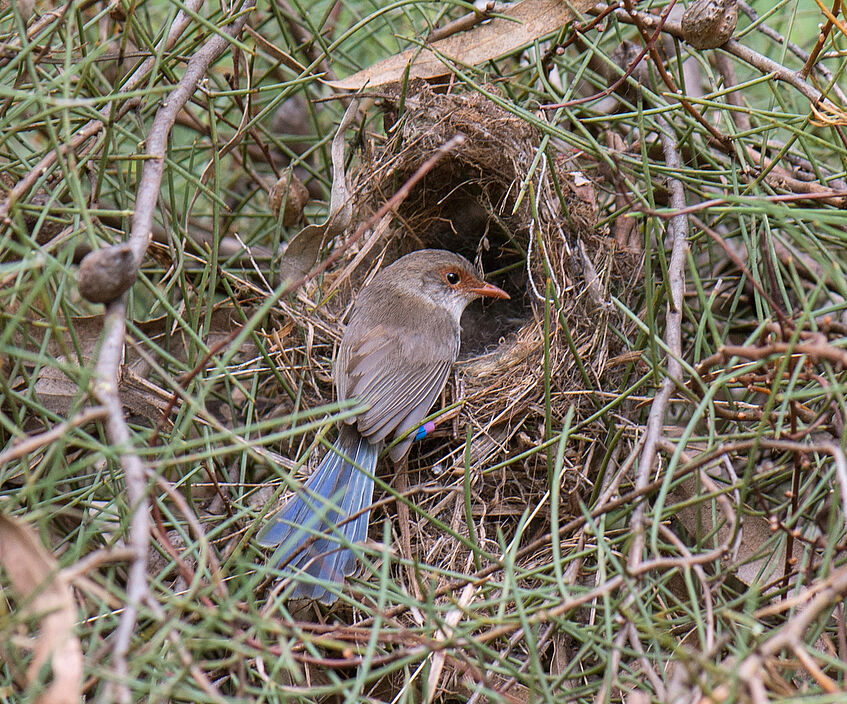
New paper: A mother’s lullaby lays the foundations for learning in songbird embryos
This study puts mothers center stage in the story of when vocal learning begins. Across eight songbird species in the Maluridae group, an ancient lineage from Australasia where vocal learning first evolved some 60 mya, female vocal tutoring starts early. The calls of fairywren mothers, produced while incubating their eggs, contain a signature element. Embryos learn this signature element inside the egg and, after hatching, produce it as their begging call. Furthermore, females that called more slowly to their embryos produced offspring whose begging calls sounded more like their mum—they had a better learning outcome.
Humans are also a vocal learning species. Could our favorite lullaby be laying the foundations for more learning than we think?
Publication in The American Naturalist:
Kleindorfer S, Brouwer L, Hauber ME, Evans CE, Teunissen N, Peters A, Louter M, Webster M, Katsis AC, Sulloway FJ, Common LK, Austin VA, Colombelli-Négrel D (in press). Nestling begging calls resemble maternal vocal signatures when mothers call slowly to embryos. American Naturalist. https://doi.org/10.1086/728105
Faculty Event: Honor for Dr. Josef Hemetsberger
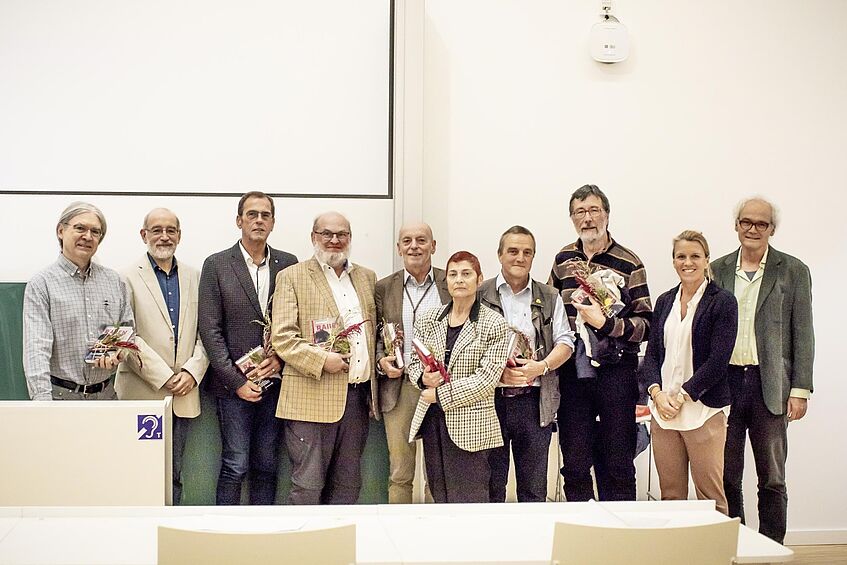
Picture: Faculty of Life Sciences
Faculty Event: Honor for Dr. Josef Hemetsberger
On the occassion of his upcoming retirement, Dr. Josef Hemetsberger, Vice Head of the KLF, was honored for his many years of service to the Faculty of Life Sciences at the Faculty party on October 12 at UBB. We would like to express our appreciation and congratulations.
Film about animals breeding in and on buildings in Vienna
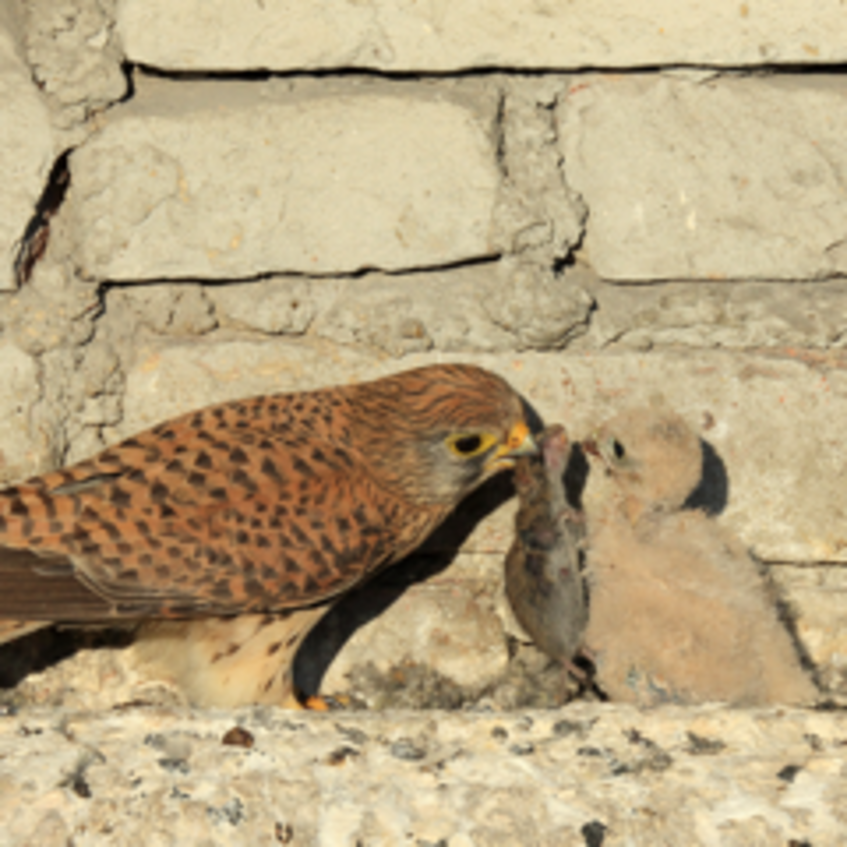
Picture: Franz Kerschbaum
Film about animals breeding in and on buildings in Vienna
The focus of the film is on species that breed in and on buildings, such as the kestrel, their habitat and their fascinating way of life. Petra Sumasgutner, speaking as head of the Vienna Kestrel Project, talks about the ability of kestrels to use urban habitat and the benefit to society of being able to observe a top predator right outside our window.
Download film:
https://youtu.be/7XaxIgvIvzs
Welcome Mariia
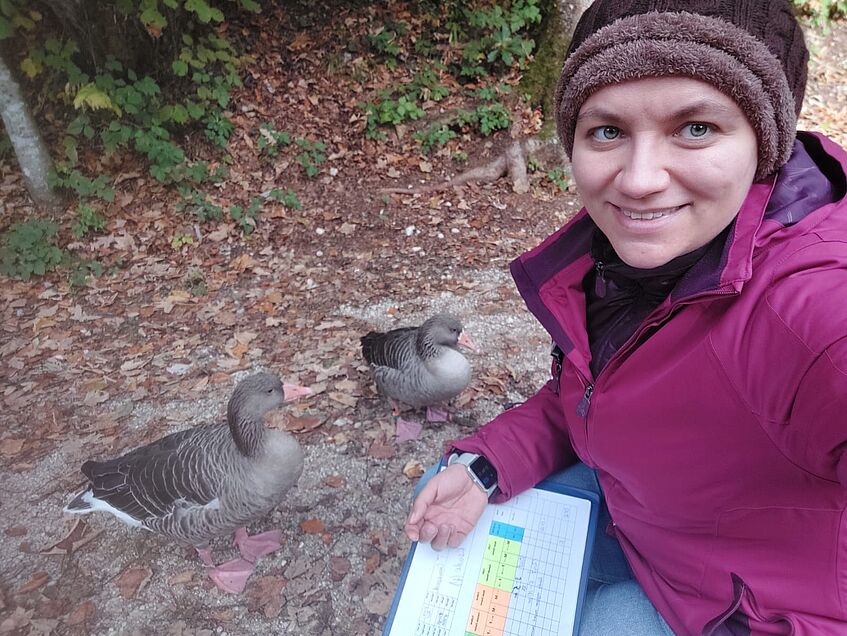
Welcome Mariia
We welcome our new master's student Mariia Klymenko who is studying Behaviour, Neurobiology and Cognition (Master) at the University of Vienna. For her Master's thesis Mariia is observing components of relationship quality in greylag geese monogamous pair bonds. At the KLF she is working as a student assistant.
Welcome Alina
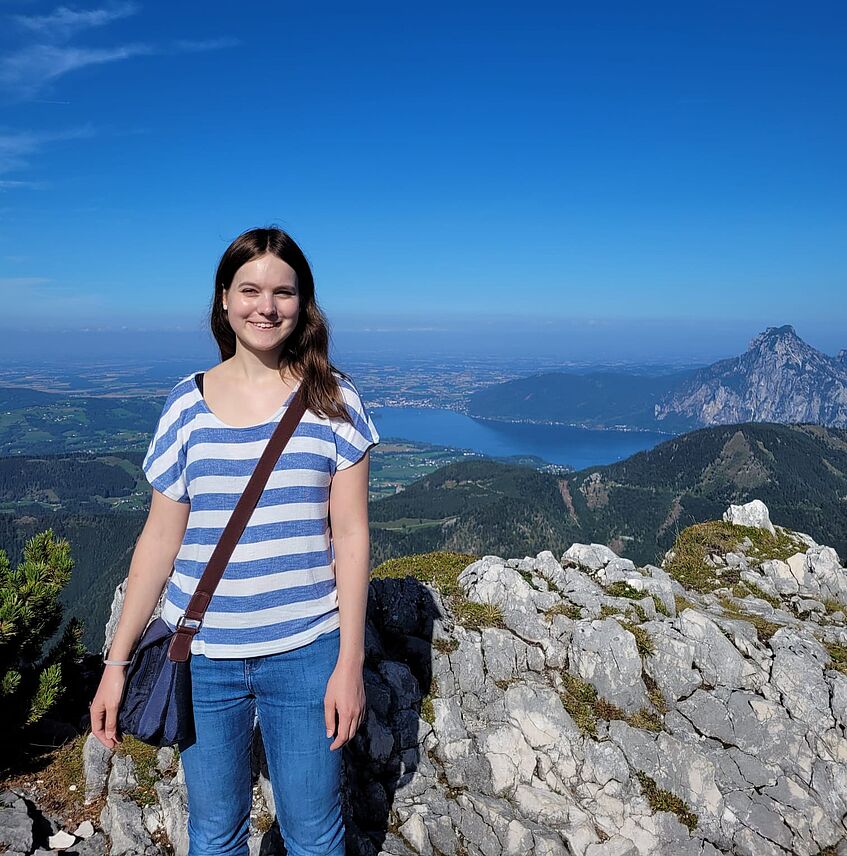
Welcome Alina
We welcome our new master's student Alina Döhring who is studying Zoology at the University of Vienna. For her Master's thesis Alina will focus on the individual responses of greylag geese to their mirror image, with an emphasis on personality and object permanence.
New paper on the effects of food-based enrichment on zoo animals
How can enclosures and aviaries in a wildlife park or zoo be designed or equipped to address animal welfare as well as visitor interests and educational opportunities? The aim of this study was to evaluate the effects of different enrichment activities in the enclosures of brown bears, pine martens, domestic ferrets and golden jackals on the enclosure use, behavior, and visibility to visitors at the Cumberland gamepark Grünau. We found that enrichment influenced enclosure use, activity patterns, and visibility of the animals. However, further studies should control for the specific role of the factors involved. Our study represents one of the first explorations of food-based enrichment in rather understudied species.
Publication in Peer J:
Puehringer-Sturmayr V, Fiby M, Bachmann S, Filz S, Grassmann I, Hoi T, Janiczek C, Frigerio D. 2023. Effects of food-based enrichment on enclosure use and behavioral patterns in captive mammalian predators: a case study from an Austrian wildlife park. PeerJ 11:e16091

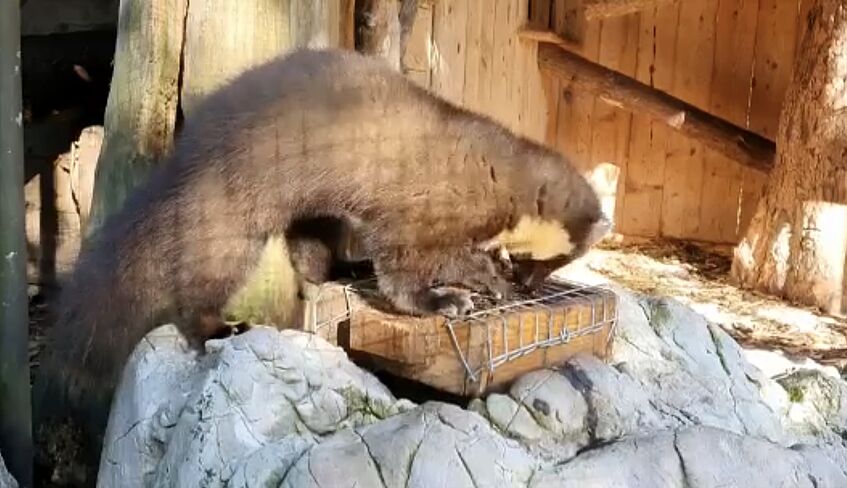
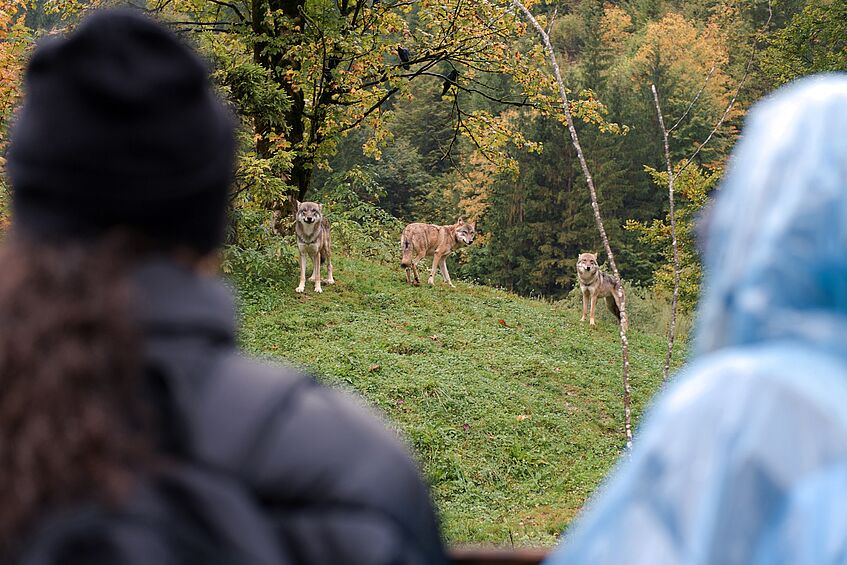
New paper on Citizen Scientist engagement for conservation
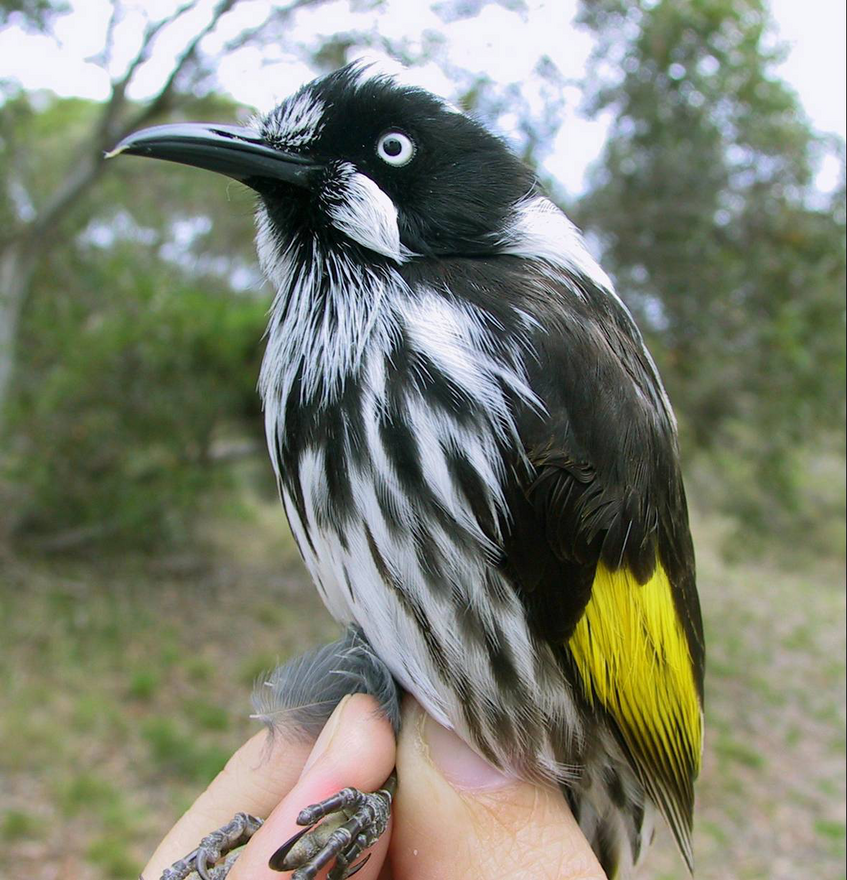
Picture: Sonia Kleindorfer
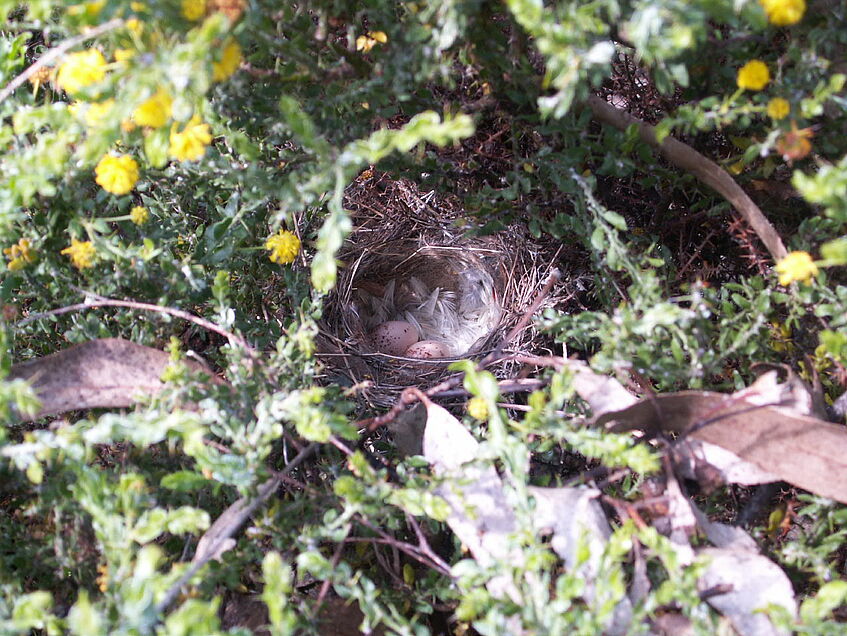
Picture: Sonia Kleindorfer
New paper on Citizen Scientist engagement for conservation
Social and affective empathy may generate future conservation benefits as the consequence of transformed personal attitudes. In this study, we investigated changes in attitudes and intended behaviours about the plight of woodland songbirds before and after participation in science activities and direct interaction with scientists monitoring avian biodiversity in the Mount Lofty Ranges (MLR) in South Australia. A total of 55 anonymous adult participants were invited to join a survey before and after participating in two three-hour workshops on avian science plus acoustic data collection. Comparing survey results before and after the experience, there were significant shifts in self-reported ‘good’ knowledge about woodland songbirds; increased concern about the conservation status of woodland birds; increased concern about cessation of songbird research; and an increased interest to play a role in songbird conservation. Further investigations could aim to elucidate the mechanisms for shifts in attitudes that occur together with experiencing nature. In general, this small-scale study provides evidence that nature-based science activities can represent valuable hands-on experience of science and may contribute to conservation outcomes by fostering environmental awareness and self-reported aims for involvement.
Publication in Transactions of the Royal Society of South Australia:
Didone Frigerio, Alena G. Hohl, Verena Puehringer-Sturmayr, Diane Colombelli-Négrel & Sonia Kleindorfer (2023) A direct personal experience of science and nature changes intended behaviours for conservation, Transactions of the Royal Society of South Australia, DOI: 10.1080/03721426.2023.2264366
New paper on facial recognition in Greylag geese
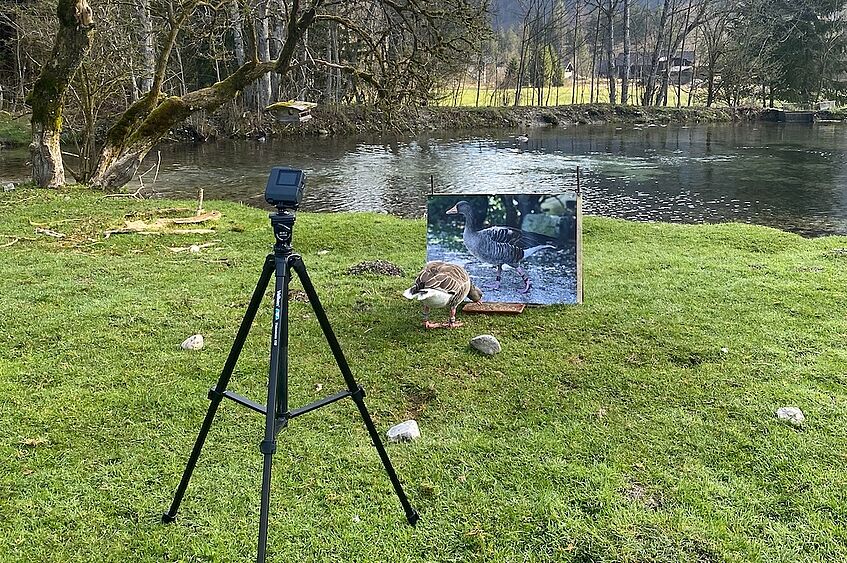
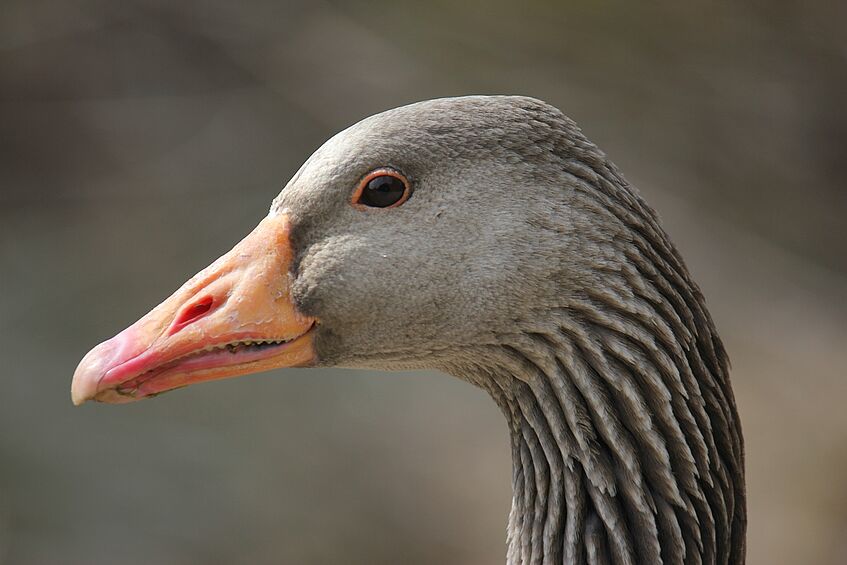
New paper on facial recognition in Greylag geese
Greylag Goose faces are individually distinct -- says AI and new research! Using 2D photos in meadows, greylag geese spent more time feeding next to a photo of their partner and, if anything, showed a threatening posture towards a photo of themselves. Konrad Lorenz could famously name each Greylag Goose in ‘his’ flock from a photograph. Confirming this anecdotal observation, we developed facial recognition software that can reliably (~ 97% accuracy) assign a goose face to a goose ID within a database, using bill morphology normalized during photo preparation. To explore conspecific detection of individuality cues, we erected life-size photos of geese and measured subjects’ responses to photos of themselves (unfamiliar goose), their partner, and another flock mate. Geese displayed significantly greater affiliative response to photos of their partners, providing evidence that geese can use two-dimensional images as cues to determine social category (partner/non-partner) and/or individual-level recognition. Our methods provide novel approaches to automatically detect and monitor geese and to test avian cognition. Our approach may also create new opportunities for species monitoring approaches more generally using photographic images and citizen-science engagement.
Publication in Journal of Ornithology:
Kleindorfer S, Heger B, Tohl D, Frigerio D, Hemetsberger J, Fusani L, Fitch WT, Colombelli-Négrel D (2023). Cues to individuality in greylag goose faces: algorithmic discrimination and behavioral field tests. Journal of Ornithology https://doi.org/10.1007/s10336-023-02113-4
New paper on urban kestrels

New paper on urban kestrels
New paper by MSc alumni Tom Nilles, Lukas Hochleitner and colleagues on urban kestrels showing that nestlings which were being raised in more urbanised areas displayed, unrelated to the burden of ectoparasites, a more bluish face colouration and an overall less intense colouration which was furthermore associated with a lower concentration of circulating carotenoids absorbed through the diet. Our results support the hypothesis that the entire urban food chain is carotenoid deprived and only prey of low quality with low carotenoid content is available (e.g., fewer carotenoids in urban trees -> insects -> small birds -> kestrels).
Publication in The Science of Nature:
Sumasgutner, P., Nilles, T., Hykollari, A., de Chapa, M.M., Isaksson, C., Hochleitner, L., Renner, S. & Fusani, L. (2023) Integument colouration and circulating carotenoids in relation to urbanisation in Eurasian kestrels (Falco tinnunculus). The Science of Nature, 110. https://link.springer.com/article/10.1007/s00114-023-01874-5
New paper: Absence of Referential Alarm Calls in Long‑term Allopatry from the Referent
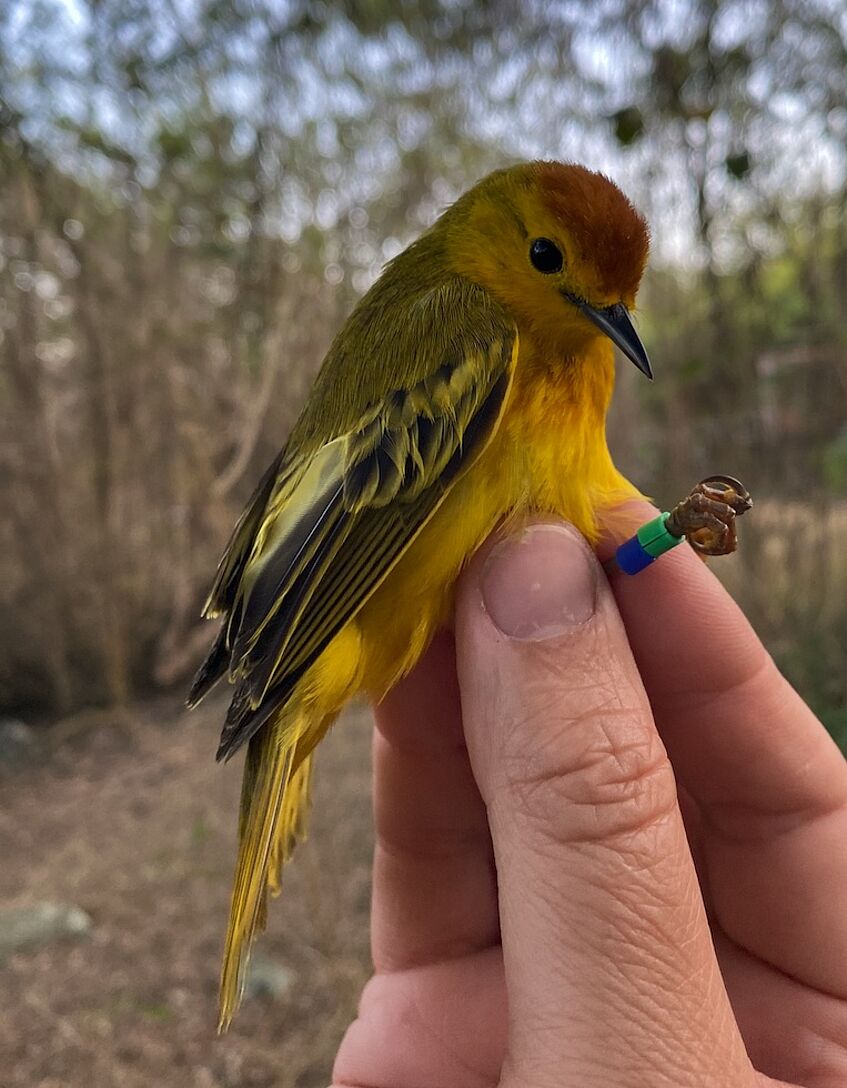
New paper: Absence of Referential Alarm Calls in Long‑term Allopatry from the Referent
Communication signals that denote specific objects in the environment, known as referential signals, are shaped by several ecologically important drivers, such as the extent of geographic overlap between signalers and referents, social learning, and direct experience with the referent. In this study, we measure vocal and physical response to familiar and unfamiliar sound stimuli in yellow warblers on the Galapagos Islands. The yellow warbler is a useful focal species to explore questions about the contexts in which referential alarm calls occur because of the specificity for production of its anti-parasitic “seet” calls and because multiple populations of yellow warblers exist with varying exposure to obligate brood parasites. Our study explores referential alarm calling in a context without personal or social experience/learning (due to ~ 300,000 year insular separation from mainland brood parasites), and the findings are starkly different, as no anti-parasitic calls were produced at all on the Galapagos Islands, compared to mainland warblers allopatric from brood parasites for only ~ 6000 years, which are still able to produce referential anti-parasitic calls.
Publication in Behavioral Ecology and Sociobiology:
Lawson S L, Fernandez-Duque F, Enos JK, Kleindorfer S, Ward MP, Gill SA, Hauber ME (2023). Absence of referential alarm calls in long-term allopatry from the referent: A casy study with Galapagos Yellow Warblers. Behavioral Ecology and Sociobiology 77:99 https://doi.org/10.1007/s00265-023-03372-0
New Alumna: Sophie Horlebein
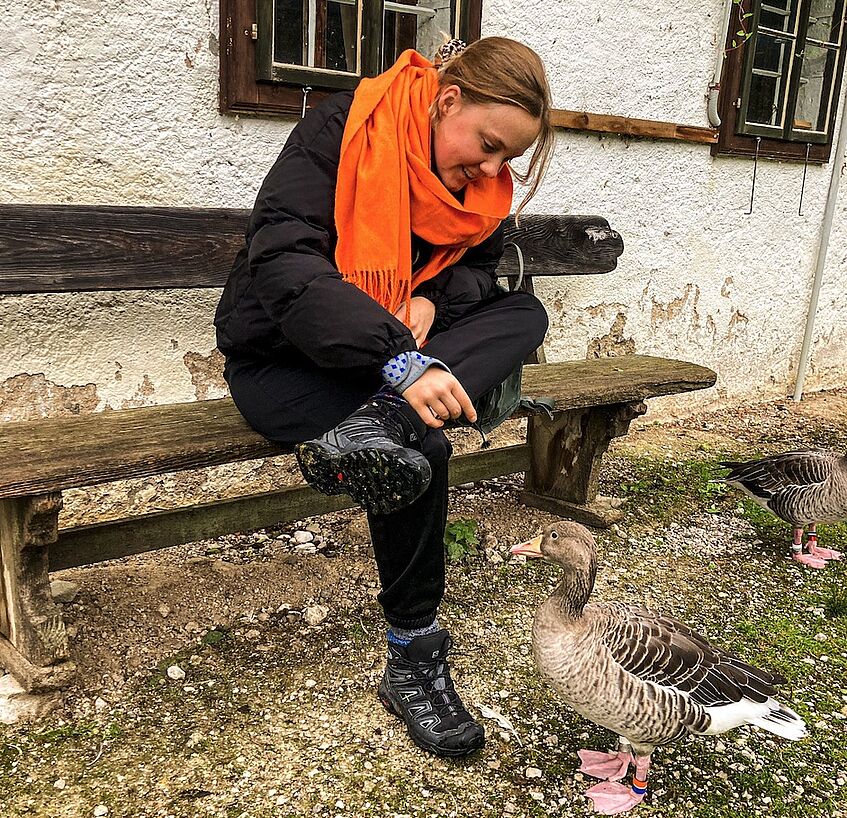
New Alumna: Sophie Horlebein
Congratulations to Sophie Horlebein on her graduation! Sophie has worked on "Egg turning behavior and hatching success in Greylag geese (Anser anser)", and thus completed the MSc program Behaviour, Neurobiology and Cognition at the University of Vienna. The thesis was supervised by PD Dr. Didone Frigerio (University of Vienna).
We wish you all the best for the future!
Welcome Varalika
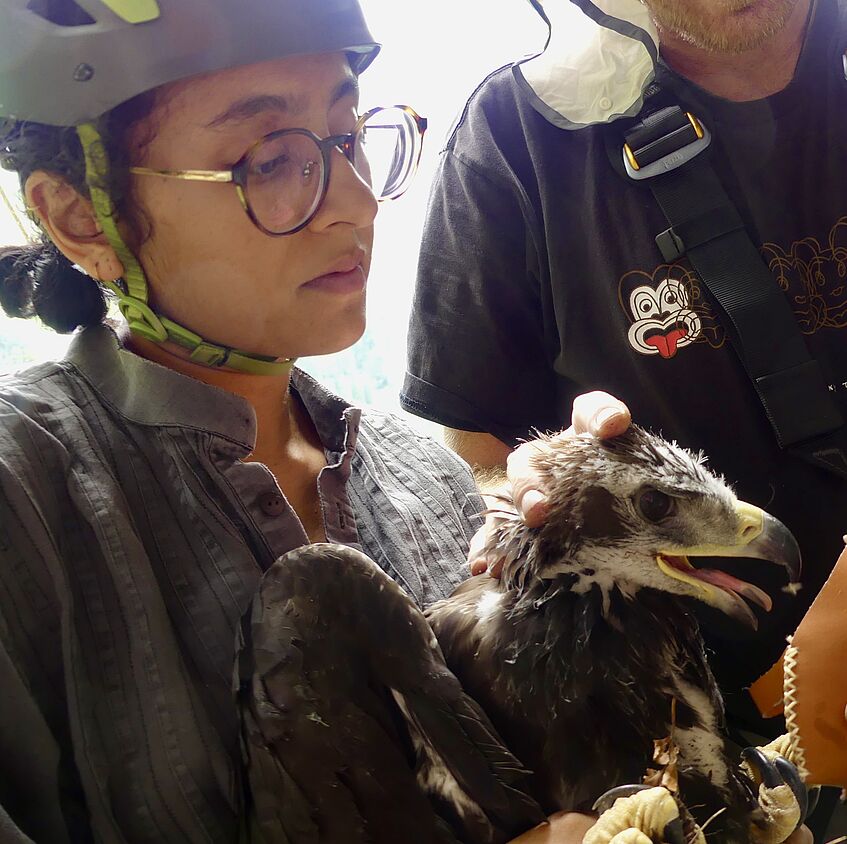
Welcome Varalika
We welcome our new PhD student Varalika Jain! Varalika is specializing in the analysis of movement and accelerometer data from GPS-tagged eagles, with a focus on understanding their responses to spatial and temporal patterns in human activity. She holds an MSc in Conservation Biology from the FitzPatrick Institute of African Ornithology, where she worked on common ravens and their exploitation of anthropogenic food sources. Varalika is passionate about developing open-source, accessible methods and code to analyse both animal and human movement data, and is particularly interested in applying bio-logging as a tool to tackle various conservation challenges.
New paper: Genetic Analysis of Golden Eagles (Aquila chrysaetos) from the Mongol-Altai: A Hotspot of Diversity and Implications for Global Phylogeography
In this paper we explore large-scale biogeographic patterns of Golden Eagles and specifically focus on the understudied Eastern Palearctic region. In West Mongolia, the Altai Kazakh eagle hunters traditionally collect wild Golden Eagle nestlings from eyries or trap juveniles on passage during seasonal movement and migration, providing us researchers with the unique opportunity to sample falconry eagles for population genetic analyses. We analysed a 402-bp fragment of the mitochondrial control region and 14 nuclear microsatellite loci in combination with previously published genetic data to assess phylogeographic patterns, levels of genetic diversity, and fine-scale structuring. Golden Eagles in the Mongol-Altai Mountains exhibited overall high levels of genetic diversity and mitochondrial DNA data across the species' geographic range revealed patterns that might reflect past climatic oscillations. Northern Europe may have been recolonized by Golden Eagles from the Eastern Palearctic region, and continental populations might still be connected by long-distance dispersers, but the Eastern Palearctic and Nearctic were likely connected via Beringia during the Quaternary and are today largely isolated from each other.
Publication in Journal of Raptor Research:
Nebel C, Haring E, Murgatroyd M, Sumasgutner SC, Gombobaatar S, Sumasgutner P, Zachos FE: Genetic Analysis of Golden Eagles (Aquila chrysaetos) from the Mongol-Altai: A Hotspot of Diversity and Implications for Global Phylogeography. J Raptor Res 2023, 57(3):1-16, 16. https://doi.org/10.3356/JRR-22-57
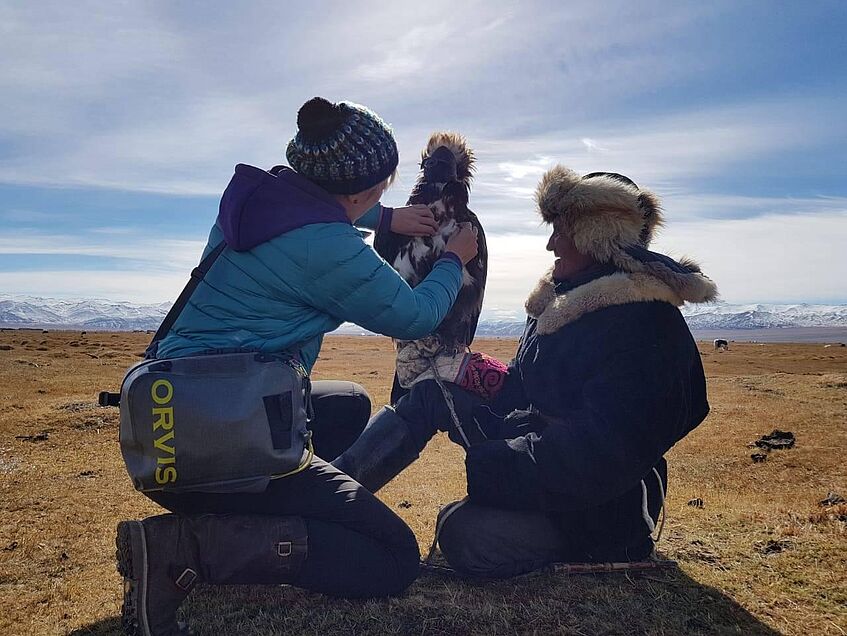
Welcome Avila

Welcome Avila
Avila is studying Ecology in the Master's program at the RPTU - University of Kaiserslautern-Landau and completed a semester abroad at the University of Vienna in the field of behavioral, neurological and cognitive biology. For her master's thesis at the KLF, she is investigating the predatory behavior of ravens in captivity at different developmental stages and in different contexts.
New paper: Smaller Australian raptors have greater urban tolerance
In this paper we use community science data sourced from eBird to investigate the urban tolerance of 24 Australian raptor species at a continental scale. We ranked species from positive to negative responses to urbanisation and gathered trait data from the published literature to assess whether certain traits (body mass, nest substrate, habitat type, feeding guild, and migratory status) were associated with urban tolerance. Out of the 24 species analysed, 13 species showed tolerance profiles for urban environments (positive response), and 11 species showed avoidance profiles for urban environments (negative response). Smaller raptors had greater urban tolerance than larger raptors why our study provides impetus to conserve native habitat and improve urban conditions for larger-bodied raptor species to conserve Australian raptor diversity. We will build on these findings with more in-depths studies on Nankeen kestrels, a small-bodied Australian falcon that inhabits human-modified and natural landscapes alike.
Publication in Scientific Reports:
Headland T, Colombelli-Négrel D, Callaghan CT, Sumasgutner SC, Kleindorfer S, Sumasgutner P: Smaller Australian raptors have greater urban tolerance. Scientific Reports 2023, 13(1):11559. https://doi.org/10.1038/s41598-023-38493-z
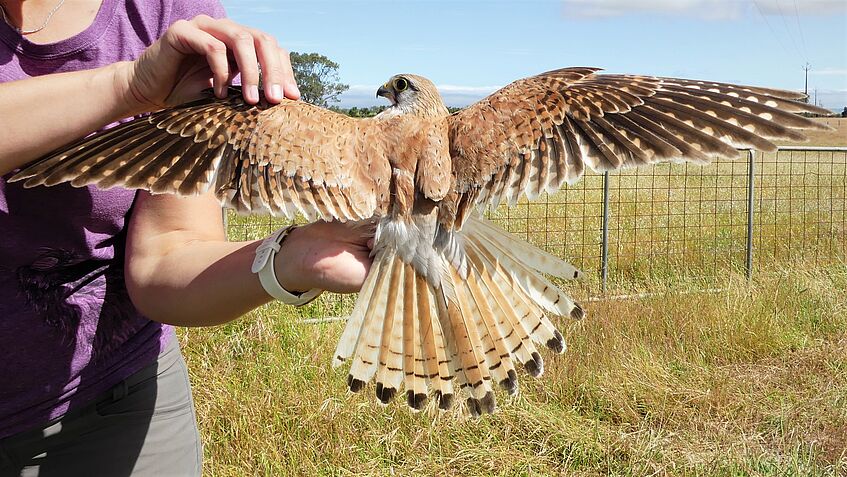
Picture: Sonia Kleindorfer
New paper: Age effects in Darwin's finch males
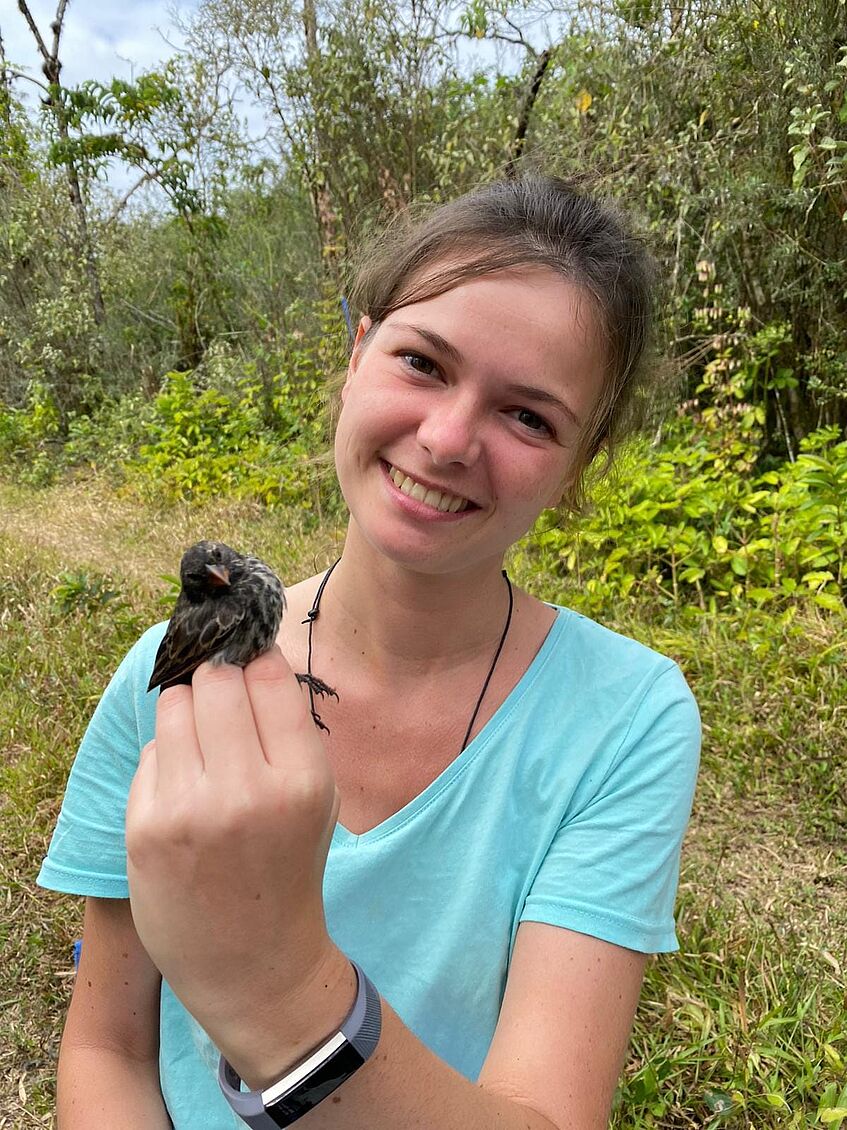
New paper: Age effects in Darwin's finch males
Older age can be beneficial and in animals, more experienced individuals may select different nesting areas that increase survival. This study on Darwin's finches tests if older males build safer nests in areas with greater vegetation cover and -- because vegetation cover is associated with biodiversity richness -- if these nest sites also have greater avian species diversity assessed using song. We compared patterns in Darwin’s Small Tree Finch (Camarhynchus parvulus) and Darwin’s Small Ground Finch (Geospiza fuliginosa) as males build the nest in both systems. We measured vegetation cover, nesting height, and con- vs. heterospecific songs per minute at 55 nests (22 C. parvulus, 33 G. fuliginosa). As expected, in both species, older males built nests in areas with more vegetation cover and these nests had less predation. A novel finding is that nests of older males also had more heterospecific singing neighbors. Future research could test whether older males outcompete younger males for access to preferred nest sites that are more concealed and sustain a greater local biodiversity. The findings also raise questions about the ontogenetic and fitness consequences of different acoustical experiences for developing nestlings inside the nest.
Publication in Journal of Ornithology:
Huge AC, Adreani NM, Colombelli-Négrel D, Akçay C, Common LK, Kleindorfer S (2023). Age effects in Darwin’s finches: older males build more concealed nests in areas with more heterospecific singing neighbours. Journal of Ornithology. https://doi.org/10.1007/s10336-023-02093-5
New Alumna: Gabriela Bernatovic
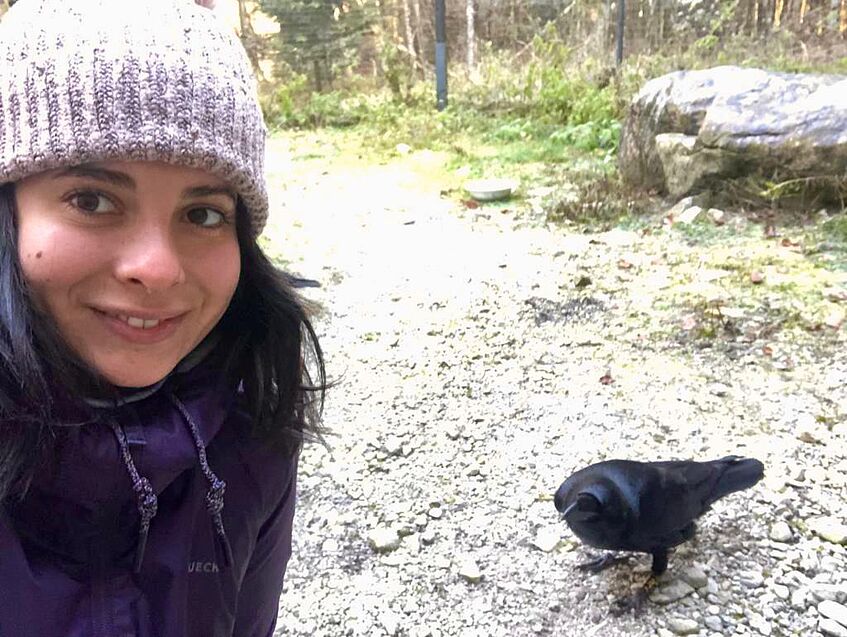
New Alumna: Gabriela Bernatovic
Congratulations to Gabriela on her graduation! Gabriela has worked on “How does family size affect foraging success and agonistic behavior within a non-breeding group of free-flying ravens”, and thus completed the MSc program Behaviour, Neurobiology and Cognition at the University of Vienna. The thesis was supervised by Prof. Dr. Thomas Bugnyar and Ass.-Prof. Dr. Petra Sumasgutner (University of Vienna).
We wish you all the best for the future!
New Alumnus: Alexander Ruf
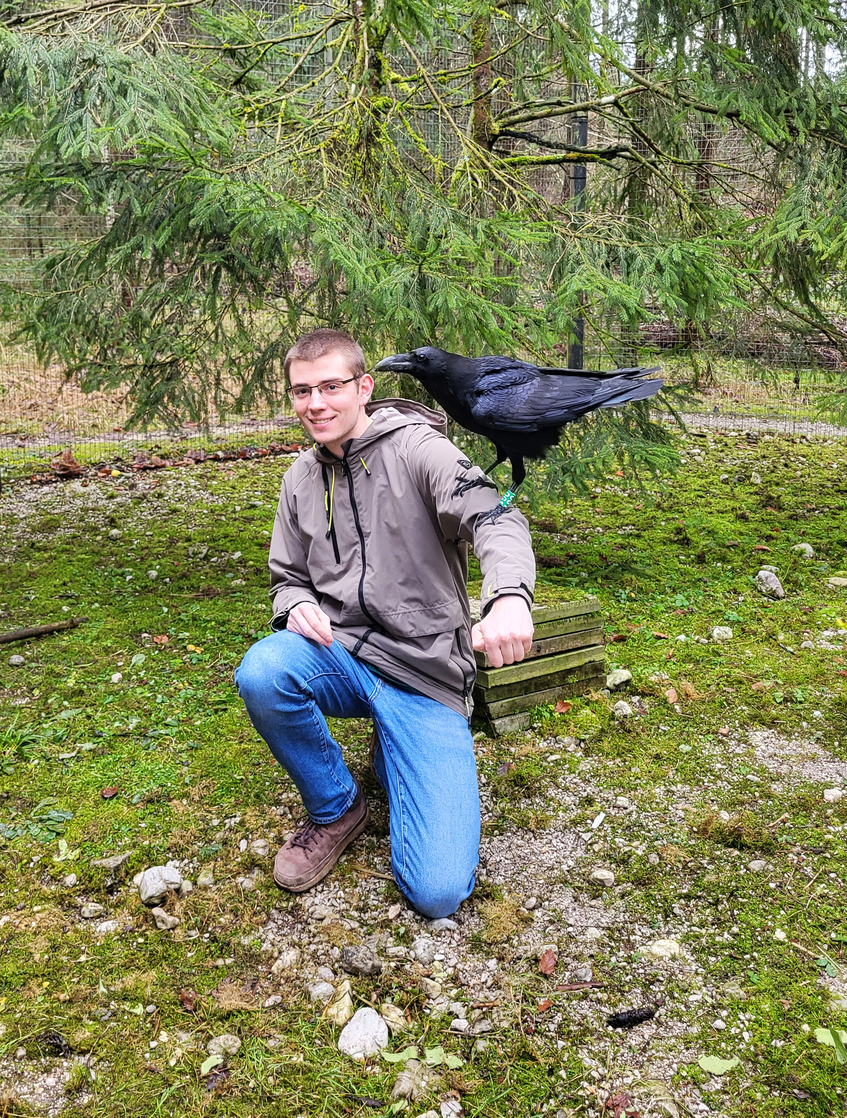
New Alumnus: Alexander Ruf
Congratulations to Alexander Ruf on his graduation! Alex has worked on "Effects of early social experiences on exploration and foraging in juvenile ravens (Corvus corax)", and thus completed the MSc program Behaviour, Neurobiology and Cognition at the University of Vienna. The thesis was supervised by Prof. Dr. Thomas Bugnyar (University of Vienna).
We wish you all the best for the future!
New paper: personality traits are consistent within but not across life stages in a wild songbird

New paper: personality traits are consistent within but not across life stages in a wild songbird
When does personality become a consistent trait across different life stages? To answer this, we measured personality in nestling, fledgling, and adult birds in the superb fairy-wren (Malurus cyaneus). We assessed (1) boldness (response to human handling, at all three stages), (2) exploration (response to a novel environment, in fledglings and adults) and (3) aggressiveness (response to mirror-image stimulation, in fledglings and adults). Personality differences were often consistent within life stages but never across them. By adulthood, all three personality traits were repeatable. Our results suggest that long-term personality traits may not become entrenched until adulthood in this species.
Publication in Behaviour:
Katsis, A., Common, L., Hauber, M., Colombelli-Négrel, D., & Kleindorfer, S. (2023). From nestling to adult: personality traits are consistent within but not across life stages in a wild songbird, Behaviour (published online ahead of print 2023). doi: https://doi.org/10.1163/1568539X-bja10224
We would like to introduce our new PostDoc: Dr. Lauren Common
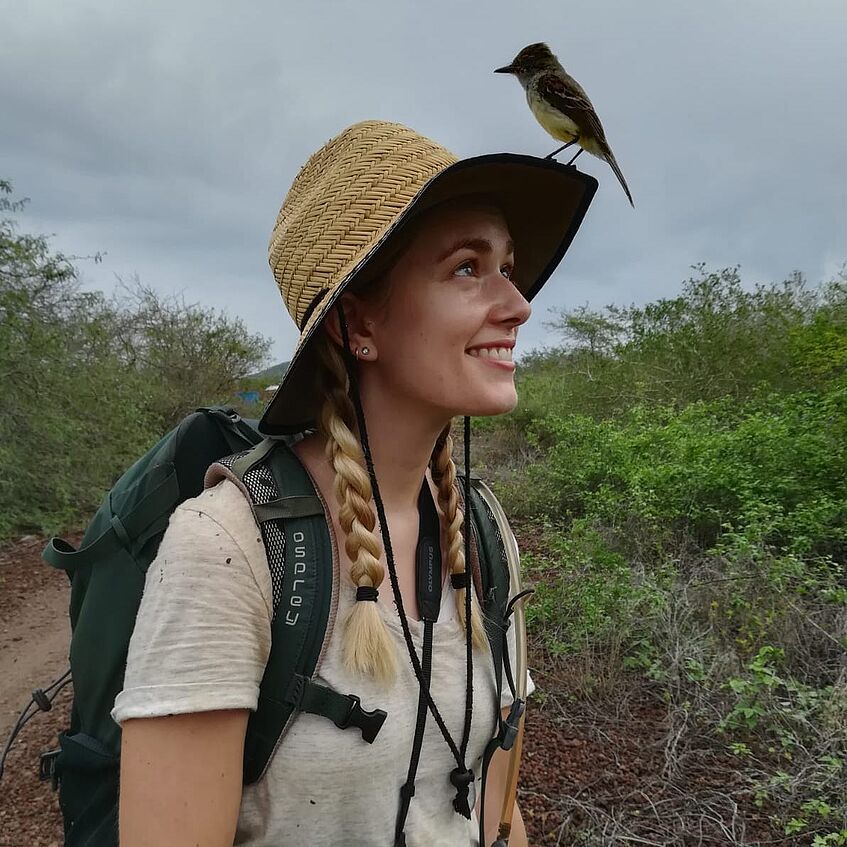
We would like to introduce our new PostDoc: Dr. Lauren Common
We warmly welcome Lauren and look forward to working with her!
Dr. Lauren Common is a parasitologist and ornithologist fascinated by invasive species, reproductive behaviour and personality in birds and insects. Lauren recently completed her PhD at Flinders University supervised by Prof. Sonia Kleindorfer and colleagues. Her thesis explored the changing host-parasite dynamics between Darwin's finches and the invasive blood-sucking Avian Vampire Fly (Philornis downsi). As a part of her postdoc, Lauren will continue her research into the genetics of the Avian Vampire Fly across the archipelago, and its consequences for the conservation of the avifauna of the Galapagos.
Visit Dean's office and Dean Team
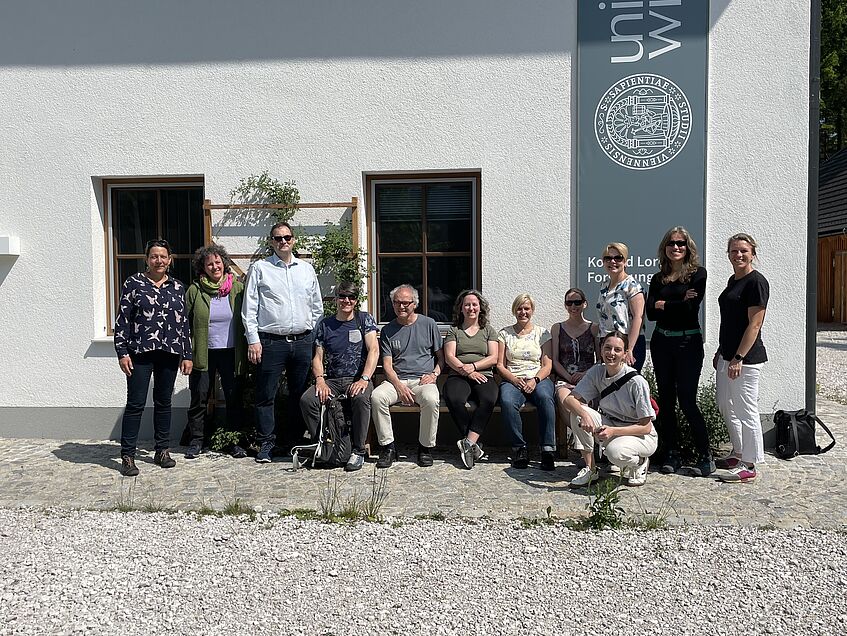
Visit Dean's office and Dean Team
We were very pleased about the visit of the Dean's team and the team of the Dean's office of the Faculty of Life Sciences of the University of Vienna!
New paper: Impact of drones on fitness and energy demand in koalas
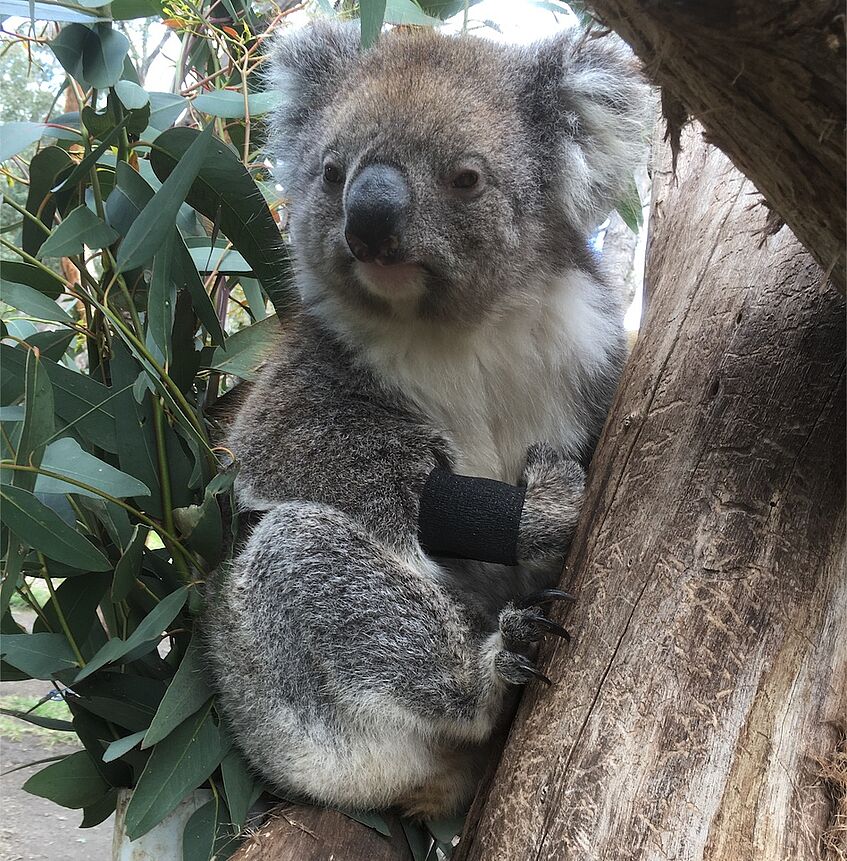
Picture: Diane Colombelli-Negrel
New paper: Impact of drones on fitness and energy demand in koalas
Koala are suffering population crashes after the devastating bushfires in Australia in recent years, and urgent conservation monitoring is needed. Drones can be useful to monitor species across large landscapes and difficult-to-access areas. But what impact do drones have on animals? We developed a non-invasive methodology to measure heart rate in koalas (Phascolarctos cinereus) using a Fitbit and investigated the behavioural (vigilance behaviour) and physiological (heart rate and breathing rate) responses of captive koalas to drones. We showed for the first time that heart rate values in koalas can be accurately obtained with a Fitbit. Koalas responded to a drone flight conducted 15 m above their heads with a short-term increase in vigilance, but no change in heart rate or breathing rate. Our results suggest that drones may not have long-term detrimental effects on koalas’ fitness or energy demands and adds to the growing literature investigating animals’ responses to drones to help develop best practices for drone monitoring.
Publication in Applied Animal Behaviour Science:
Colombelli-Négrel, D., Sach, I.Z., Hough, I., Hodgson, J.C., Daniels, C.B. and Kleindorfer, S., 2023. Koalas showed limited behavioural response and no physiological response to drones. Applied Animal Behaviour Science, p.105963. doi.org/10.1016/j.applanim.2023.105963
Visit by Dr. Barbara Klump
We enjoyed a visit by Dr. Barbara Klump, the newest tenure track professor at the University of Vienna. Barbara studies tool use and innovation in birds!
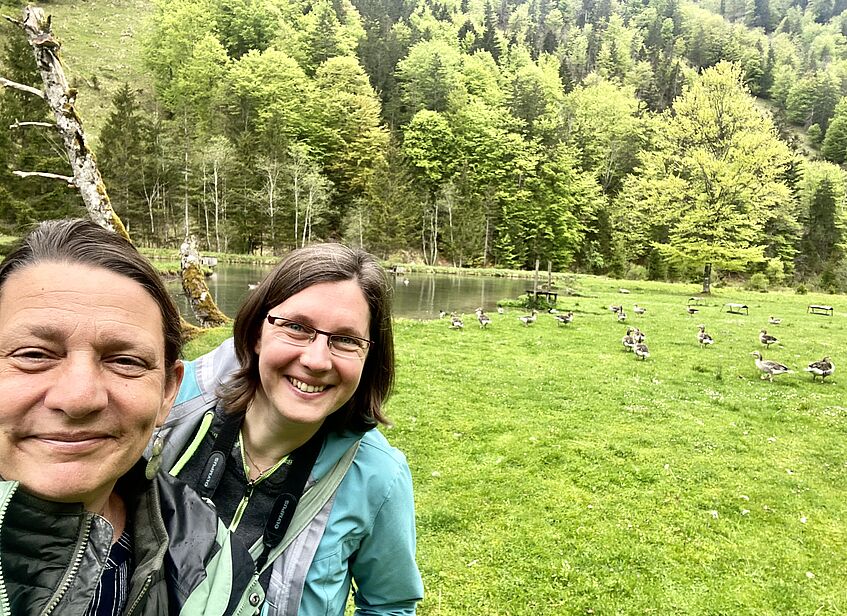
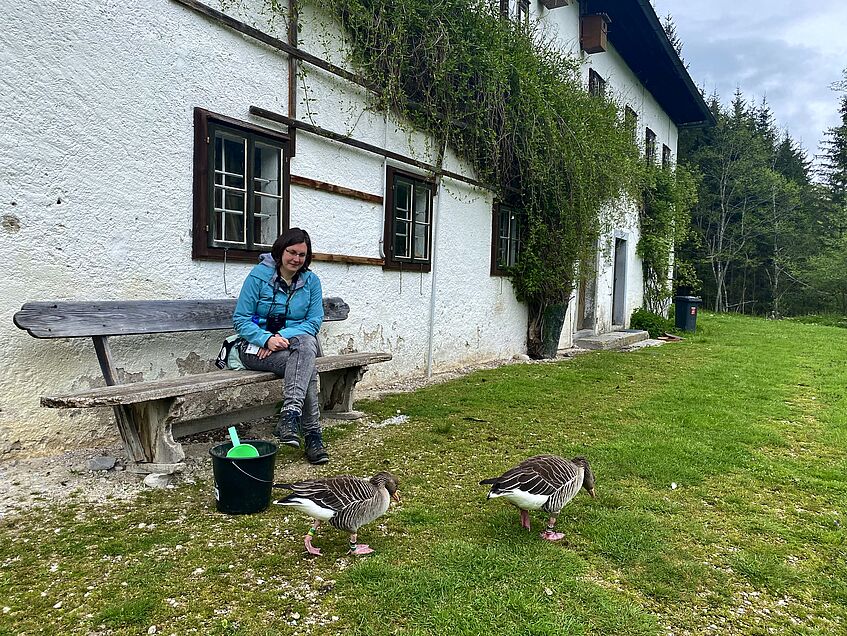
New paper: Quality of contributions to bird monitoring by Citizen Scientists
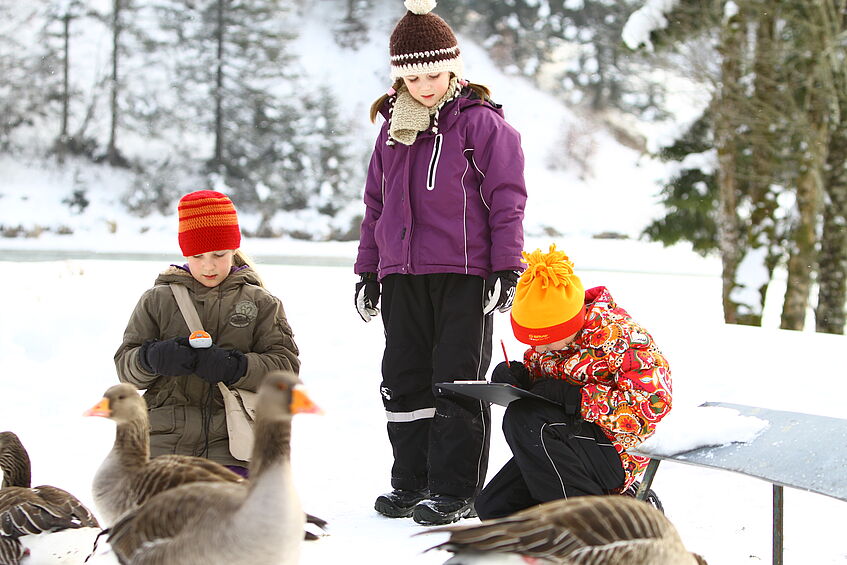
Picture: Daniel Fessl
New paper: Quality of contributions to bird monitoring by Citizen Scientists
Long-term monitoring of data on animal behavior is an important source for science to develop new, testable hypotheses. For the collection of such long-term data, the involvement and participation of citizen scientists is an asset for science and society. Verena Pühringer-Sturmayr, Didone Frigerio and colleagues have evaluated the reliability of the data collected in this way in a study. Together with citizen scientists, they investigated the spatial distribution of three model bird species (gray geese, wood bustards and common ravens) and evaluated the accuracy of the data collected by the volunteers.
Publication in Environmental Research Letters:
Pühringer-Sturmayr V, Rittenschober J, Gegendorfer G, Kleindorfer S, Frigerio D (2023). Assessing quality of contributions to avian monitoring by non-scientists: a case study on individually banded wild birds. Environ. Res. Lett. 18. https://doi.org/10.1088/1748-9326/acd073
New paper: Darwin’s finches in human-altered environments sing common song types and are more aggressive
Human behavior can have strong effects on animal behavior. A major gap in knowledge is whether human activity affects culturally transmitted traits in animals. In songbirds, song is a cultural trait because it is learned from a tutor every generation anew and passed on the the next generation. In this study in Darwin's finches on the Galapagos, we investigated whether songs (a cultural trait) and aggressiveness (a personality trait) differed along a gradient of human activity levels. We found effects of human activity on both variables: birds produced the common syllable type in areas with more human activity, and these birds were also more aggressive. Our results support the idea that human-impacted environments may select jointly for specific behavioral phenotypes such as aggression as well as common cultural traits.
Publication in Frontiers in Ecology and Evolution:
Colombelli-Négrel D, Akcay C, Kleindorfer S (2023). Darwin’s finches in human-altered environments sing common song types and are more aggressive. Frontiers in Ecology and Evolution 11. https://doi.org/10.3389/fevo.2023.1034941
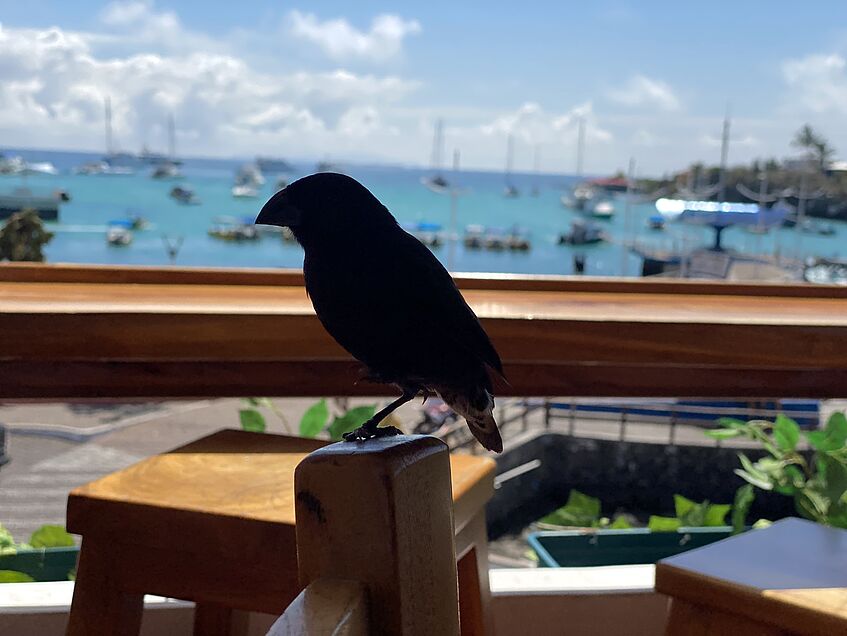
Picture: S. Kleindorfer
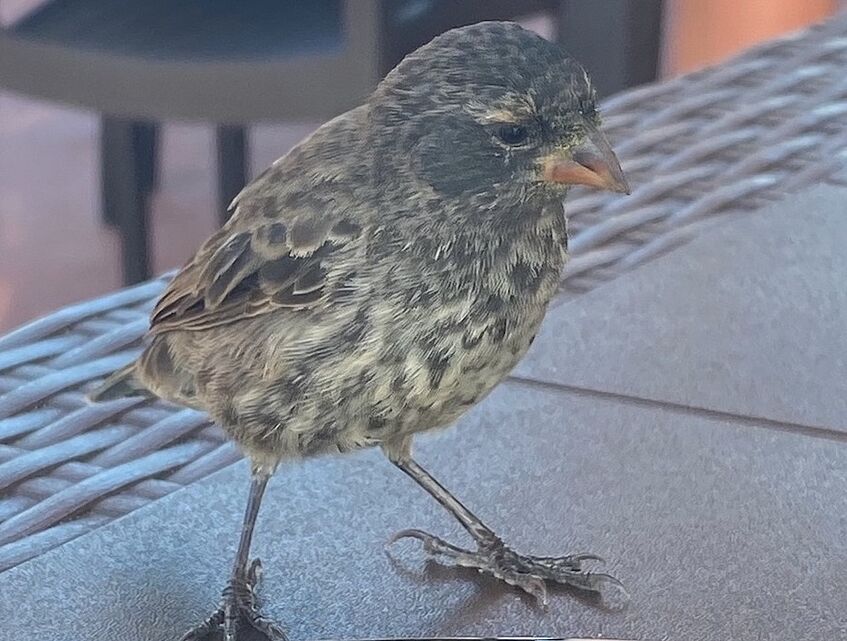
Picture: S. Kleindorfer
New paper: How Warming Temperatures Affect Breeding Behavior in Graylag Geese
The authors investigated if and how environmental changes, such as a long-term increase in temperature and milder winters, affect the reproduction of a population of graylag geese. To do that, data for 29 years were collected — by monitoring temperature, the number of eggs laid, and the number of young birds that survive to adulthood. A temperature increase over time (an effect of climate change) was found, and that higher average temperatures had a positive effect on the reproductive success of the geese.
Publication in "Frontiers for young minds":
Frigerio D, Hemetsberger F, Sumasgutner P, Kotrschal K, Kleindorfer S and Hemetsberger J (2023) How Warming Temperatures Affect Breeding Behavior in Graylag Geese. Front. Young Minds. 11:922688. doi: 10.3389/frym.2023.922688
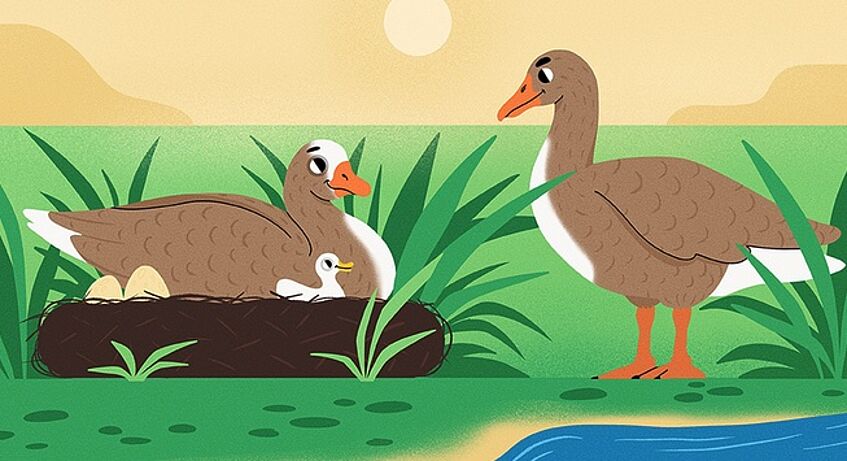
Picture: FYM
Welcome Jakob

Welcome Jakob
We welcome our new master's student Jakob Schorn who is studying Behaviour, Neurobiology and Cognition (Master) at the University of Vienna. For his Master's thesis Jakob will investigate Species -diversity and -dominance among secondary hole nesting birds with varying degrees of human presence at three different nesting sites near the Konrad Lorenz Research Center.
Welcome Iraí

Welcome Iraí
We welcome our new master's student Iraí Paetow de Jesus who is studying Behaviour, Neurobiology and Cognition (Master) at the University of Vienna. For his Master's thesis Iraí will investigate whether greylag geese are able to distinguish life-size images of themselves, mates and other conspecifics. He also wants to find out if the agonistic behaviour of males is more common during the mating season.
Happy Easter!
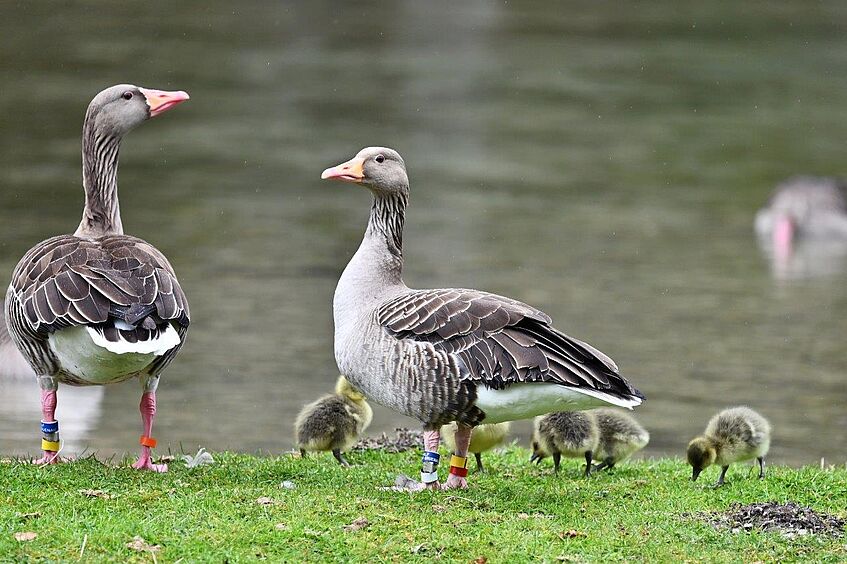
Picture: J. Hemetsberger
Happy Easter!
Happy Easter and wonderful holidays!
Welcome Johanna

Welcome Johanna
We welcome our new master's student Johanna Weber, who is studying Behaviour, Neurobiology and Cognition (Master) at the University of Vienna. For her Master's thesis Johanna is investigating "Occupancy preference and breeding success in secondary hole-nesting birds depending on nest box material and familiarity".
Welcome Alper
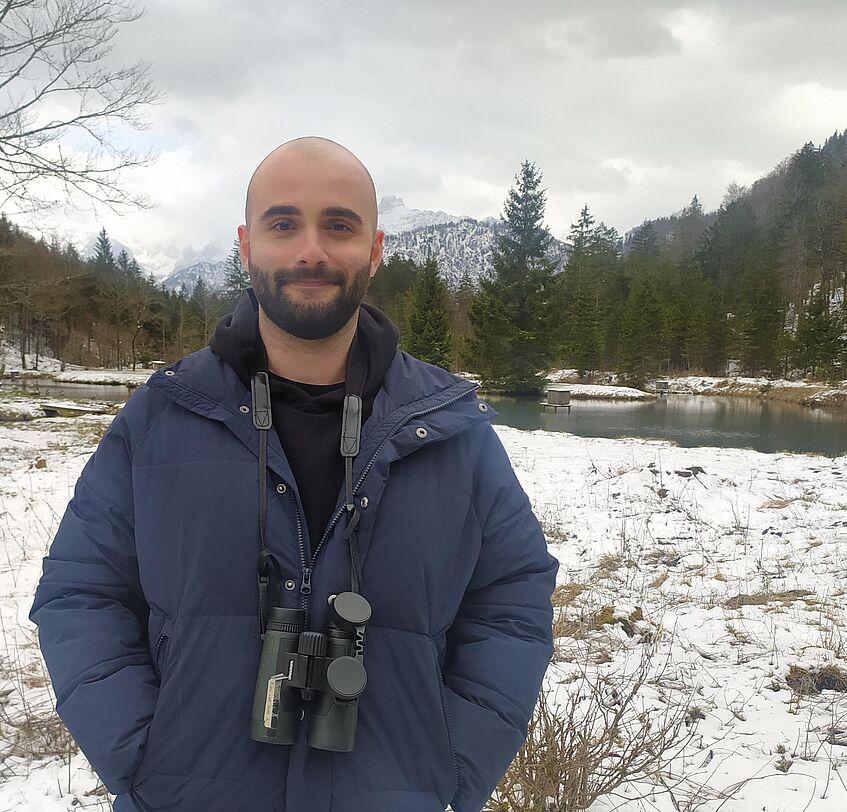
Welcome Alper
We welcome our new PhD student Alper Yelimlieş! For his PhD Alper will be focussing on linking song and personality in Darwin's tree finches.
Welcome Arnout

Welcome Arnout
Arnout is studying Biology at Wageningen University & Research in the Netherlands, with a focus on behavioural ecology. Back in the Netherlands, he did his master thesis on the alarm calls of magpies. Arnout is at the KLF for a research internship, where he will study the behaviour of ravens with the topic: Effects of novelty on feeding behaviour of ravens.
Welcome Marina

Welcome Marina
We welcome our new master's student Marina Gehbauer, who is studying Biology and Environmental Education (Master) at the University of Vienna. For her Master's thesis Marina is analysing whether the informal contact with Eurasian kestrels (Falco tinnunculus) triggers positive emotions and might increase awareness for conservation issues and willingness to engage in conservation activities.
10th anniversary: Biologicum Almtal Sept. 28 - Oct. 1
We are pleased to welcome you to the Biologicum Almtal 2023 with theme “Pioneering Spirit and Cooperation”.
2023 marks the 50th anniversary of the Konrad Lorenz Research Center and the 10th anniversary of the Biologicum Almtal. We honour the pioneering spirits of the scientists of the past centuries who paved the way for understanding complex animal societies.
In addition to a much better understanding of the genetic foundations of life, over the past century we have gained tremendous insights into individual differences on the one hand and the variance around social organization on the other. In this year's Biologicum Almtal, we will highlight human partnerships that shape fundamental knowledge shifts in the natural sciences as well as showcase model systems from the animal kingdom that opened our eyes to societies with leaders and followers and high levels of cooperation.
Biologicum Almtal and Junior Biologicum will take place under the scientific lead of Sonia Kleindorfer and Didone Frigerio, the general organization will be done by staff members of the Konrad Lorenz Research Center in cooperation with the Internationale Akademie Traunkirchen.
We are looking forward to a lively exchange in the beautiful, early autumn Almtal, with exciting lectures and discussions, eventful excursions, a pub quiz as an entertaining evening program accompanied by culinary delights.
More information and registration (coming soon):
https://biologicum-almtal.univie.ac.at/
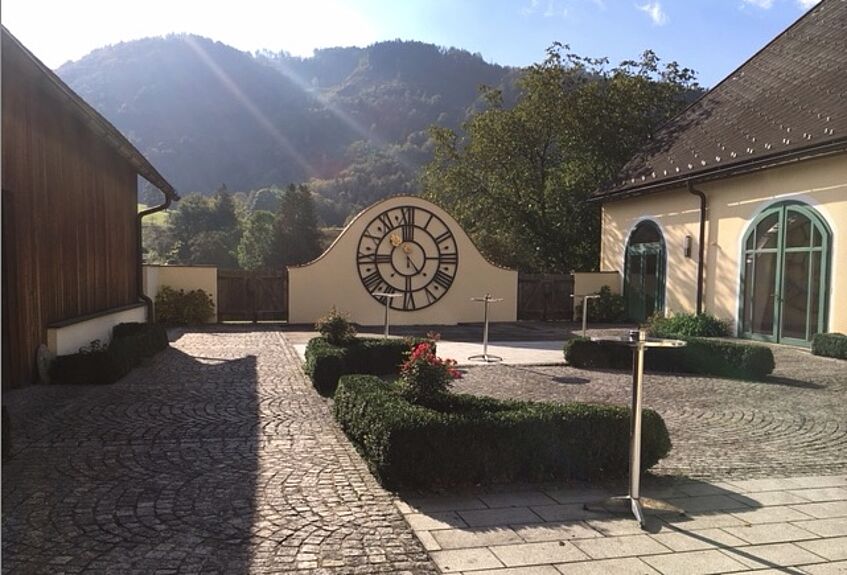
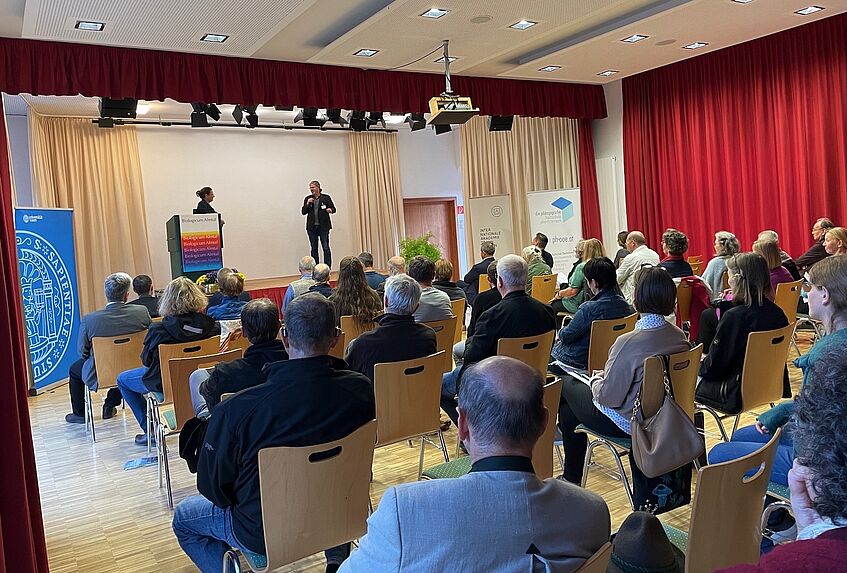
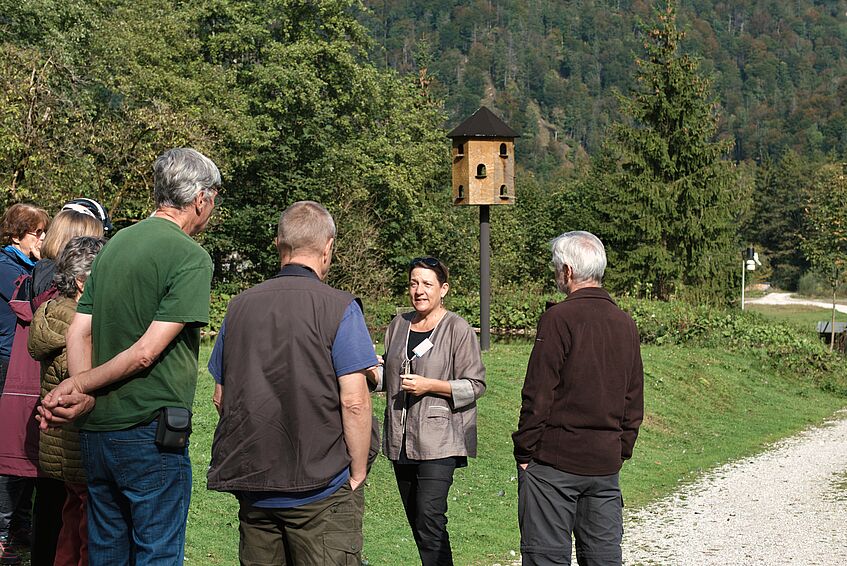

New paper: Prenatal sound experience affects song preferences in male zebra finches
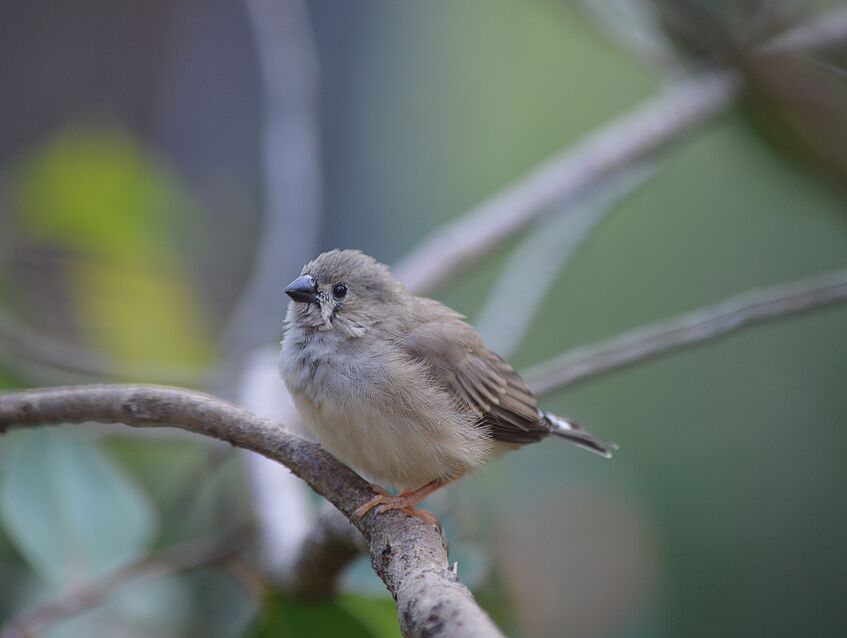
Picture: Andrew Katsis
New paper: Prenatal sound experience affects song preferences in male zebra finches
Australian zebra finches (Taeniopygia castanotis) produce a high-pitched ‘heat call’ when ambient temperatures are high. Previous research suggests that hearing these heat calls inside the egg can alter an offspring’s development and behaviour after hatching, including from which adults they learn to sing. In this study, Andrew Katsis and colleagues artificially incubated male zebra finch embryos while exposing them to recordings of either heat calls (treatment) or contact calls (control). After hatching, offspring were raised to adulthood in a colony environment, then their song preferences were tested using a choice apparatus. Adult males had different song preferences depending on the sounds they heard before hatching: treatment birds preferred nonpaternal song over their social father's song, while control birds showed no preference.
Publication in Animal Behaviour:
A.C. Katsis, A.T.D. Bennett, K.L. Buchanan, S. Kleindorfer & M.M. Mariette (2023) Prenatal sound experience affects song preferences in male zebra finches. Animal Behaviour, 199, 1-9. doi: doi.org/10.1016/j.anbehav.2023.02.008
Congratulations to Anna Fabbri: Gwinner-Award for best poster
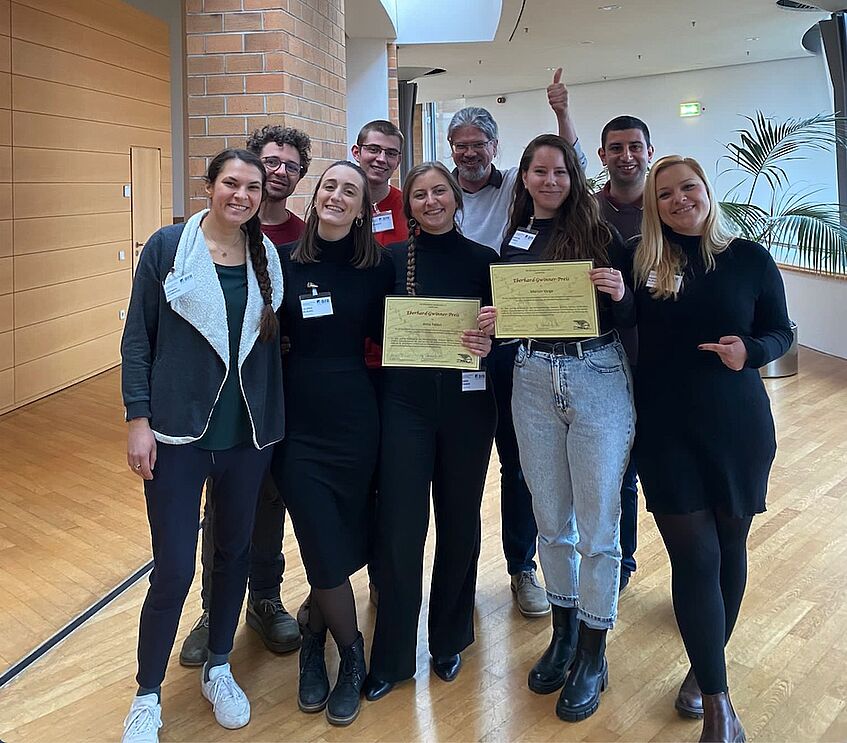
Congratulations to Anna Fabbri: Gwinner-Award for best poster
Big congratulations to Anna Fabbri for receiving the Eberhard-Gwinner-Award for the best poster. The Gwinner Award for outstanding scientific presentations is awarded annually to young scientists during the annual meeting of the Ethological Society.
New publication on effects of rising temperatures and urbanisation on birds
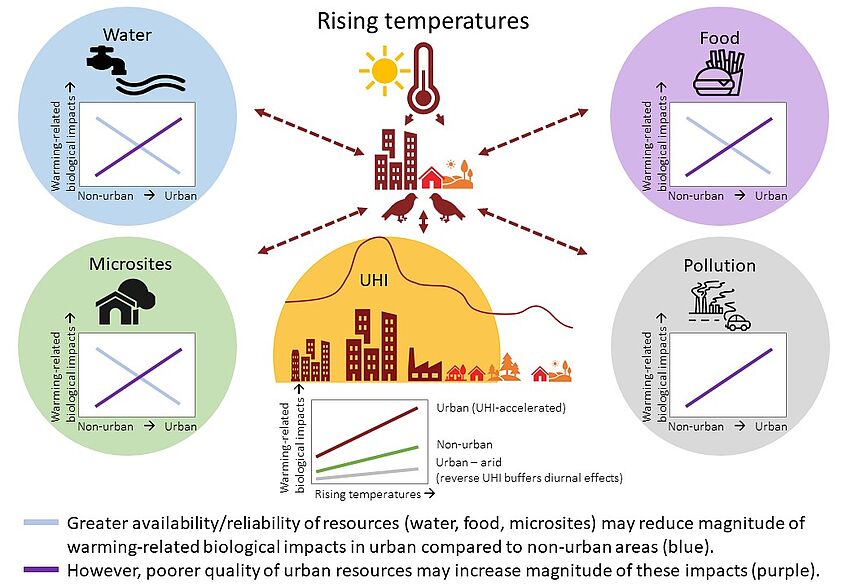
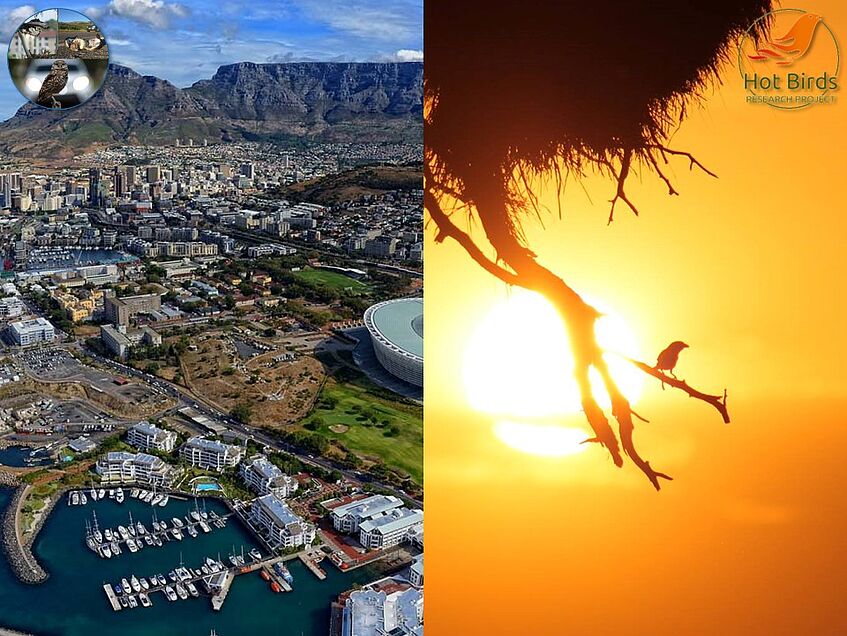
New publication on effects of rising temperatures and urbanisation on birds
In this article, we synthesise our current understanding of the potential mechanisms that could affect how species respond to combined effects of urbanisation and rising temperatures, with a focus on avian taxa. Resource availability/reliability (blue) and quality (purple) differ between urban and non-urban areas and will interact with rising temperatures to influence the magnitude of biological impacts of climate change. Specifically, the urban environment could both buffer and exacerbate biological impacts of rising temperatures. Greater water availability/reliability in cities buffers thermoregulatory costs, while poorer urban water quality exacerbates warming-related increase in disease risk and pollutants reduce thermoregulatory capacity. Greater food availability and artificial light at night buffers foraging-thermoregulation trade-offs in cities, while warming-related declines in food quality (e.g., carotenoids) are exacerbated in cities. Urban nest- and roost sites are poorly thermally-buffered, hence of lower quality, than non-urban sites, while more shade is available in cities, especially in arid regions. Finally, effects of rising temperatures are likely exacerbated by air pollution and vice versa, with impacts on the redox system and immune system. The urban heat island effect (UHI) under climate change will likely continue to lead to relaxed thermoregulatory costs in temperate, continental and polar cities during winter, while exacerbating thermoregulatory costs in summer and in tropical cities compared to non-urban environments, while cities in arid zones often have a reversed heat island effect, buffering thermal costs. We discuss potential interactive effects to motivate future in-depth research on this critically important, yet overlooked, aspect of global change biology.
Publication in Global Change Biology:
Sumasgutner, P., Cunningham, S. J., Hegemann, A., Amar, A., Watson, H., Nilsson, J. F., Andersson, M. N., & Isaksson, C. (2023). Interactive effects of rising temperatures and urbanisation on birds across different climate zones: A mechanistic perspective. Global Change Biology. https://doi.org/10.1111/gcb.16645
New publication on an unusual case of adoption by a pair of Superb Fairy-wrens
Adoption is a form of alloparenting in which individuals raise offspring other than their own. In this paper, we describe an unusual case of adoption by a pair of Superb Fairy-wrens (Malurus cyaneus) at Cleland Conservation Park, South Australia, in December 2020. Despite already raising three fledglings of their own, the breeding pair adopted an additional male fledgling from a neighbouring territory. The adoptee, named GOOx (Green Orange Orange Alu), was regularly fed by his adoptive parents and remained in his new territory for at least seven months. Although adoption may have an adaptive function in some birds, including in cooperatively breeding species, this instance may simply be a case of reproductive error, in which parents were unable to distinguish between related and unrelated juveniles.
Publication in Australian Field Ornithology:
Katsis, A.C., Evans, C., Common, L.K., Colombelli-Négrel D. & Kleindorfer S. (2022). Intraspecific fledgling adoption by a pair of Superb Fairy-wrens Malurus cyaneus. Australian Field Ornithology, 40, 49-55. doi: https://doi.org/10.20938/afo40049055
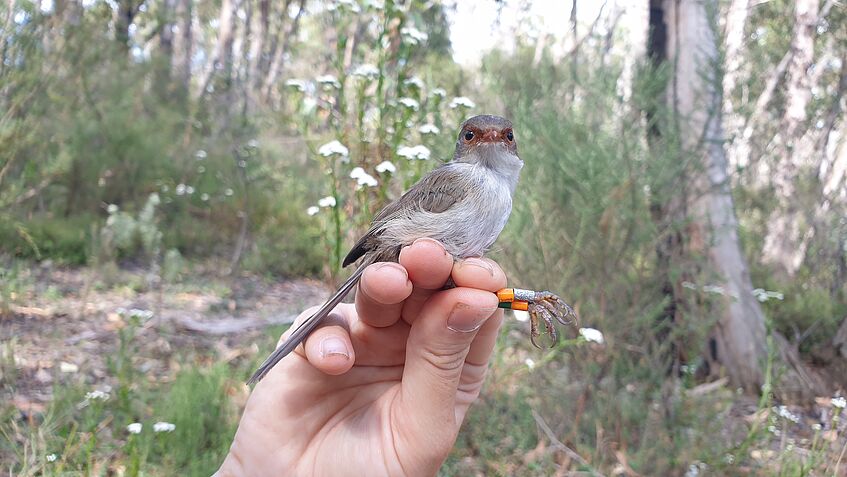
Picture: Lauren K. Common
Thomas Bugnyar wins "Science Book of the Year" Award 2023
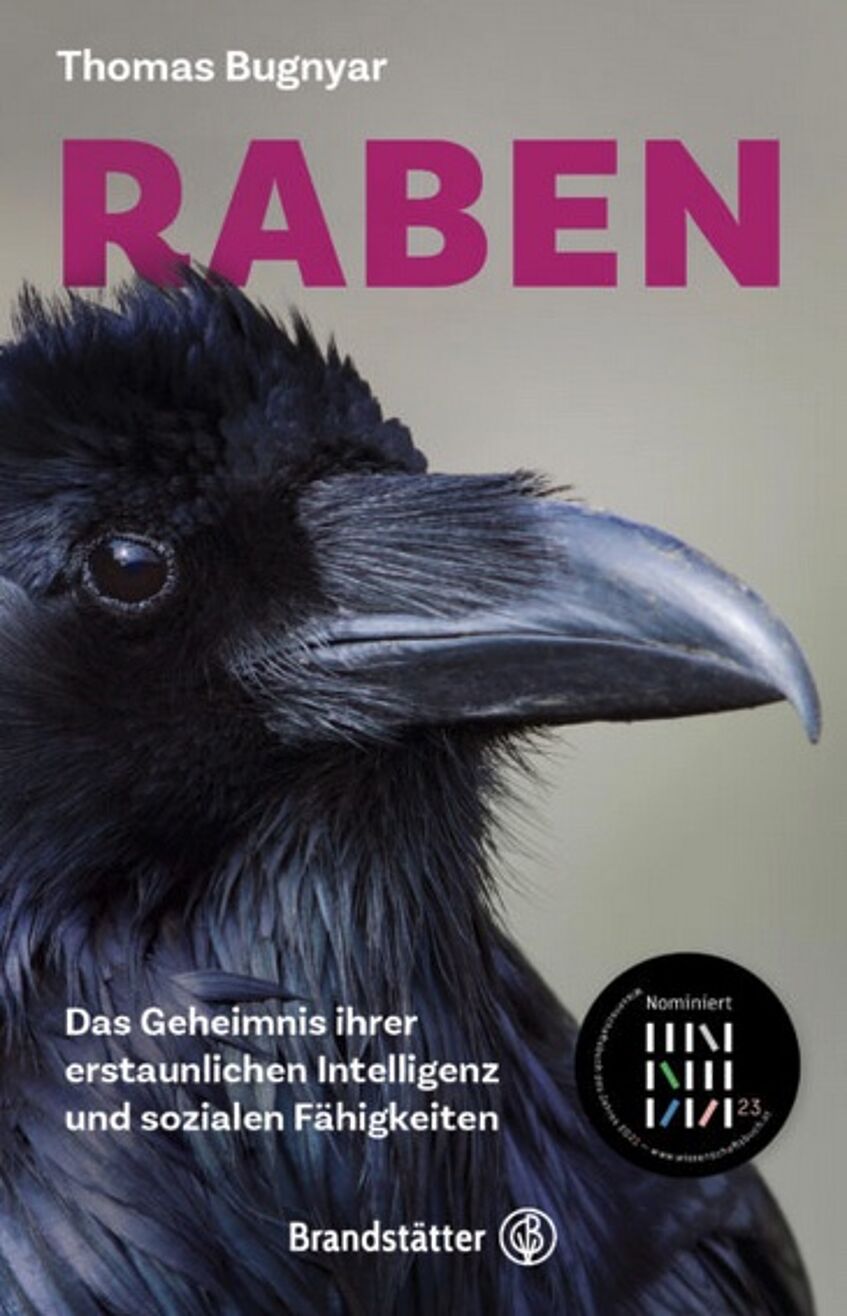
Thomas Bugnyar wins "Science Book of the Year" Award 2023
Congratulations to Prof. Thomas Bugnyar. His book "Raben. Das Geheimnis ihrer erstaunlichen Intelligenz und sozialen Fähigkeiten" was awarded "Science book of the year" 2023.
New Alumna: Tatjana Vogel

New Alumna: Tatjana Vogel
Congratulations to Tatjana Vogel on her graduation! Tatjana has worked on the topic "Occupancy preferences and breeding ecology of secondary hole-nesting birds depending on the material of the nest boxes and on human presence", and thus completed the MSc program Behaviour, Neurobiology and Cognition at the University of Vienna. The thesis was supervised by PD Dr. Didone Frigerio (KLF, University of Vienna).
We wish you all the best for the future!
New publication on the conservation value of raptor monitoring
For this paper, we conducted an online survey to quantify where raptor populations are actively monitored, with the aim to build a worldwide data base that will not only facilitate large-scale collaborations but also survey standardisation to make data across the globe comparable. The questionnaire was distributed in English and Spanish and was answered by 527 individual researchers collecting data in 114 countries on 322 species (58% of raptor species). The top three most-studied species were the Peregrine Falcon (Falco peregrinus), Golden Eagle (Aquila chrysaetos), and American Kestrel (Falco sparverius), whereby mainly nest occupancy surveys, behavioural observations and producivity measures are collected. Our work - once again - underlines the urgent need to prioritise understudied raptor species, especially in tropical areas and in the Global South.
Publication in Journal of Raptor Research:
McClure CJW, Vargas FH, Amar A, Concepcion CB, MacColl C, & Sumasgutner P 2022: Conservation Letter: Monitoring Raptor Populations – A Call for Increased Global Collaboration and Survey Standardization. Journal of Raptor Research 57. doi:10.3356/jrr-22-68
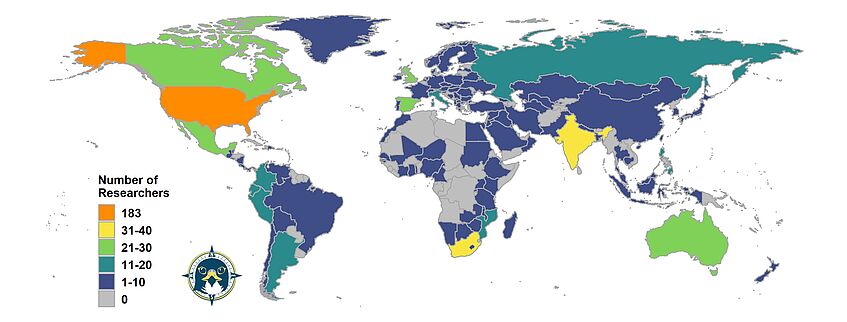
Graphical abstract: Chris McClure
New publication on the diet of the Silvery Grebe
In this short note, we report anecdotal information on the diet of Podiceps occipitalis juninensis, which was obtained based on the analysis of the stomach contents of four individuals found dead in two high Andean lagoons in Ecuador. Remains of Malacrustacea crustaceans of the genus Hyalella and the Insect order Odonata, were the most abundant. In addition to feather fragments present in all the samples, that could be related to digestive processes.
Publikation in Revista Ecuatoriana De Ornitología:
García Loor, J., Espinosa, R., Alarcón, I., Luzuriaga, N., & Guevara, E. (2022). NOTAS SOBRE LA DIETA DEL ZAMBULLIDOR PLATEADO NORTEÑO Podiceps occipitalis juninensis. Revista Ecuatoriana De Ornitología, 8(2). https://doi.org/10.18272/reo.v8i2.2477
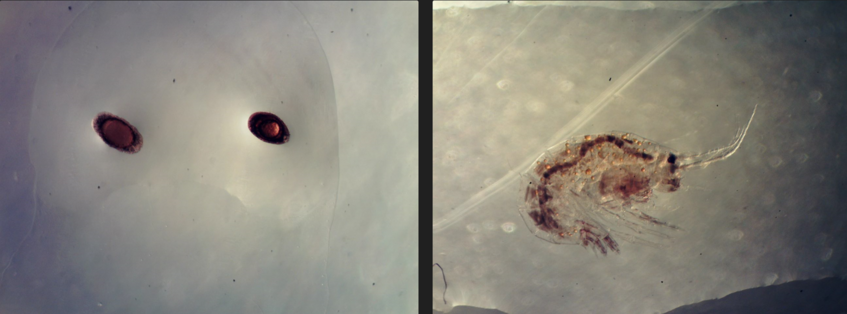
New Alumnus: Stefan Werderitsch
Congratulations to Stefan on his graduation! Stefan has worked on the question "What conditions are preferred by Northern bald ibis for nest site selection as part of their breeding ecology", and thus completed the MSc program Behaviour, Neurobiology and Cognition at the University of Vienna. The thesis was supervised by Dr. Didone Frigerio (KLF, University of Vienna).
We wish you all the best for the future!


Merry Christmas
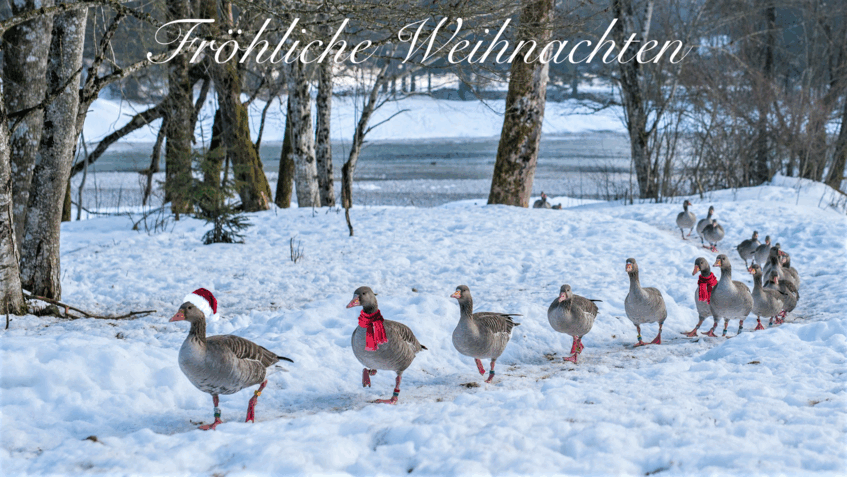
Merry Christmas
The team of the KLF wishes Merry Christmas, relaxing holidays and all the best for the New Year!
Congratulations to Verena Pühringer-Sturmayr on her dissertation!

Picture: Daniela Matejschek
Congratulations to Verena Pühringer-Sturmayr on her dissertation!
Verena has worked on the topic "Social behaviour and movement ecology of the Northern Bald Ibis (Geronticus eremita)", and thus completed the PhD at the University of Vienna. The dissertation was supervised by Dr. Didone Frigerio and Prof. Kurt Kotrschal (both KLF, University of Vienna).
We wish you all the best for the future!
KLF practicum student Katharina Tillmann published her study! Congratulations!
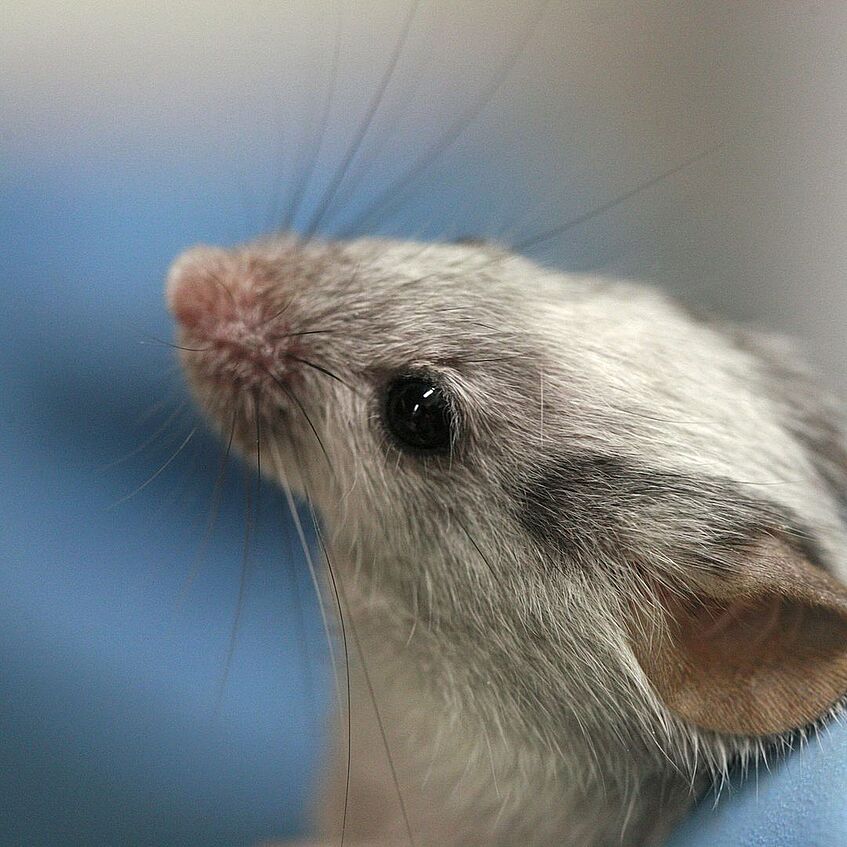
Picture: By Rama - Own work, CC BY-SA 2.0 fr
KLF practicum student Katharina Tillmann published her study! Congratulations!
Maintaining the highest standards of animal care is essential to satisfy animal welfare best practice. In this study, we measure behavioural profiles in caged mice in relation to their bedding material. Mice provisioned with soiled bedding that contained scent cues from other mice rested more and displayed less abnormal behaviour compared to mice provisioned with sterile clean bedding. More generally, these findings can be used to enhance the welfare of laboratory mice.
Publication in Frontiers in Behavioral Neuroscience:
Müller K, Lengheimer T, Kral-Pointner JB, Wojta J, Yeghiazaryan L, Krall C, Palme R, Kleindorfer S, Plasenzotti R, Pollak DD and Tillmann KE (2022) Exposure to soiled bedding reduces abnormal repetitive behaviors in mice. Front. Behav. Neurosci. 16:1062864. https://doi.org/10.3389/fnbeh.2022.1062864
Welcome Alexander

Welcome Alexander
We welcome our new master's student Alexander Ruf, who is studying Behaviour, Neurobiology and Cognition (Master) at the University of Vienna. For his Master's thesis Alex is investigating "the effects of early social experiences on exploration in juvenile ravens (Corvus corax)."
New publication on immune function across an urban gradient in Black Sparrowhawks
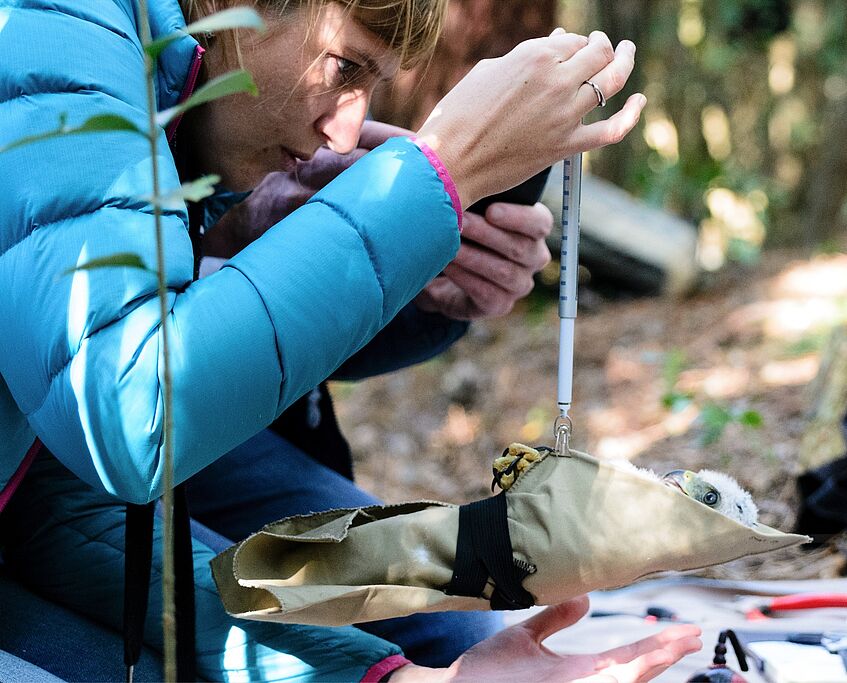
Picture: Kervin Prayag
New publication on immune function across an urban gradient in Black Sparrowhawks
In this paper, we found that higher levels of urbanisation and rainfall were associated with higher haemolysis, an established assay to measure the strength of the immune system. This finding adds to our understanding of the overall success of Black Sparrowhawks in colonising cities across Southern Africa where the species profits from a high prey abundance of pigeons and doves while being largely buffered from urban stressors when nesting in urban forest patches.
Publication in Journal of Animal Ecology:
Nwaogu, C. J., Amar, A., Nebel, C., Isaksson, C., Hegemann, A., & Sumasgutner, P. (2022). Innate immune function and antioxidant capacity of nestlings of an African raptor covary with the level of urbanisation around breeding territories. Journal of Animal Ecology, 00, 1– 18. https://doi.org/10.1111/1365-2656.13837
Welcome Nils
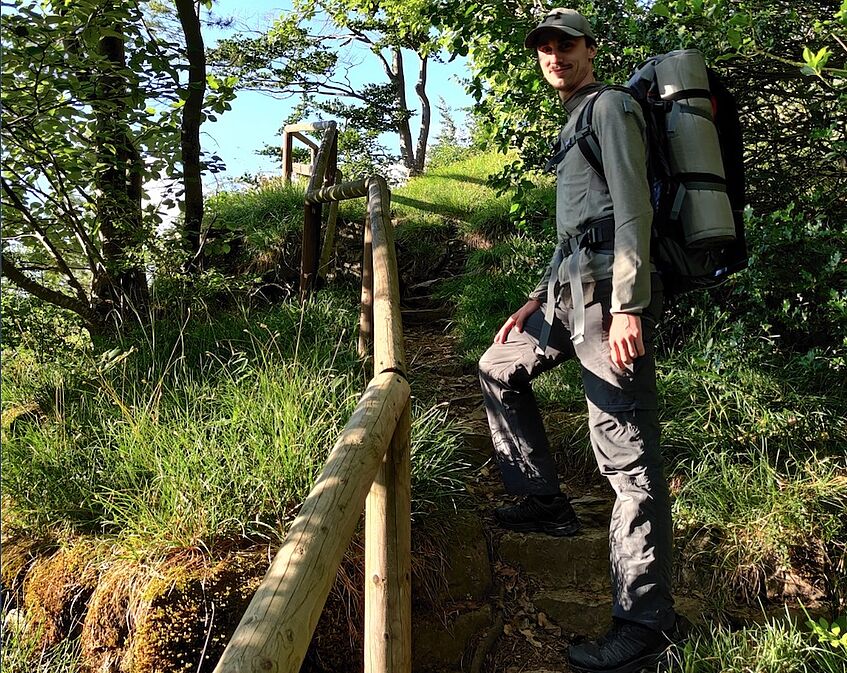
Welcome Nils
Nils is studying Conservation and Landscape Planning at the Technical University of Munich and is currently doing an internship at the KLF. Thereby he gains practical experience in catching and tagging ravens and supports the researchers in different projects.
New Alumna: Anna Fabbri
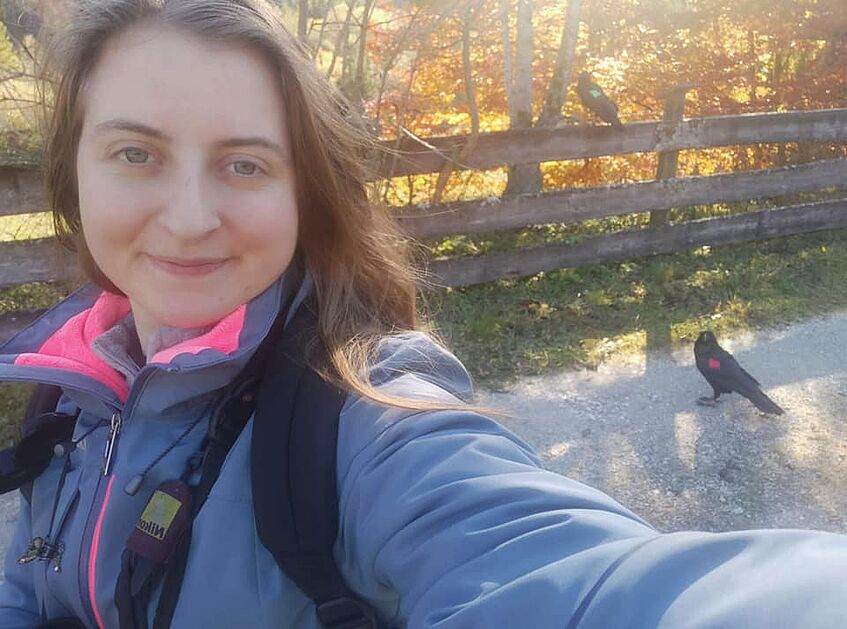
New Alumna: Anna Fabbri
Congratulations to Anna Fabbri on her graduation! Anna has worked on the topic "Ontogeny of individual variation in food calling in the common raven", and thus completed the MSc program Behaviour, Neurobiology and Cognition at the University of Vienna. The thesis was supervised by Prof. Sonia Kleindorfer (KLF, University of Vienna).
We wish you all the best for the future!
Welcome Johanna!

Welcome Johanna!
Johanna studies "Landscape Ecology and Nature Conservation" at the University of Greifswald in Germany and is currently at the KLF to collect data for her master thesis on affiliative interactions in common ravens.
Welcome Anja!
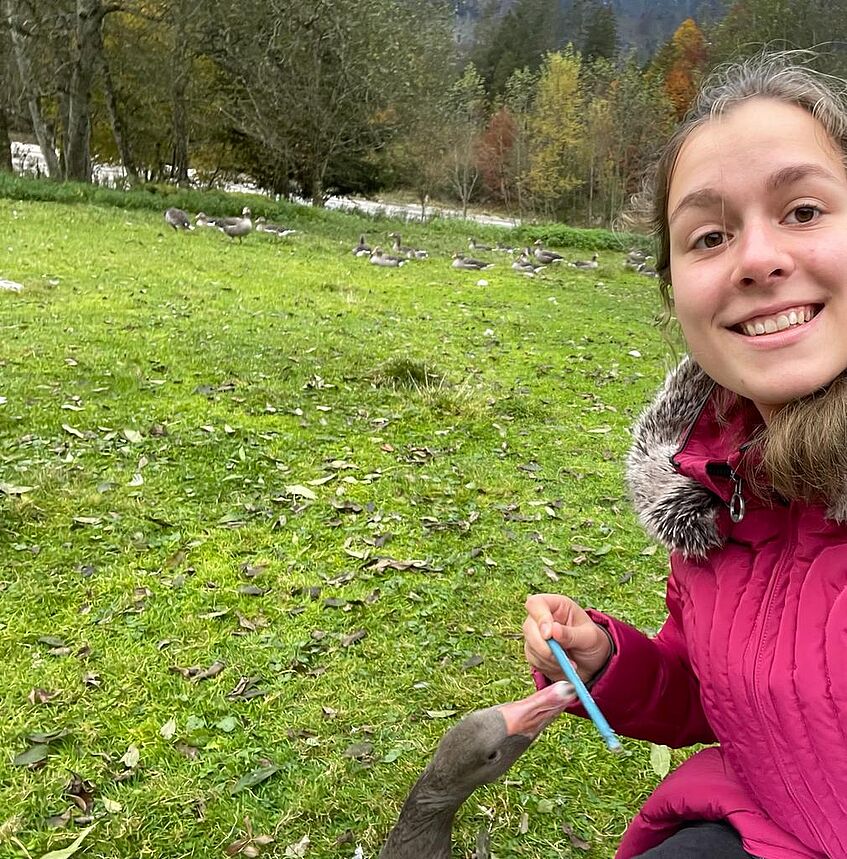
Welcome Anja!
Anja is doing a Voluntary Environmental Year at the KLF (Youth Environmental Platform JUMP). The activities include assistance in knowledge transfer and public relations as well as support in animal care. Parallel to the volunteer work, Anja completes the accompanying "FUJ training course".
Welcome Sophie!

Welcome Sophie!
Sophie is studying Behaviour, Neurobiology and Cognition (Master) at the University of Vienna. For her Master´s thesis she is working with the greylag geese.
New publication on shifts in reproductive behaviour of the invasive bird parasite Philornis downsi
The avian vampire fly is a parasite that was accidentally introduced to the Galápagos Islands. In this study, Common et al. use genomic techniques to reveal new patterns of mating behaviour. Compared to one decade ago, the results show that females mate with fewer males, individual females oviposit fewer offspring per nest, but more unique females oviposit per nest. In addition to informing conservation management, these findings provide a rare insight into invasion biology in real time.
Publication in Biological Invasions:
Common,LK, Kleindorfer S, Colombelli-Négrel D, Dudaniec, RY (2022). Genetics reveals shifts in reproductive behaviour of the invasive bird parasite Philornis downsi collected from Darwin’s finch nests. Biological Invasions https://doi.org/10.1007/s10530-022-02935-y
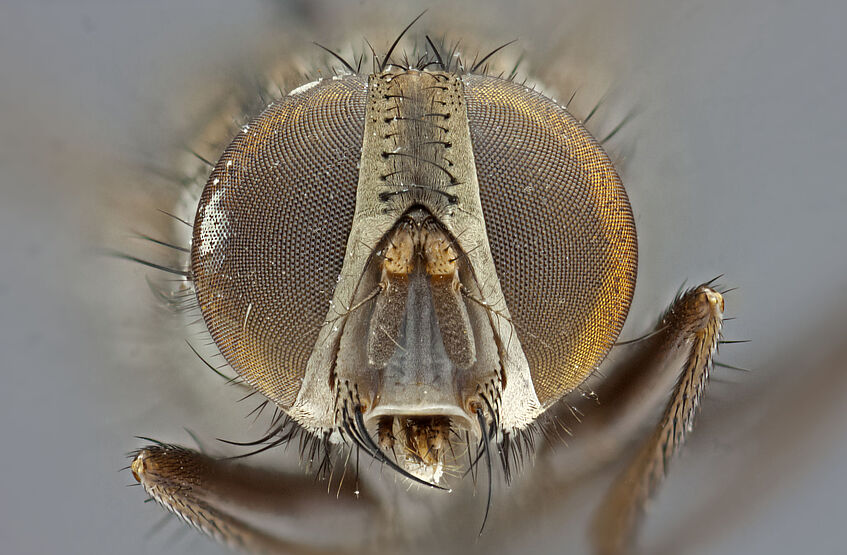
Picture: B. Sinclair

Picture: B. Sinclair
Congratulations to Mario Gallego-Abenza on his dissertation!

Congratulations to Mario Gallego-Abenza on his dissertation!
Mario has worked on the topic: "Social cognition and fission-fusion dynamics in non-breeder Common ravens, Corvus corax", and thus completed the PhD at the University of Vienna. The dissertation was supervised by Prof. Thomas Bugnyar.
We wish you all the best for the future!
New publication out: In the Australian superb fairywren exploratory individuals defend their territory more strongly against intruders
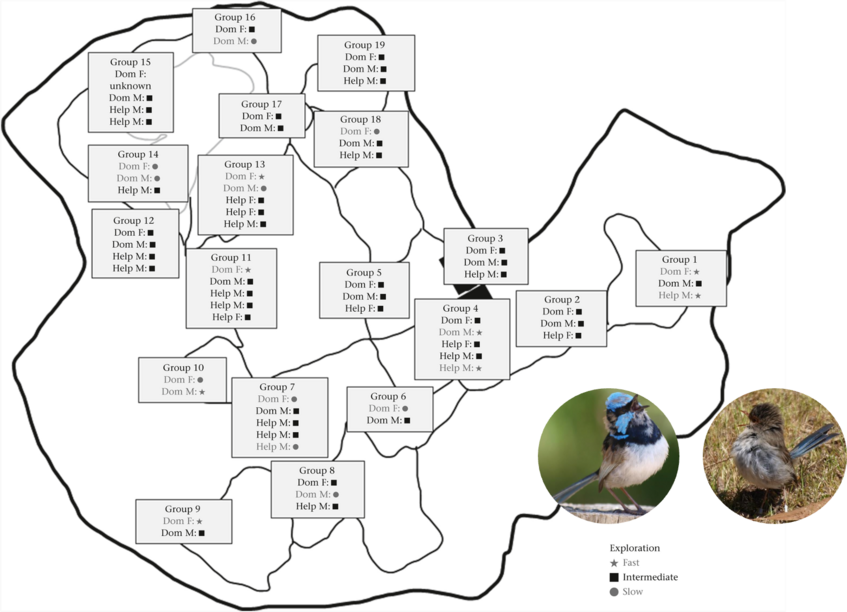
New publication out: In the Australian superb fairywren exploratory individuals defend their territory more strongly against intruders
In the Australian superb fairywren, the male and female defend a territory across many years. In this study we show that birds with extreme exploration phenotypes defended their territory more strongly against conspecific intruders. Especially pairs with mismatching exploration phenotypes -- that is, where the male was either more or less exploratory and the female was either less or more exploratory respectively - responded strongest to intruders. Our results shed light on the role of personality in wild contexts, and how combinations of personality types may confer a fitness benefit.
Publication in Animal Behaviour:
Colombelli-Négrel D, Katsis AC, Kleindorfer S (2022). Superb fairy-wrens with extreme exploration phenotypes respond more strongly to simulated territory intrusions. Animal Behaviour 193, 101-111. doi.org/10.1016/j.anbehav.2022.08.015
New publication on personality in animals
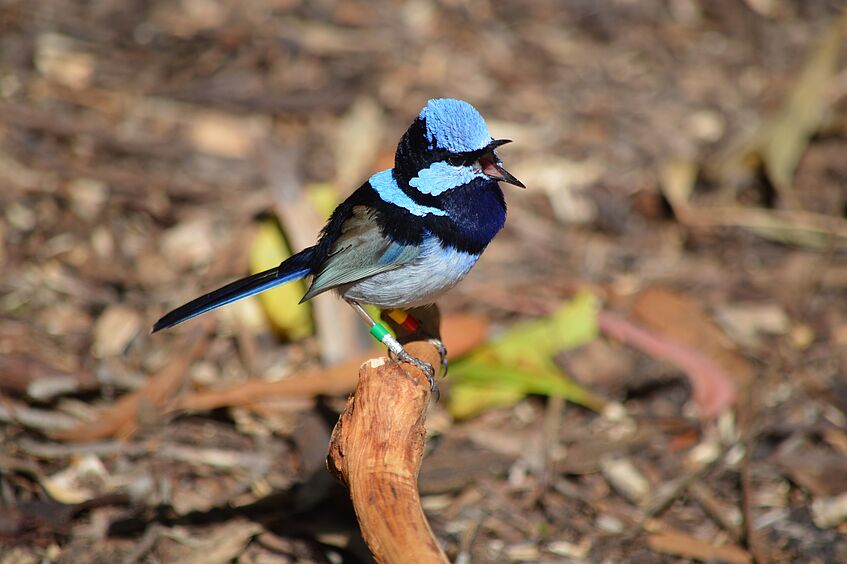
Picture: Andrew Katsis
New publication on personality in animals
Animals have personality - some are shy and some are bold, some are more and others less aggressive, for example. In this study in the Australian Superb Fairywren, we carried out an experiment and measured the effect of personality on responses to playback of a predator. More aggressive birds had a stronger response and approached the predator sound more closely. This study supports the view that personality in animals can predict their behaviour during threatening situations in the wild, and therefore can be a target of selection.
Publication in PeerJ:
Bilby, J., Colombelli-Négrel, D., Katsis, A.C. and Kleindorfer, S., 2022. When aggressiveness could be too risky: linking personality traits and predator response in superb fairy-wrens. PeerJ, 10, p.e14011. doi.org/10.7717/peerj.14011
Book chapter published on the impact of citizen science on conceptual learning and socio-emotional development
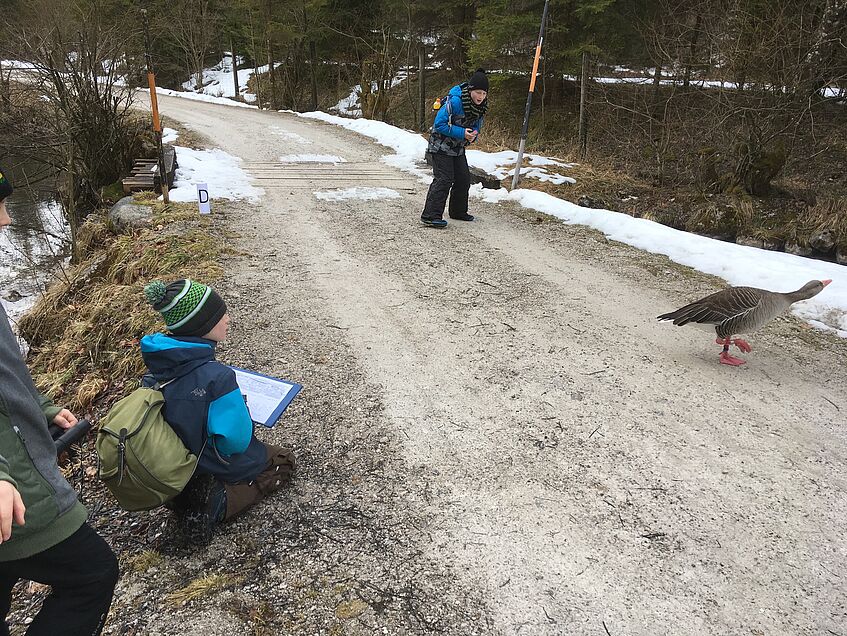
Book chapter published on the impact of citizen science on conceptual learning and socio-emotional development
Together with the colleagues Katharina Hirschenhauser and Brigitte Neuböck-Hubinger from the Pädagogische Hochschule Oberösterreich Didone Frigerio wrote the book chapter "Science Education and Beyond: Citizen Science in Primary School Potentially Affects Conceptual Learning and Socio-emotional Development". It was shown, among other results, that the participation of primary school children in a Citizen Science project about greylag geese not only has an impact on factual learning but also on impulsive behaviour control.
Publication in Citizen Science - Methods, Approaches and New Perspectives:
Hirschenhauser, K., Frigerio, D., Neuböck-Hubinger, B. (2022). Science Education and Beyond: Citizen Science in Primary School Potentially Affects Conceptual Learning and Socio-emotional Development. DOI: 10.5772/intechopen.107532
New Alumnus: Tanguy Menthonnex
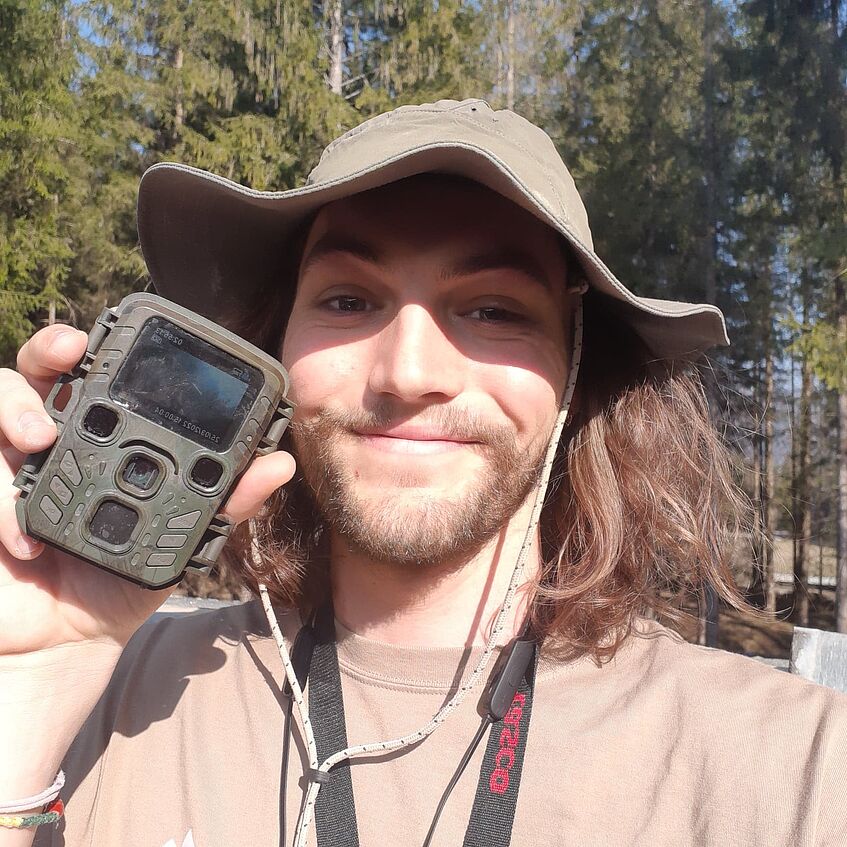
New Alumnus: Tanguy Menthonnex
Congratulations to Tanguy Menthonnex on his graduation! Tanguy has worked on the topic: "From individual to population: Considerations on the long-term development of a managed, free-flying colony of endangered Northern Bald Ibis", and thus completed the MSc program Behavioural Ecology and Wildlife Management at the Université de Bourgogne Franche-Comté. The thesis was supervised by Dr. Didone Frigerio (KLF, University of Vienna).
We wish you all the best for the future!
New Alumna: Antonia Charlotte Huge

New Alumna: Antonia Charlotte Huge
Congratulations to Antonia Huge on her graduation! Antonia has worked on the topic: "Male age is related to the heterospecific soundscape of the breeding territory in two Darwin’s finch species", and thus completed the MSc program Behaviour, Neurobiology and Cognition at the University of Vienna. The thesis was supervised by Prof. Sonia Kleindorfer (KLF, University of Vienna).
We wish you all the best for the future!
Welcome Rebekka and Egon
We would like to welcome two new master's students at the KLF. Rebekka studies “Wildlife Ecology and Wildlife Management” at the University of Natural Resources and Life Sciences, Vienna (BOKU). After spending two monitoring seasons in the field observing Golden Eagles, she now wants to find out more about the breeding performance of this species. In her master’s thesis she will be working on long-term breeding data in the Alps, to understand their productivity in relation to weather and climate.
Egon studies "Conservation Biology and Biodiversity Management" at the University of Vienna. For his master's thesis he will be working on the long-term survival data of colour-ringed ravens in the Alps, to understand seasonal and cohort-specific survival rates.

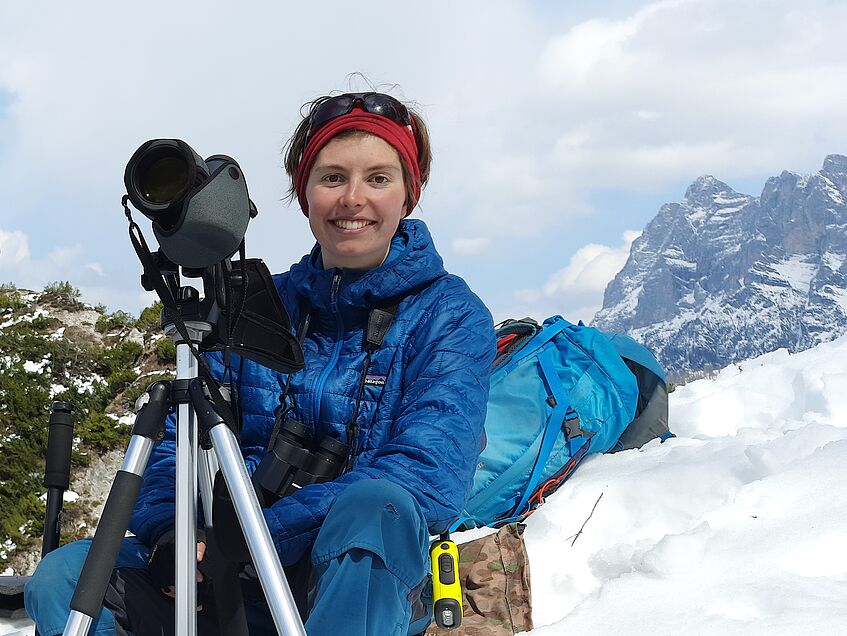
New paper published on exploitation of anthropogenic food sources by common ravens
A new study from the Corvid-lab, with lead author Varalika Jain, shows how 81 GPS-tagged ravens in the Alps exploit human-provided food sources. They found that human-provided food sources were important for all the tagged individuals, with differences in movement and resource use based on age (i.e., juvenile versus adult), origin (i.e., wild-caught versus captive-bred-released), and seasonality. Their results highlight how human-provided food sources affect foraging strategies among non-breeding ravens and emphasize the potential of these food sources in shaping movement and resource-use.
Publication in Movement Ecology:
Jain, V., Bugnyar, T., Cunningham, S.J. et al. The spatial and temporal exploitation of anthropogenic food sources by common ravens (Corvus corax) in the Alps. Mov Ecol 10, 35 (2022). https://doi.org/10.1186/s40462-022-00335-4
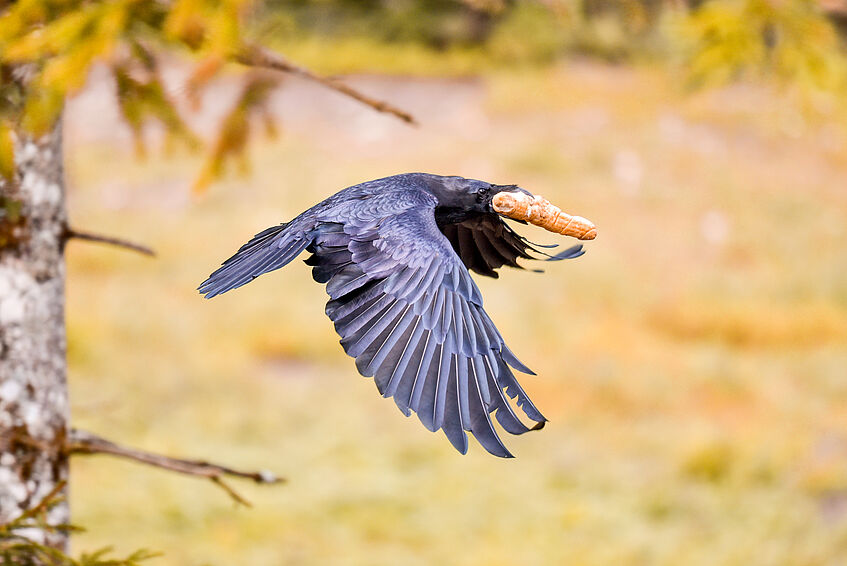
Picture: Benedikt Heger
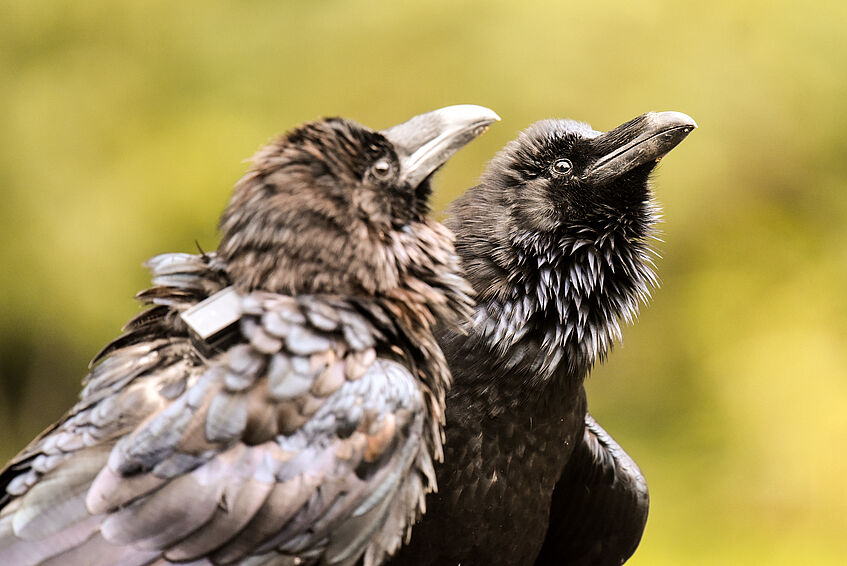
Picture: Benedikt Heger
Biologicum Almtal and Junior Biologicum




Biologicum Almtal and Junior Biologicum
Biologicum Almtal (September 29 - October 1)
As a scientific symposium, the Biologicum Almtal deals with the central topics of modern biology, with a view to the human being. In addition to biology, the lecturers come from different disciplines, such as medicine, veterinary medicine and economics. This is to ensure that the respective annual topic can be viewed from different angles. The aim of the event is to communicate scientific topics in an understandable way. Participation in the Biologicum requires curiosity and the willingness to learn something new.
This year we are dealing with one of the key questions of our time, which has to do with human ambivalence: How can people sometimes be so smart and yet often make such bad decisions? Research has documented countless examples of impressively flexible, near-optimal intelligence in humans and animals, while also uncovering numerous areas of irrational, suboptimal, and inflexible decision making.
During Biologicum 2022, we will discuss and reflect on the limits and potential of sustainable thinking and action. The topic will be looked at from several angles, both from the biological or natural science side, as well as from the economic side, we look at the processes in the brain as well as large data sets from worldwide observations.
Junior Biologicum (Sept. 29)
The Junior Biologicum is designed for interested high school students and their teachers. This year's event will take place on Thursday, September 29, on the topic of "Sustainable thinking and acting - a collective endeavor" at the Pfarrhof in Grünau. The topic will be examined from different perspectives in short keynote speeches. In the subsequent Science Café, discussions can be held with the speakers in an informal atmosphere.Participation is free of charge. Registration required.
Biologicum Almtal and Junior Biologicum will take place under the scientific direction of Sonia Kleindorfer and Didone Frigerio, the general organization will be done by staff members of the Konrad Lorenz Research Center in cooperation with the International Academy Traunkirchen.
We look forward to a lively exchange in the beautiful, early autumn Almtal in presence, with exciting lectures and discussions, eventful excursions, a pub quiz as an entertaining evening program and the usual delicious culinary accompaniment.
Further information and registration:
biologicum-almtal.univie.ac.at/biologicum-almtal/
Symposium language:
German
We would like to introduce our new PostDoc: Dr. Andrew Katsis!
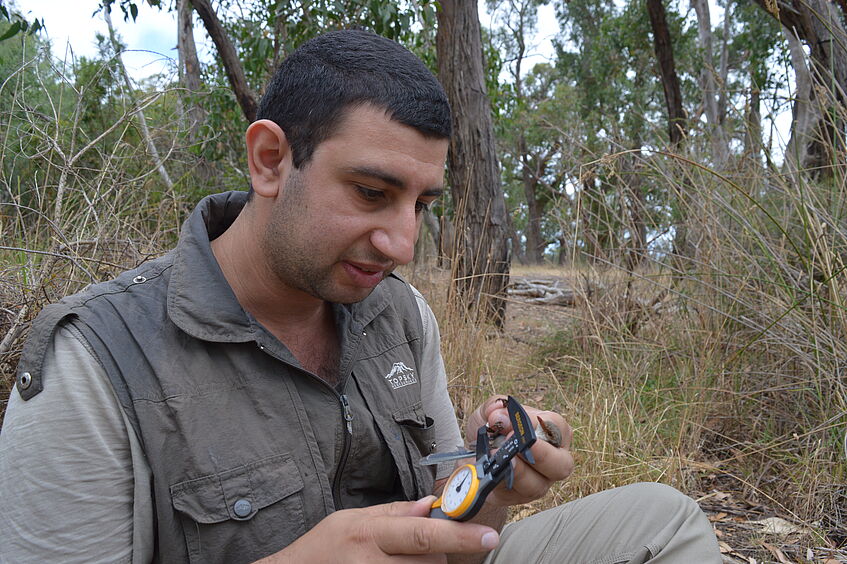
We would like to introduce our new PostDoc: Dr. Andrew Katsis!
We warmly welcome Andrew and look forward to working with him!
Dr. Andrew Katsis is a behavioural ecologist with an interest in avian personality, vocal learning, and prenatal communication. Spending his childhood on an emu farm in Australia, he quickly developed a passion for birds and their behavioural eccentricities. For his PhD research at Deakin University, Andrew studied how the prenatal sound environment can influence behaviour in the zebra finch (Taeniopygia castanotis), a small Australian songbird. He recently completed his first postdoc at Flinders University in Adelaide, Australia, during which he explored the ontogeny and fitness consequences of personality differences in superb fairy-wrens (Malurus cyaneus) and Darwin’s finches (subfamily Geospizinae). In addition to his research, Andrew is also a keen science communicator and has contributed to magazines, online news, radio, and television: in 2018, he shared his research on the Netflix popular science series Bill Nye Saves the World.
At the Konrad Lorenz Research Center, Andrew will continue his research on avian personality traits in collaboration with Prof. Dr. Sonia Kleindorfer. For this work, he will draw on the center’s established population of greylag geese and a long-running research project in the Galápagos Islands.
New Alumnus: Tom Nilles
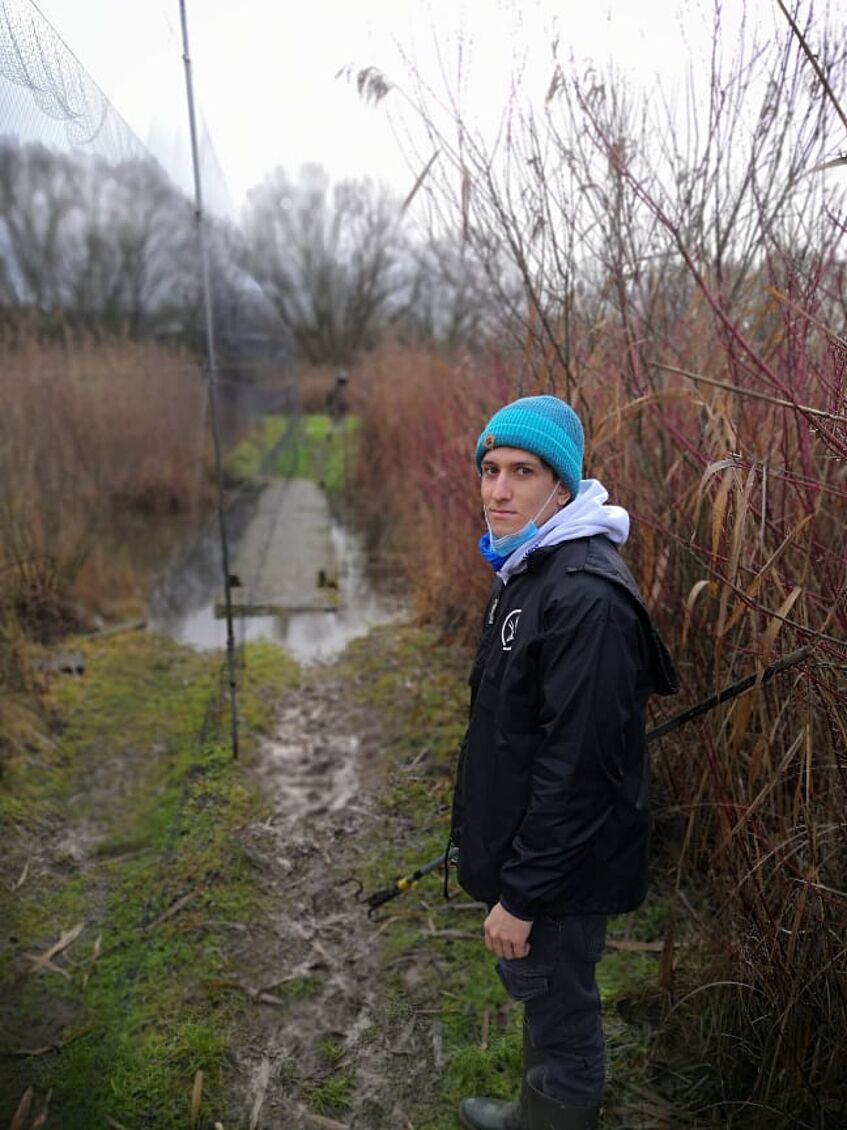
New Alumnus: Tom Nilles
Congratulations to Tom Nilles on his graduation! Tom has worked on the topic: "Carotenoid levels in nestlings of urban Eurasian kestrels (Falco tinnunculus)", and thus completed the MSc program Wildlife Ecology and Wildlife Management at the BOKU. The thesis was supervised by Swen Renner (NHM) and Petra Sumasgutner (KLF, University of Vienna).
We wish you all the best for the future!
New paper published on space use and site fidelity in the endangered Northern Bald Ibis

Picture: Verena Pühringer-Sturmayr
New paper published on space use and site fidelity in the endangered Northern Bald Ibis
Verena Pühringer-Sturmayr and colleagues investigated space use and site fidelity in the endangered Northern Bald Ibis. Northern Bald Ibis consistently showed high site fidelity, with adults using a larger area during the breeding season than outside the breeding season. Furthermore, direct routes over mountainous areas were avoided when moving between different areas.
Publication in Bird Conservation International:
Puehringer-Sturmayr, V., Krejci, J., Schuster, R., Kleindorfer, S., Kotrschal, K., Frigerio, D., & Loretto, M. (2022). Space use and site fidelity in the endangered Northern Bald Ibis Geronticus eremita: Effects of age, season, and sex. Bird Conservation International, 1-13. https://www.doi.org/10.1017/S0959270922000053
One-year anniversary of the new KLF building
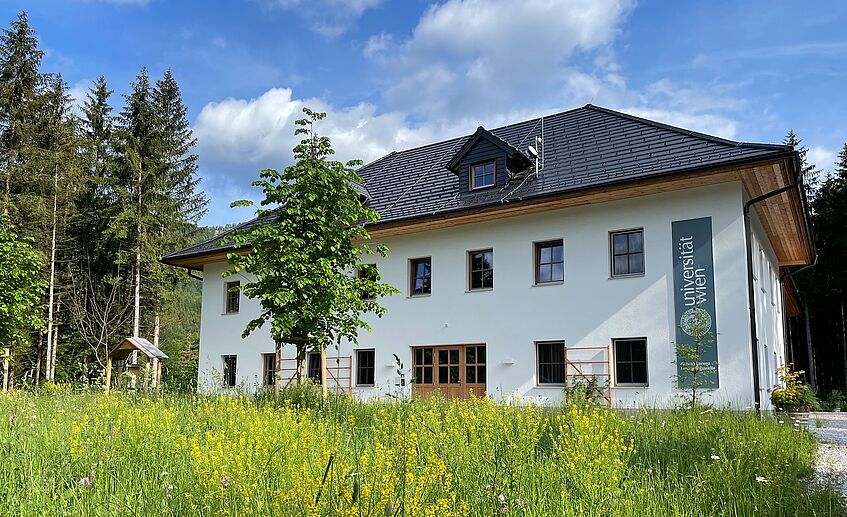
One-year anniversary of the new KLF building
In June 2022, we celebrate the one-year anniversary of the new KLF building. We share the commemorative publication Festschrift that marked the event. Thank you to all supporters, funding agencies, and many partners who turned the idea of a new building into a reality. Now, our research into the wild behaviour and cognitive capacity of animals continues in a modern facility. We are grateful!
New Alumna: Eva-Maria Körmer
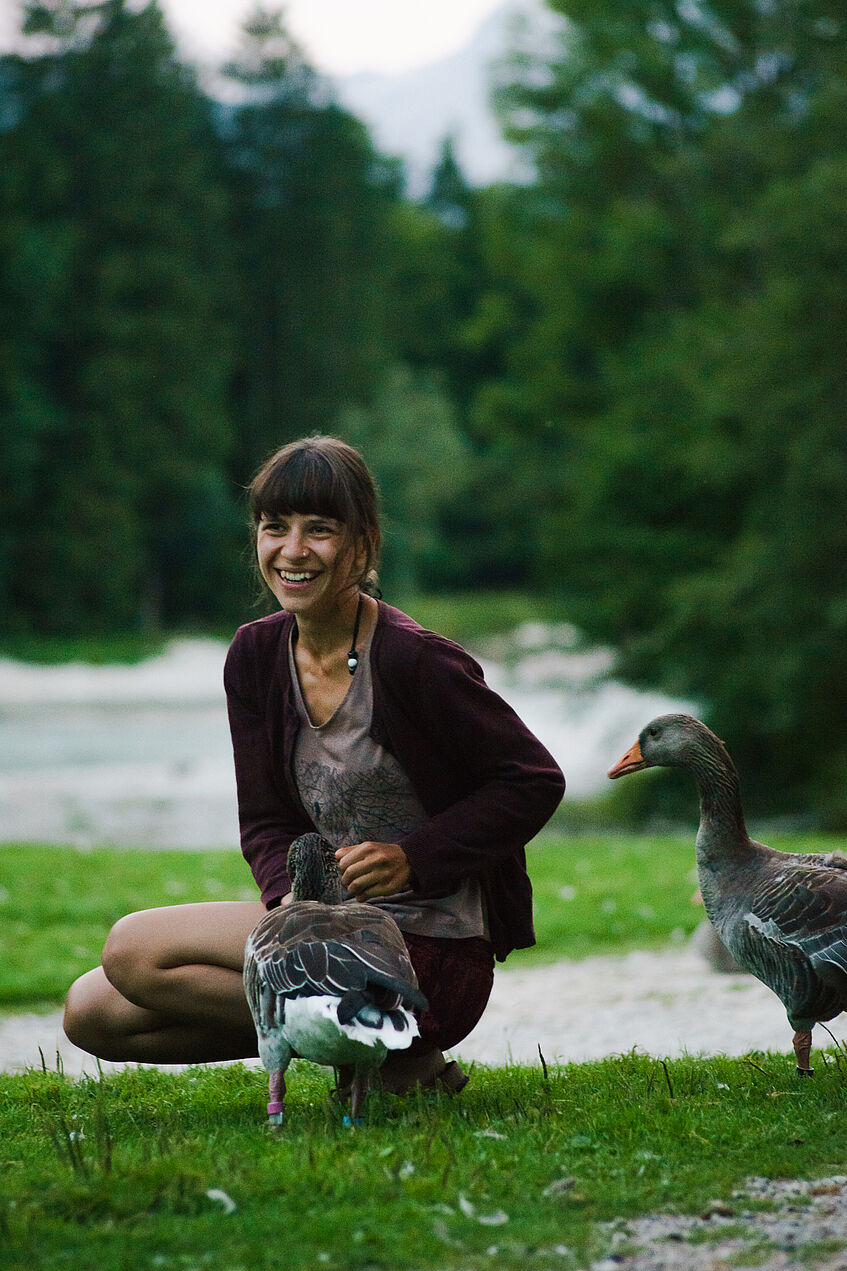
New Alumna: Eva-Maria Körmer
Congratulations to Eva-Maria Körmer on her graduation! Eva-Maria has worked on "Call structure of contact calls in Greylag geese", supervised by Sonia Kleindorfer (KLF, University of Vienna) and Mauricio Nicolas Adreani.
We wish you all the best for the future!
Farewell, Steffi!
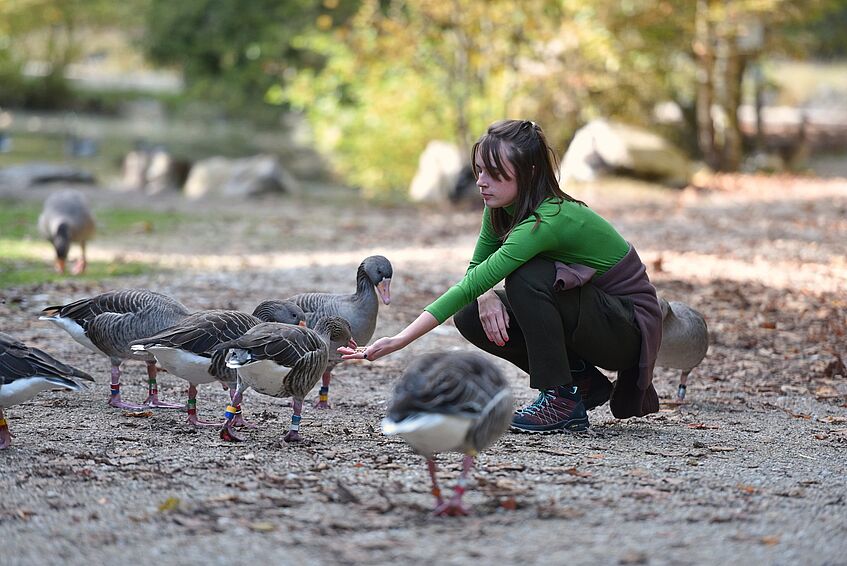
Picture: Benedikt Heger
Farewell, Steffi!
Stefanie has been doing a voluntary environmental year at the KLF since October 2021. She has assisted with knowledge transfer and supported us with public relations as well as the care of the animals. Dear Steffi, we wish you all the best for the future!
New Alumna: Veronika Weinhäupl
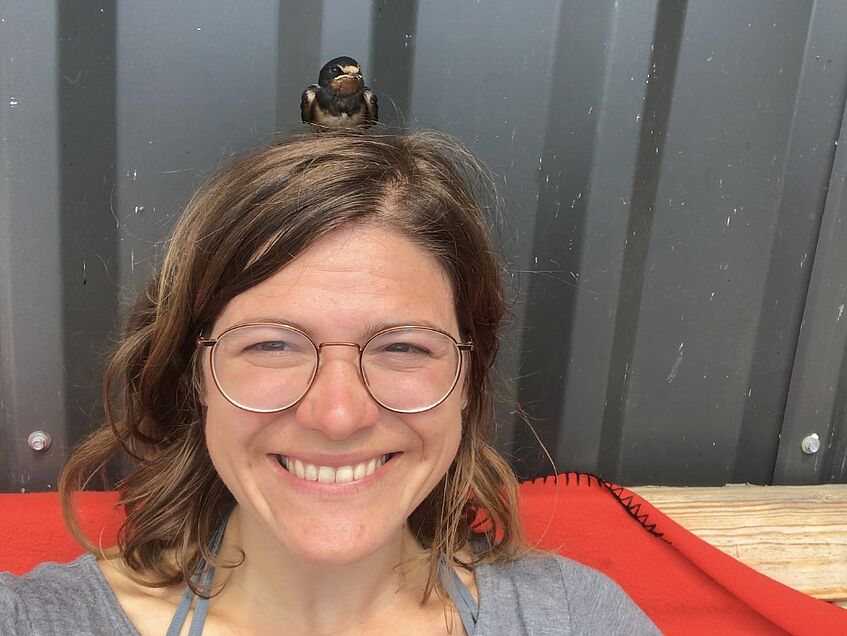
New Alumna: Veronika Weinhäupl
Congratulations to Veronika Weinhäupl on her graduation! Veronika has worked on "Departure call structure in Greylag geese", supervised by Sonia Kleindorfer (KLF, University of Vienna) and Nico Adreani.
We wish you all the best for the future!
Congratulations Dr. Petra Sumasgutner on winning the prestigious START award!
Petra is pioneering research into raptor ecology and conservation leading an international collaborative team. Her ground-breaking research addresses raptor, owl and raven foraging behaviour in the context of human-wildlife conflict. Her research outcomes will help save species and restore ecosystems. Congratulations on this tremendous achievement, and good luck for your important research.
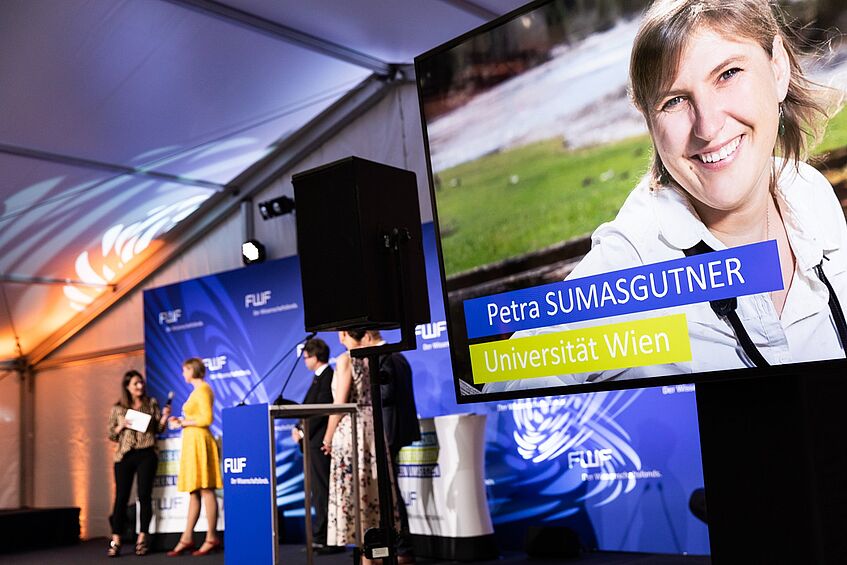
FWF/Anja Koppitsch/Daniel Novotny
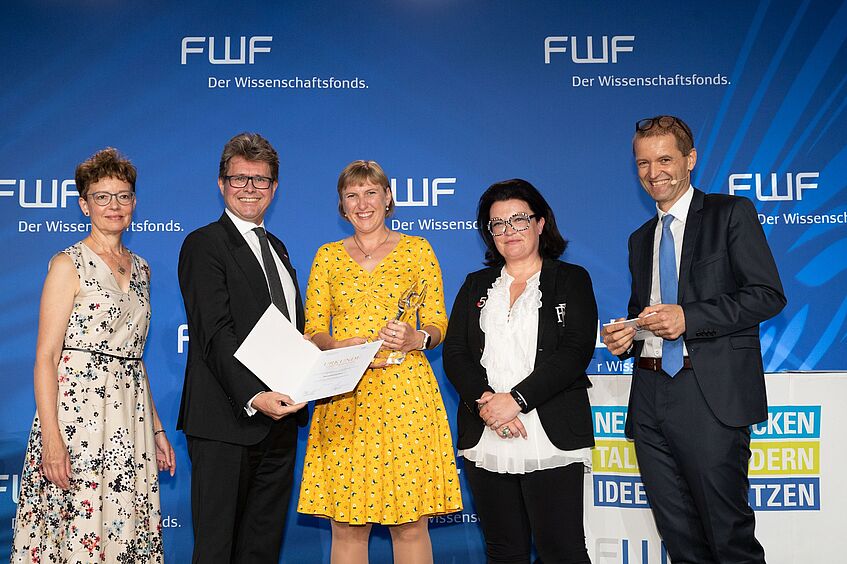
FWF/Anja Koppitsch/Daniel Novotny
New alumna: Lilly Felker
Congratulations to our master student, Lilly Felker, for passing her master's exam at the University of Vienna.
Topic of her Master thesis: Flock composition and field choice of Lesser White-fronted Goose (Anser erythropus)
We wish you all the best for the future!
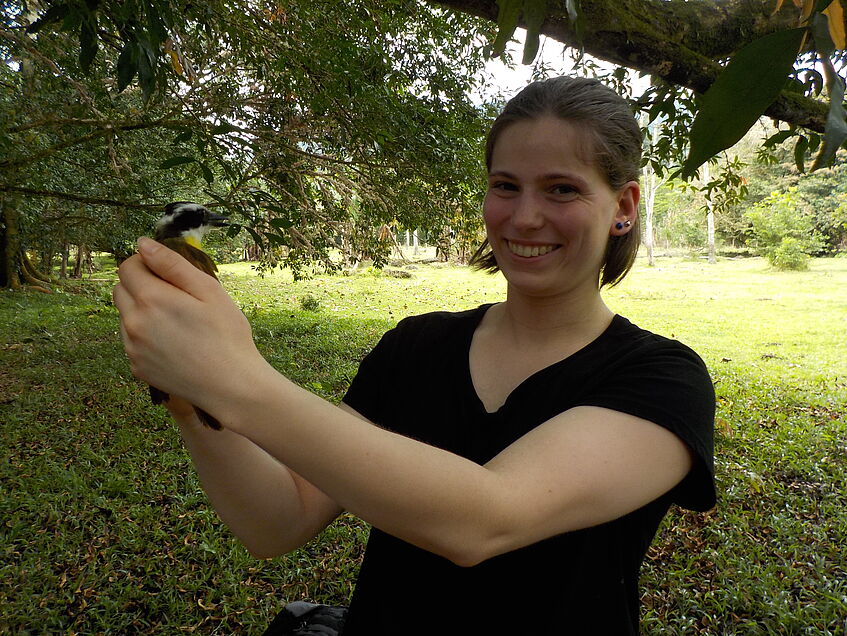
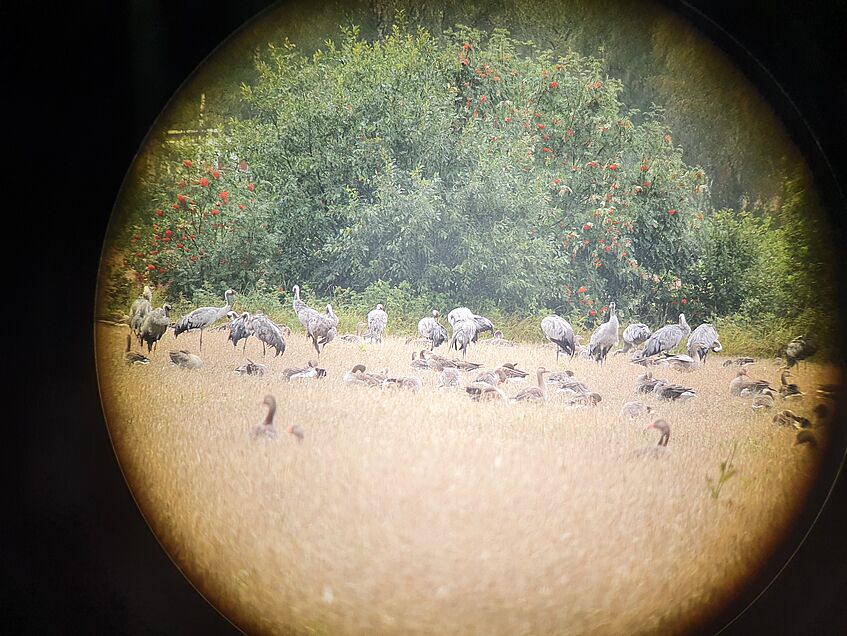
New publication on the effects of urbanization and climate change on red-winged starlings in Cape Town
This paper is the first scientific output from a new research line on interactive effects of urbanization and climate change established with the FitzPatrick Institute of African Ornithology, specifically the Hot Birds Research Project, where we take advantage of an individually color-ringed population of red-winged starlings on campus of the University of Cape Town. The Birds are habituated to close human observations and hop on a scale against a small food reward allowing us to weigh them regularly and to record daily body mass changes. In this paper, we show that the vast abundance of anthropogenic food in cities might buffer urban birds from the negative effects of elevated temperatures - despite short-term fluctuations of junk food availability that are linked to the weekly circle of human activity (the so-called weekend effect).
Publication in Landscape and Urban Planning:
Stofberg, M., Amar, A., Sumasgutner, P., Cunningham, S.J. (2022). Staying cool and eating junk: Influence of heat dissipation and anthropogenic food on foraging and body condition in an urban passerine. Landscape and Urban Planning 226.
The article can be accessed for 50 days doi.org/10.1016/j.landurbplan.2022.104465
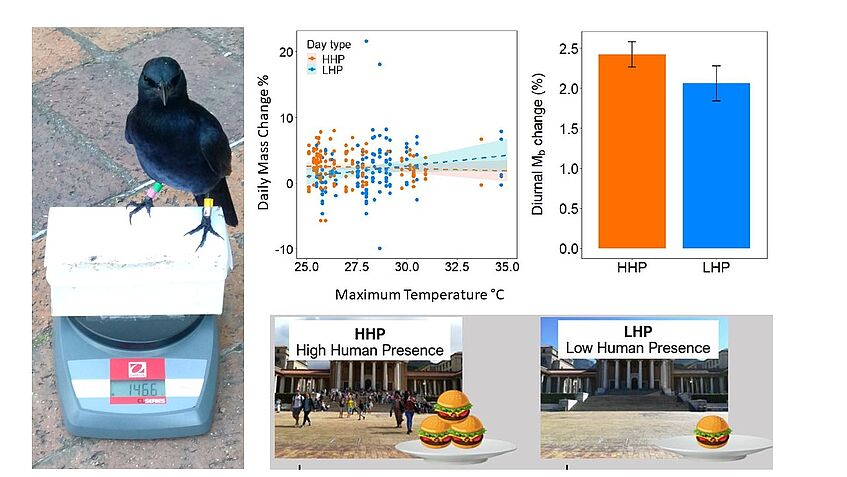
Graphical abstract: Miqkayla Stofberg
New publication on Darwin's finches
This publication reports on rapid ecological changes, indirectly caused by an introduced parasite. When larvae of the avian vampire fly feed on the beak of Darwin's finches, they can create beak deformations. Sonia Kleindorfer and colleagues measured the foraging behaviour of Darwin's finches. In birds with normal beak size, individuals from different species occupied different and specialised foraging niches. But when birds had malformed beaks from early life parasitism, they all converged on the same foraging niche. In this way, early life parasitism can have ecological consequences measured years later. Efforts are strong underway to maintain and restore the endemic food webs of the Galapagos Islands.
Publication in Functional Ecology:
Kleindorfer,S., Colombelli-Négrel, D., Common, L.K., O'Connor, J.A., Peters, K.J., Katsis, A.C., Dudaniec, R.Y., Sulloway, F.J., Adreani, N.M. (2022). Functional traits and foraging behaviour: Avian vampire fly larvae change the beak and fitness of their Darwin's finch hosts. Functional Ecology, 00, 1–12. https://doi.org/10.1111/1365-2435.14061
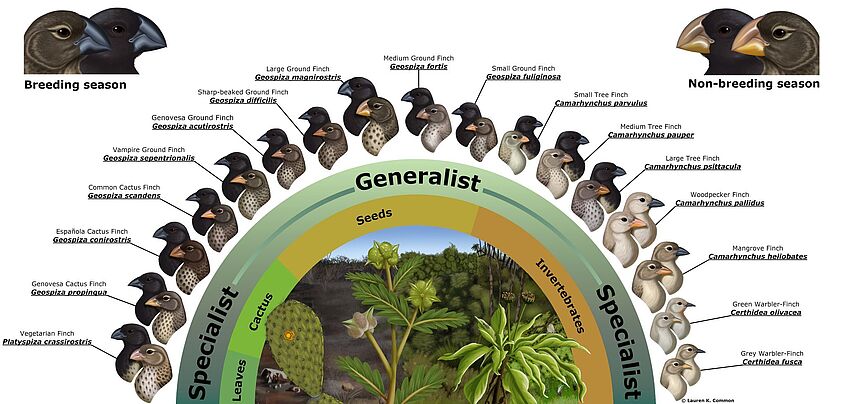
The Young Investigator Award goes to Petra Sumasgutner
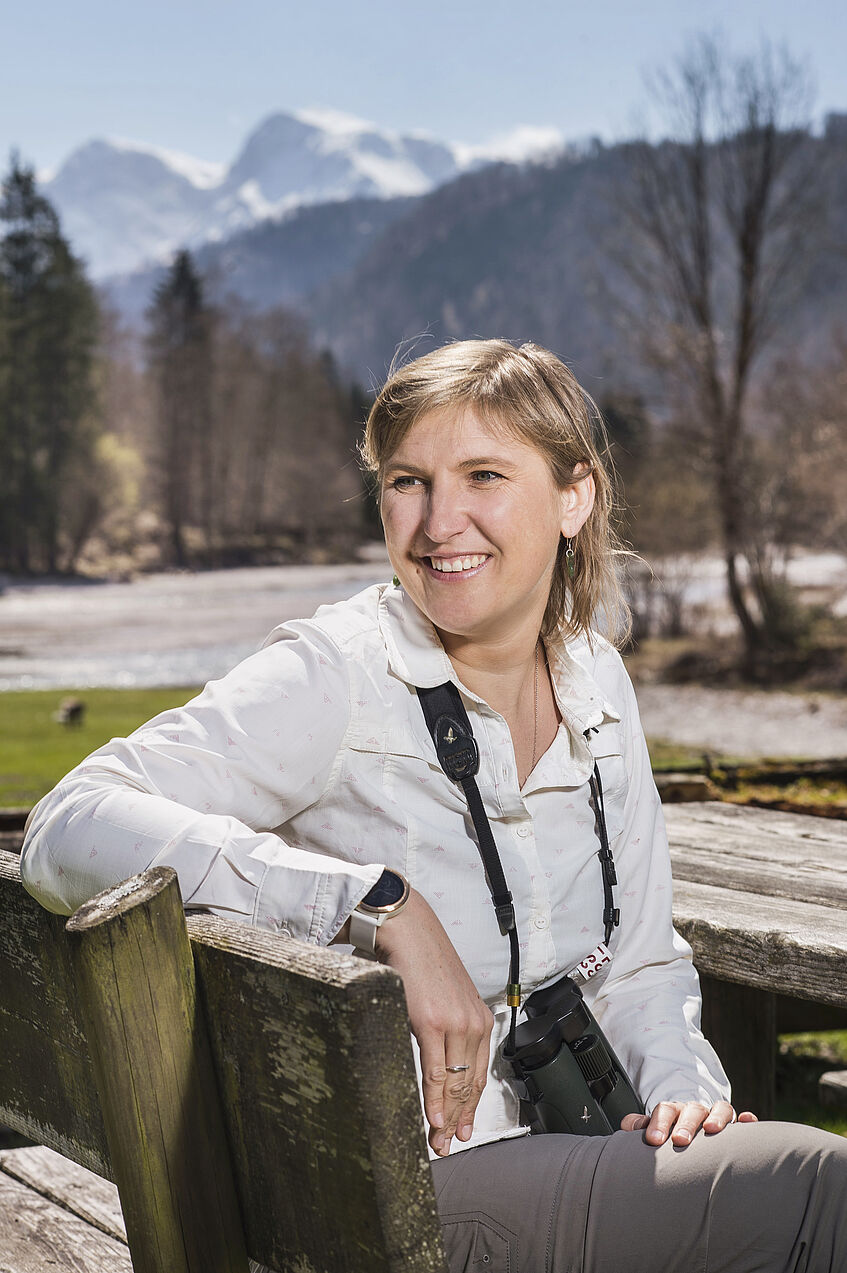
Picture: Daniela Matejshek
The Young Investigator Award goes to Petra Sumasgutner
Congratulations to Petra Sumasgutner - Faculty Award Winner of the Faculty of Life Sciences. The Young Investigator Award is an initiative of the Faculty of Life Sciences of the University of Vienna designed to honour young postdoctoral scientists publishing in the top journals of their field.
Petra: "I am planning to use the award to fund my research on urban raptors (Turmfalkenprojekt Wien) and to attend the PAOC (https://www.paoc15.org/) where I will deliver my very first invited plenary talk on "Raptors in a changing world: Understanding the response of predators to increasing urbanization" at Victoria Falls, Zimbabwe."
New publication on the occurrence of asymmetry in the complex nest of Rufous hornero
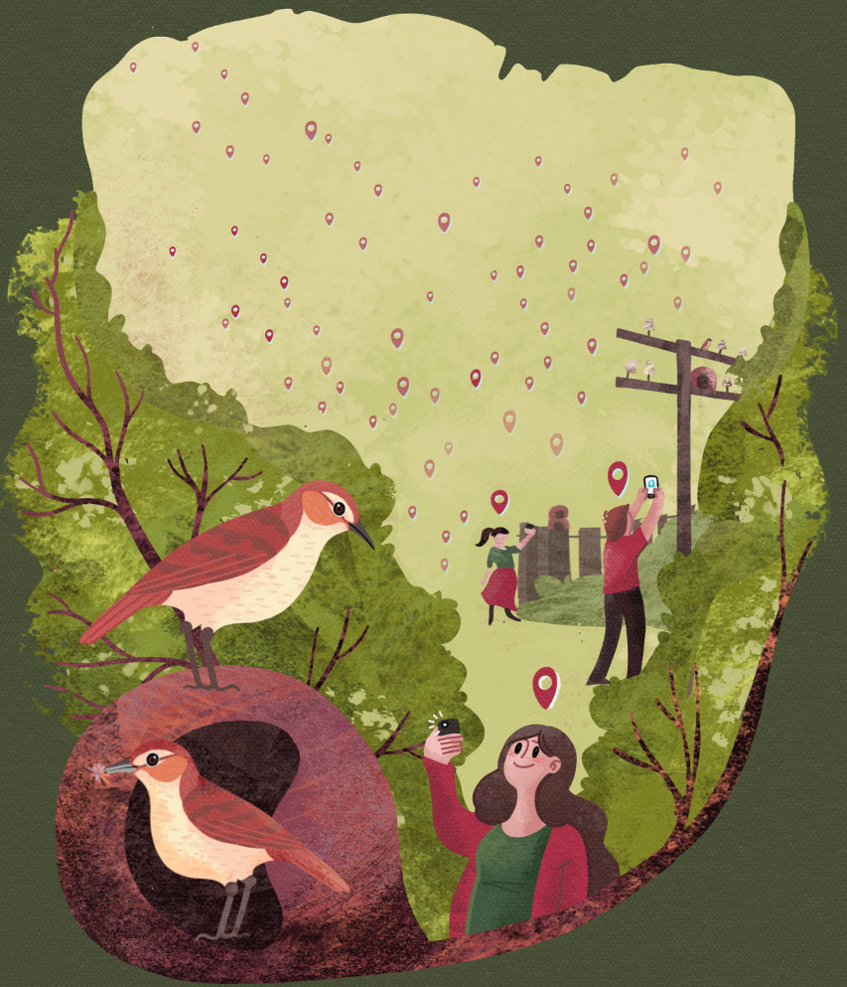
Illustration: Alena Lemazina
New publication on the occurrence of asymmetry in the complex nest of Rufous hornero
Nico Adreani and colleagues used a citizen-science approach to quantify the occurrence of asymmetry in the complex nest of a bird, the rufous hornero (Furnarius rufus). Nest asymmetry was individually repeatable and was not explained by environmental factors, raising many questions about the causes and consequences of nest asymmetry in animal behaviour.
Publication in Current Biology:
Adreani, N.M., Valcu, M., Citizen Scientists, Mentesana, L. (2022). Asymmetric architecture is non-random and repeatable in a bird's nest. Current Biology 32(9): 412-413. https://doi.org/10.1016/j.cub.2022.03.075
New Alumnus: Benedikt Heger

New Alumnus: Benedikt Heger
Congratulations to Benedikt Heger on his graduation! Benedikt has worked on "Different reactions of greylag geese to their own mirror images, as well as to life-size photographs of their conspecifics", and thus completed the MSc program Wildlife Ecology and Wildlife Management at the BOKU. The thesis was supervised by Sonia Kleindorfer (KLF, University of Vienna).
We wish you all the best for the future!
New Publication on the elevational range expansion of the Drab Water Tyrant
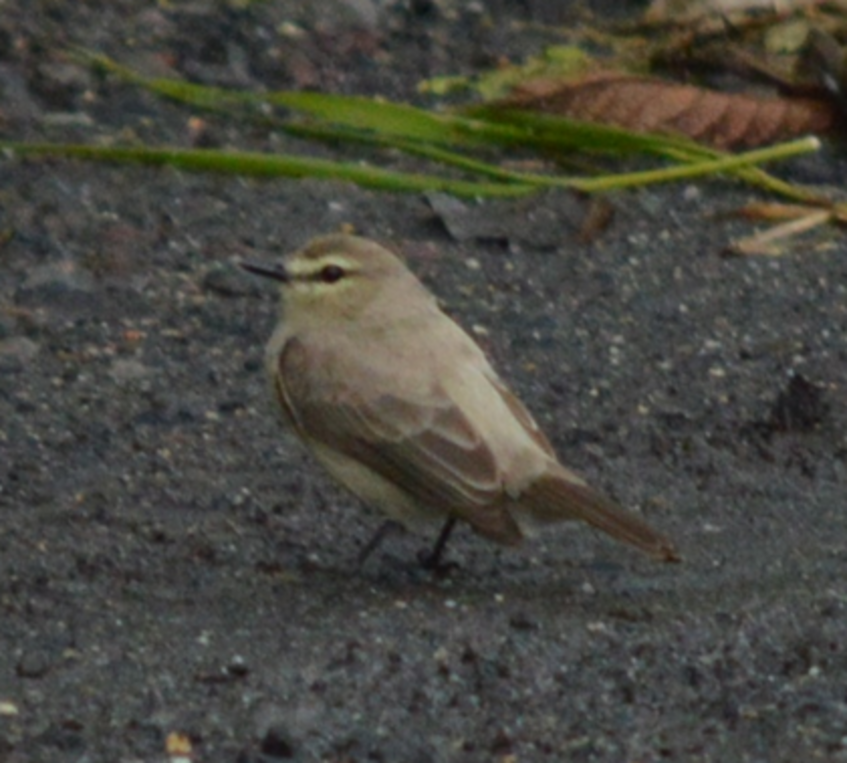
New Publication on the elevational range expansion of the Drab Water Tyrant
New study by PhD student Jefferson Garcia Loor shows range expansion in the Drab Water Tyrant (Ochthornis littoralis) from lower Amazonia to the Andean foothills. The new record is also from a previously unknown habitat for the species.
Publication in Check List - the journal of biodiversity data:
García-Loor J (2022) Elevational range extension of Drab Water Tyrant, Ochthornis littoralis (Pelzeln, 1868) (Passeriformes, Tyrannidae). Check List 18(3): 451-453. https://doi.org/10.15560/18.3.451
Welcome Viktoria
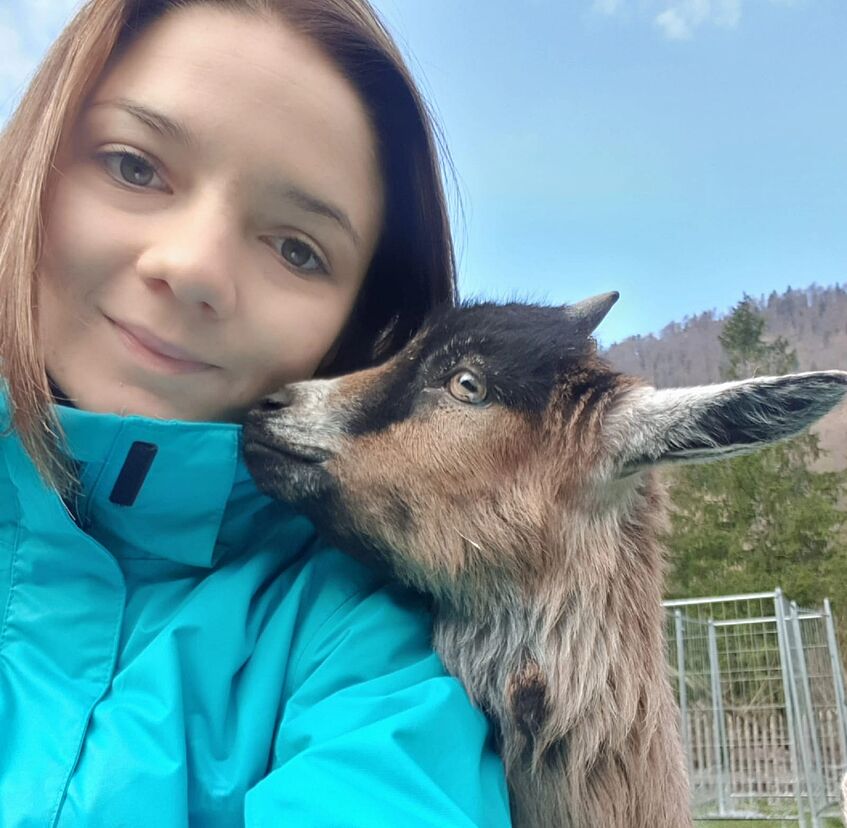
Welcome Viktoria
Viktoria studies Human-Animal Interactions at the Vetmeduni in Vienna. For her master thesis she investigates the prosociality in goats in the Cumberland Wildpark Grünau.
Welcome Alena, Caelan, Leon and Matt
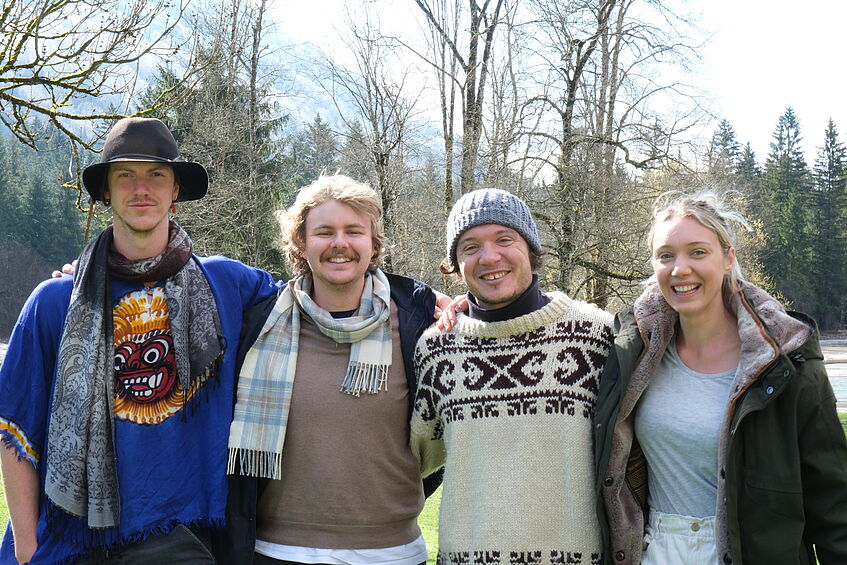
Picture: Stefanie Filz
Welcome Alena, Caelan, Leon and Matt
The four Australians are supporting the research on greylag geese at the KLF as volunteers during the next months. One of their tasks is to record the calls of the hand-raised goslings.
Happy Easter!
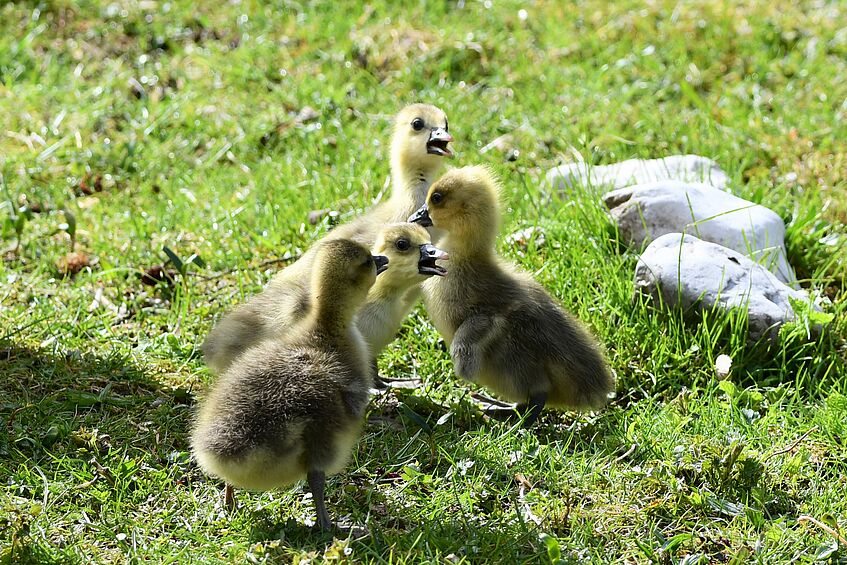
Picture: J. Hemetsberger
Happy Easter!
Happy Easter and happy holidays!
Welcome Barbara and Johanna
Barbara, student of "Wildlife Ecology and Wildlife Management" at the University of Natural Resources and Life Sciences (BOKU) and Johanna who studies "Molecular microbiology, microbial ecology and immunology" at the University of Vienna are hand-rearing graylag geese at the KLF and then will do their master's theses on i) the social integration of the hand-reared goslings and ii) the composition of gut microbiome in greylag geese from hatching to fledging.
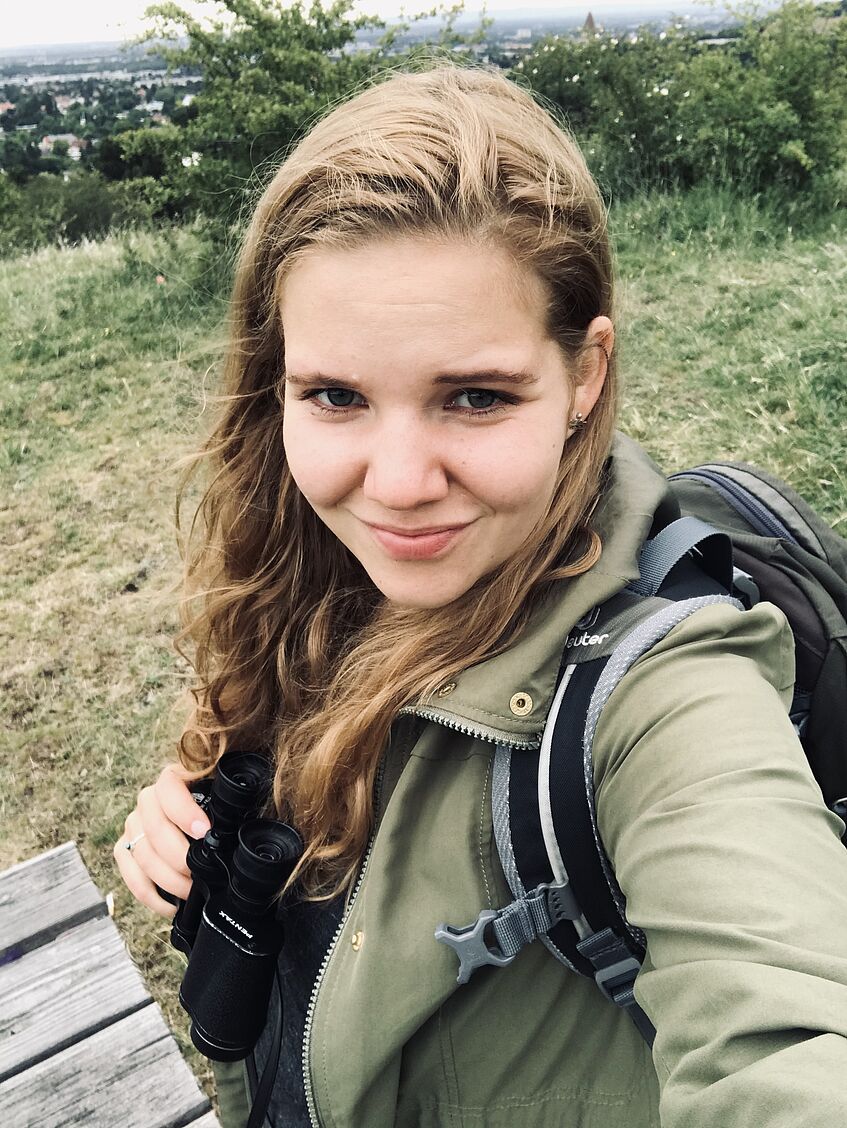
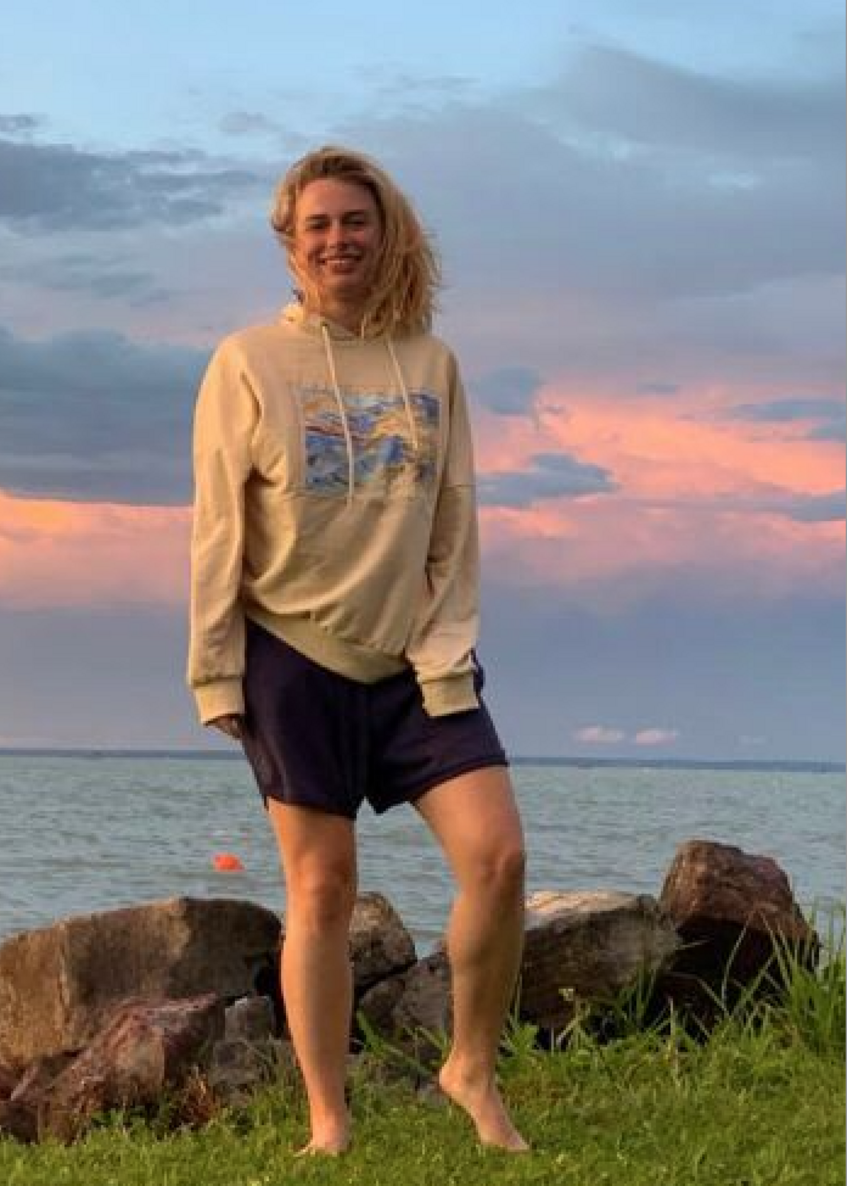
Welcome Tanguy and Stefan
For their master's thesis Tanguy and Stefan are investigating what makes birds - namely the Northern bald Ibis pick up plastic and other human waste as material for their nest, and its potential consequences for the parents and offspring.
Tanguy is studying Behavioural Ecology applied to Wildlife Management at the University of Bourgogne Franche-Comté, in France. Stefan is a student at the University of Vienna after completing his bachelor's degree in Salzburg.


New publication: How can volunteers be involved in research projects while maintaining accurate data?
We learned that good communication and detailed training sessions can help citizen scientists collect accurate data that can be used scientifically and shared with the scientific community. We think that both volunteers and scientists will benefit from this collaboration and, most importantly, that they will all have fun doing it!
Publication in "Frontiers for Young Minds":
Gegendorfer G, Rittenschober J, Vesely H and Frigerio D (2022) Volunteering In Monitoring Bird Behavior: Accuracy Matters!. Front. Young Minds. 10:596181.
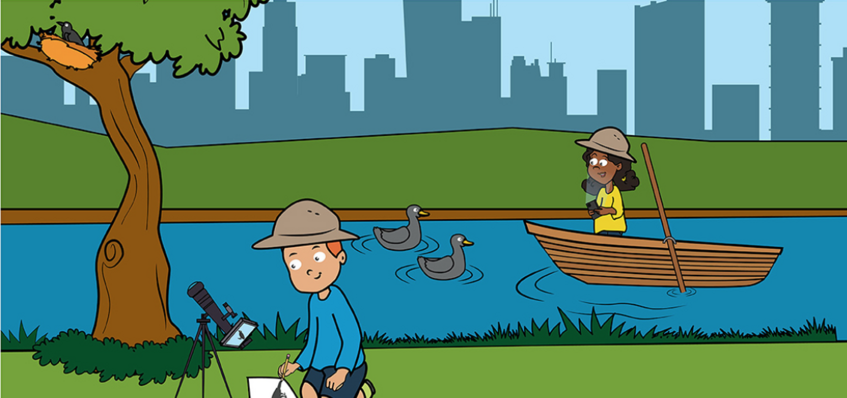
New paper on Avian diversity and abundance across years on Viti Levu
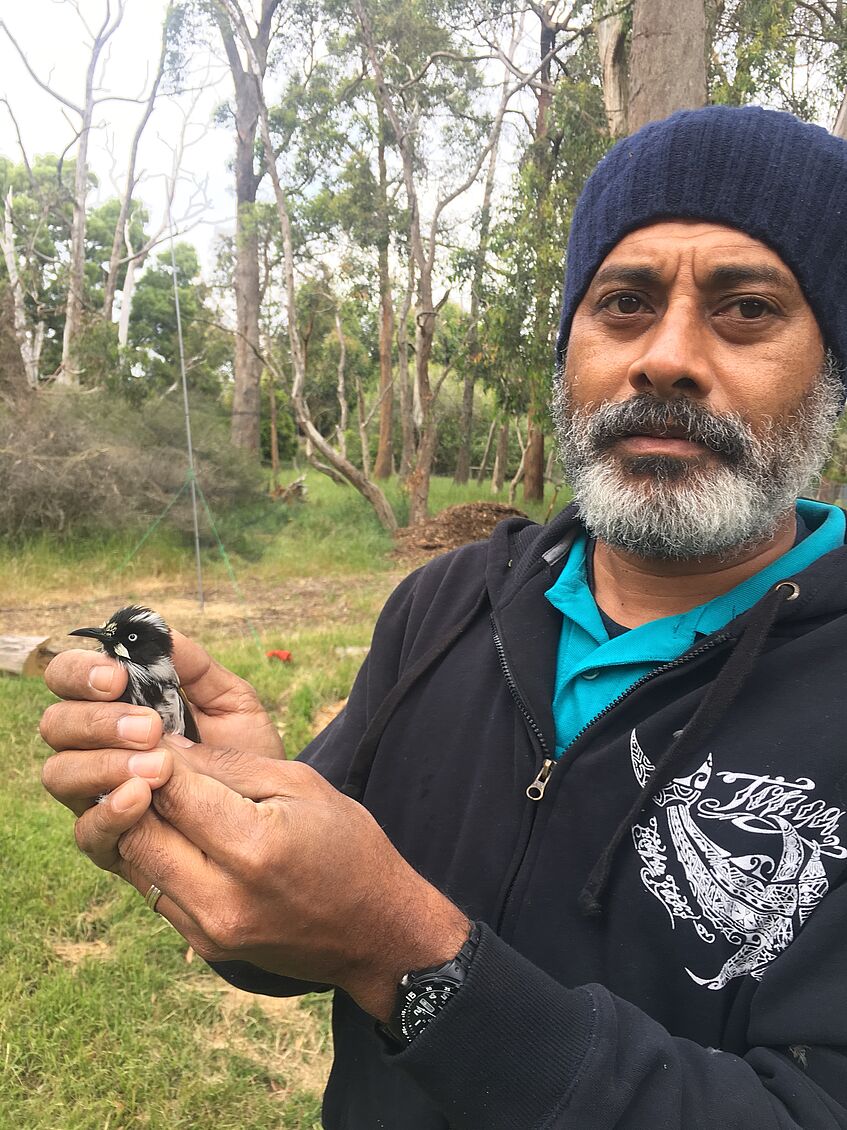
New paper on Avian diversity and abundance across years on Viti Levu
PhD student Alivereti Naikatini and colleagues made the important observation that the stability and diversity of woodland forest birds is comparable across forest types on Fiji, including primary, secondary and plantations. There is conservation benefit to maintaining forests including regrowth and managed forests to sustain woodland birds.
Publication in "Pacific Conservation Biology":
Naikatini AN, Keppel G, Brodie G, Kleindorfer S (2022). Avian diversity and abundance across years: consistent patterns in forests but not grasslands on Viti Levu, Fiji. Pacific Conservation Biology, https://doi.org/10.1071/PC21039https://doi.org/10.1071/PC21039
Welcome Lennart

Welcome Lennart
Lennart is a student at the Hochschule Bremen and recently studied abroad at the University of South Bohemia in Czech Republic. For his bachelor thesis Lennart will test the degree of interspecific comprehension of free-flying common ravens at the Cumberland Wildpark Grünau by analysing their response to alarm calls of different corvid species. This will take place during the next three months in form of playbacks during the boar feeding, when ravens are present.
New video about the conservation of biodiversity and our research on the northern bald ibis
For her dissertation, Verena Pühringer-Sturmayr investigated the social interactions and habitat selection of the highly endangered northern bald ibis. Last fall and winter a film team accompanied Verena, got to know the bald ibis and discussed with her the importance of conserving biodiversity.
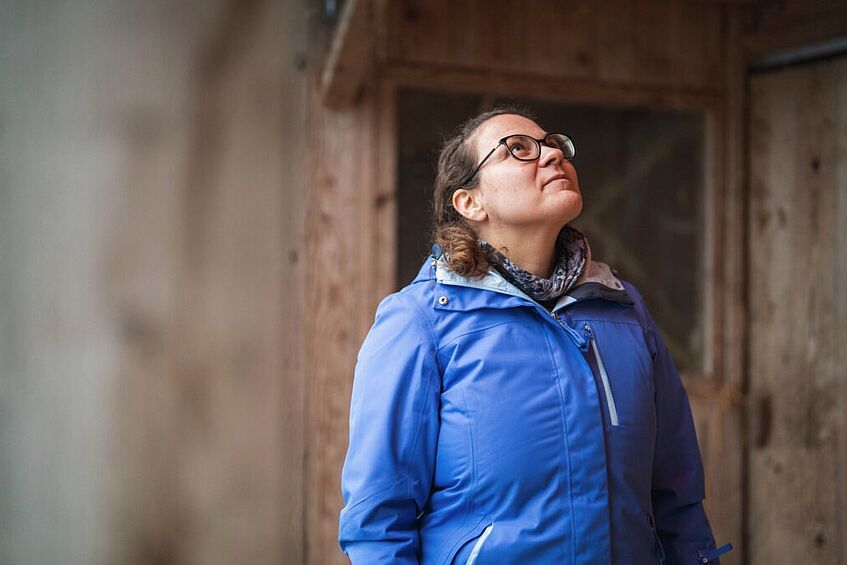
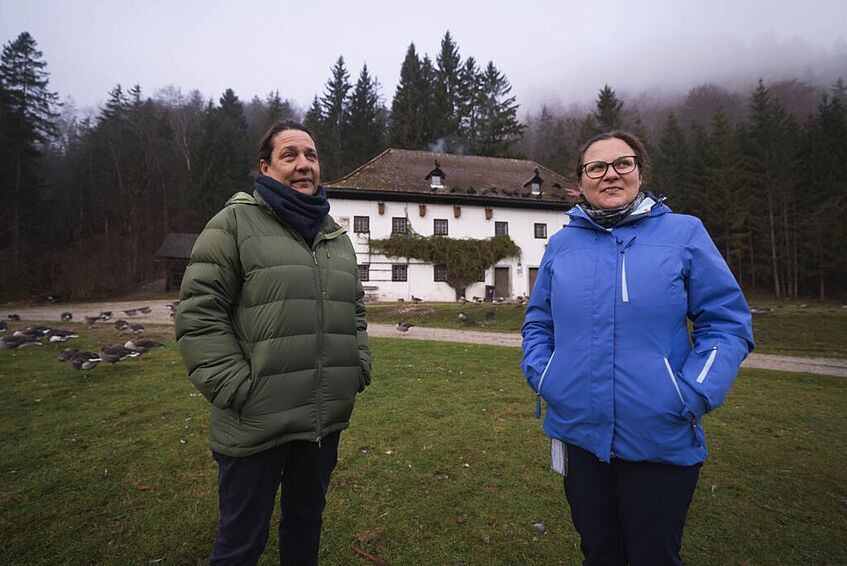
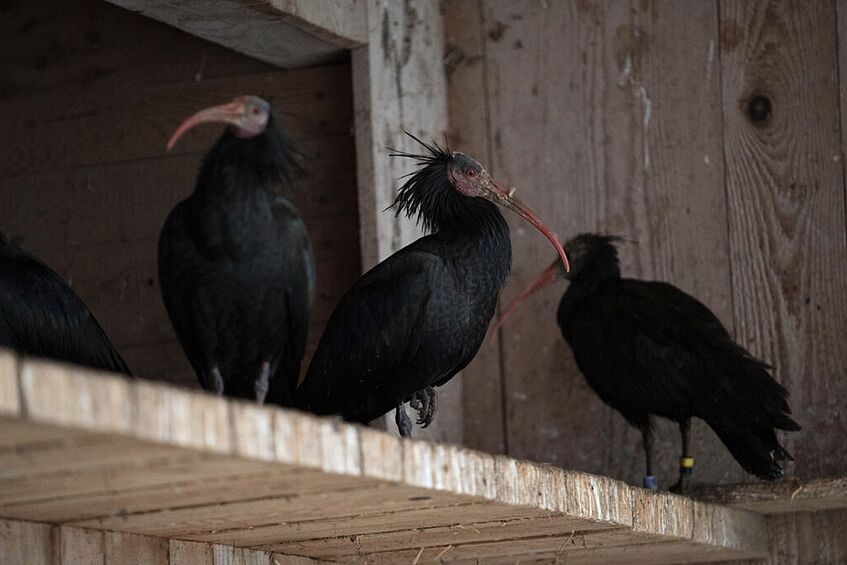
New paper published about the birds of Fiji
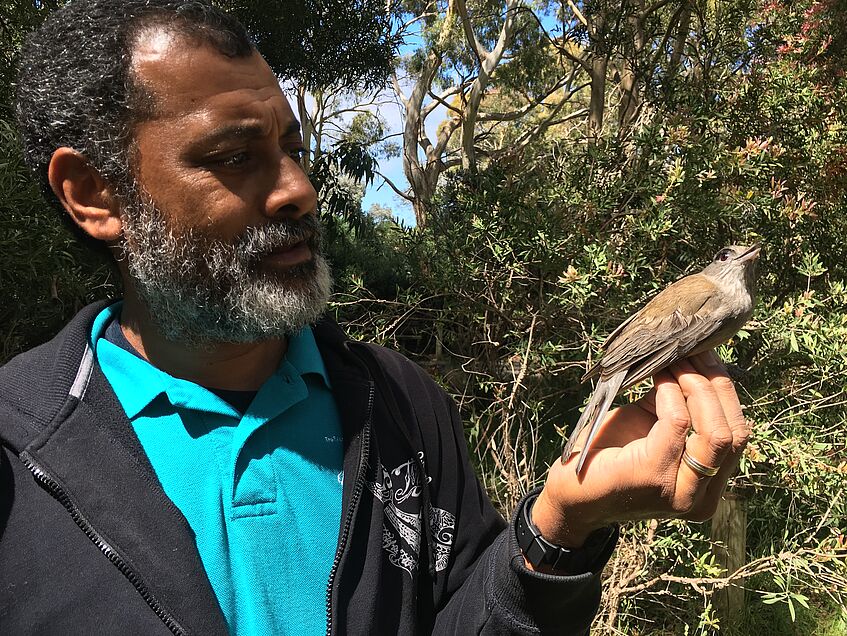
New paper published about the birds of Fiji
Fiji endemic bird behaviour comes under study for almost the first time in ~100 years since the Whitney South Sea Expedition with Ernst Mayr in 1929! Together with Naikatini and colleagues, Kleindorfer documented vertical niche stratification in Fiji’s woodland birds. The study adds valuable information on the role of animal behaviour such as foraging behaviour for forest community structure. Understanding drivers of biodiversity is essential information to conserve woodland birds.
Publication in "Diversity":
Naikatini, A.N., Keppel, G., Brodie, G., Kleindorfer, S., 2022. Interspecific Competition and Vertical Niche Partitioning in Fiji’s Forest Birds. Diversity. https://doi.org/10.3390/d14030223
New publication on vocal recognition in greylag geese
In this study Marie Guggenberger and colleagues uncover vocal recognition in one of the most ancient bird lineages, the greylag geese (Anser anser). We did so in the wild by combining a descriptive and experimental approach. Greylag geese were capable of recognising vocalisations from individuals of different social relevance.
Publication in "Animl Behaviour":
Guggenberger, M., Adreani, N.M., Foerster, K., Kleindorfer, S. (2022) Vocal recognition of distance calls in a group-living basal bird: the greylag goose, Anser anser. Animal Behaviour. https://doi.org/10.1016/j.anbehav.2022.01.004
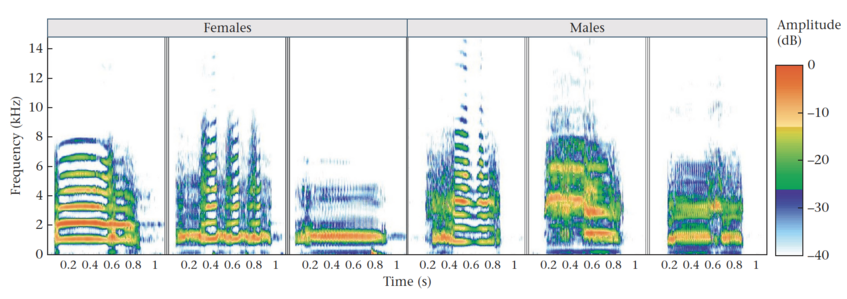
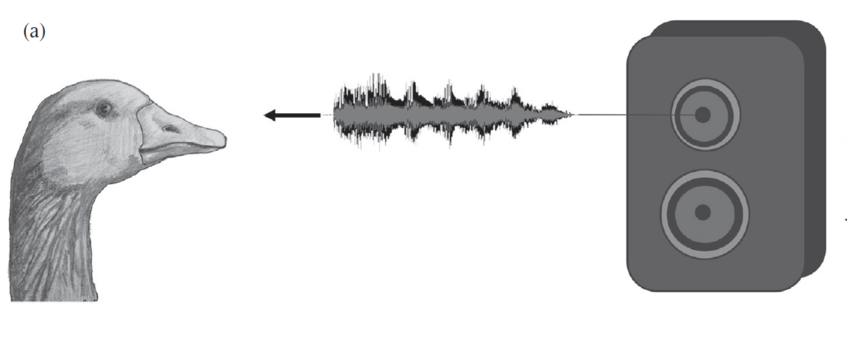
Welcome Tatjana

Welcome Tatjana
For her master's thesis Tatjana will investigate occupancy preferences and breeding success of hole-nesting small birds depending on the material of the nest boxes and depending on different forest types (with/without the presence of humans) in the area in and around the Cumberland Wildpark.
Congratulations for winning the 2021 Purcell Memorial Prize of Science
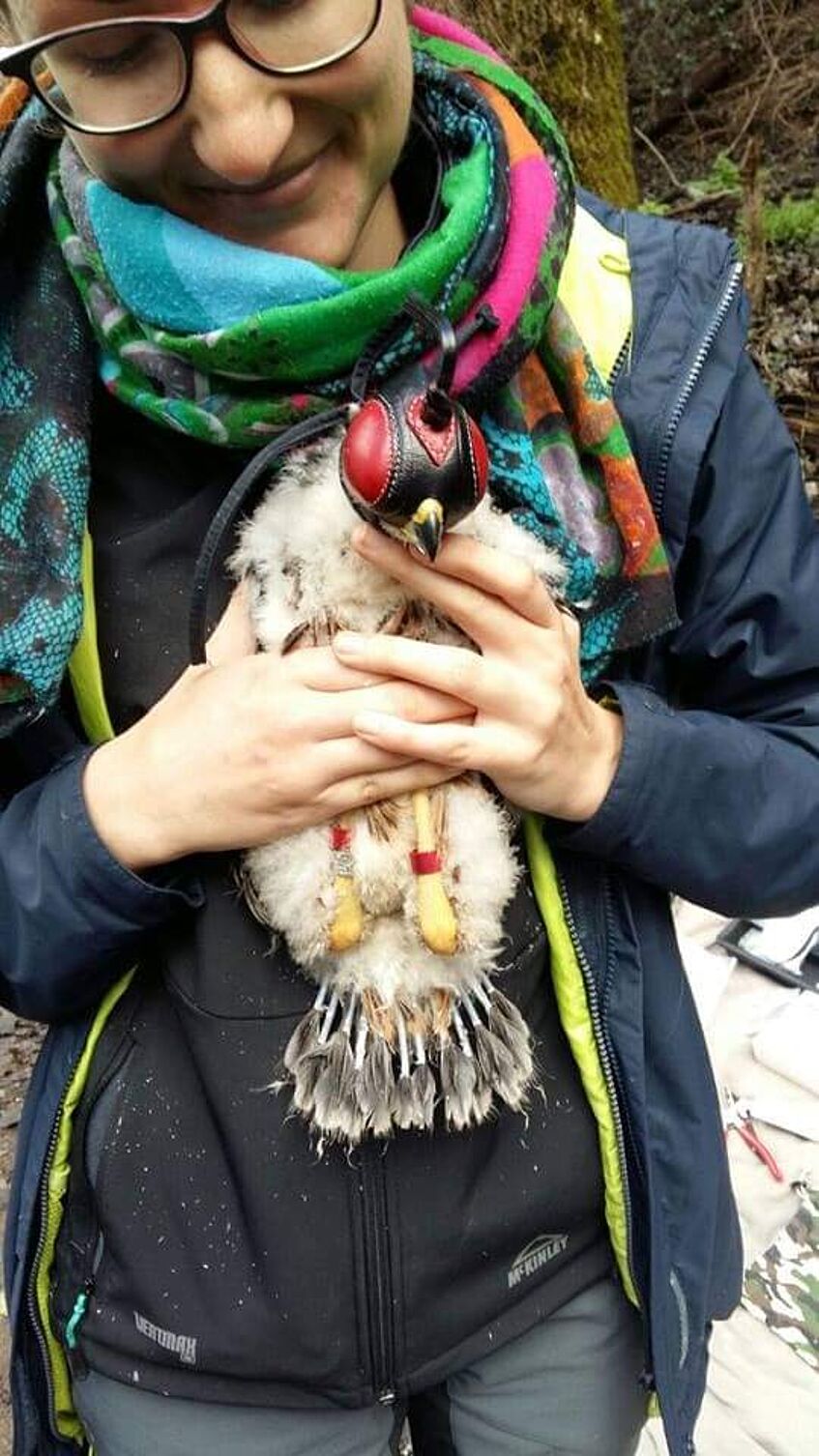
Congratulations for winning the 2021 Purcell Memorial Prize of Science
Carina Nebel, PhD student of Petra Sumasgutner and Arjun Amar, has won the Purcell Memorial Prize of Science for her PhD on the Colour polymorphism of Black Sparrowhawks - this is an award of the Faculty of Science in South Africa, and is given once a year for the best PhD thesis in the field of Biological Sciences. Congratulations!
Welcome Sophie
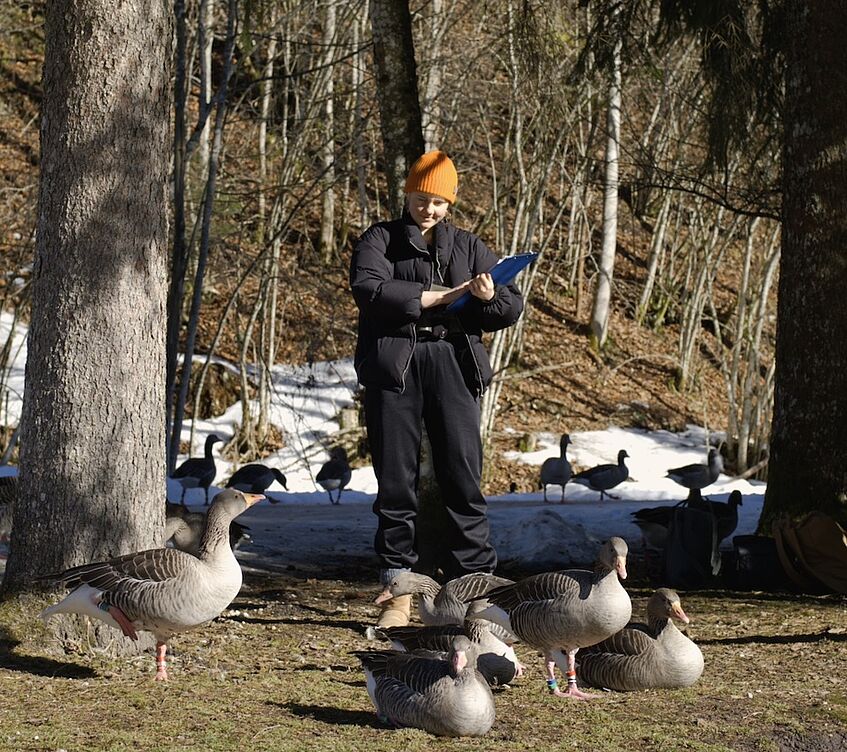
Picture: Stefanie Filz
Welcome Sophie
Sophie is studying Behaviour, Neurobiology and Cognition (Master) at the University of Vienna. As part of an internship at the KLF, she is investigating social structure as well as dominance behavior in greylag geese.
Welcome Salomé

Welcome Salomé
Salomé is a student of Evolutionary Biology at the Faculté des sciences et technologies - Université de Lille. Over the next six months, she will investigate the factors that affect the feeding strategies of free-flying ravens, primarily by observing how they behave when they are fed each morning along with wild boars in the Cumberland Wildpark Grünau.
New Poster: Individual variation of food associated calls in the raven
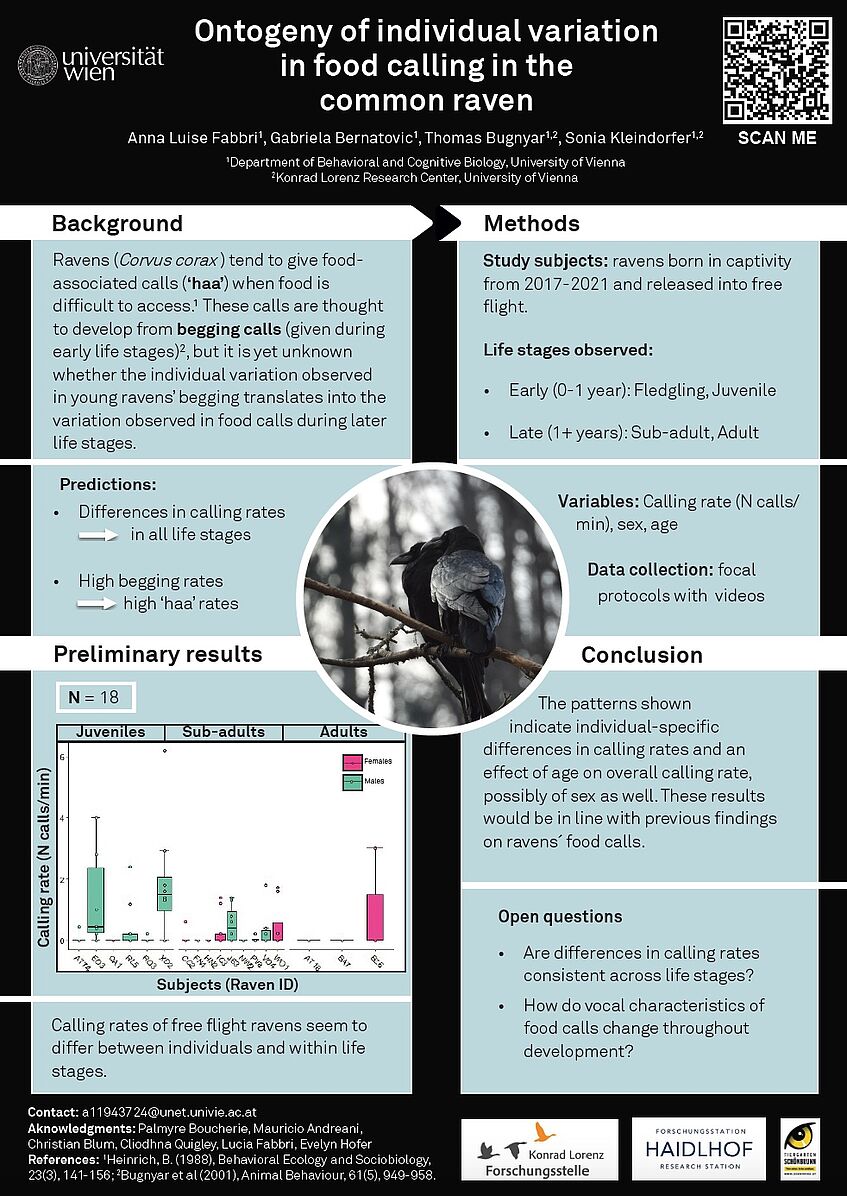
New Poster: Individual variation of food associated calls in the raven
For the VDS CoBeNe PhD Academy, held February 2-4, master's student Anna Fabbri contributed a poster on "Ontogeny of individual variation in food calling in the common raven".
Voluntary Environmental Year at the Konrad Lorenz Research Center (KLF)!
Also this year there is the possibility to do a Voluntary Environmental Year at the KLF (Youth Environmental Platform JUMP). The activities include assistance in knowledge transfer and public relations as well as support in animal care.
Parallel to the volunteer work, the participants complete the accompanying "FUJ training course". With the completion of the course, the participants receive 8 ECTS, which can be credited at the University of Agricultural and Environmental Education.
Application:
www.jugendumwelt.at
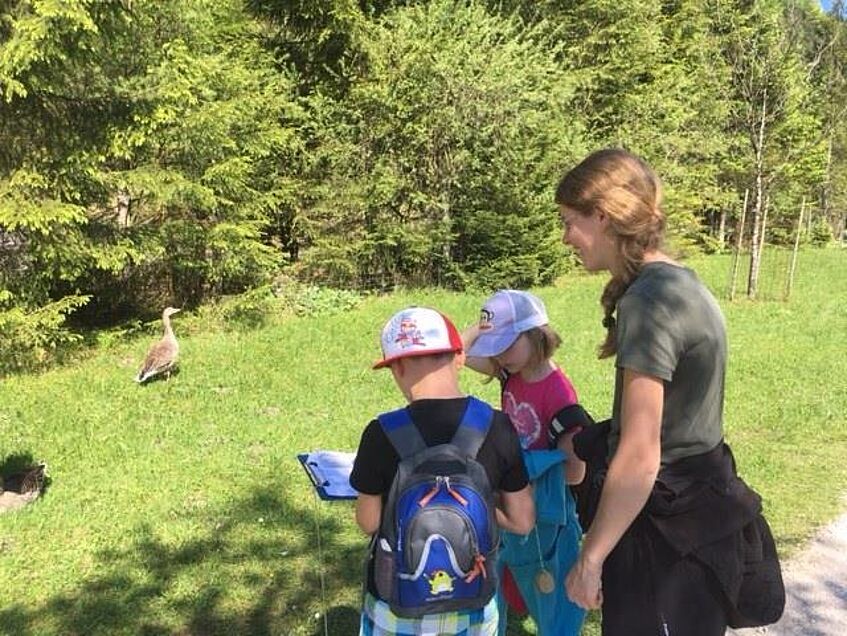
Picture: Archiv KLF
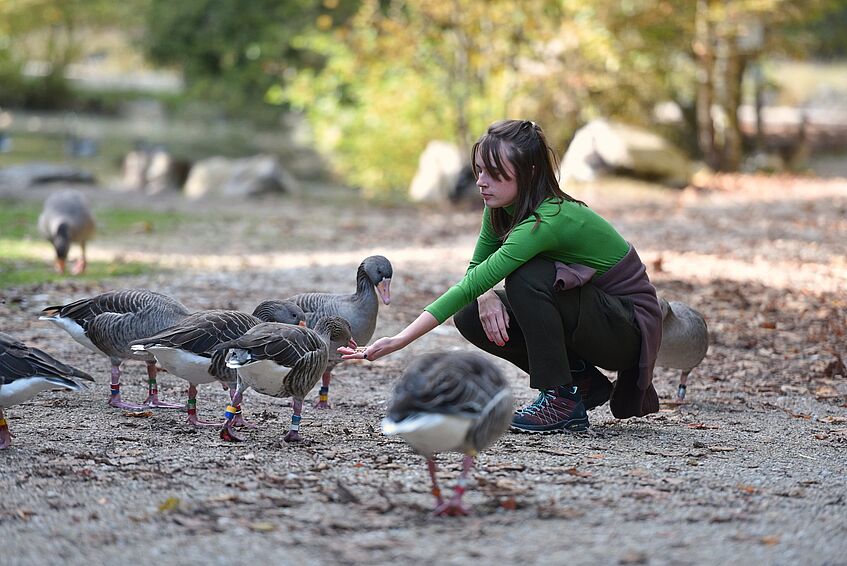
Picture: Benedikt Heger
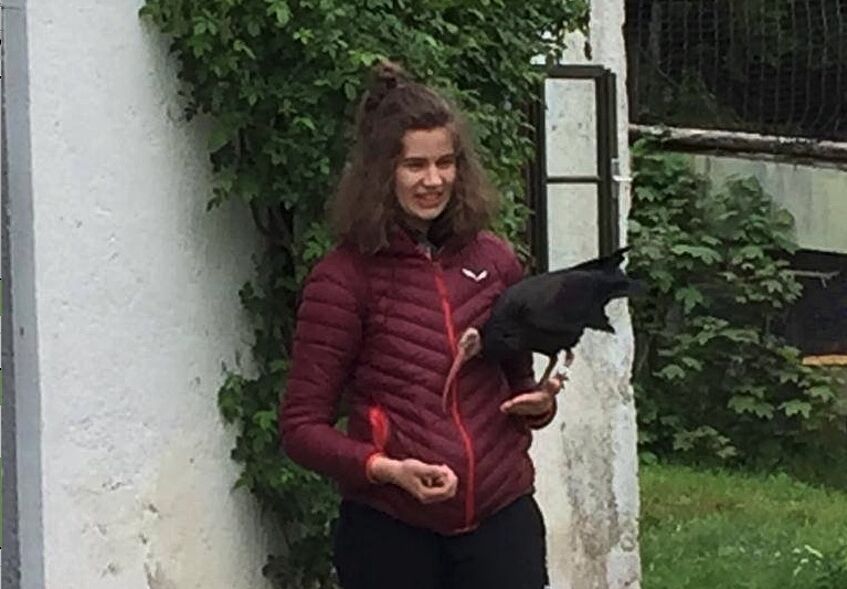
Picture: Archiv KLF
Welcome Tom
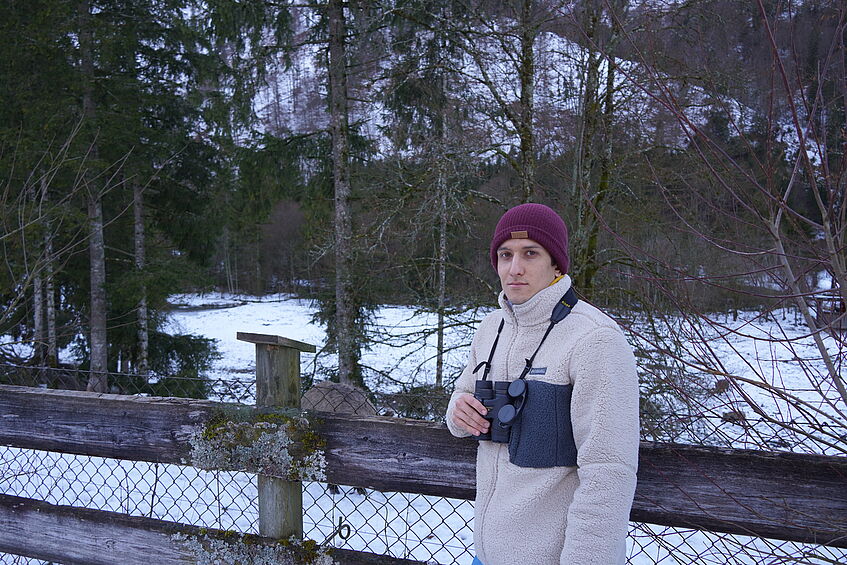
Welcome Tom
Tom studies wildlife ecology and wildlife management at the BOKU - University of Natural Resources and Applied Life Sciences Vienna. As part of his internship at the KLF, he is investigating the "riding" of ravens on wild boars at the Cumberland Wildpark Grünau.
Conference Contribution at the ARRCN Symposium
Petra Sumasgutner and colleagues will speak at the ARRCN Symposium (Asian Raptor Research and Conservation Network) on Thursday, January 20 at 08:00 to present GARRN - the Global Anthropause Raptor Research Network. Registration is still possible, no registration fees.
https://www.arrcn2022.com/registration-abstract-submission.html
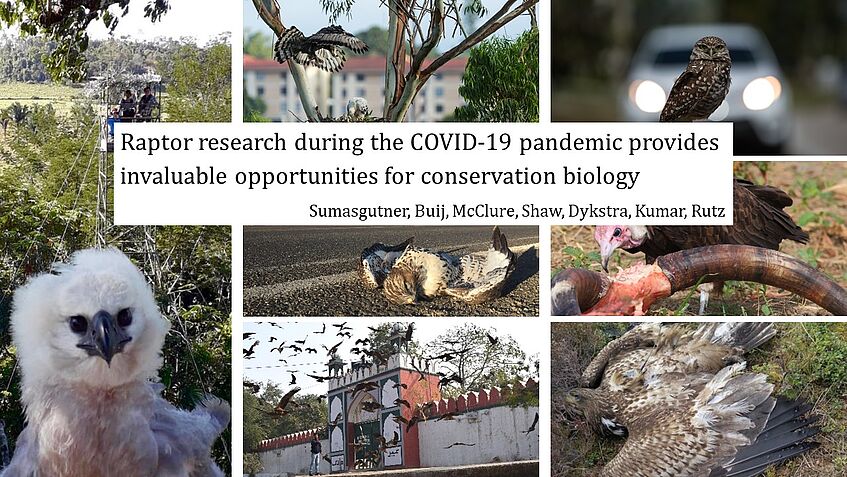
Merry Christmas!
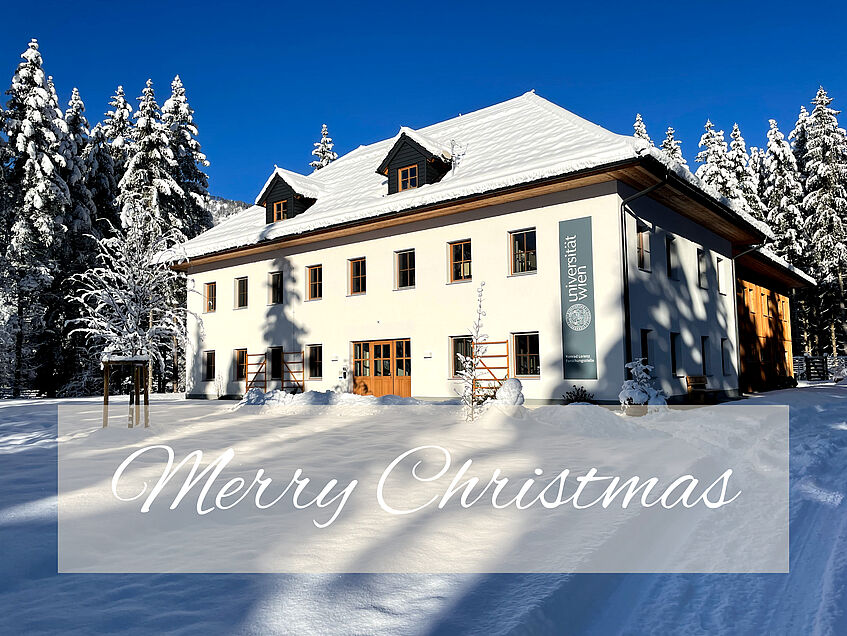
Merry Christmas!
We wish you all Merry Christmas, wonderful holidays and all the best for 2022!
Welcome Gabriela

Welcome Gabriela
We welcome our new master student Gabriela. Gabriela is investigating how parental care in ravens is associated with feeding strategies and feeding success at a common feeding place outside of the family.
Welcome Stefanie and Lilly
Stefanie is collecting behavioral data on free-living crows at Zoo Vienna Schönbrunn using the Citizen Science App KraMobil and is studying their group dynamics as a function of available resources. The title of her master thesis is "Effects of resource availability and distribution on grouping dynamics and foraging strategies in an urban population of crows".
For her master’s thesis Lilly is studying the field choice of Lesser White-fronted Goose, a threatened species, in comparison to other goose species occurring in the same area. In addition, she is having a look on the occurrence of interspecific flocks in connection with the field characteristics and the demonstrated behaviour.
This study is supported by Dr. Niklas Liljebäck (“Projekt Fjällgås”) and Dr. Helmut Kruckenberg (Institute for Wetlands and Waterbird Research e.V., Germany).


New Publication on the influence of the female in-nest attendance on the number of ectoparasites in Darwin's finch species
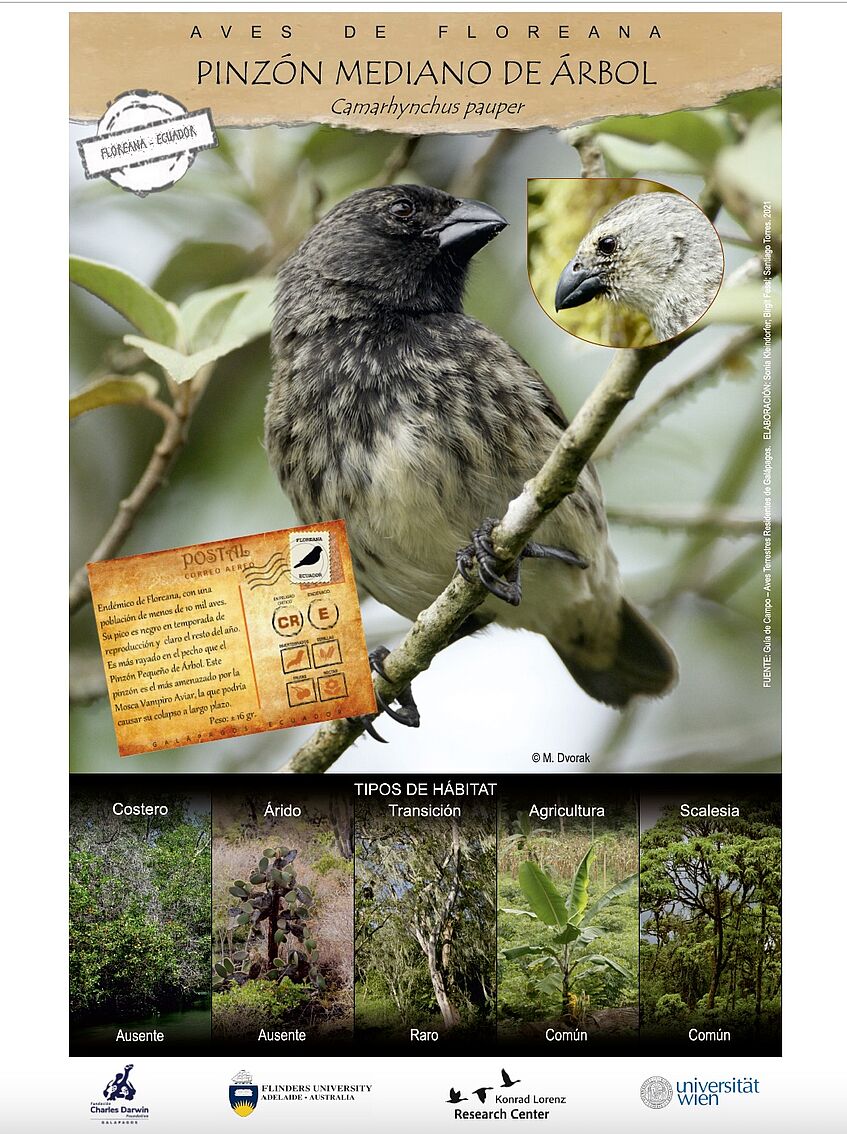
New Publication on the influence of the female in-nest attendance on the number of ectoparasites in Darwin's finch species
Offspring of the 17 Darwin’s finch species are being eaten alive by larvae of an accidentally introduced parasitic fly. First observed in Darwin’s finch nests in 1997, the avian vampire fly feeds on the blood and tissue of developing birds, killing most and causing deformation in survivors. In this study, we focus on parental care and show that adult female finches can reduce chances that avian vampire flies can enter the nest. High quality females that can sustain longer in-nest parental care with less feeding opportunity for themselves, paired with males that increase feeding to the offspring, have better chances to produce offspring in a vampire-fly dominated environment.
Publication in "Proceedings of the Royal Society B":
Kleindorfer S, Common LK, O’Connor JA, Garcia-Loor J, Katsis AC, Dudaniec RY, Colombelli-Négrel D, Adreani NM (2021). Female in-nest attendance predicts the number of ectoparasites in Darwin’s finch species. Proceedings of the Royal Society B.
New Publication on sex role similarity in male and female song
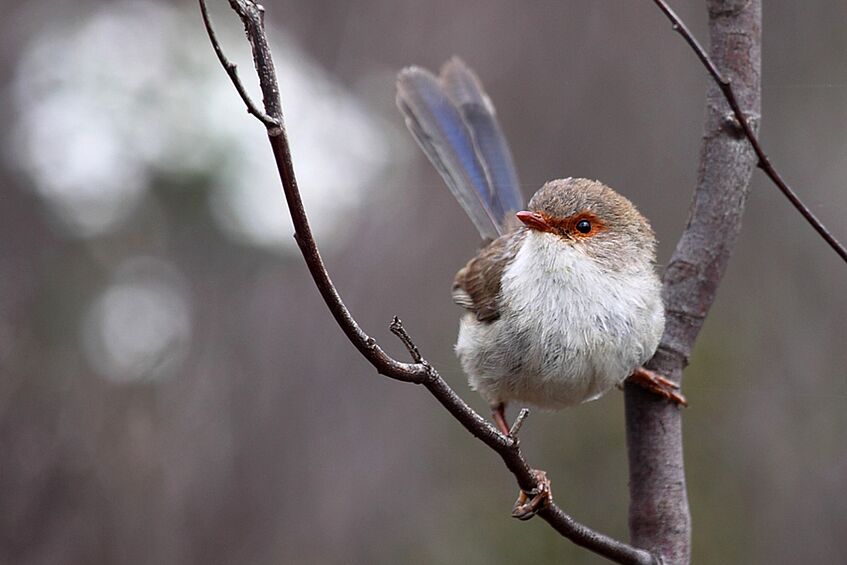
New Publication on sex role similarity in male and female song
A new publication by Karan Odom with Sonia Kleindorfer and colleagues explores sex role similarity in male and female song. Historically, bird song complexity was thought to evolve primarily through sexual selection on males; yet, in many species, both sexes sing and selection pressure on both sexes may be broader. This study across 15 populations of nine fairy-wren species reveals that male and female songs were more similar when parental care was more similar. Our understanding of how and why female birds sing is a neglected area of animal behaviour research, and this study is helping to fill this gap in knowledge.
Publication in Ecology and Evolution:
Odom, K.J., Cain, K.E., Hall, M.L., Langmore, N.E., Mulder, R.A., Kleindorfer, S., Karubian, J., Brouwer, L., Enbody, E.D., Jones, J.A. and Dowling, J.L. (2021). Sex role similarity and sexual selection predict male and female song elaboration and dimorphism in fairy‐wrens. Ecology and Evolution. https://doi.org/10.1002/ece3.8378
Congratulations on the PeerJ-Award
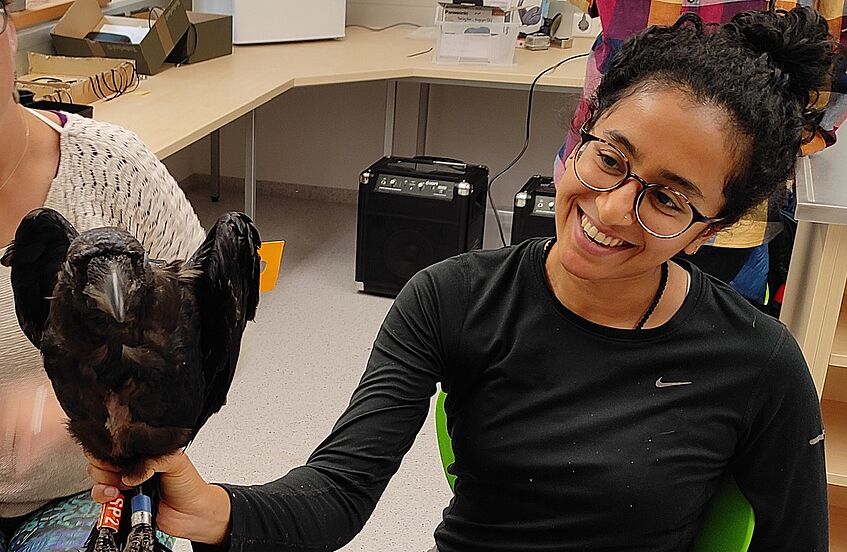
Congratulations on the PeerJ-Award
Congratulations to Varalika Jain for winning the best student transmission at the 7th Bio-Logging Symposium held online in October 2021.
In this blog post, she writes about her research and academic career so far: https://peerj.com/blog/post/115284885148/peerj-award-winners-7th-bio-logging-symposium/
New publication on on causes of nest mortality in the critically endangered Medium Tree Finch

Drawing: Lauren K. Common
New publication on on causes of nest mortality in the critically endangered Medium Tree Finch
KLF researchers Sonia Kleindorfer and Petra Sumasgutner, with PhD student Lauren Common, published their findings on causes of nest mortality in the critically endangered Medium Tree Finch. As shown in this study, ~90% of chick mortality is caused by introduced parasites and predators. The new publication analyses long-term data and proves baseline data against which to compare impacts of the planned eradication of introduced species and rewilding of locally extinct species on Floreana Island. Watch this space over the next years!
Publication in Birds MDPI:
Kleindorfer, S., Common, L.K., Sumasgutner, P. (2021). Nesting Success and Nesting Height in the Critically Endangered Medium Tree Finch (Camarhynchus pauper). Birds MDPI.
Welcome Toni
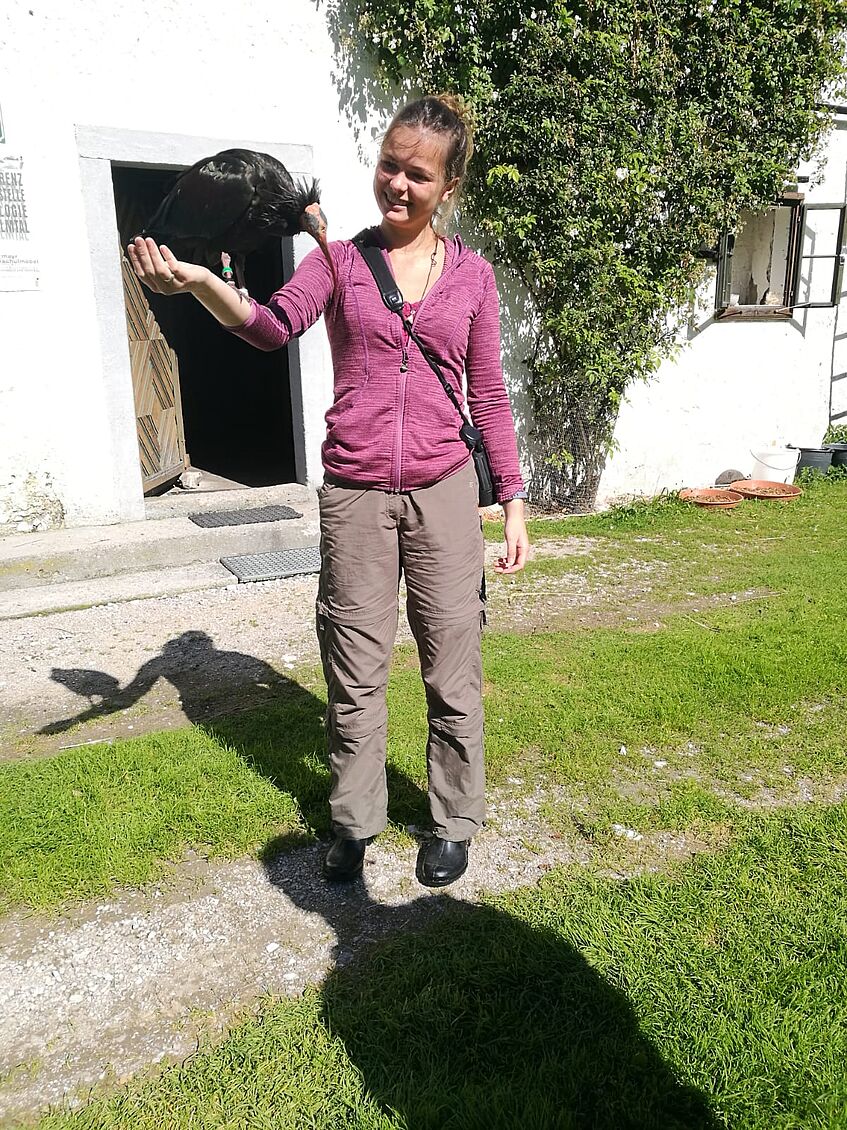
Welcome Toni
For her master's thesis, Toni is studying Darwin's finches in Galapagos. She is investigating whether male age in Galapagos finches is related to the soundscape composition at the nesting territory. For this purpose, she analyzes videos of nests recorded in Galapagos in 2020. Starting in January, she will collect more data in the field. We wish all the best for the upcoming field season.
New publication on the the avian vampire fly
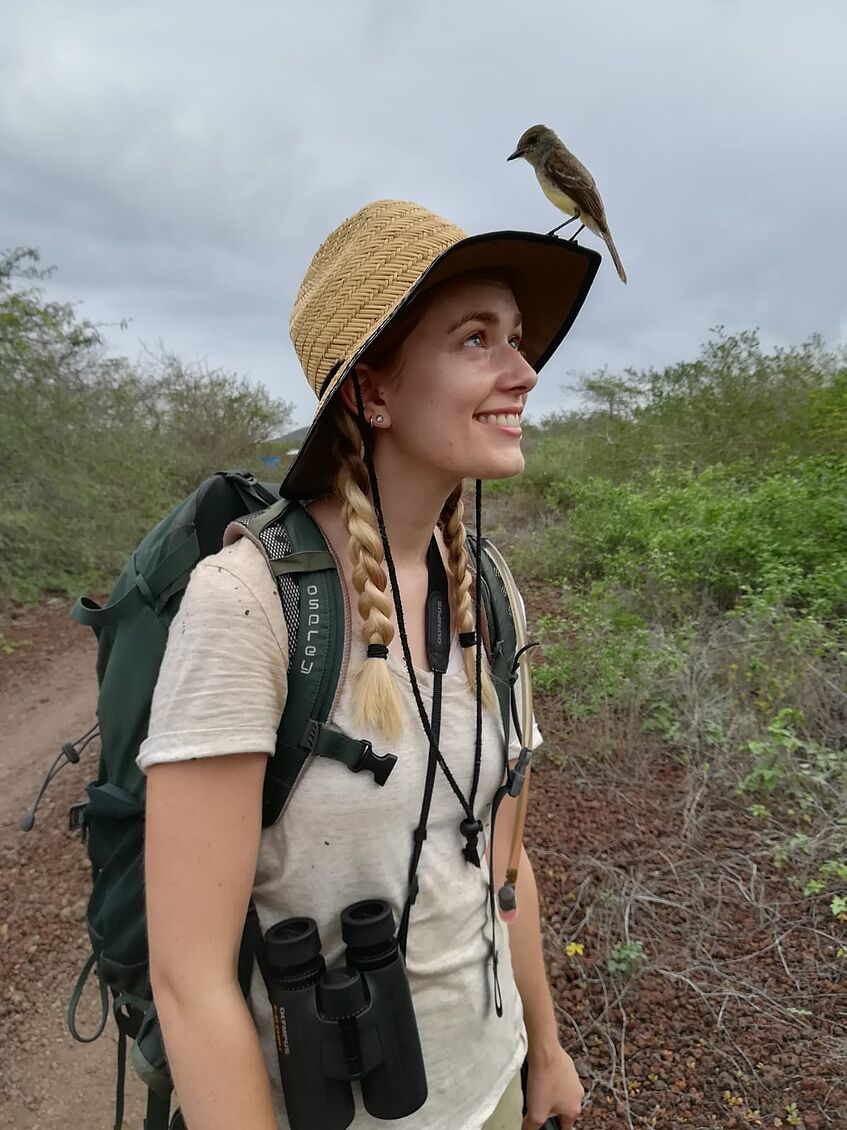
New publication on the the avian vampire fly
In the publication “Temporal and spatial variation in sex‑specific abundance of the avian vampire fly (Philornis downsi)” published in Parasitology Research, Lauren Common and colleagues report on differences in male and female avian vampire fly occurrence on Floreana Island, Galapagos. The new information will be used to develop control measures for this deadly invasive parasite that is the biggest threat to the survival of all Galapagos land birds. Kleindorfer and team have been studying the avian vampire fly on the Galapagos since 2000 and PhD student Lauren Common expanded key knowledge that can be used to control the fly’s spatial distribution.
Publication in Parasitology Research:
Common, L.K., Sumasgutner, P., Sumasgutner, S.C., Colombelli-Negrel, D., Dudaniec, R.Y., Kleindorfer, S. (2021). Temporal and spatial variation in sex‑specific abundance of the avian vampire fly (Philornis downsi). Parasitology Research.
New alumna: Kathrin Arbeithuber

New alumna: Kathrin Arbeithuber
Congratulations to our master student, Kathrin Arbeithuber, for passing her master's exam at the University of Vienna.
Topic of her Master thesis: Disentangling the effects of metabolism on activity levels and boldness: A study of between-individual differences in heart rate and behaviour from embryo to nestling in Northern Bald Ibis (Geronticus eremita)
We wish you all the best for the future!
Welcome Silvia!
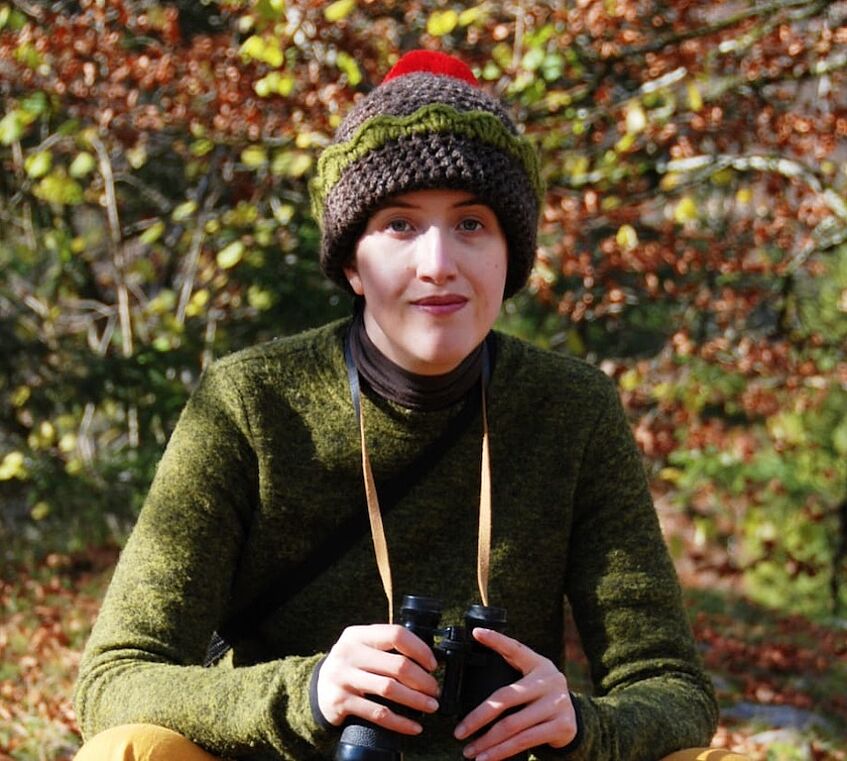
Welcome Silvia!
We welcome our new PhD student Silvia Damini! Silvia is broadly interested in animal behaviour and cognition. For her PhD she will be studying ravens´ interspecific interactions with wolves and wild boars in the foraging context.
Talk by Martin Rössler at the KLF
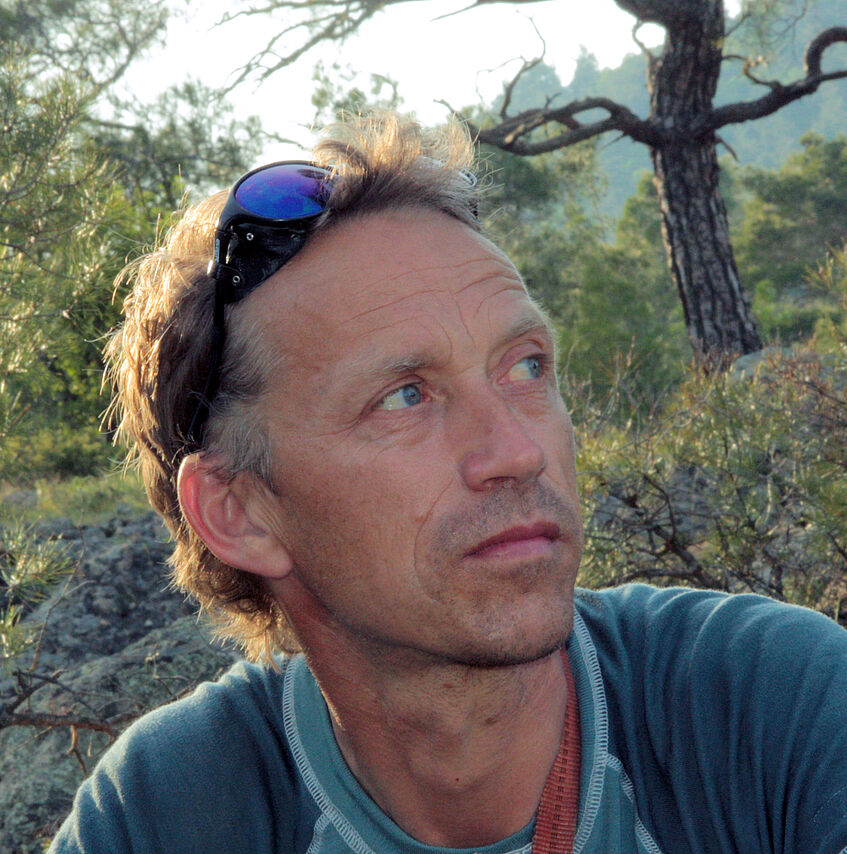
Talk by Martin Rössler at the KLF
A talk by ornithologist Martin Rössler will be held on Monday Nov. 8 at 2 p.m. at Konrad Lorenz Research Center in Grünau/Almtal. He will report on his research on the problem of glass surfaces for birds using experimental test tunnels. Martin Rössler studied landscape ecology and landscape design at BOKU - University of Natural Resources and Applied Life Sciences Vienna and founded the Verein Auring: Biological Station Hohenau-Ringelsdorf.
The lecture will be held in German.
We would like to invite interested visitors to attend this talk in presence (2.5-G proof required, FFP2 mask mandatory) or online. Limited number of participants. Registration absolutely necessary under: gudrun.gegendorfer@univie.ac.at
New Publication about the Global Raptor Impact Network GRIN
In this paper, the Global Raptor Impact Network (GRIN), a tool to enhance collaboration and conservation impact of the raptor research community is introduced and an overview of the history and current state of GRIN, including plans for expansion, and outline the recently launched collaboration with the Global Anthropause Raptor Research Network (GARRN) is provided. Within these networks, population impacts of human-raptor interactions were investigated, information was provided about conservation efforts and ultimately helped safeguard raptor populations in the Anthropocene.
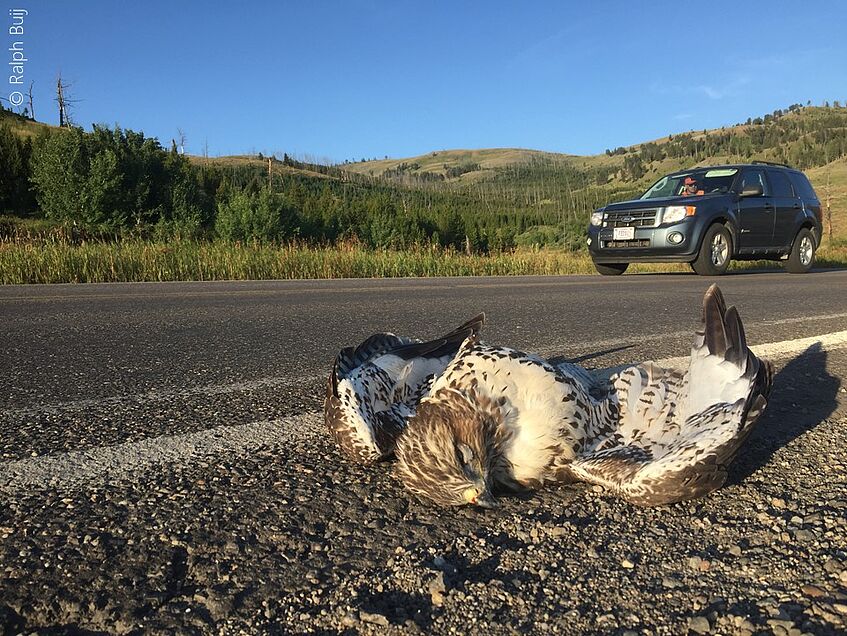
Picture: Ralph Buij
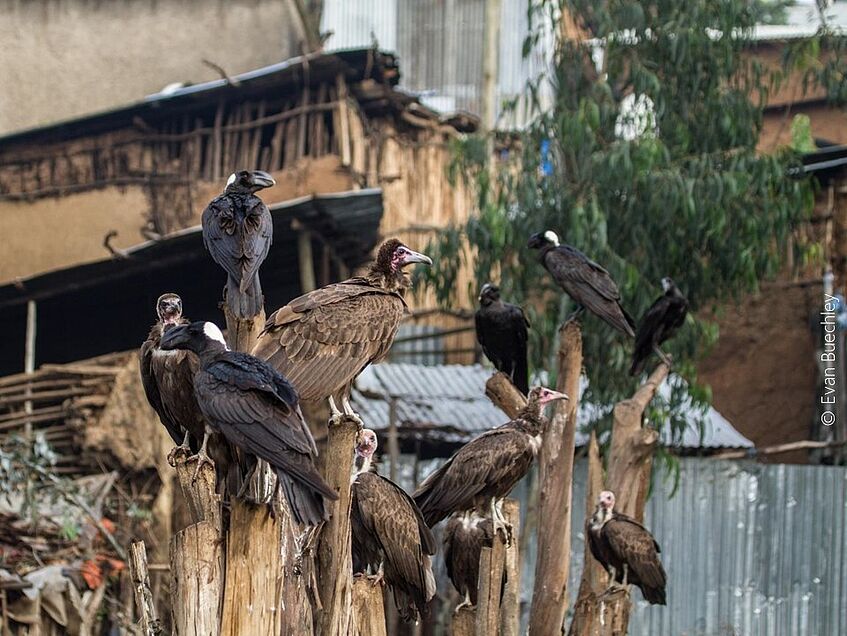
Picture: Evan Buechley
Welcome Jefferson
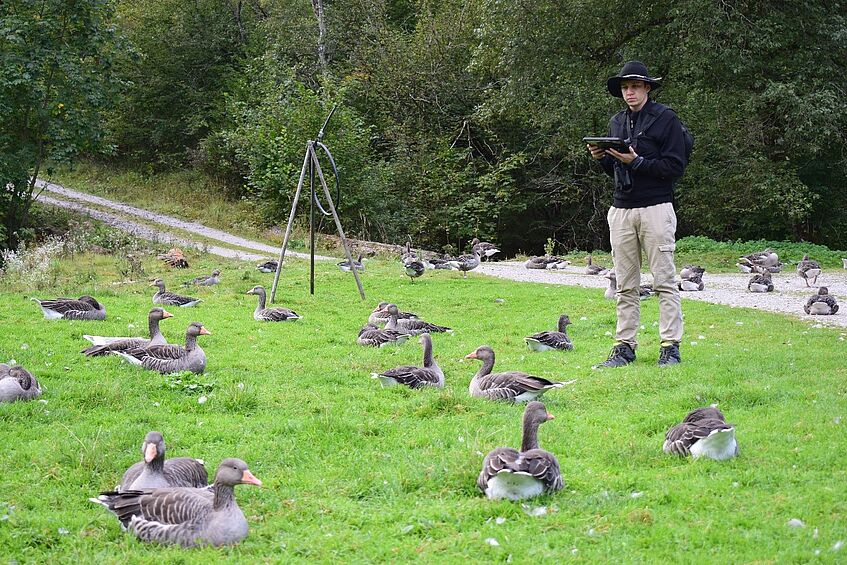
Picture: Benedikt Heger
Welcome Jefferson
Jefferson got his degree in Biology in Ecuador and had been working in different projects mainly in the Amazon region and Galápagos. He is interested in Animal Behavior and Evolution. His PhD Project will be focused on how the behave of finches can change against the absence of the predator. In Grünau, he will also work on projects with greylag geese.
New publication on mechanisms and impact of urbanisation on wildlife
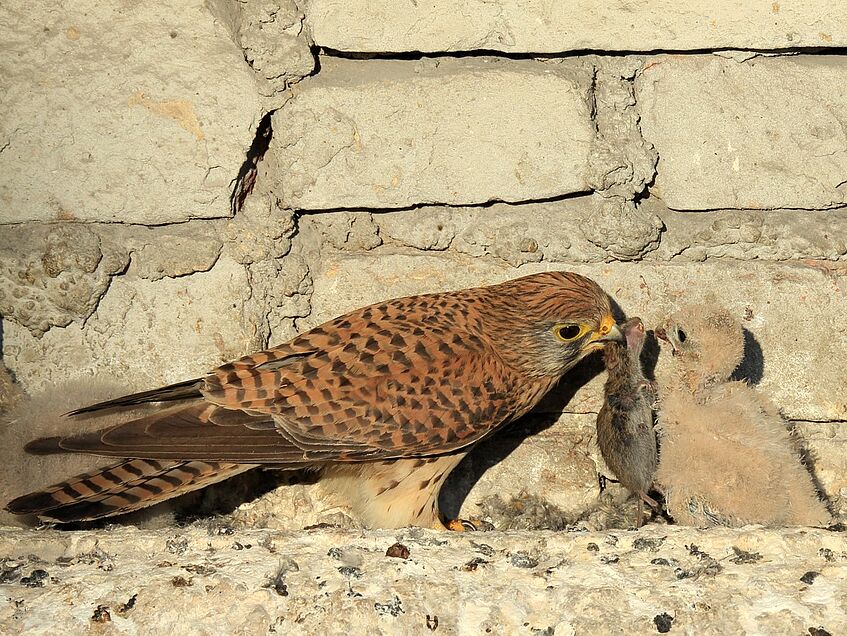
Picture: Franz Kerschbaum
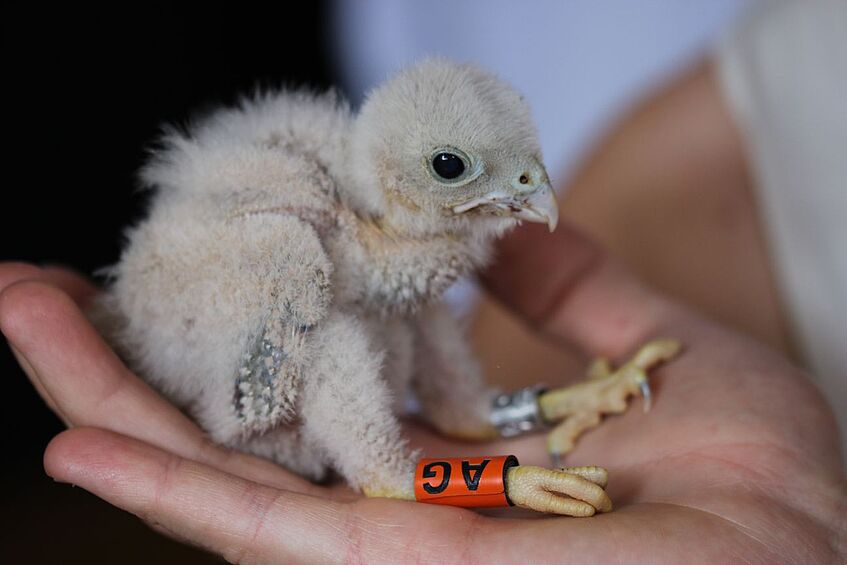
Picture: Turmfalkenprojekt Wien
New publication on mechanisms and impact of urbanisation on wildlife
Globally, more people live in urban areas than in rural ones. This rapid urbanisation poses challenges for sustainable development and public health. But the picture looks even grimmer for animals. Urbanisation is a new selective force that is changing the composition of animal communities tremendously, but there is still a clear research gap in understanding the mechanisms and impact of urbanisation on wildlife. Here we used a biomarker approach - an indirect indicator of vigour or performance, to infer to what we commonly refer to as health - to unravel how urban kestrels respond to the exposure to urban stressors.
Publication in The Science of Nature:
Wemer, L., Hegemann, A., Isaksson, C., Nebel, C., Kleindorfer, S., Gamauf, A., . . . Sumasgutner, P. (2021). Reduced ectoparasite load, body mass and blood haemolysis in Eurasian kestrels (Falco tinnunculus) along an urban–rural gradient. The Science of Nature.
Welcome Awani!
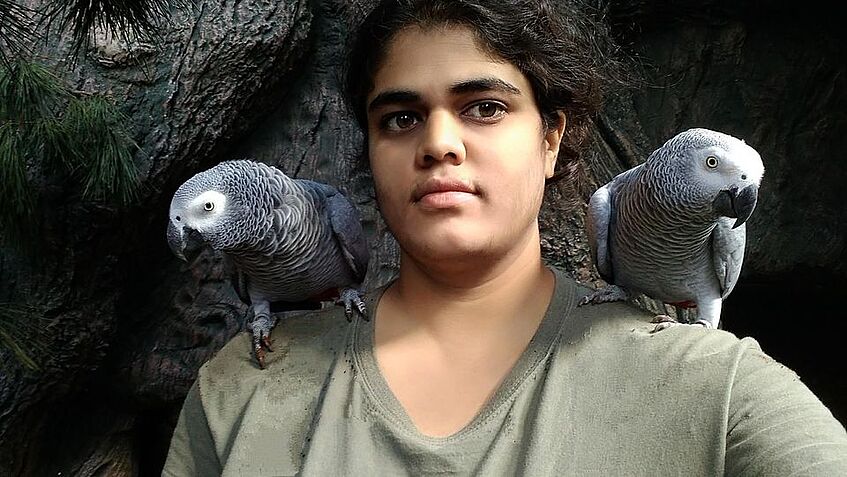
Welcome Awani!
Awani is broadly interested in studying the evolution of social behaviour and cognition. For her PhD, she will be focussing on the use of social information and strategies for social interactions by free-flying ravens.
New Publication about red-winged starlings
Urban birds commonly exploit anthropogenic food, but the influence of short-term pulses in food availability, linked to human activity cycles (weekday/weekend), is largely unknown. In this issue, Catto and colleagues found that adult red-winged starlings had greater daily mass gain on weekdays, while nestlings were smaller and lighter if parents primarily fed junk food. The quantity of human food available may therefore benefit adult survival, while its lower quality imposes a cost to nestling growth.
Publication in Oecologia:
Catto, S., Sumasgutner, P., Amar, A., Thomson, R. L., & Cunningham, S. J. (2021). Pulses of anthropogenic food availability appear to benefit parents, but compromise nestling growth in urban red-winged starlings.
https://link.springer.com/article/10.1007/s00442-021-05033-3
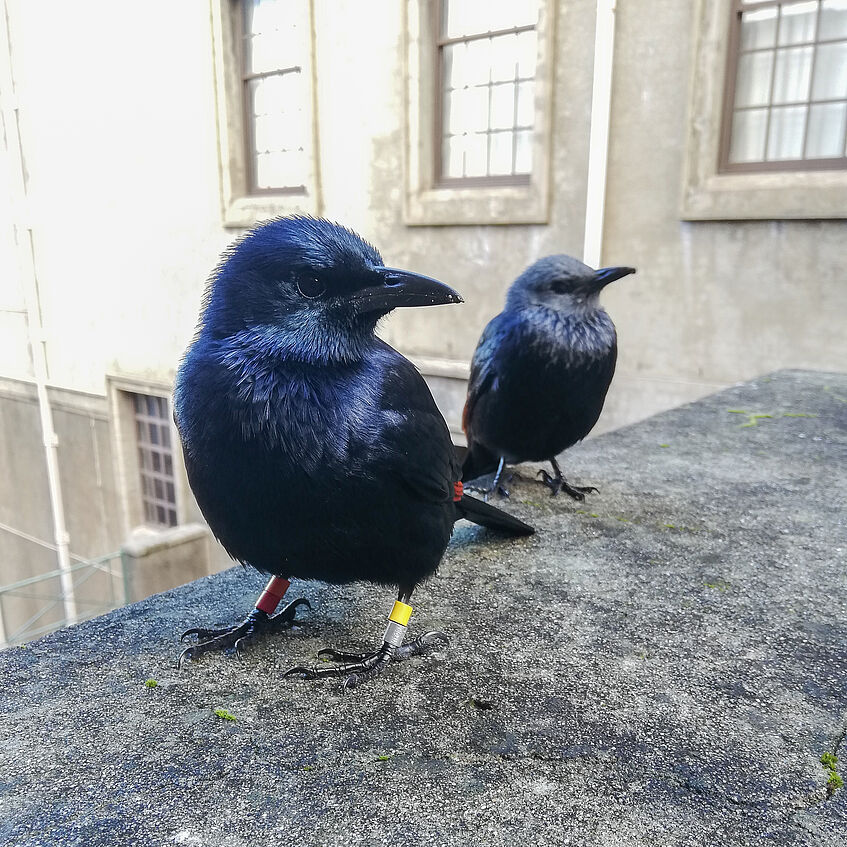
Picture: © Susie Cunningham
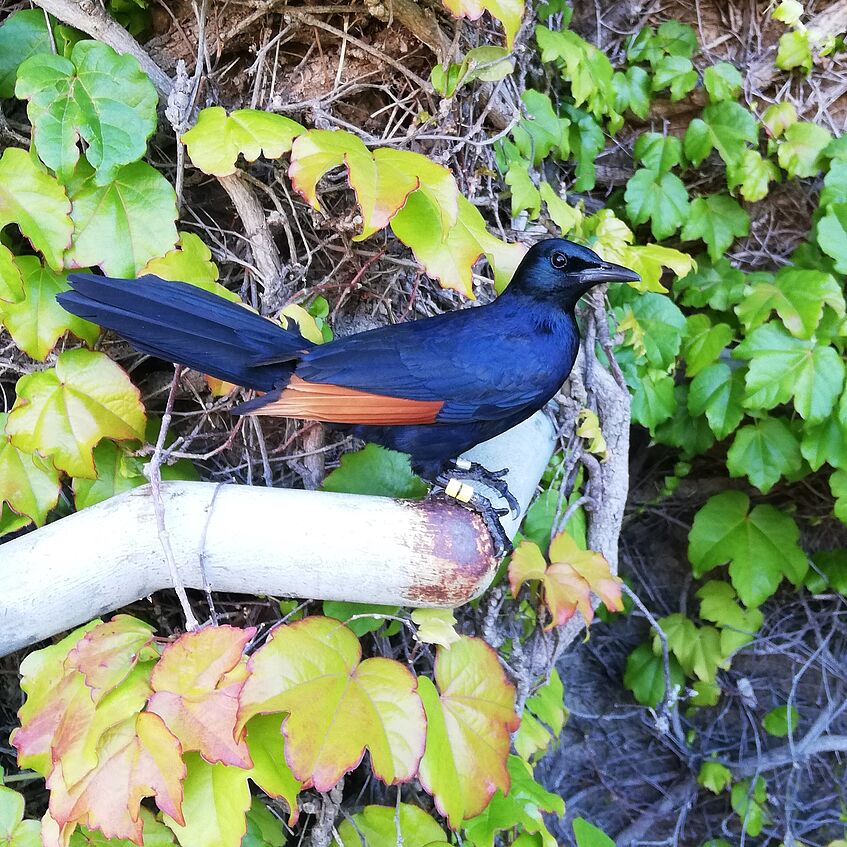
Picture: © Susie Cunningham
Welcome Paula and Benedikt
Biology student Paula Pröll from the University of Vienna is currently helping with long-term monitoring of greylag geese. She is also assisting other Master and PhD students with their projects.
Benedikt is a master student of wildlife ecology and wildlife management at BOKU - University of Natural Resources and Applied Life Sciences Vienna. As part of his master's thesis, he is studying the different reactions of greylag geese to their own mirror images, as well as to life-size photographs of their conspecifics.

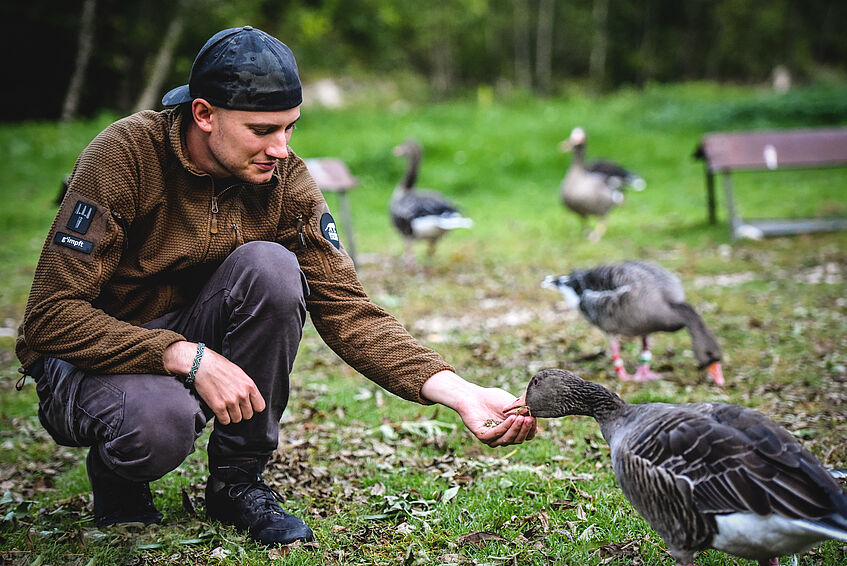
New Publication on how songbirds learn vocalizations
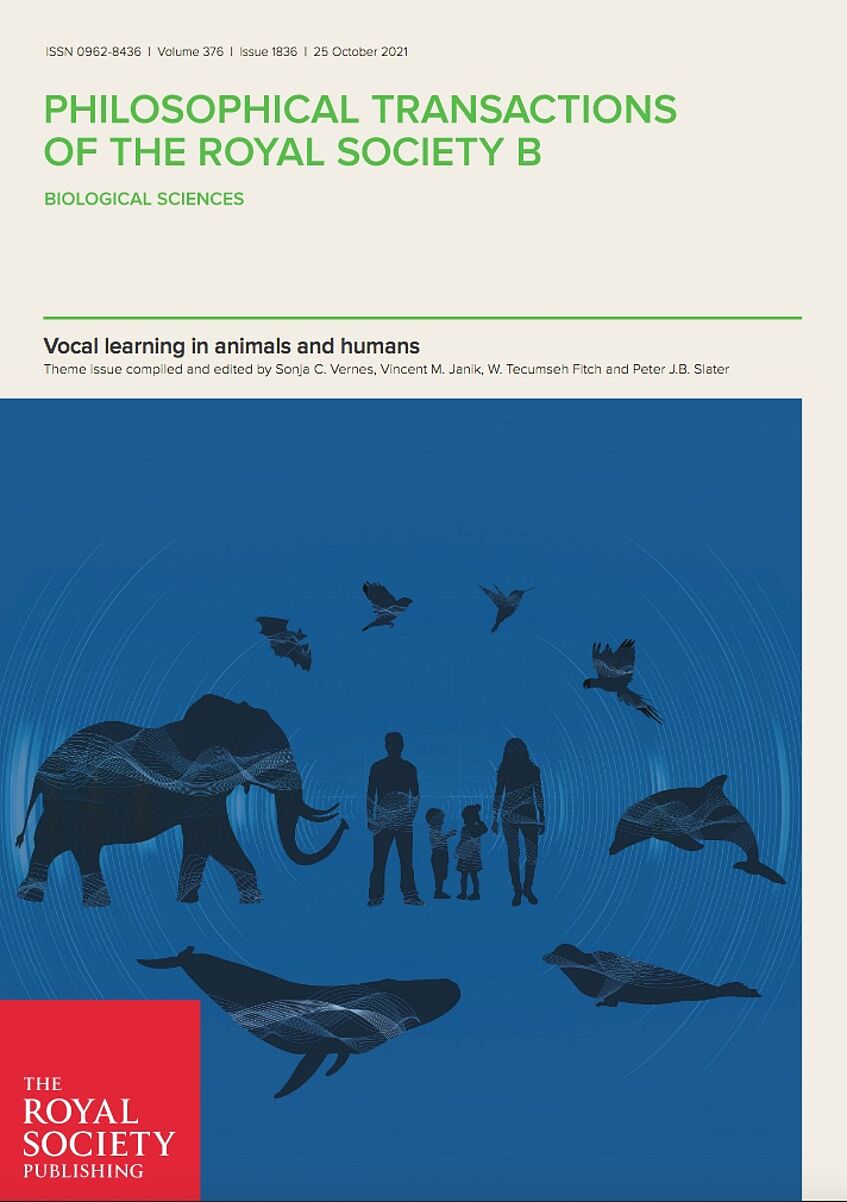
New Publication on how songbirds learn vocalizations
New paper published by Diane Colombelli-Négrel, Sonia Kleindorfer, Nico Adreani and colleagues on Prenatal auditory learning in avian vocal learners and non-learners.
Publication in "Philosophical Transactions of the Royal Society B: Biological Sciences":
Biologicum Almtal and Junior Biologicum 2021: Nature and Science through the ages
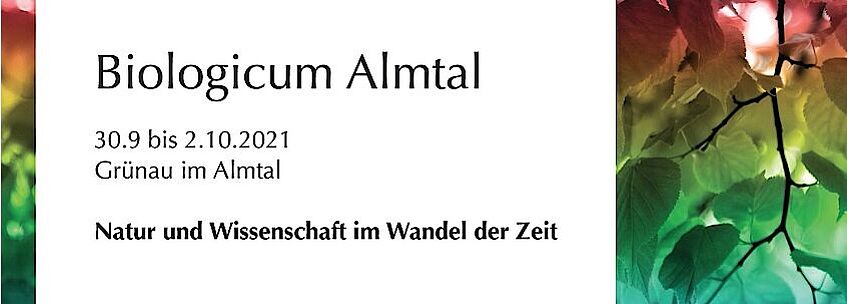
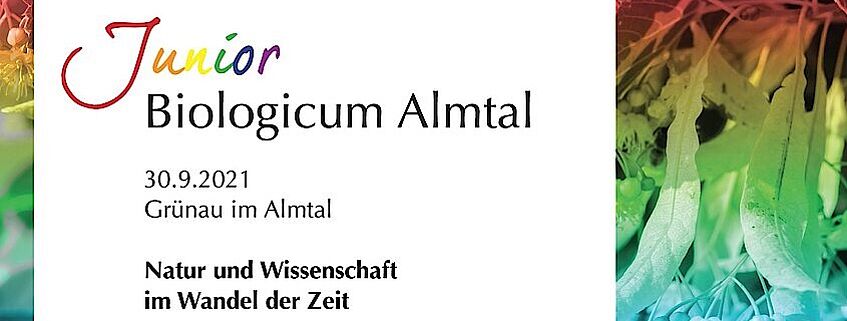
Biologicum Almtal and Junior Biologicum 2021: Nature and Science through the ages
The Biologicum Almtal is a symposium for interested people. No previous knowledge is necessary. The Junior Biologicum is for high school students. The lectures are in German. In this year's Biologicum Almtal and Junior Biologicum we will focus on "Nature and Science through the ages". Different perspectives will be used to illuminate how changes can be measured, how they have a long-term effect and which collective behavioral changes can lead to a sustainable approach to nature. Ten speakers will look at the changes, the transformation in their own scientific disciplines and will be available for discussion and exchange.
Biologicum Almtal and Junior Biologicum will take place under the scientific direction of Sonia Kleindorfer and Didone Frigerio, the general organization will be done by staff members of the Konrad Lorenz Research Center in cooperation with the International Academy Traunkirchen. We welcome the cooperation with a regional partner institution that encourages people in their enthusiasm and talent for natural sciences and technical development and supports the encounter with science. After an online event last year, this year we are looking forward to a lively exchange in the beautiful Almtal valley in early autumn, with exciting lectures and discussions, interesting excursions, a cabaret as an entertaining evening program and the usual delicious culinary accompaniment.
W https://biologicum-almtal.univie.ac.at/
New Publication on Greylag Geese
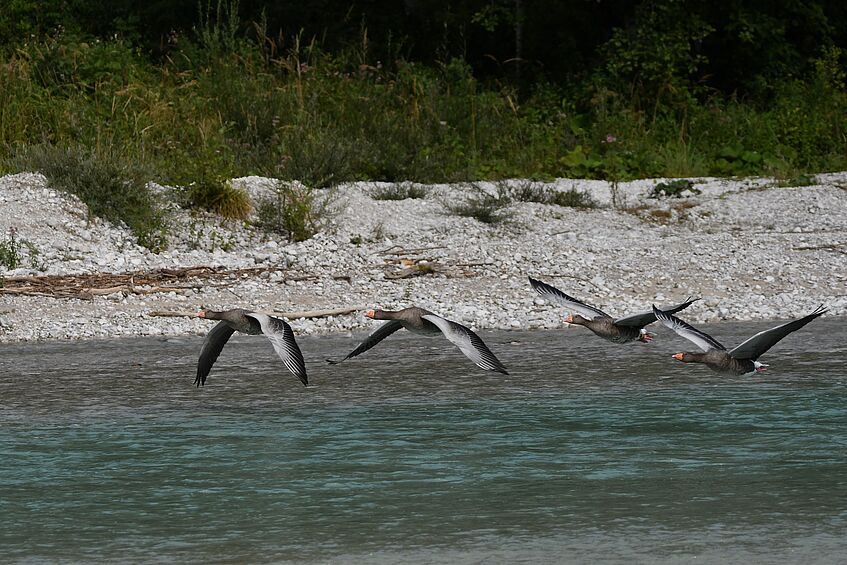
Picture: Josef Hemetsberger
New Publication on Greylag Geese
Didone Frigerio, Petra Sumasgutner and colleagues showed associations between climate, breeding phenology, and reproductive output in greylag geese. "With warmer winters, more females were able to breed. Overall, more young fledged," Didone Frigerio said.
Publication in Scientific Reports:
https://www.nature.com/articles/s41598-021-95011-9
Publication „Citizen Science – Doing Research with Schools“ published

Picture: Daniel Fessl
Publication „Citizen Science – Doing Research with Schools“ published
The publication "Citizen Science - Doing Research with Schools. Basics, recommendations & practical tips for joint projects" of the OeAD - Center for Citizen Science has been published. Didone Frigerio contributed as an author to two of the seven chapters.
Download (in German)
New publication on Black Sparrowhawks
Carina Nebel, Petra Sumasgutner and colleagues revisited the mode of colour morph inheritance in the Black Sparrowhawk. By constructing a multigenerational pedigree, they showed that the dark allele is actually genetically dominant over the light allele. This is despite the fact that light morph bird are more abundant across the African continent.
Figure 1) Within-morph variability expressed in dark morph black sparrowhawk.
Figure 2) Within-morph variability expressed in light morph black sparrowhawk. (Top) plumage variability on the throat, breast and belly, (bottom) plumage variability on the underwing coverts. Variability is expressed as varying amount of black and white feathers, i.e. as a white throat or white speckles on the breast.
Publication in Journal of Zoology:
Nebel, C., Sumasgutner, P., Rodseth, E., Ingle, R. A., Childs, D. Z., Curtis-Scott, O., and Amar, A. (2021) Multigenerational pedigree analysis of wild individually marked black sparrowhawks suggests that dark plumage coloration is a dominant autosomal trait. Journal of Zoology.
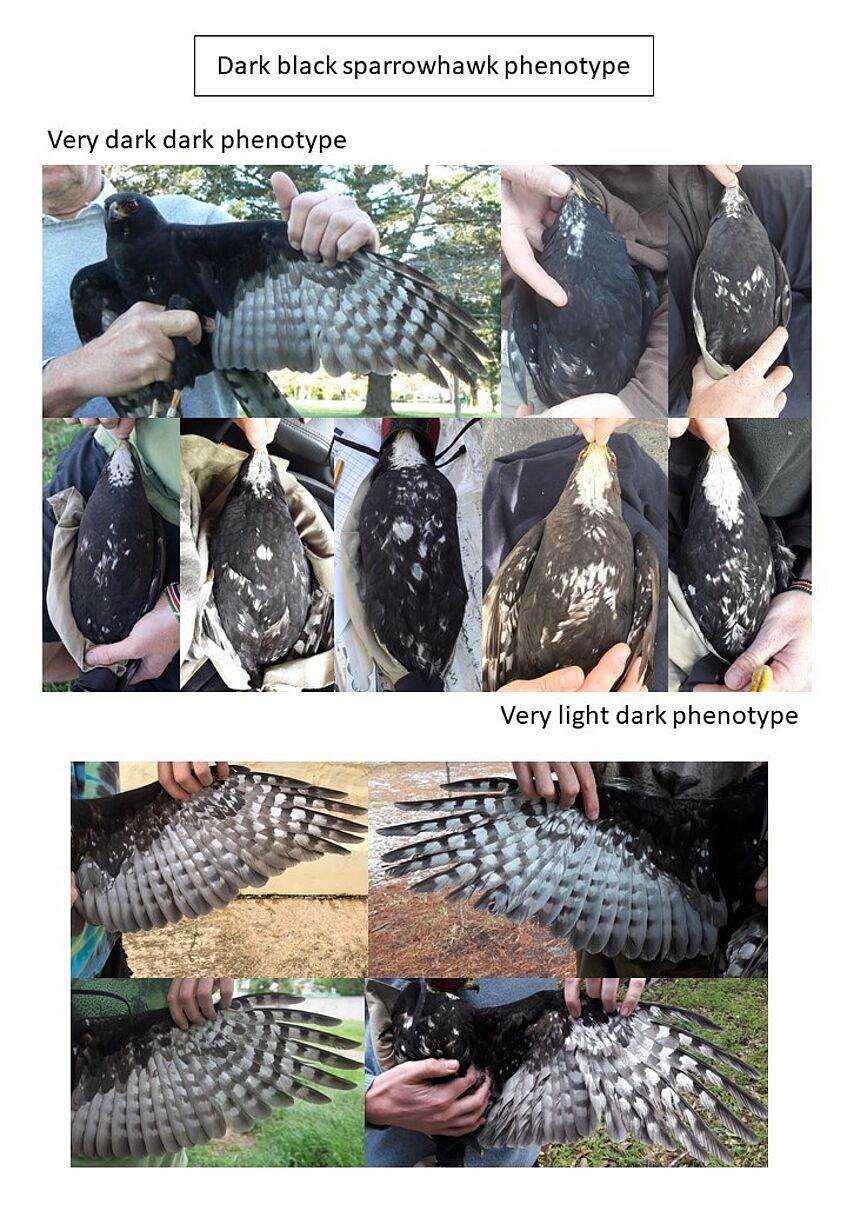
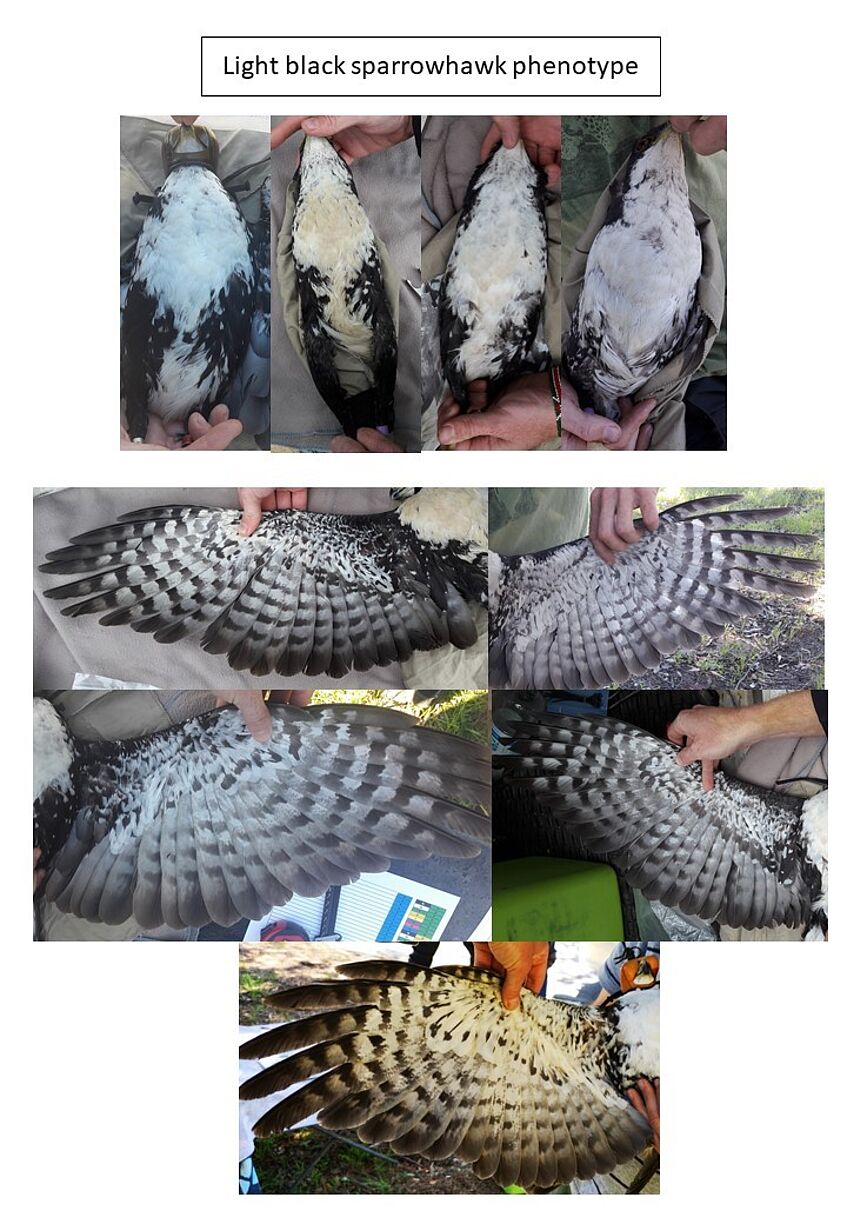
Effects of the COVID-19 pandemic on wildlife
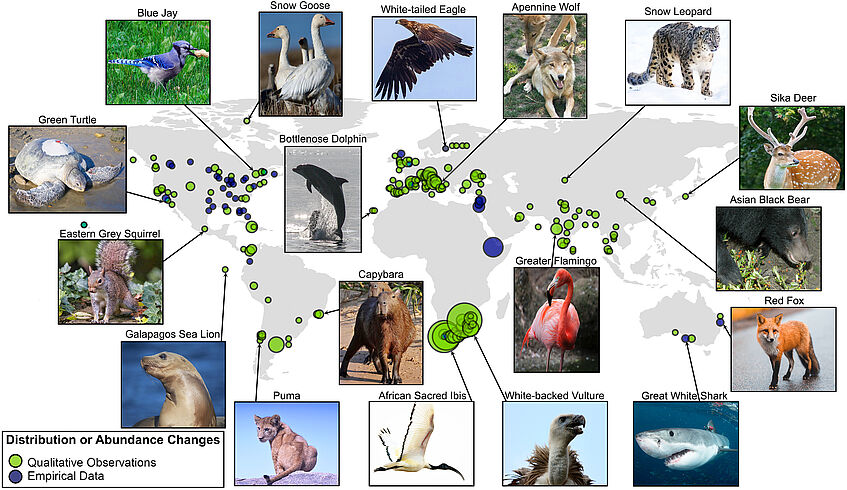
Effects of the COVID-19 pandemic on wildlife
Petra Sumasgutner and The Red-winged Starling Team from Cape Town are part of the PAN-Environment Working Group who aim to disentangle positive and negative effects of humans on our wilderness. The research opportunity emerging from the tragic circumstances of the COVID-19 pandemic revealed that humans are not only a threat but also important custodians of species and ecosystems. Specifically in the starling case study, the researcher found that adult birds had consistently lower body masses during lockdowns than in preceding years. Birds were 4.1 +/- 1 g lighter between precovid and covid, which is approx. 3% of body mass.
Publication in "Biological Conservation":
Ringing urban kestrels
The collaboration between the Vienna firefighters and the Kestrel Project Vienna started in 2010 and has become a special day for both, the firefighters and the researchers. Many of the nest sites in inner city districts are only accessible via the turntable ladder and contribute therefore significantly to our sample size. This year, the project is carried by MSc student Tom Nilles and Dr Manuela Merling de Chapa who gained ample of urban raptor experience when working on goshawks, and who is helping us with her expertise in sampling, measuring and ringing urban kestrels. Many thanks to the team!



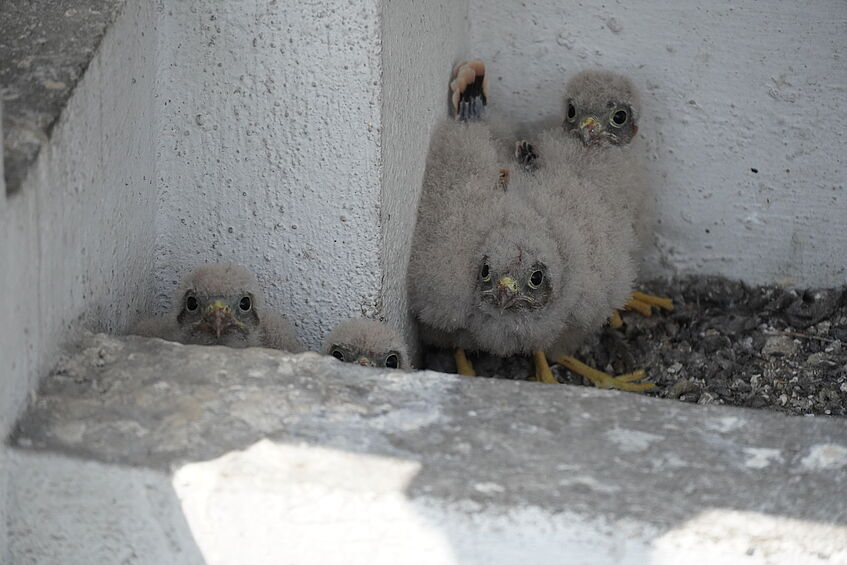
Welcome Veronika & Eva-Maria!
We welcome our new master students Veronika Weinhäupl and Eva-Maria Körmer. Both are from the University of Natural Resources and Life Sciences in Vienna. Veronika investigates the departure call structure in Greylag geese, while Eva investigates the call structure of contact calls in Greylag geese.


New publication on Black Sparrowhawks
Carina Nebel, Petra Sumasgutner and colleagues aimed to unravel mechanistic pathways by which both, the light and the dark morph of the Black Sparrowhawk can maintain within the same population in stable morph ratios. This research has shown that mixed-morph pairs (consisting of a light and dark morph parent) have higher productivity and that their offspring has higher survival rates. Here the authors disentangle a potential trade-off between body mass and immune function which might explain how skinnier chicks end up being stronger fledglings.
Publication in "Scientific Reports":
Figure caption: 1) Blood sampling of a black sparrowhawk chick for the biomarker approach. 2) Black sparrowhawk moulting from the rufous brown juvenile plumage into the eponymous black adult plumage
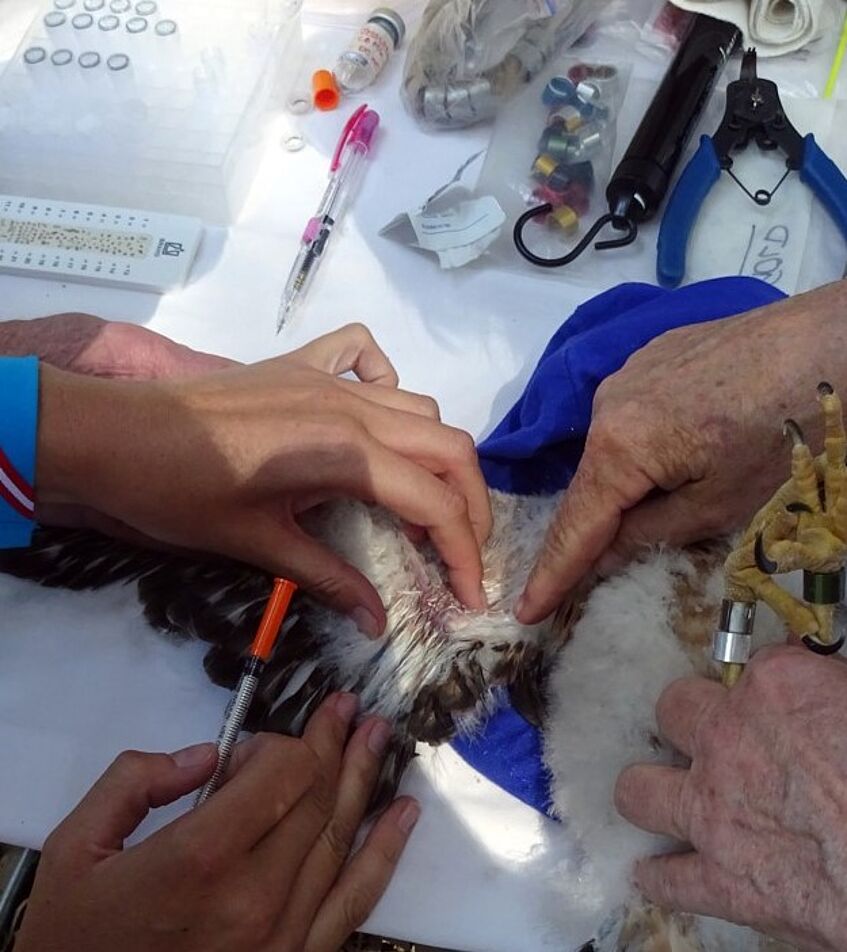
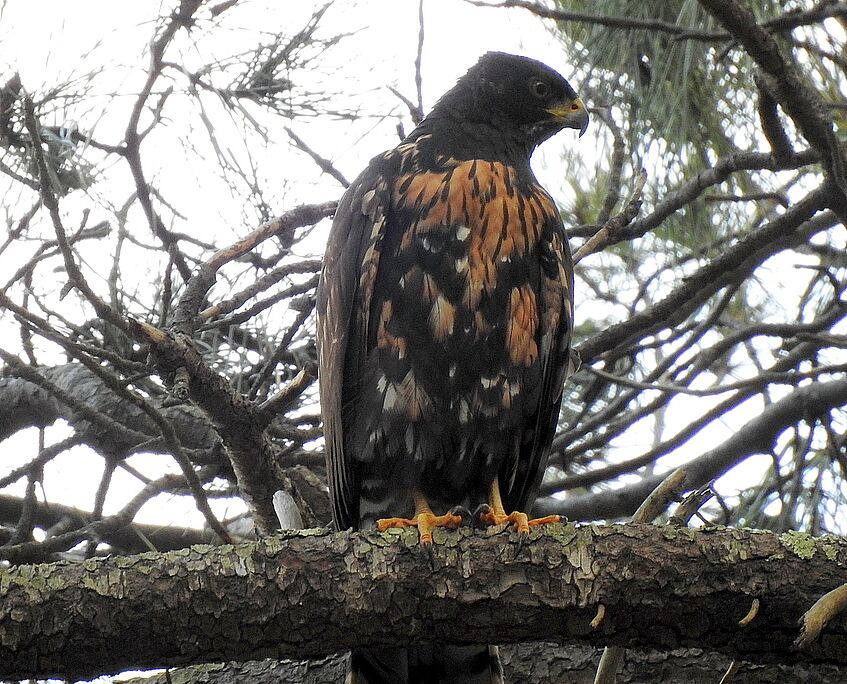
TV Tipp
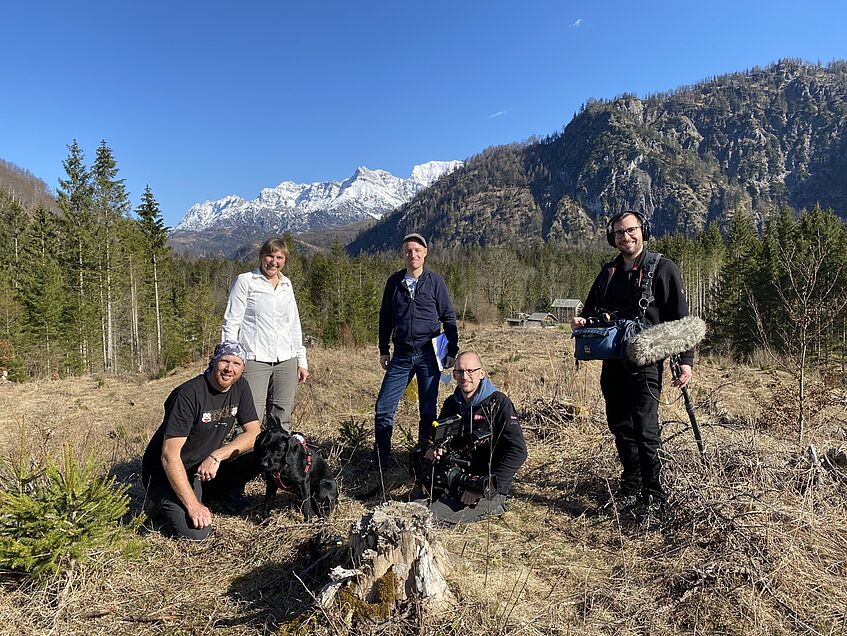
Picture credits: Alex Limberger
TV Tipp
"Highly motivated on four paws - dog puppy training in Upper Austria" with the conservation dog in training Nala on Thursday, 13.5. at 17:35 on ORF2.
https://tv.orf.at/program/orf2/20210513/962380001/
New paper published
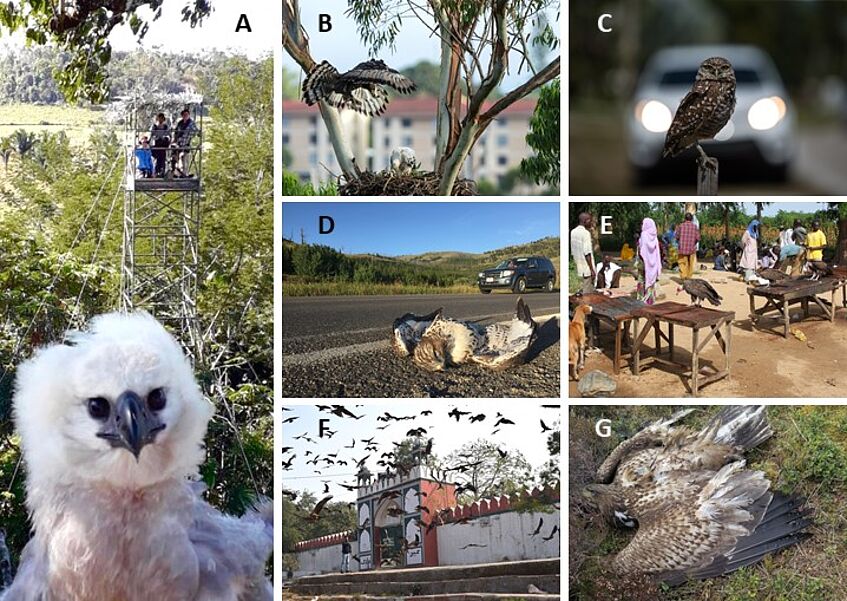
New paper published
The authors explain how raptors are well-suited to study potential COVID-19 anthropause effects with before–during–after lockdown comparisons that can inform conservation efforts. To do so, the authors launch the 'Global Anthropause Raptor Research Network' (GARRN) in collaboration with the Peregrine Fund's Global Raptor Impact Network.
Publication in "Biological Conservation":
Figure: Examples of human–raptor interactions during the COVID-19 anthropause, and the Anthropocene more generally: (A) Recreational activities: A film crew on an observation tower overlooking a harpy eagle nest in the Arc of Deforestation, Southern Amazon Forest, Mato Grosso, Brazil. While human recreation can cause significant disturbance to raptors, this is a good example of how it can provide valuable funding for conservation work, which has been badly affected during lockdowns in many areas. (B) Habitat loss and landscape management: A crowned eagle nest in a Durban suburb, South Africa, where gardens and Eucalypts have replaced native forest. (C) Reduced traffic volume: Reduced noise and light pollution levels may have benefited nocturnal raptors, such as this burrowing owl in the USA. (D) Road kill: A reduction in road kill during the COVID-19 anthropause may have affected scavenging species, such as common buzzards, by reducing both foraging opportunities and collision risk. (E) Unintentional or (F) deliberate supplementary feeding: Hooded vultures gleaning meat scraps at a slaughter house in Cameroon, Central Africa, and black kites foraging on food subsidies offered for religious reasons in Delhi, India. (G) Increased persecution: A satellite-tagged white-tailed eagle found poisoned on a Scottish grouse moor during lockdown in April 2020. Photos reproduced with permission: E. Miranda (A); M. Graf and C. Sonvilla (B|C); Buij (D|E); G. and H. Singh (F); Police Scotland (G).
Welcome Valentine & Gloria!
We welcome our new students Valentine and Gloria. Valentine is a master student in neuroscience from the University of Padova (Italy) and is working on her master thesis on object play behaviour in captive ravens. Gloria is a student of ethology from the University of Turin (Università degli Studi di Torino, Italia) and is also working on her master thesis studying captive ravens, focusing on the differences in parental care linked to sex in different degree of competition.
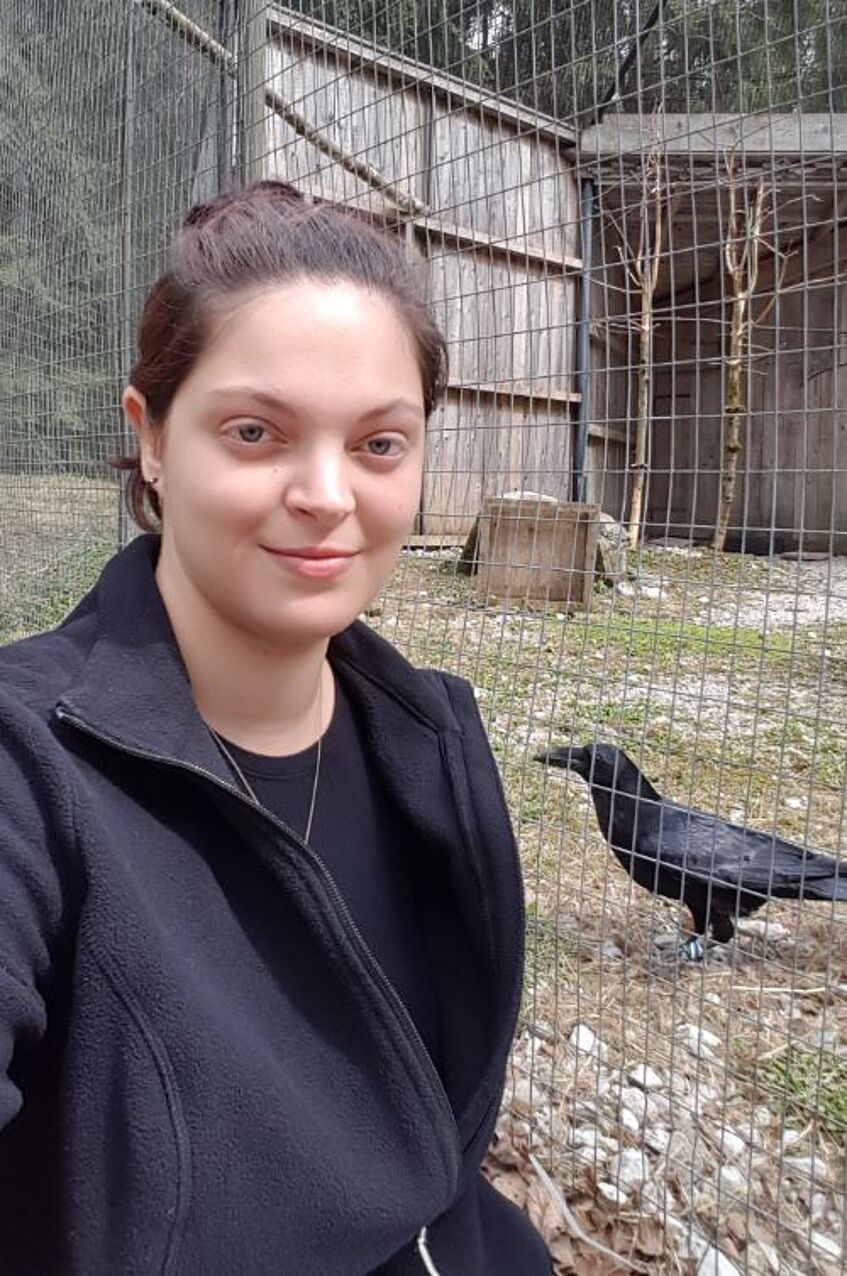
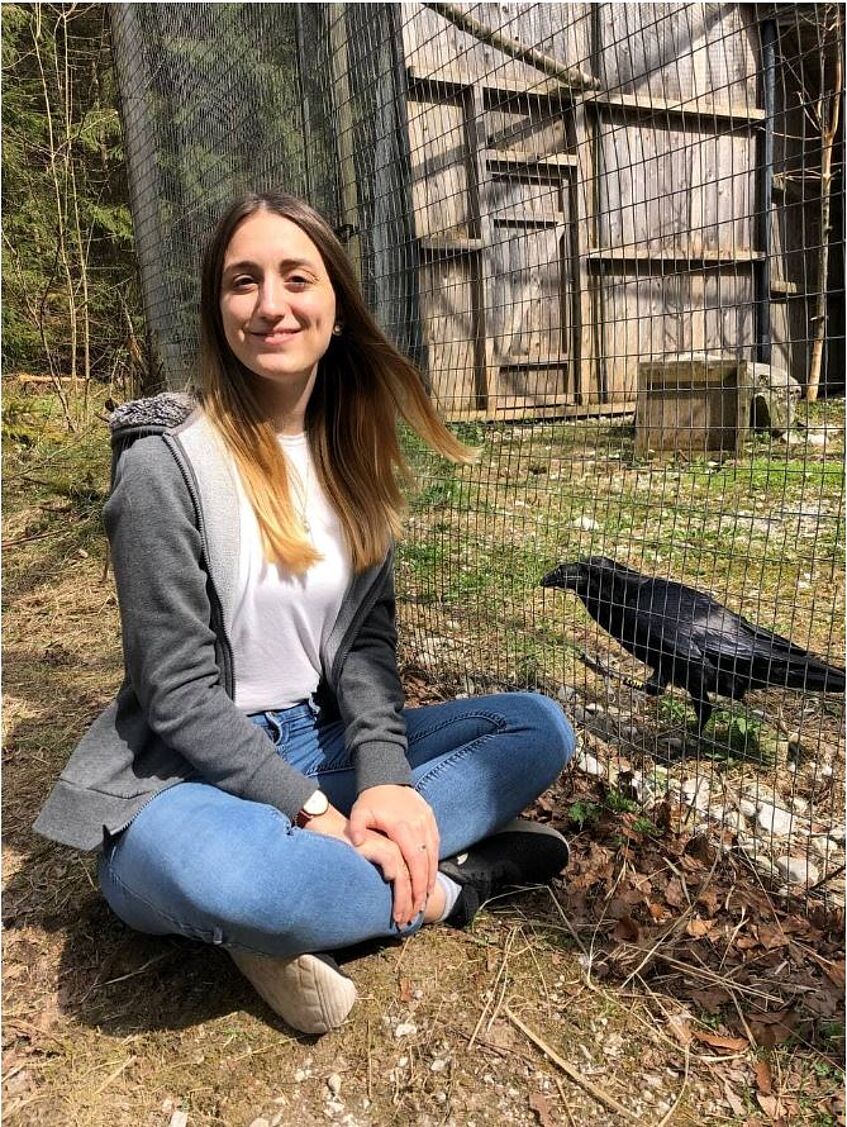
Newly published
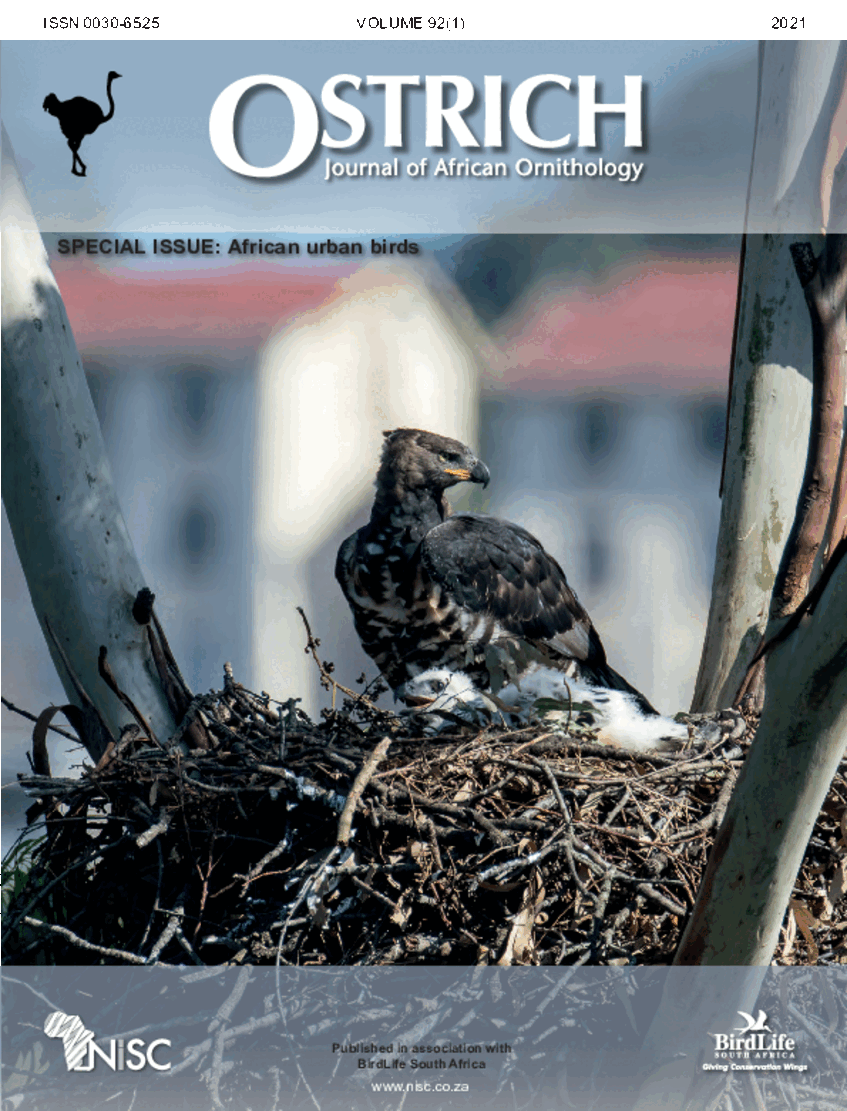
Picture credits: Marc Graf and Christine Sonvilla
Newly published
"The African urban birds" special issue, guest edited by Petra Sumasgutner is published in "Ostrich - Journal of African Ornithology. Petra and Shane also contributed a review article on Urban Raptors in South Africa.
Open access until End of May!
Cover image: Crowned Eagle
Urban Ecology in the Global South
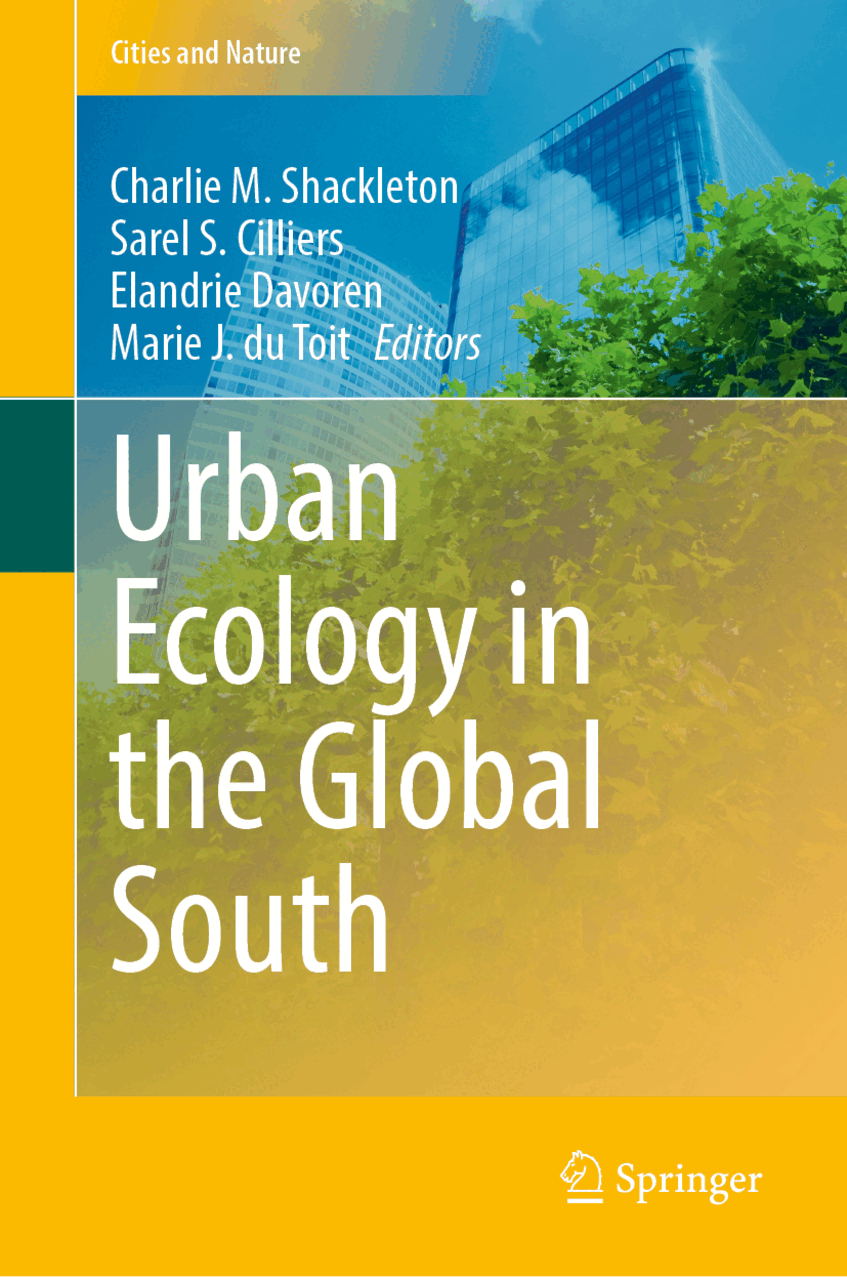
Urban Ecology in the Global South
Newly published - the book "Urban Ecology in the Global South" with the chapter "Urban Animal Diversity in the Global South" to which Petra Sumasgutner contributed the perspective on urban predators.
Predators in the city are still rarely studied but they add substantially to our understanding of functional diversity. Within the predator guild, raptors are amongst the better studied groups in urban ecology, and many species manage to persist in cities and adapt to anthropogenic influences despite their sensitivity to global change. To date, the majority of urban raptor research occurs in North America and Europe. However, findings in one region may not necessarily be representative of populations of the same species, or functional group, from other regions. In fact, of the 389 studies published between 1990 and 2018 [ISI web of knowledge search 20-05-2018, term 'urban raptor'], 82% were conducted in the Global North (Europe, North America, most part of Asia and Oceania) and only 10% were conducted in South America, 5% in Africa, and 3% in India. This in itself might create a severe bias towards Northern systems, which may lead to quite narrow conclusions regarding urban raptor behaviour, ecology and conservation.
New publication on Red-winged Starlings
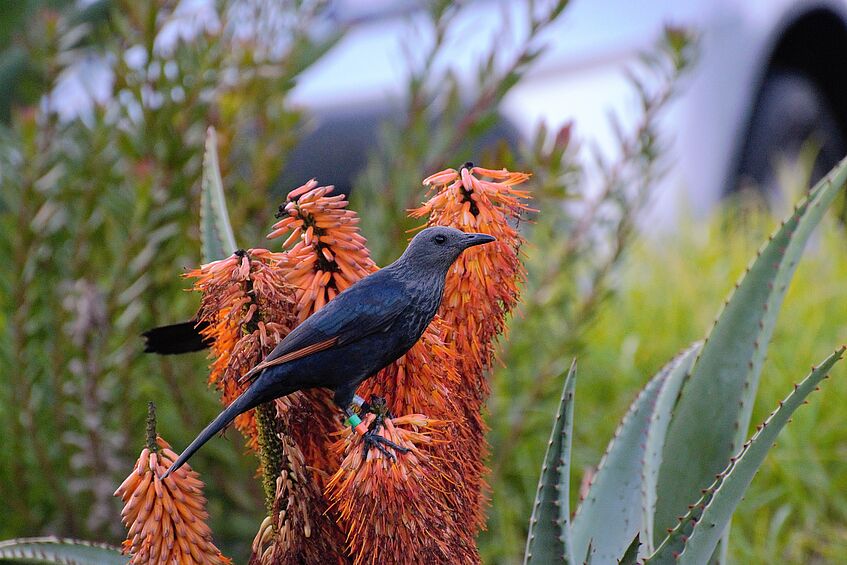
Picture credits: Kervin Prayag
New publication on Red-winged Starlings
In this project, Petra Sumasgutner and colleagues analysed body mass maintenance in Red-winged Starlings in relation to short-term food fluctuations (following human activity) and the proportion of urban areas within their home range sizes. Anthropogenic food availability was higher on high human presence days (weekdays) when starlings also consumed more anthropogenic food and tended to spend less time foraging compared to low human presence days (weekends and vacation). Furthermore, individual starlings with more built-up home ranges were heavier; they were also heavier and in better body condition on high human presence days.
Publication in "Ostrich: Journal of African Ornithology":
Happy Easter!
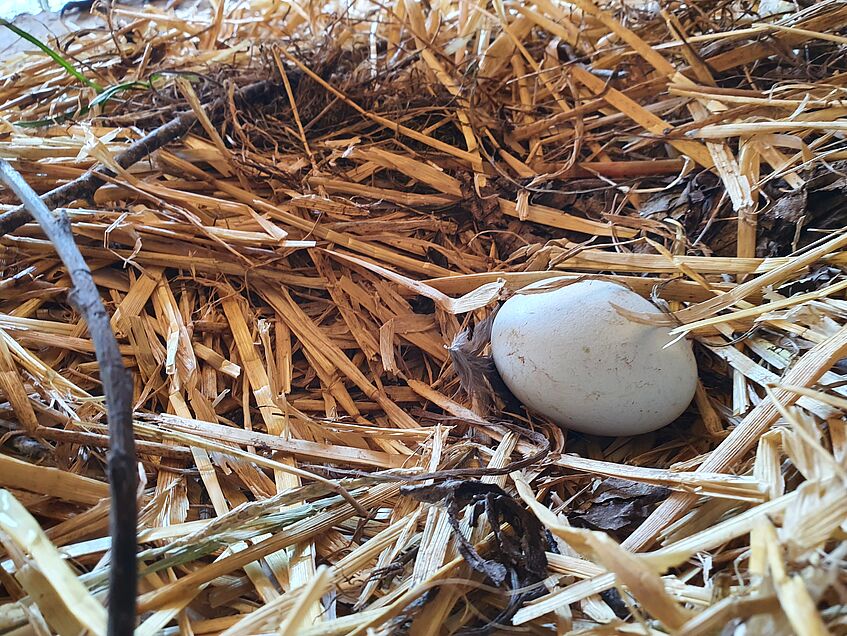
Picture credits: Verena Pühringer-Sturmayr
Happy Easter!
We wish everyone Happy Easter and happy holidays!
New publication on Darwin finches
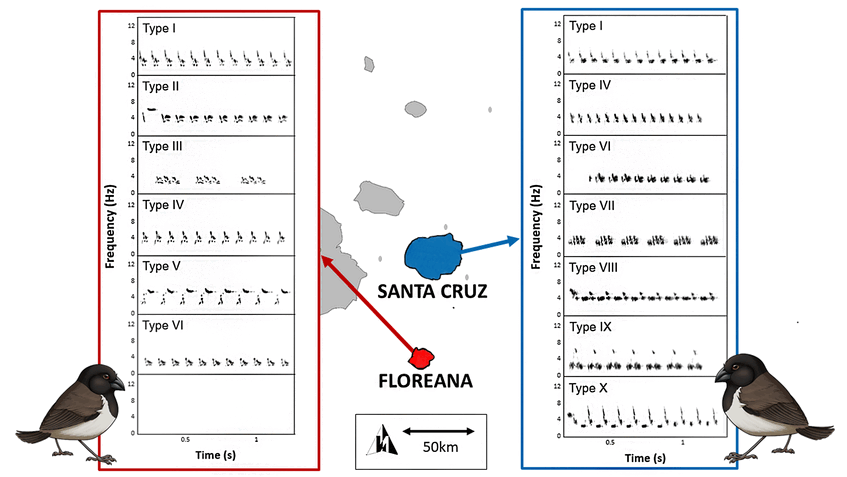
New publication on Darwin finches
In a new paper published today in Journal of Evolutionary Biology, Colombelli-Negrel and Kleindorfer report on the following discovery. Two populations of the same species of Darwin's finch (Camarhynchus parvulus) living on two different Galapagos Islands show different patterns of gene flow and learned song types. Birds on Floreana Island produced six song types (three shared with Santa Cruz and three unique to Floreana) and birds on Santa Cruz Island produced seven song types (three shared with Floreana and four unique to Santa Cruz). Resident males had a stronger response towards song from a different island. The study reports genetic and cultural divergence between islands with evidence that contemporary behavioural response could maintain divergence upon secondary contact.
Publication in "Journal of Evolutionary Biology":
You can download the paper here.
Welcome Céline!
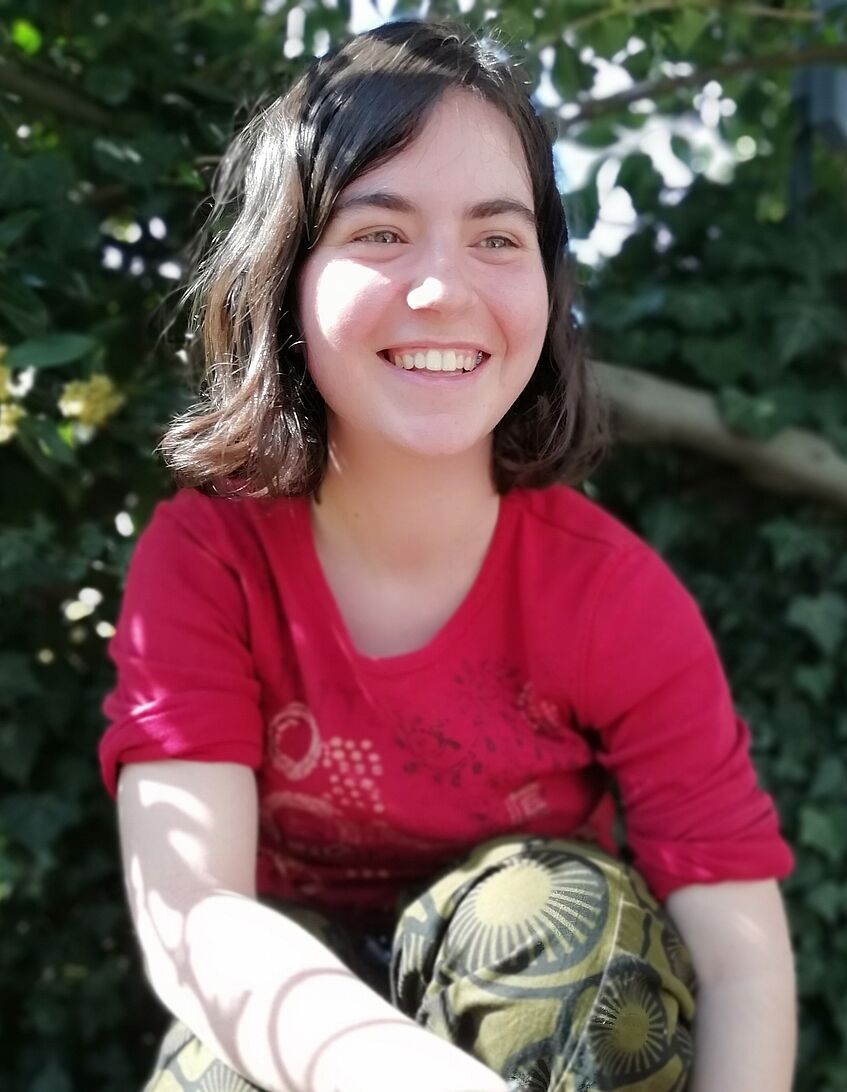
Welcome Céline!
We welcome our new student Céline Giorgetti from University of Burgundy (Dijon, France). She is doing an internship with us until the end of July, in which she is investigates dominance relationship and kleptoparasitism in free-flying ravens.
Endspurt in the NestCams project
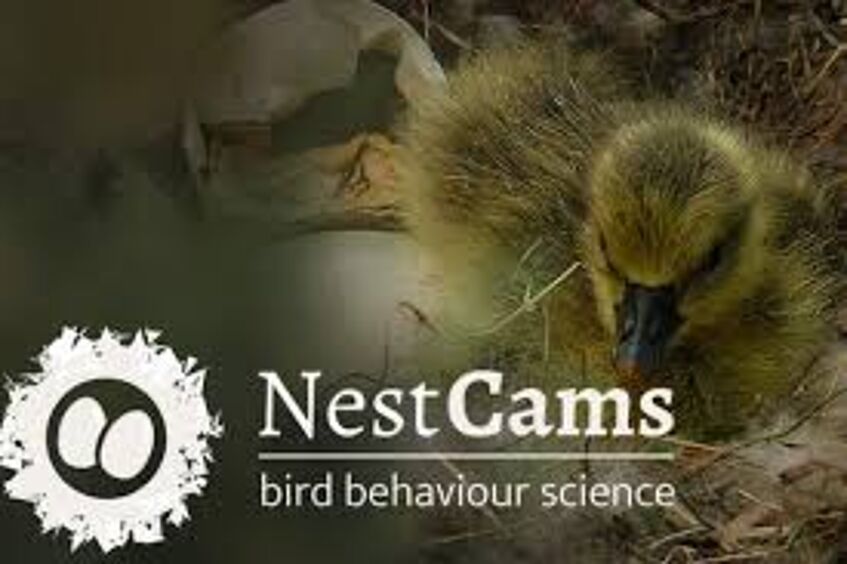
Picture credits: Lämpel | Wikipedia - Grafik: SPOTTERON Citizen Science | www.spotteron.net | CC:BY-SA 3.0
Endspurt in the NestCams project
The aim of the Citizen Science project NestCams is to discover how different breeding behaviours affect breeding success. For this purpose, short videos of the birds at the nest can be analysed online. The videos of the 2018 breeding season are finished and new videos from 2019 are available! Can we get 15,000 videos done by the end of April? We will raffle small gifts among all participants. Join us on NestCams and get to know the Greylag Geese Kendo, Dorothea, Lando, Sturmwind, Lukka, Lenka and Luna. Every single classification counts!
New publication on Rufous horneros made the cover of Hormones and Behavior
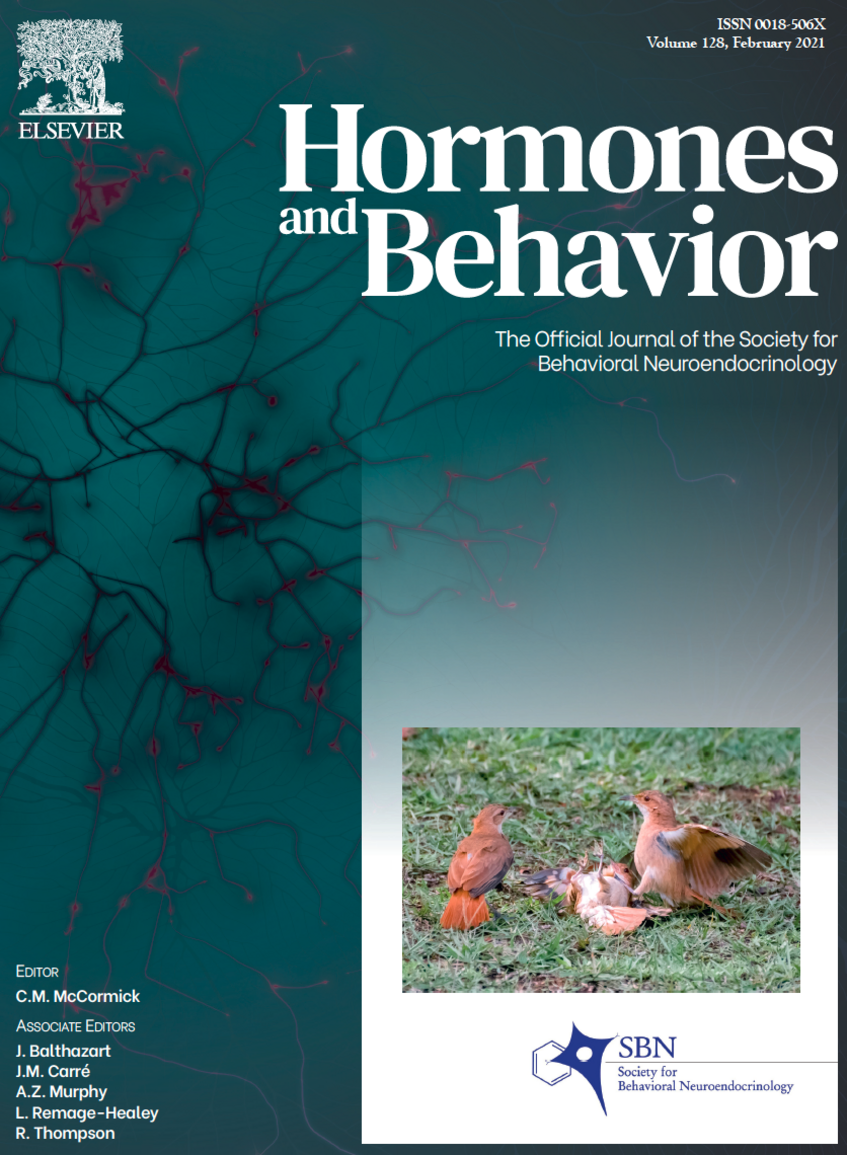
New publication on Rufous horneros made the cover of Hormones and Behavior
A direct link between the oxidative status and aggressive behaviour has been hypothesised in vertebrates. Further, sex hormones like progesterone and testosterone have been suggested as mediators in that process. Until now, no causal relationship had been shown between aggression and oxidative status. In this new study featured in February's cover of Hormones and Behavior, Mentesana & Adreani demonstrate a causal relationship for the first time in a vertebrate. By performing experiments in the wild, they discovered that rufous horneros (Aves: Furnarius rufus) suffer a decrease in antioxidant capacity after engaging in territorial fights with con-specifics. Further, this effect was much stronger in female birds than in males and independent of progesterone or testosterone.
Cover caption: A pair of rufous horneros (Furnarius rufus) during a territorial fight with an intruder. Acute aggression alters the birds' oxidative condition. Photo with the permission of Roberto Cyrino.
Publication in "Hormones and Behavior":
Book release:The Science of Citizen Science
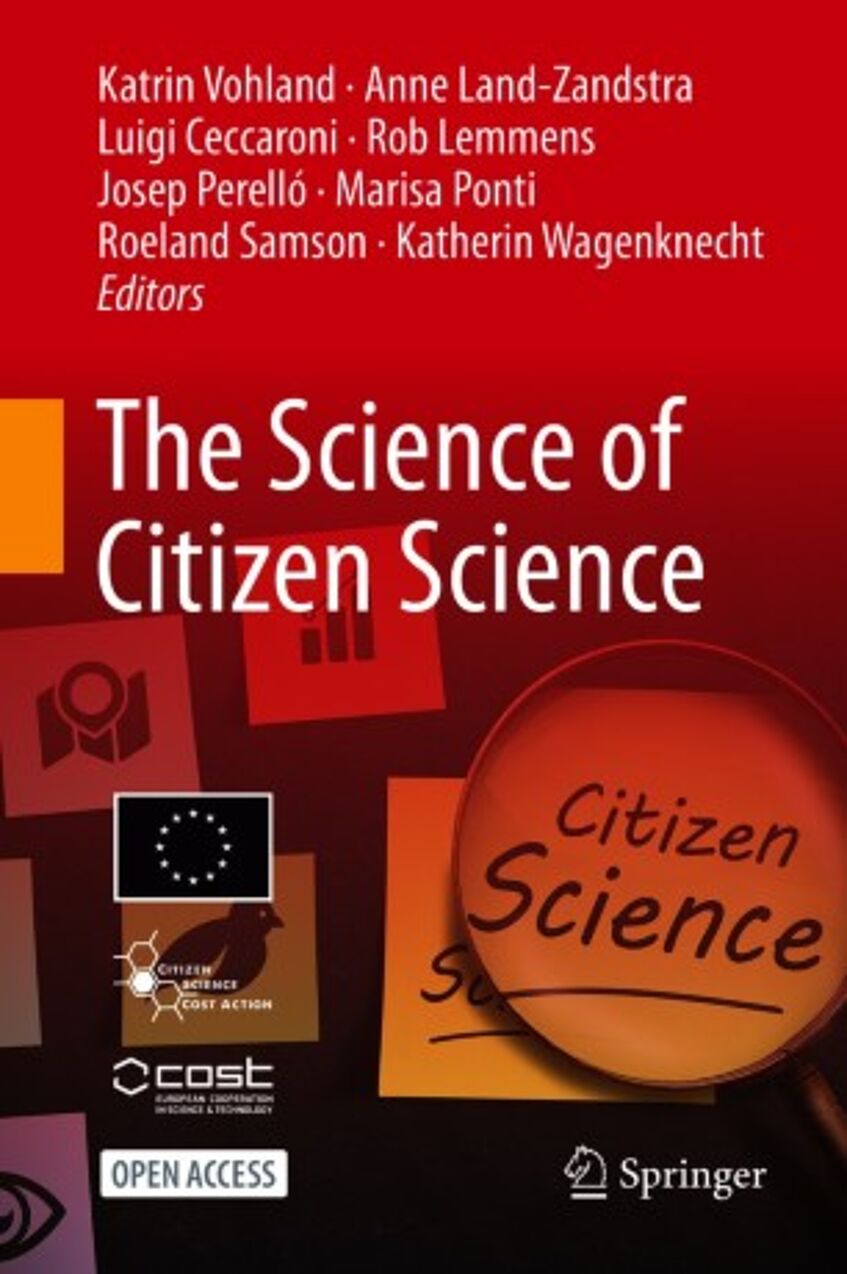
Book release:The Science of Citizen Science
On 12.1.2021 the book "The Science of Citizen Science" was published open access with Springer, to which over 100 authors contributed, including over 10 from Austria. "This book is a wonderful conclusion of four years of intensive exchange within a European research network on citizen science. At the same time it signals a beginning, as its curriculum-like structure gives universities and others the opportunity to reflect on both the substantive contributions to research and the societal added value of Citizen Science," Dr. Katrin Vohland, Director General of the Natural History Museum Vienna and first editor of the book, is pleased to say. "In addition, the book offers practical support for implementing projects and also addresses emerging topics such as Citizen Science and Artificial Intelligence."
Link to the book: The Science of Citizen Science.
Link to the book chapter by Didone Frigerio et al.: Citizen Science in the Natural Sciences.
Talk announcement
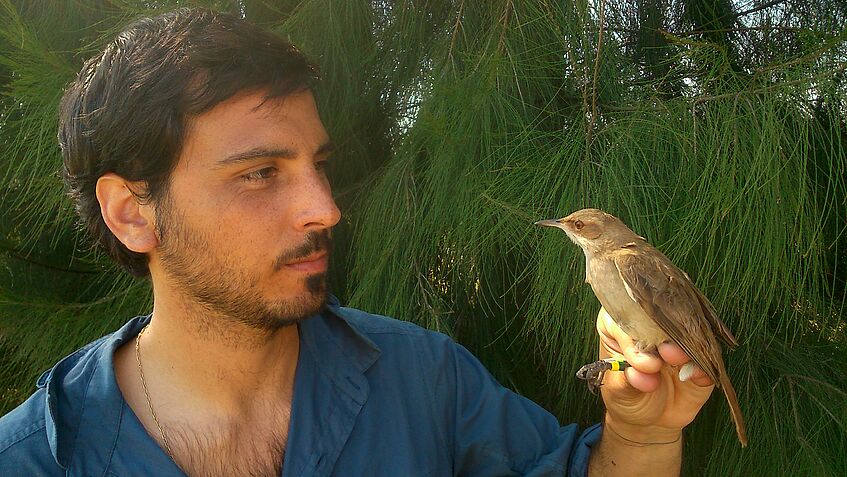
Talk announcement
On Monday 11 January 2021, Dr. Nico Adreani presents his work "Call-based communication in groups of zebra finches" to the University of Vienna Department of Behavioural and Cognitive Biology Seminar.
In many seasonally breeding species sex hormones can induce changes in auditory perception. Until now, most studies of this phenomenon have focused in species with simple vocal cues (like fish or frogs) or in the case of species with diverse repertoires, like birds, only in one vocalisation type. But many, if not most birds, produce different vocalisations besides their song: calls. Calls can be diverse and have multiple functions depending on the ecological context. In this talk Nicolas will discuss different results on the relevance of contact calls for vocal communication and their auditory perception in freely behaving birds across changing environments.
Recent research published in Frontiers in Neuroscience.
Merry christmas!
We wish everyone a Merry Christmas and relaxing holidays!
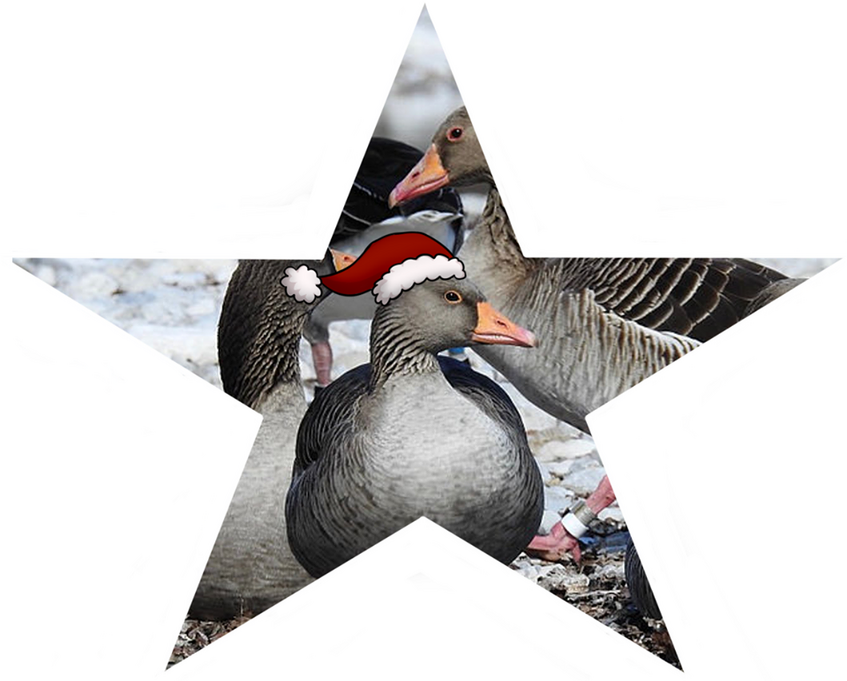
New publication
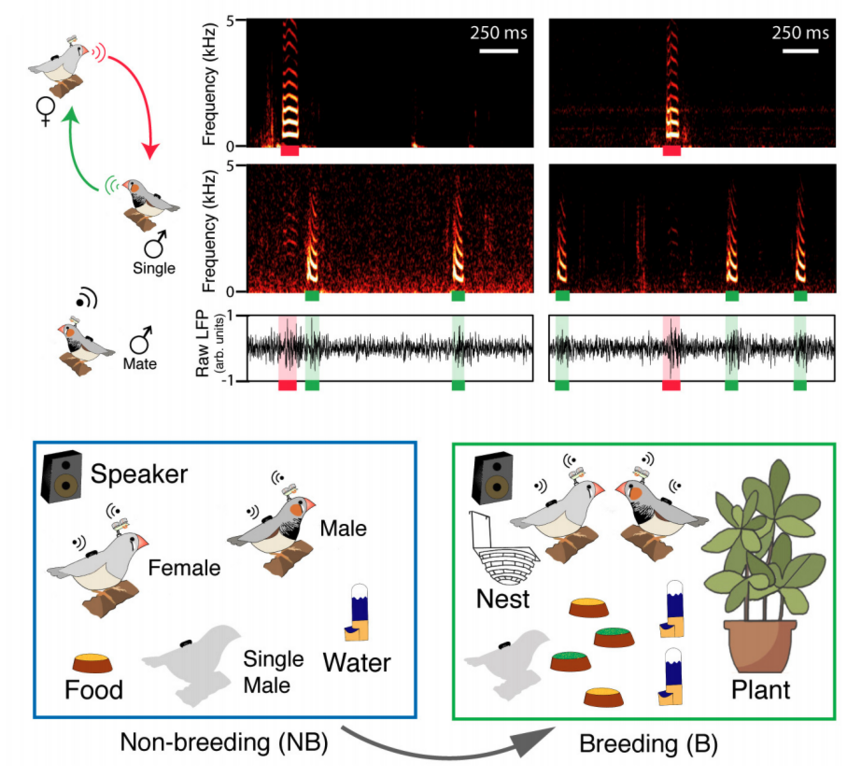
New publication
In many seasonally breeding species sex hormones can induce changes in auditory perception. Until now, most studies of this phenomenon have focused in species with simple vocal cues (like fish or frogs) or in the case of species with diverse repertoires, like birds, only in one vocalisation type. But many, if not most birds, produce different vocalisations besides their song: calls. Calls can be diverse and have multiple functions depending on the ecological context. In this longitudinal study Dr. Nico M. Adreani et al. used telemetric technology to record vocal and neural activity in freely behaving zebra finches while inducing an environmental change (Picture/Fig 1). Adreani et al. show that breeding-induced changes in the auditory system of the birds are signal and emitter specific. This is, during breeding auditory processing changes only towards certain call types and only from specific emitters that are known to the receiver bird. Further, Adreani et al. provide evidence suggesting that estradiol is the hormones responsible for modulating this phenomenon. Altogether, the study provides evidence for a tight interaction between vocalisations type and auditory plasticity, a mechanism that can change the saliency of vocal signals across ecologically relevant contexts. The results significantly widen our understanding of the interaction between sensory plasticity and vocal categories, two elements that are fundamental for vocal communication evolution.
Publication in "Frontiers in Neuroscience":
Congratulations on the successful habilitation!
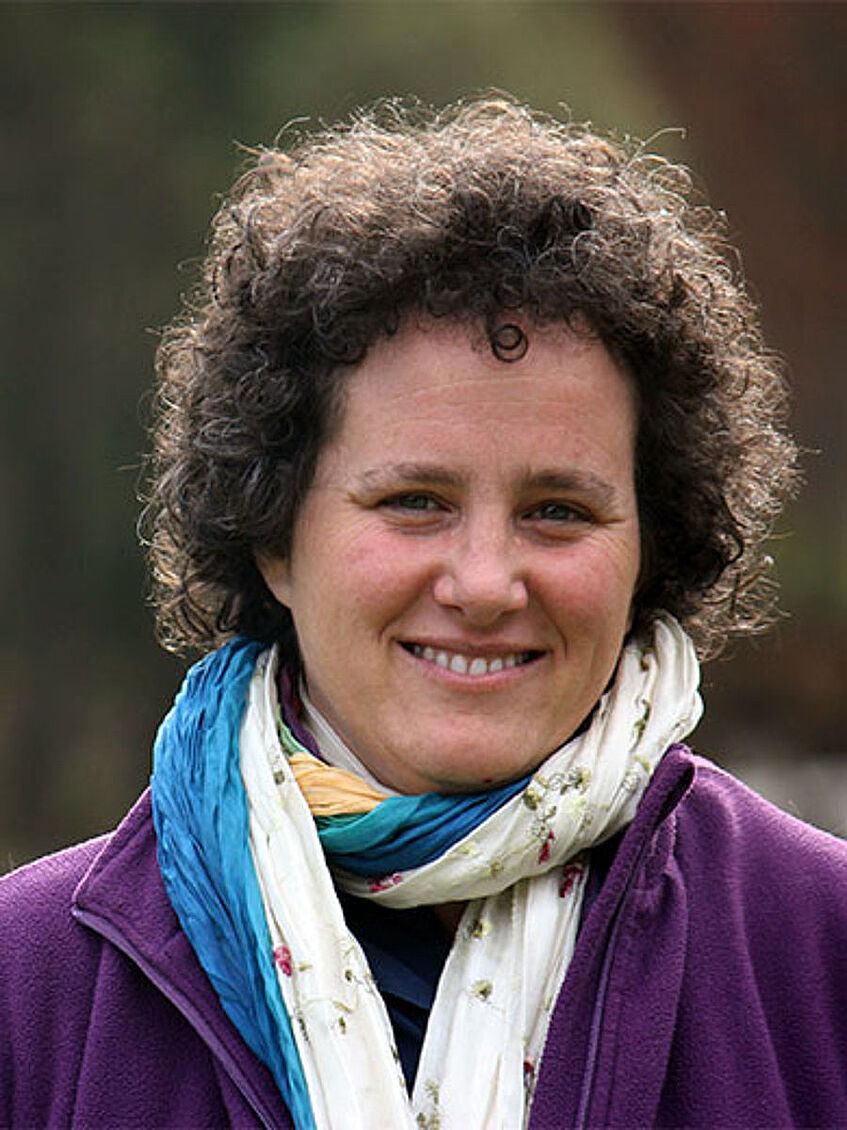
Congratulations on the successful habilitation!
We congratulate Dr. Didone Frigerio on the successful completion of her habilitation at the University of Vienna. In her habilitation, Didone dealt with "Interdisciplinary contribution to the study of animal behavior: Insight from mechanisms translated to the community". This gives her the teaching authority in biology and the right to use the title "Privatdozentin".
Congratulations!
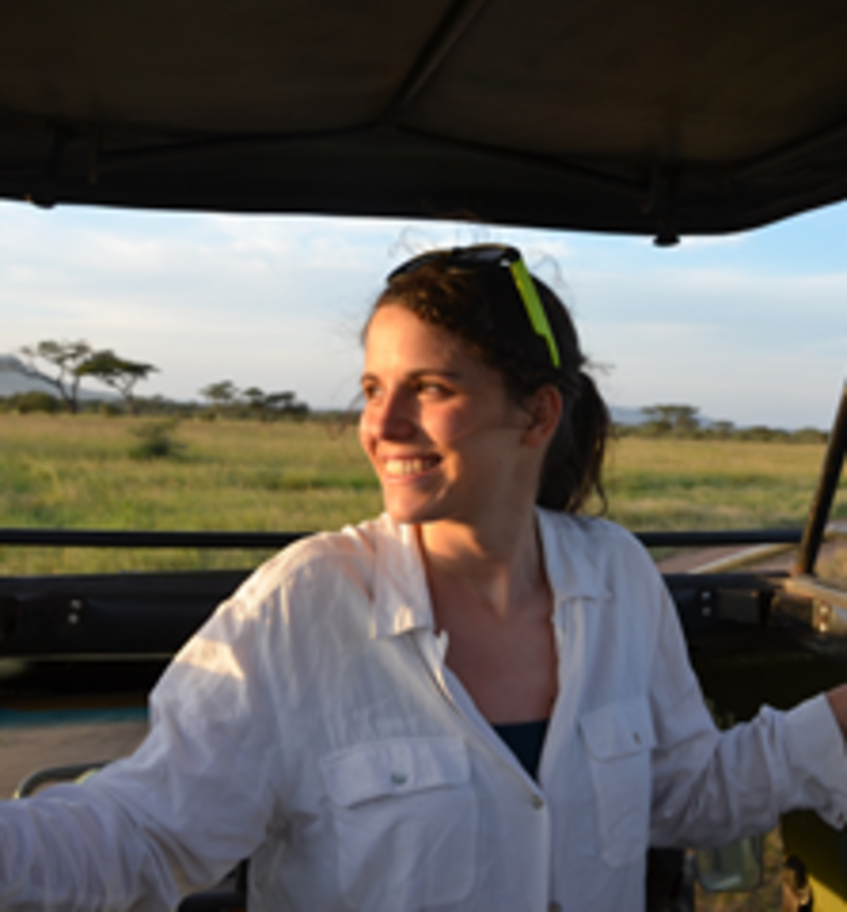
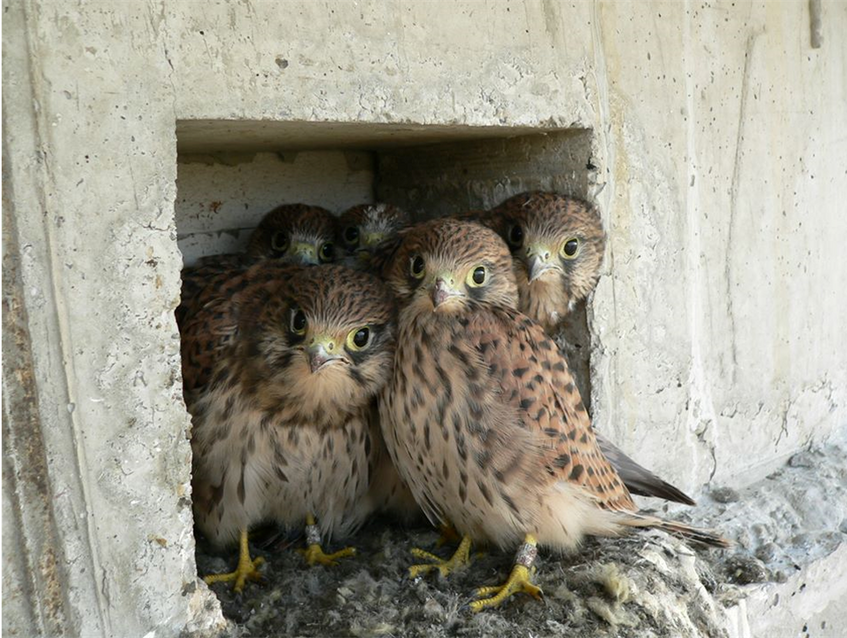
Picture credit: Pal Morandini
Congratulations!
Congratulations to Katharina Huchler, who was awarded with the 'Scientific advancement award of the City of Vienna' for her masters project on the Eurasian kestrels in Vienna!
The Eurasian kestrel is a vole-specialist, that suffers from reduced productivity in urban habitats which has been attributed to lower availability of diurnal rodents. The Kestrel Project Vienna monitors a dense urban raptor population and coordinates a large citizen science community who reported arrival dates reliably after migration at nest-sites located at different degrees of urbanization since 2010. Intense monitoring further allowed an accurate evaluation of egg-laying dates. We used this unique system to unravel, for the first time in an urban raptor, the phenology of arrival and egg-laying in dependency of local weather conditions and urbanization. Our findings shed light on sensitive time windows that shape phenology, and the importance of precipitation, rather than temperature. Furthermore, our research indicates a strategy to mitigate later arrival by relatively earlier egg-laying. This reduced length of the courtship period suggests a behavioral adaption to take advantage of potentially favorable conditions at wintering grounds while avoiding egg-laying delay and associated declines in productivity with later onset of breeding. Thus, our study focuses on how weather shapes phenology in one of the few migratory urban raptor species.
New publication: History and current status of the Northern Bald Ibis
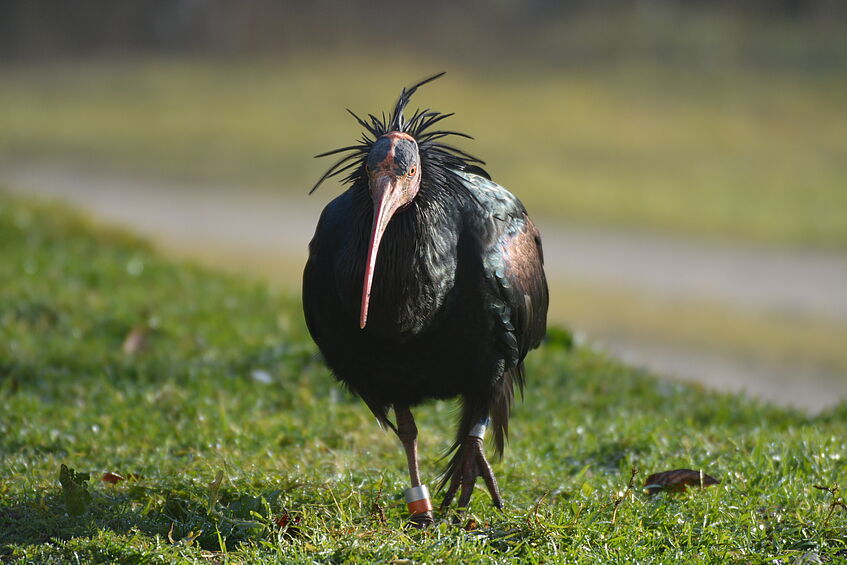
Picture credit: Verena Pühringer-Sturmayr
New publication: History and current status of the Northern Bald Ibis
The Northern Bald Ibis is one of the most endangered avian species worldwide. The disappearance from most of its former range is linked to habitat destruction, persecution and pesticides. The authors report on the history, current status and future perspectives of the endangered Northern Bald Ibis.
Publication in "Oryx":
New publication: Quality criteria for citizen science

New publication: Quality criteria for citizen science
The term 'citizen science' is often used for different activities, such as outreach or education. However, this use of the term may undermine the recognition of citizen science in academia. Thus, the authors of the publication present 20 quality criteria for citizen science.
Publication in "Citizen Science: Theory and Practice":
New publication: Having a family improves digestion
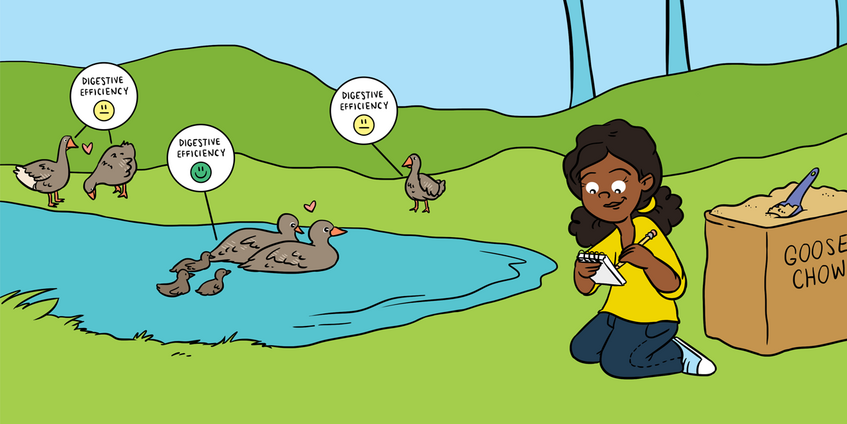
Picture credit: Frontiers for Young Minds
New publication: Having a family improves digestion
We found that in greylag geese individuals with stable social relationships with their family members have better digestion and are more likely to breed successfully in the following breeding season. These are new insights into the benefits of social life in birds.
Publication in "Frontiers for Young Minds":
You and the owls
The protection of our environment requires a better understanding of psychological phenomena. These are likely to contribute to whether a person is prepared to work for its protection. To better understand psychological aspects of conservation, we study owls, because these animals do not leave us indifferent, we love or hate them! In the following questions we would like to know what you spontaneously think about owls. We ask you several questions about owls, what you know, think and feel about them.
Click here to answer the questionnaire (about 5 minutes)
Do not hesitate to disseminate this questionnaire widely in your social environment!
New publication on social networks in Northern Bald Ibis
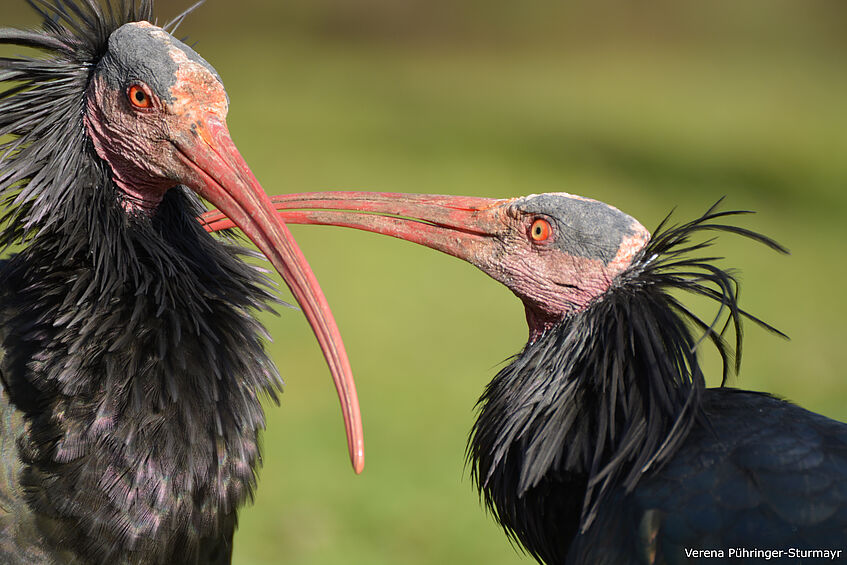
Picture credits: Verena Pühringer-Sturmayr
New publication on social networks in Northern Bald Ibis
We found that social interactions change with season, age and sex: (1) proximity to other colony members was higher during winter than autumn, (2) affiliative interactions were observed more frequently during winter, especially between former and prospective mates, (3) older individuals had more central positions in the social network than juveniles, and (4) males exchanged more agonistic interactions than females, while females received more affiliative interactions. Our findings suggest that social relationships may affect inter-individual distance.
Publication in "Journal of Ornithology":
New publication on Black Sparrowhawks
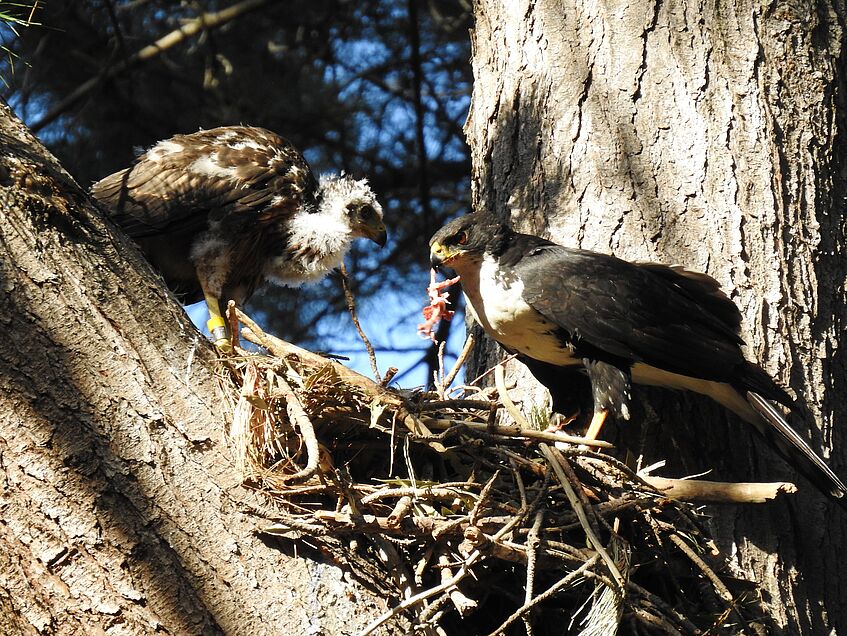
Picture 1 - Picture credits: Marlene Hofmeyr

Picture 2 - Picture credits: Marlene Hofmeyr
New publication on Black Sparrowhawks
In this study we show that blood parasite prevalence did not vary across South Africa in Black Sparrowhawks and found neither fitness costs of higher infection levels for breeding birds, nor for nestling's body condition. Thus, Black Sparrowhawk polymorphism is unlikely to be driven by an adaptive function linked to dealing with higher infections with Haemoproteus nisi in regions with wetter breeding seasons.
Picture 1: A black sparrowhawk light morph feeding its chick in the colour-ringed study population of the FitzPatrick Institute of African Ornithology in Cape Town, South Africa
Picture 2: Black sparrowhawk chicks all grown up and ready to fledge. The dark and light adult plumage will only develop in their 2nd calendar year
Publication in "Journal of Ornithology":
Biologicum Almtal and Junior Biologicum 2020
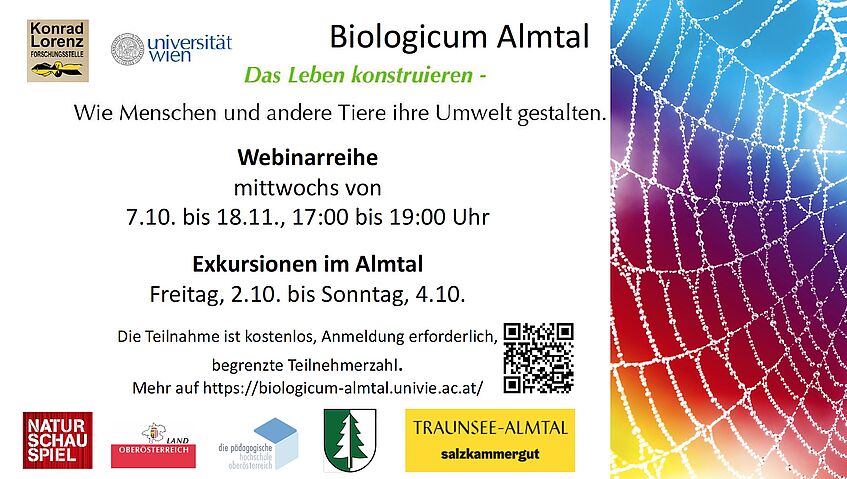
Biologicum Almtal and Junior Biologicum 2020
Biologicum Almtal and Junior Biologicum 2020 will be held ONLINE as a joint lecture series due to the current Covid-19 situation. The topic of this year's event is "Constructing Life. How humans and other animals design their environment". Furthermore a focus will be put on Citizen Science.
Series of lectures
The topics range from the construction of the ecological niche, the amazing constructions of animals and their ecosystem management, to the human activities that shape the world. People and other animals do not simply use what "nature" offers them. Rather, they actively shape, construct their ecological and social living conditions. The Covid-19 pandemic shows this: the virus as an evolutionary-biological factor is not simply passively accepted; rather, humans take development into their own hands and thus - like other living beings - shape their living conditions and ultimately the biosphere.
The participation is free of charge. A registration is mandatory.
Excursions
In times of "social distancing" and home office, we find being outside in nature to be particularly beneficial and relaxing. On the originally planned Biologicum Almtal weekend (October 2 to 4) we offer a series of excursions in the Almtal. Scientists* from the KLF will provide insights into their current research (ravens, grey geese, wood bustards, songbirds). In addition, there will be a legend hike, Kneipp sessions on the alpine pasture and a guided tour with the forester to his favorite places in the nature reserves in the Almtal.
The participation is free of charge. A registration is required. The number of participants is limited.
New publication: Duets as territorial defence
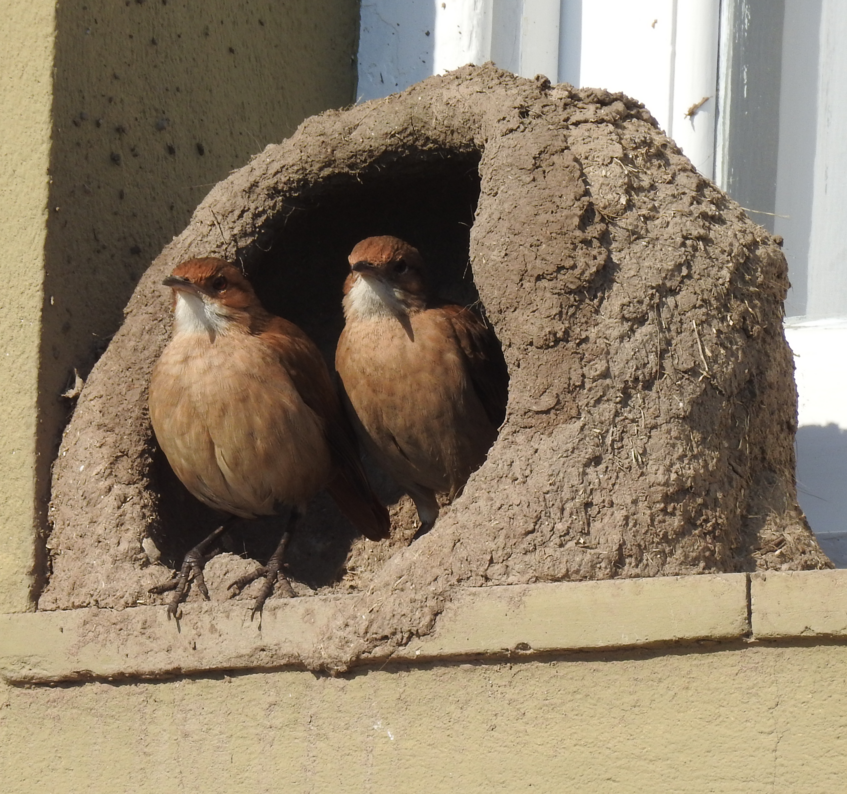
Picture credits: Mario Oscar Roqueta
New publication: Duets as territorial defence
Quantifying multivariate behaviours such as territorial defence is not an easy task and this is the main challenge in studying animal behaviour. In this paper we applied a structural-equation modelling approach to investigate territorial defence in a neotropical bird, the rufous hornero (Furnarius rufus). The rufous hornero forms long lasting pair-bonds, the pair defends their territory year-round and males and females engage in complex duet songs. We quantified the territorial defense behavior of males and females across different contexts and tested the hypothesis that duets are central signals of territorial defense. We found that: I) males are more territorial than females, ii) duets are as strong as physical traits during territorial defense, iii) within a pair birds are highly coordinated in territorial defense and iv) territorial defense behaviour does not change across seasons. Our study provides for the first time a sex- and context-comparison of the multivariate, latent variable 'territorial defence' in duetting birds, while highlighting the potential of combining field behavioural approaches with structural equation modelling.
Publication in "Behavioral Ecology and Sociobiology":
Mentesana, L., Moiron, M., Guedes, E., Cavalli, E., Tassino, B., Adreani, N. M. (2020) Defending as a unit: sex- and context-specific territorial defence in a duetting bird. Behavioral Ecology and Sociobiology, 74:111
Vienna Kestrel project on "Österreich forscht"
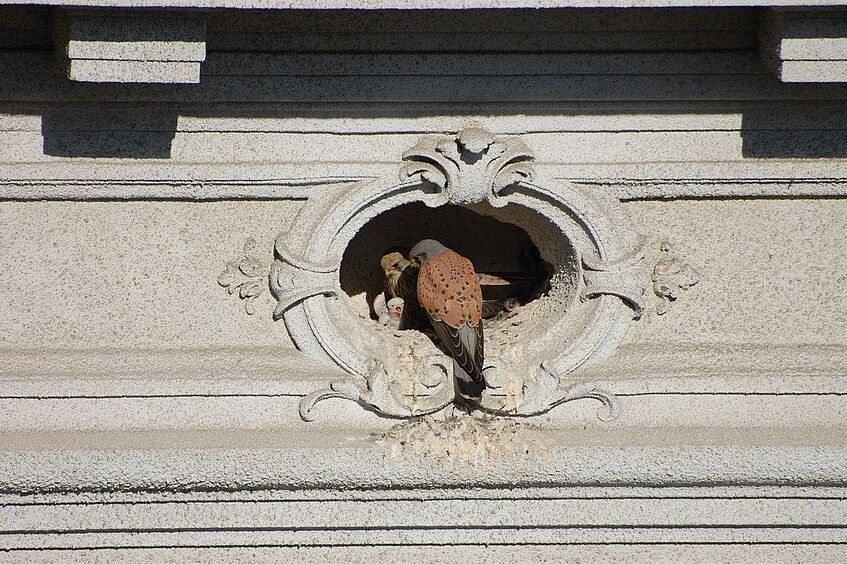
Picture credis: Claudia Hofmann
Vienna Kestrel project on "Österreich forscht"
The "Vienna Kestrel Project" has been investigating the diverse adaptations of Kestrels to survival under urban conditions since 2010. The location of nesting sites plays a decisive role in this respect. Because this is a Citizen Science Project, everyone can participate in this project and collect valuable data. We are happy about sightings from nesting sites!
For more information on how to participate and where to report sightings, please visit the project homepage on "Österreich forscht".
How a little backpack could affect the life of a wild bird
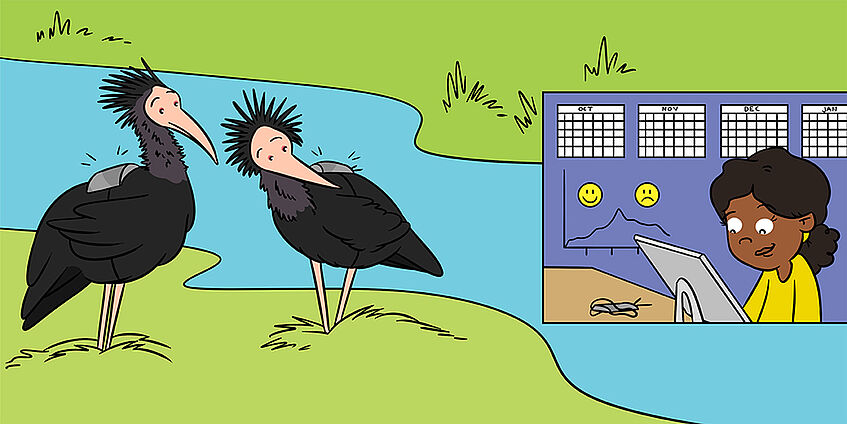
Picture credits: Frontiers for Young Minds
How a little backpack could affect the life of a wild bird
GPS transmitters (little backpacks) - carried by Northern Bald Ibis - had an effect on corticosterone (stress hormone) metabolites, but not on the behaviour. After one month of carrying a GPS transmitter, the excretion of corticosterone metabolites was still increased, but two months after excretion patterns returned back to baseline. Thus, it is important to investigate physiology, even though birds do not show a change in behaviour.
The paper "Effects of bio-loggers on behaviour and corticosterone metabolites of Northern Bald Ibises (Geronticus eremita) in the field and in captivity" was newly published in the Journal "Frontiers for Young Minds" to make it also accessible for young readers! Science for kids, edited by kids - In this journal manuscripts are reviewed by a board of kids and teens.
Publication in "Frontiers for Young Minds":
Original publication in "Animal Biotelemetry":
New publication
This article is an open access publication accessible to readers anywhere in the world and is the result from Katharina Huchler's Masters thesis. We show that arrival times of kestrels after migration did not vary between the city and the countryside, but that egg-laying started earlier in more natural areas than in the urban centre. Egg-laying was furthermore influenced by precipitation, in a way that kestrels laid earlier when weather conditions were drier. In the face of climate change we therefore expect further egg-laying advances in the species.
Publication in "Frontiers in Ecology and Evolution":

Picture credit: Claudia Hofmann
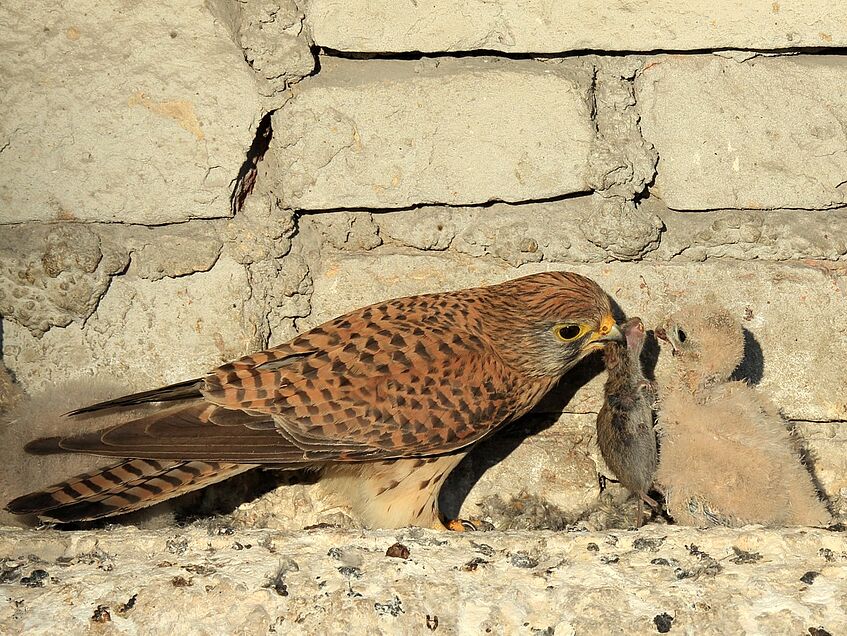
Picture credit: Franz Kerschbaum
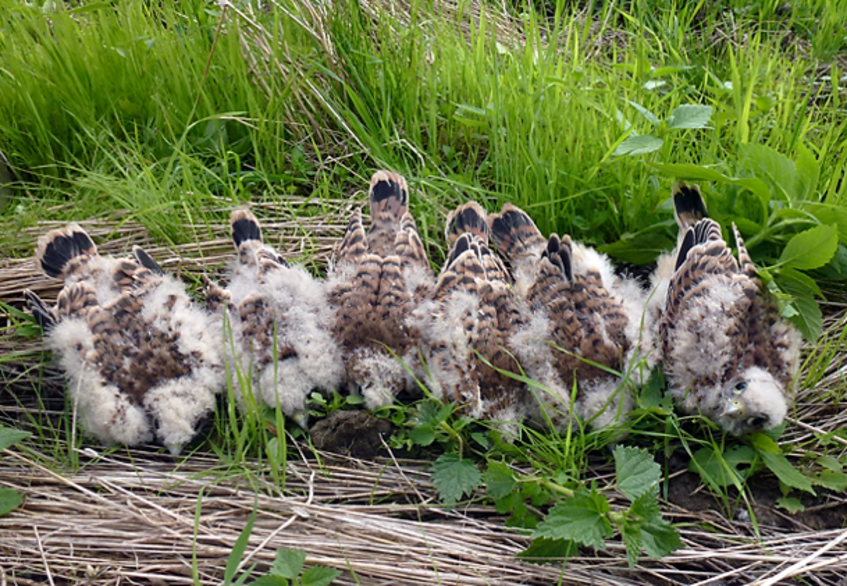
Picture credit: Petra Sumasgutner
New publication
To receive food more regularly it pays to have contrasting parents. The black sparrowhawk comes in two colour morphs; dark or light. Pairs consisting of contrasting morphs provide prey at more regular intervals than like-morph pairs, but overall deliver similar amounts of prey. This suggests that pairs of contrasting morphs exploit different environmental conditions for hunting. This consistency in prey deliveries may explain why offspring from mixed-morph pairs have higher survival rates.
Publication in "Behavioral Ecology":
South African raptors - Vom Leben der Natur
This week Petra Sumasgutner spoke about South African raptors in the Ö1 series "Vom Leben der Natur". Missed it? No problem, you can also listen to the entire series online.
Links:
Part 1: Beutegreifer in der Stadt
Part 2: Raubtiere im Hinterhof
Part 3: Ökologische Gleichgewichte
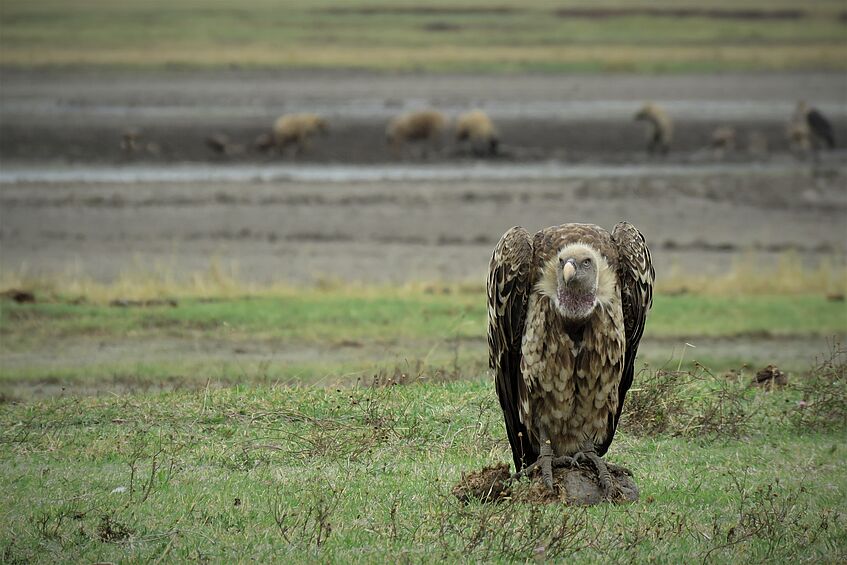
Picture credit: Petra Sumasgutner
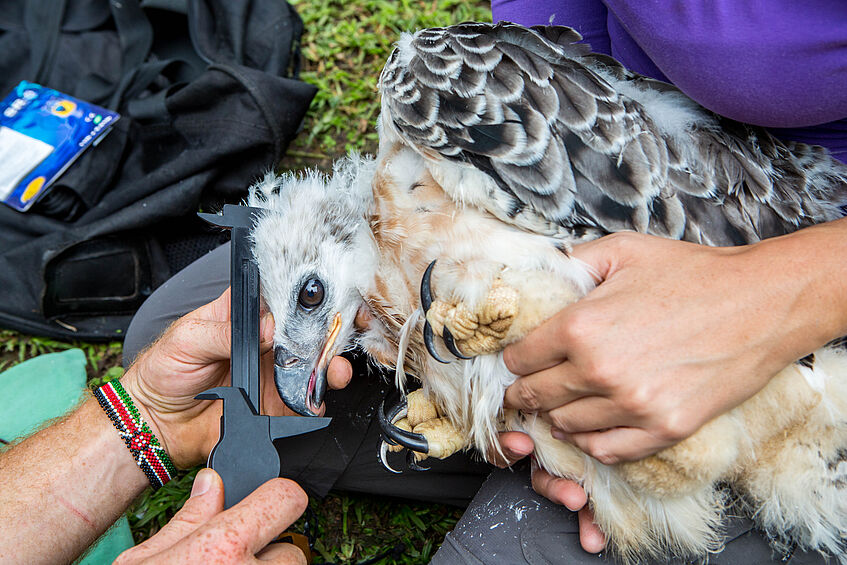
Picture credit: David Mills
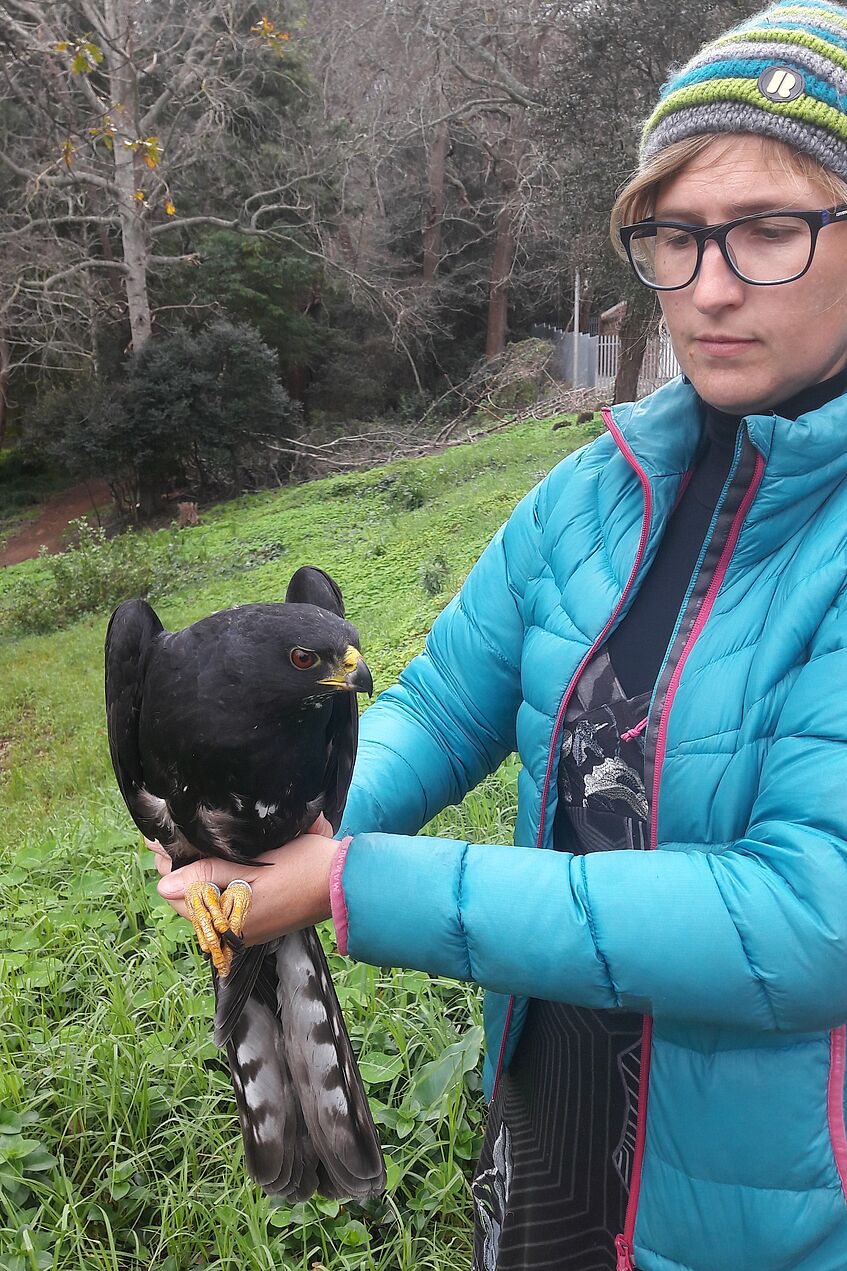
Picture credit: Shane Sumasgutner
New publication on African urban raptors
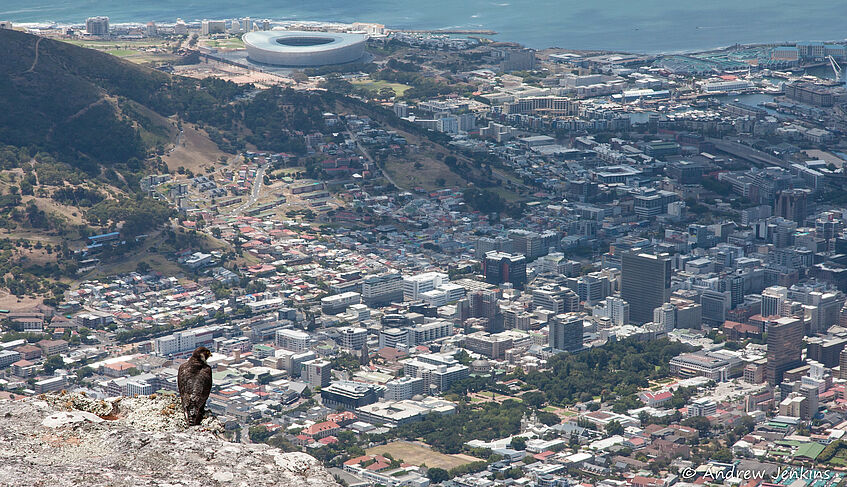
Picture credit: Andrew Jenkins
New publication on African urban raptors
In Africa, rates of human population growth and urbanisation are among the highest in the world. Additionally, climate change is predicted to have a particularly high impact on the Cape Peninsula. Our study is one of the first to consider urbanisation and weather conditions simultaneously, specifically over a long period of 26 years and including detailed information on the timing of breeding which is often missing in long-term raptor monitoring data. We show that weather did not impact breeding performance of peregrine falcons directly (breeding success and fledged brood size), but timing of breeding did, with earlier breeders producing more fledglings. Furthermore, warm and dry weather conditions advanced the timing of breeding, but this relationship between breeding phenology and weather was not apparent in pairs using nest boxes in urban areas. Our findings enforce the notion that falcons breeding in specially provided nest boxes are less sensitive to local weather dynamics, including extreme weather events, which are predicted to increase with climate change. This has important implications for urban conservation and the use of nest boxes as a management tool.
Publication in "PLoS ONE":
ORF-1-Freistunde
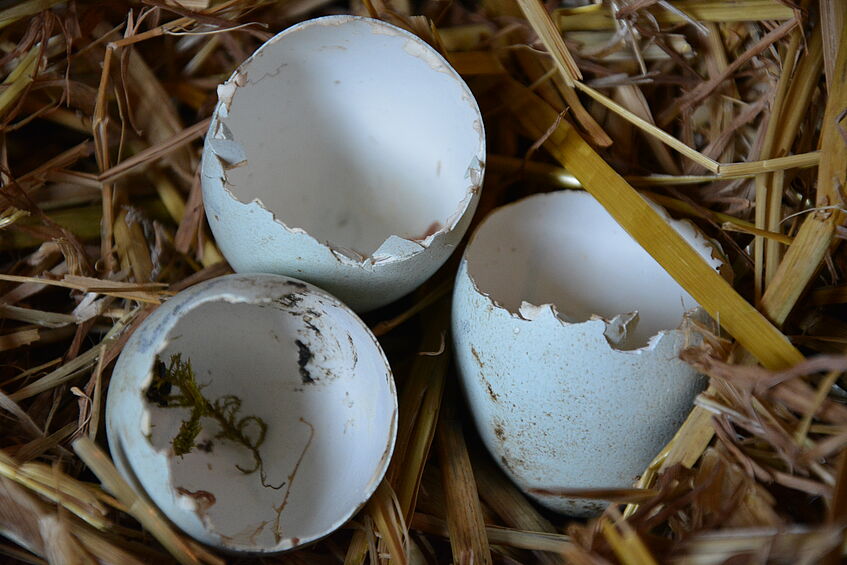
Picture credit: Verena Pühringer-Sturmayr
ORF-1-Freistunde
Daniel Dörler of Österreich forscht presented various Citizen Science projects in the ORF-1-Freistunde, including "NestCams" from the Konrad Lorenz Research Centre. The video is available in the ORF 1 TvThek.
Podcast about the Kestrel Project Vienna
Petra Sumasgutner was today's guest at the "Bienengespräche" a podcast about bees and nature by Lothar Bodingbauer where she spoke about the Kestrel Project Vienna, its Citizen Science component in reporting nest sites and her work at the Konrad Lorenz Research Center.
Here the link to the podcast.
Wundersame Waldrappe - Vom Leben der Natur
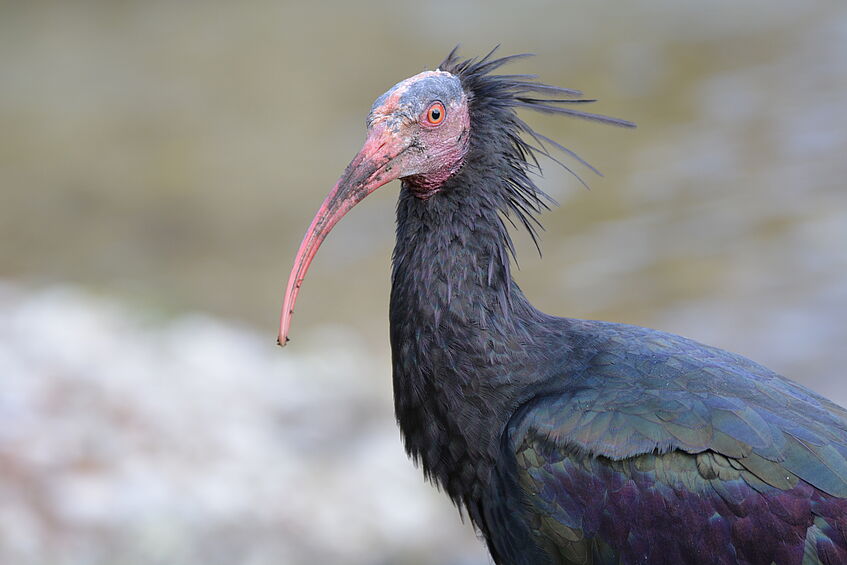
Photo credit: Verena Pühringer-Sturmayr
Wundersame Waldrappe - Vom Leben der Natur
From 18 May till 22 May 2020 Verena Pühringer-Sturmayr spoke in an Ö1 interview with Lothar Bodingbauer about the Northern Bald Ibis and the current research at the Konrad Lorenz Research Center. The conservation was broadcasted on Ö1 as part of the series "Vom Leben der Natur".
If you missed it, you can also listen to the entire series online (approx. still one month available).
Links:
Part 1: Zugvogel mit Starthilfe
New publication on Crowned Eagles
Photo credit: Paolo Candotti, Kloof Conservancy (www.kloofconservancy.org.za)
New publication on Crowned Eagles
The authors show that Crowned Eagles change their breeding strategy in urban areas by increasing their breeding rate, but found nest failures occurred more often at more urbanized sites. These contrasting responses counteracted each other and resulted in similar productivity across the urbanization gradient and highlighted the value of long-term data.
Publication in "The Condor":
Mueller, R., Amar, A., Sumasgutner, P., McPherson, S. C., Downs, C. (2020) Contrasting effects of urbanization on breeding performance measures in the threatened African Crowned Eagle (Stephanoaetus coronatus). The Condor, duaa024
Here are the links to the online article:
The Cumberland Game Park in Grünau and the Zoo Vienna reopen
Since today (15 May 2020) visits to Austrian zoos and wildlife parks are allowed again.
Amazing news: Participating in research is (again) possible with the apps KraMobil and Forschen im Almtal. We are looking forward to many contributions. Please check the local rules and regulations directly on zoovienna and game park Grünau.
Check out our new project and app "KraMobil" in cooperation with the Zoo Vienna, where you can spot crows in the zoo and help to find out which species and subspecies of crows are living in the Zoo Vienna and which behaviour they exhibit.
For more information on the apps and how to participate please visit BirdScience.net.
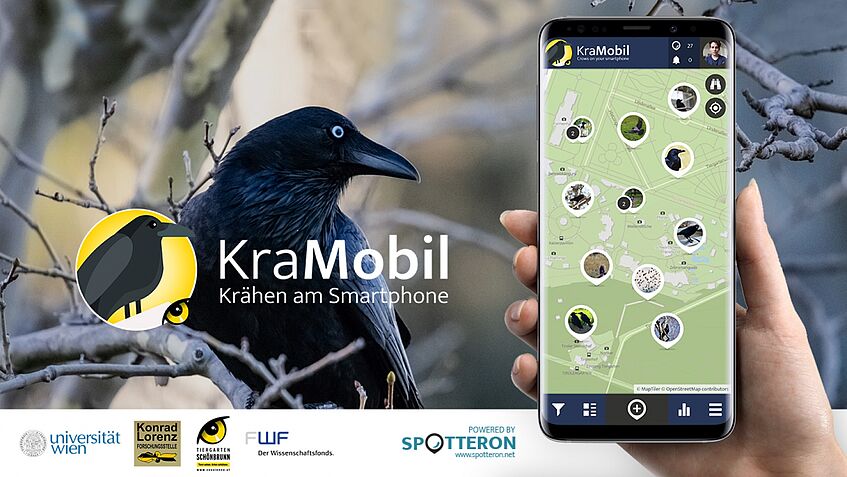
Wildpark Challenge for Citizen Scientists
From May 15th to October 15th, visitors to the Cumberland Wildpark Grünau can take part in the KLF's research as part of the "Wildpark Challenge" and win great prizes. To participate, you need to download the app "Forschen im Almtal". During the hike through the Wildpark, sightings of greylag geese, northern bald ibises and ravens, their behaviour and individual markings (leg rings, wingtags) can be entered and uploaded into the app. Have fun participating in the research!
Download app:
https://apps.apple.com/us/app/forschen-im-almtal-spotteron/id1292290494
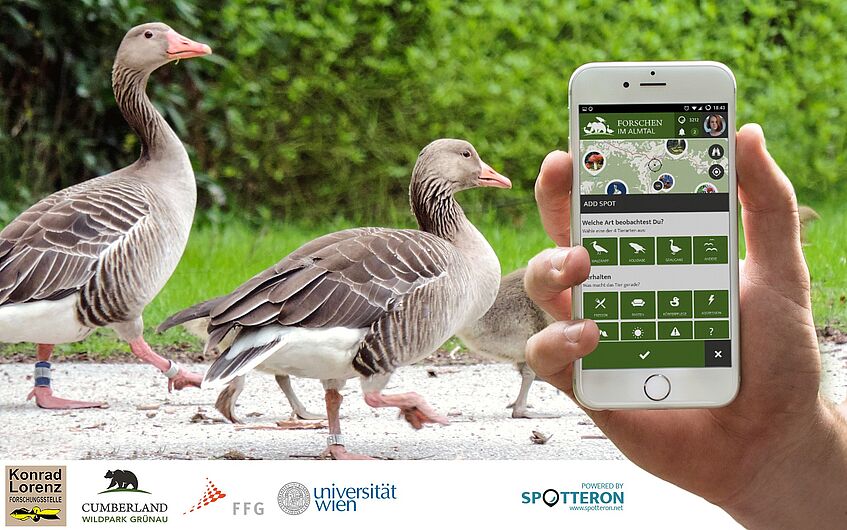
Picture: Spotteron
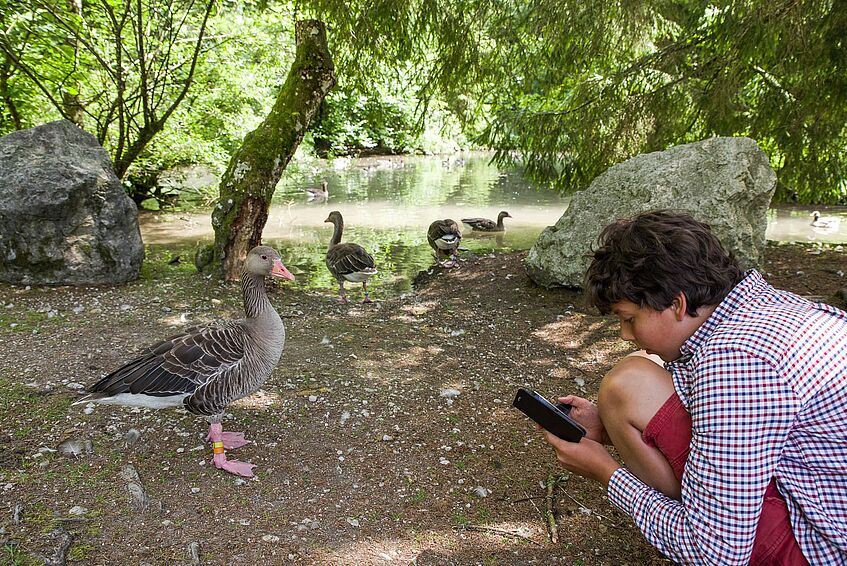
Picture: KinderUni OÖ/ Th. Reibnegger
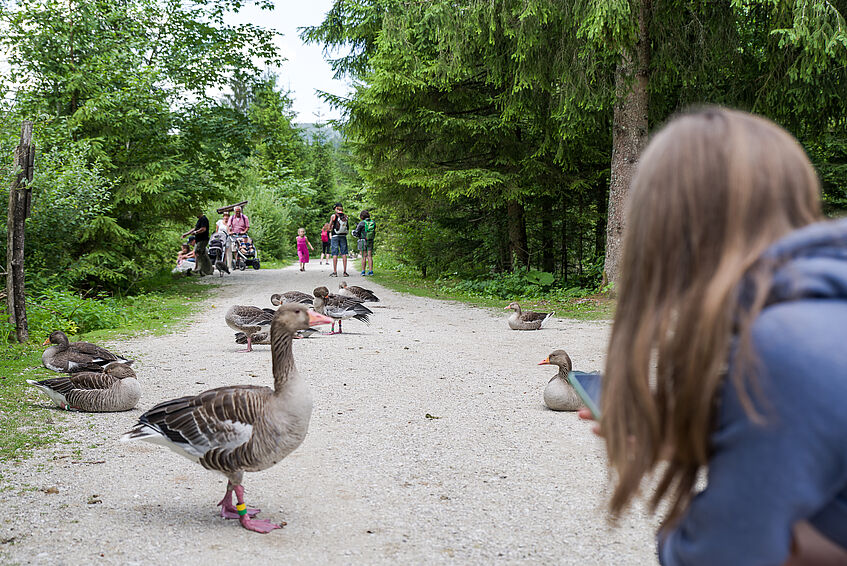
Picture: KinderUni OÖ/ Th. Reibnegger

Picture: KinderUni OÖ/ Th. Reibnegger
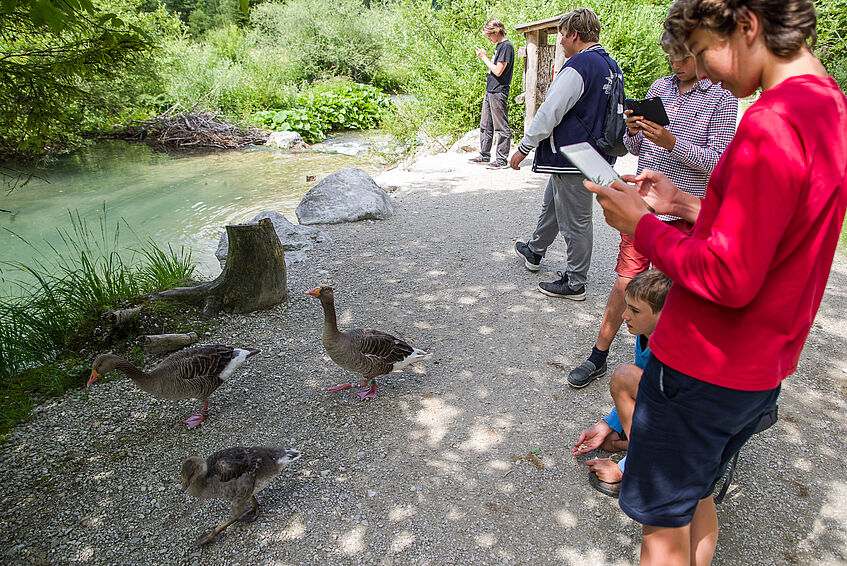
Picture: KinderUni OÖ/ Th. Reibnegger
Follow us on Twitter!

Follow us on Twitter!
The Konrad Lorenz Research Center has now an offical Twitter account.
Monitoring raven nests with a drone...
Our UAV (Unmanned Aerial Vehicle) is a DJI Marvic, registered with austro control and permitted for field surveys, specifically to monitor raven nests. Research thus far indicates that the use of drones to monitor nests can speed up the process and reduce stress on birds. In using this tool, we can assess the stage of breeding in less than one minute of disturbance. We can search for nests on cliffs, and obtain high quality and quick information on clutch or brood size, and we can age the nestlings accurately based on their plumage development. However, we also closely monitor the reaction of the breeding pair, to quantify any signs of stress (e.g., alarm calling or flying toward the drone) and can abandon a survey at any time if necessary.
The video shows one of our raven nests in the valley, where the nestlings are just a couple of days old. It provides insights into the method. Filming and photographing is only used directly at the nest site - we do not take any footage during the approach, and chose our path carefully away from people's houses (in line with our research permit). Here we recorded the descent to introduce the field researchers involved: Shane as pilot, concentrating on the flight, using his goggles for maximal resolution; and Petra as spotter, observing the entire process with binoculars or the scope, so we do not miss any reaction of our wildlife in the surroundings.
If you are interested in the whole video footage, please visit our Facebook page.
New publication
From the rich conference program of the Austrian Citizen Science Conference 2019, 11 papers were published in the Conference Proceedings, which are freely available in the Proceedings of Science. The 11 papers give a nice insight into the conference topics.
One paper discusses challenges and solutions when working with citizen scientists by using the app "Forschen im Almtal".
Extended Abstract in "Proceedings of Science":
Frigerio, D., Puehringer-Sturmayr, V., Steinbacher, C., Rittenschober, J., Kleindorfer, S. (2020). Citizen science, animal behaviour and digital devices: challenges and solutions. 5th Austrian Citizen Science Conference, 2019 June 26-28, Obergurgl, Austria. PoS(ACSC2019)002
Here the link to the publications.
When field research is cancelled...
The crisis caused by the coronavirus also changes the lives of researchers. Didone Frigerio was asked how her everyday life has changed in terms of her work as a scientist, how she maintains contact with colleagues and how she handles isolation.
You can read this article here.
Welcome Shane!
Dr Shane Sumasgutner is a conservation biologist, with a special interest in birds of prey. Shane qualified with BSc and Post Graduate Diploma in Zoology at Massey University in New Zealand in 2005. This was followed by a variety of field assistant positions on research and conservation projects; including the Mongolia Saker Falcon Artificial Nest Project, The Peregrine Fund’s East Africa Projects, Parakeet Conservation for Mauritius Wildlife Foundation and managing a team conducting a Windfarm Avifauna Impact Assessment in New Zealand. Shane then took those experiences forward to complete a PhD on The Urban Ecology of African Crowned Eagle at the University of KwaZulu-Natal. This project was extended a further three years with a postdoc position, concurrently developing breadth and depth of technical skills such as drone piloting, rope access on cliffs and trees, a variety of trapping methods, banding, tagging and telemetry, and using these to support research by peers and students across a range of vertebrate fauna in South Africa.
Shane recently moved to Austria with recently appointed KLF postdoctoral fellow Dr. Petra Sumasgutner, and while he awaits work permits he is volunteering at the KLF to fill in gaps where needed, such as helping to monitor the goose occupancy patterns between KLF and Cumberland Gamepark. Once the permit and pandemic situations are resolved he will be back out in the mountains to extend the KLF research on wild ravens and raptors.
How do threats like predation and climate change affect the behaviour and survival of animals?
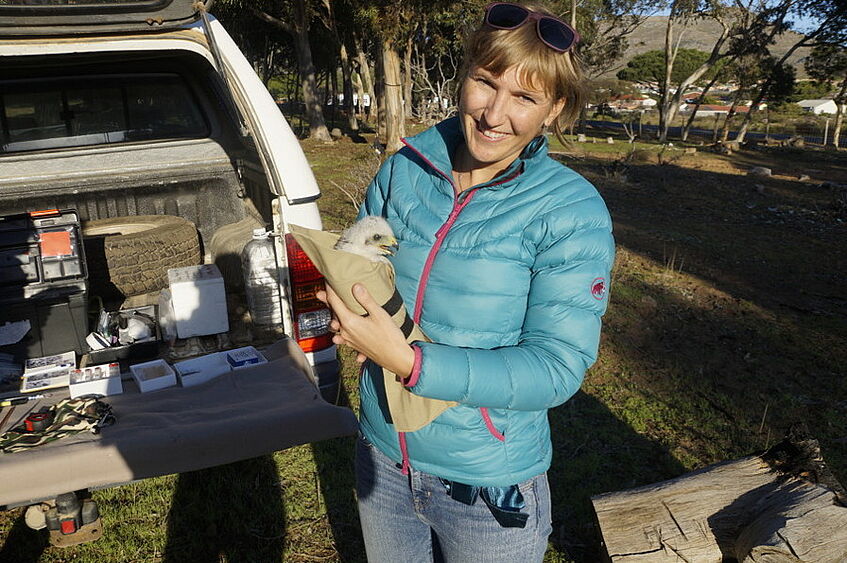
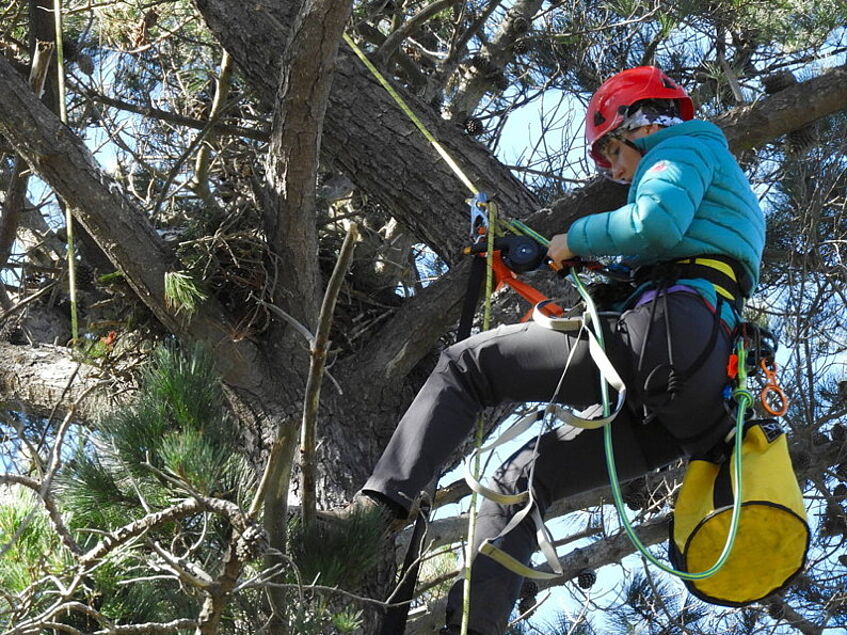
How do threats like predation and climate change affect the behaviour and survival of animals?
Petra Sumasgutner aims to understand the response of birds to land-use and climate change. Within this large research field, she is mainly interested in predator-prey and host-parasite relationships, and how these complex interactions change through anthropogenic influences.
At the Konrad Lorenz Research Centre, she now coordinates the long-term research project on wild ravens, and analyses movement patters in relation to anthropogenic resources and threats, and information transfer within the scavenger community, including golden eagles. Furthermore, she will work on Darwin’s finches and how predation risk imposed by introduced and native predators shapes physiology, behaviour and long-term fitness.
Dr. Petra Sumasgutner PhD (University of Vienna, Austria)
Email: petra.sumasgutner@univie.ac.at
The KLF welcomes a new postdoctoral researcher
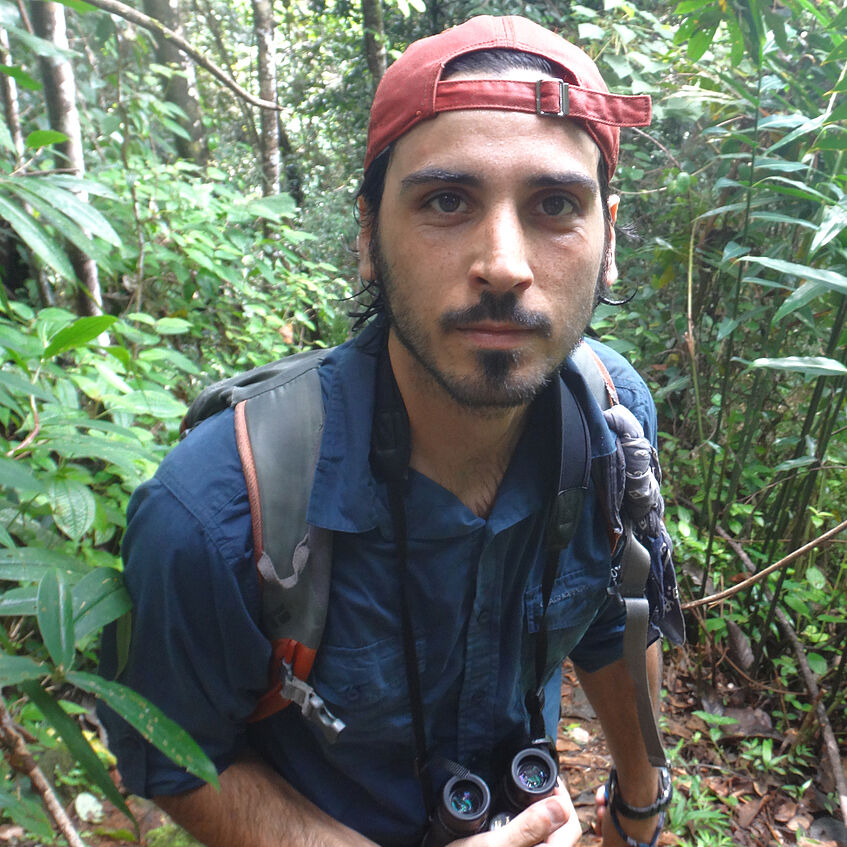
The KLF welcomes a new postdoctoral researcher
Dr. Mauricio Nicolas Adreani (known as Nico) did his undergraduate degree at University of Buenos Aires in Argentina and his PhD at the Max Planck Institute for Ornithology on avian biology. His research specialisations are neural and endocrine biology and vocal communication. Nico is currently studying the endocrine modulation of aggression in birds and leading a citizen science project on avian nest architecture in South America. Nico’s main role at the KLF will be to discover the emergence and coordination of collective behaviour through vocal communication in the wild and its link with reproductive success. His study species will be ravens, greylag geese and Darwin’s finches. Konrad Lorenz and Niko Tinbergen are great inspirations, and Nico says “so of course I am very happy to be at the KLF. I am a passionate birdwatcher too.“
Nico is currently in the home office due to the corona crisis.
New paper published

Picture: Lauren Common and Sonia Kleindorfer
New paper published
Sonia Kleindorfer, Lauren Common and colleagues studied the temporal changes in body size of the myiasis-causing parasite Philornis downsi (Diptera: Muscidae) in the Galápagos Islands under conditions of previous host mortality in the nest (Darwin's finches).
Publication in Journal of Evolutionary Biology:
Common, L.K., O’Connor, J.A., Dudaniec, R.Y., Peters, K.J., Kleindorfer, S. (2020). Evidence for rapid downward fecundity selection in an ectoparasite (Philornis downsi) with earlier host mortality in Darwin’s finches. Journal of Evolutionary Biology. doi.org/10.1111/jeb.13588
KLF researchers on the Galapagos Islands
KLF researchers are leading study into the behavioural ecology of Darwin's finches on Floreana Island, Galapagos. Threatened with extinction, the famous Darwin's finch group takes new challenges from introduced species. PhD students Mario Gallego-Abenza and Verena Pühringer-Sturmayr use their expertise in radio tracking to better understand their habits.
Prof. Dr. Sonia Kleindorfer is overseeing the project since 2000. More news to follow as the team will be on the island till March 15 2020.
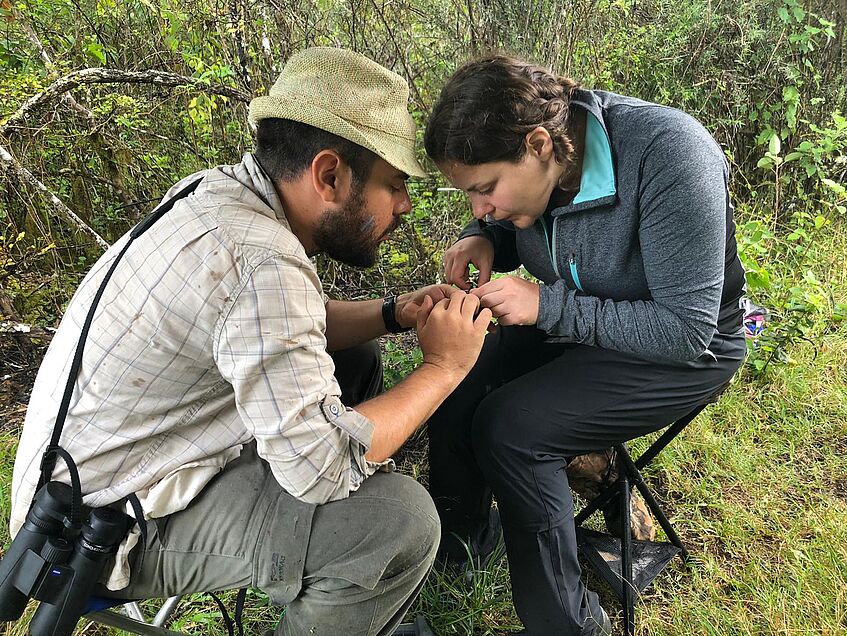
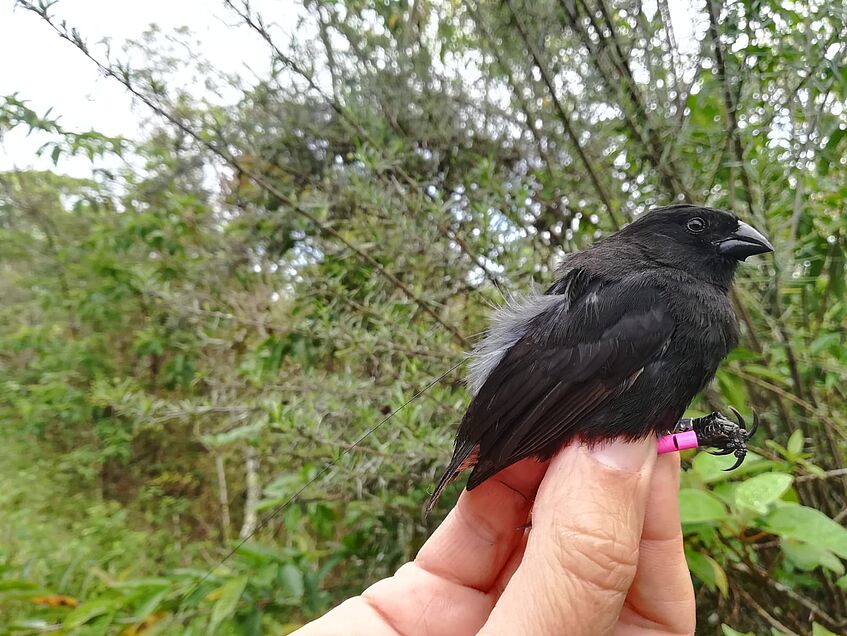
Austrian Citizen Science Conference 2020
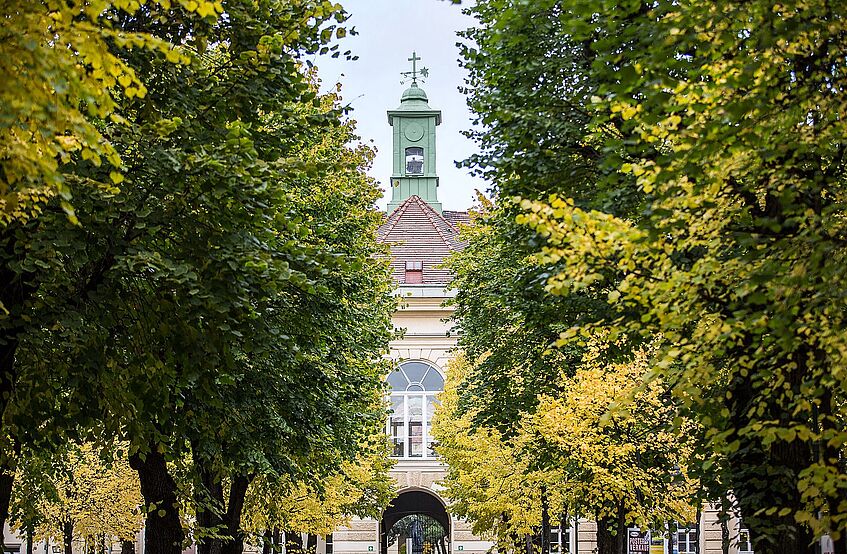
Picture: Georg Schroll
Austrian Citizen Science Conference 2020
University of Vienna and Citizen Science Network Austria will be hosting the 7th Austrian Citizen Science Conference. It will take place on the campus of the Uniersity of Vienna. The Konrad Lorenz Research Station is involved in the event organisation.
The 7th Austrian Citizen Science Conference will be organised according to the criteria of the "Österreichisches Umweltzeichen" for Green Events.
New paper published
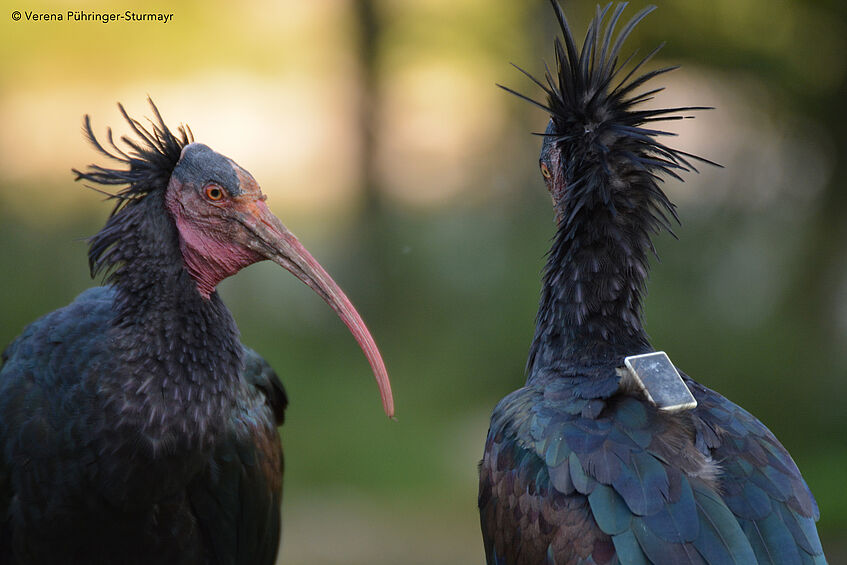
Picture: verena Pühringer-Sturmayr
New paper published
Verena Pühringer-Sturmayr and colleagues have published a paper on the effects of GPS-transmitters on the behaviour and physiology of northern bald ibises.
Publication in Animal Biotelemetry:
Puehringer-Sturmayr, V., Loretto, M.C., Hemetsberger, J. et al. Effects of bio-loggers on behaviour and corticosterone metabolites of Northern Bald Ibises (Geronticus eremita) in the field and in captivity. Anim Biotelemetry 8, 2 (2020) doi:10.1186/s40317-019-0191-5
The KLF in the animal documentary TV series "Anna und die wilden Tiere"
A film crew was shooting at the Konrad Lorenz Research Center last May. Now you can watch the episode "The greylag goose and its goslings" in the animal documentary TV series "Anna und die wilden Tiere".
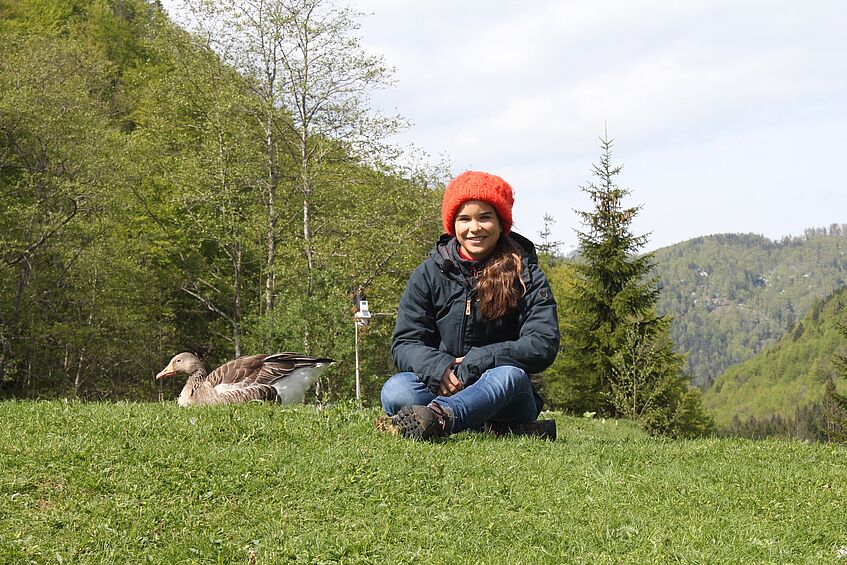
picture: Text und Bild
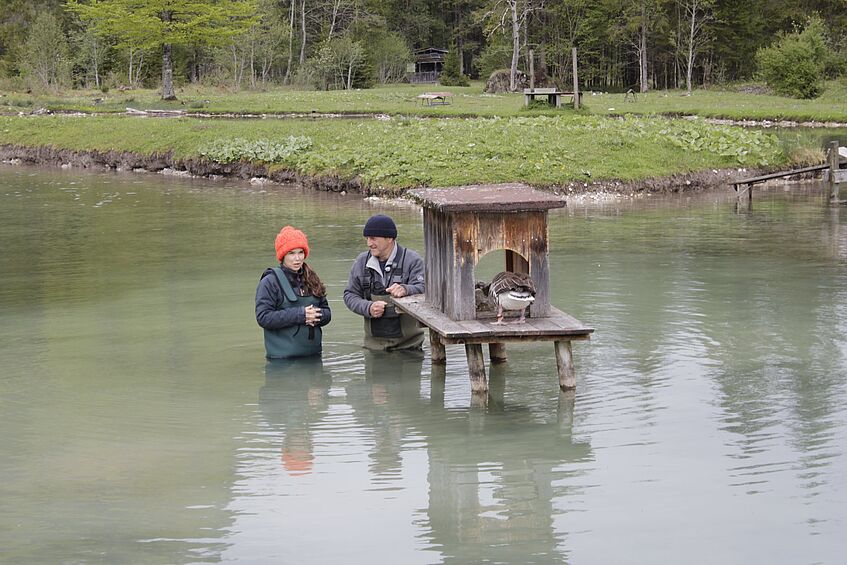
picture: Text und Bild
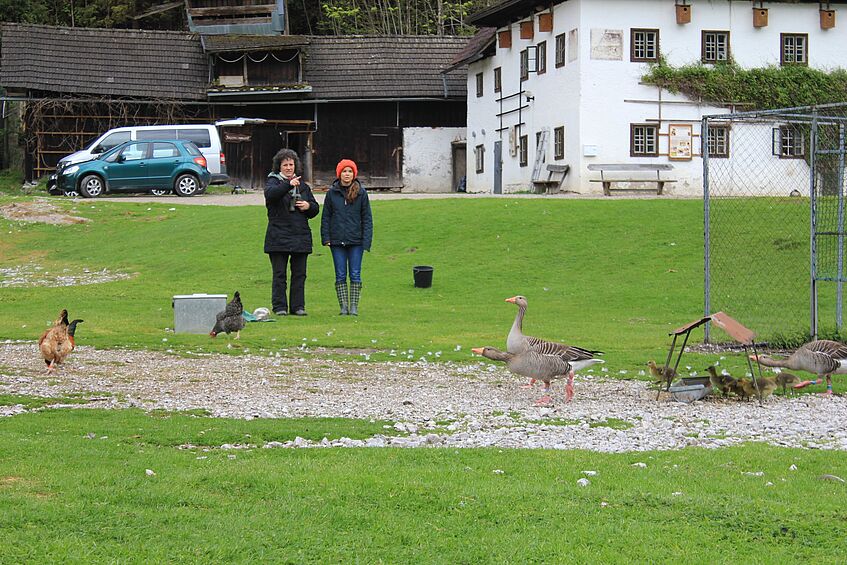
picture: Text und Bild
New paper published
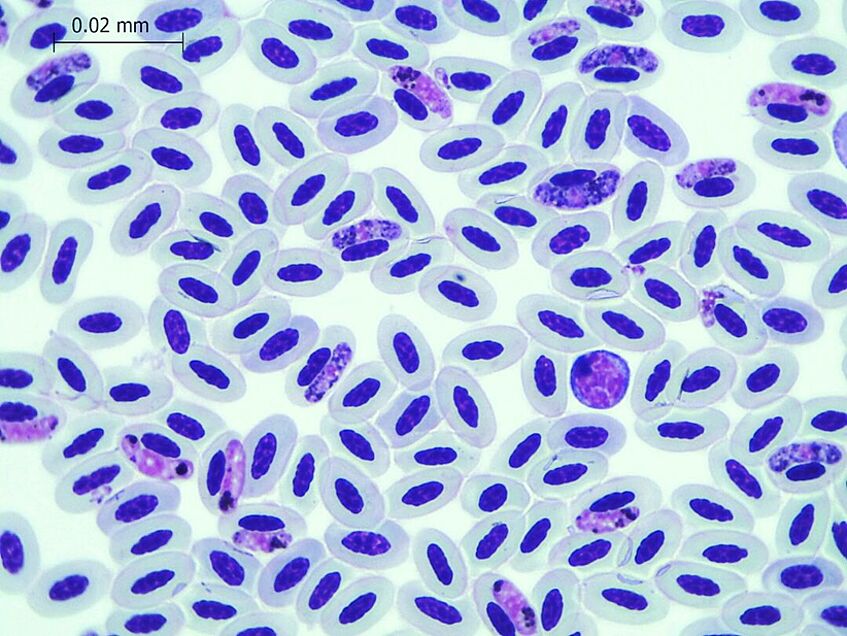
Haemoproteus parasites in doves in Cape Town
Credits: Samantha McCarren
New paper published
Petra Sumasgutner and colleagues have explored bird malaria parasites in the pigeon population in Cape Town and discovered high prevalence and infection intensities. High infection intensities were also related to a loss in body weight, but not to plumage melanism.
Publication in 'Parasitology Research':




















